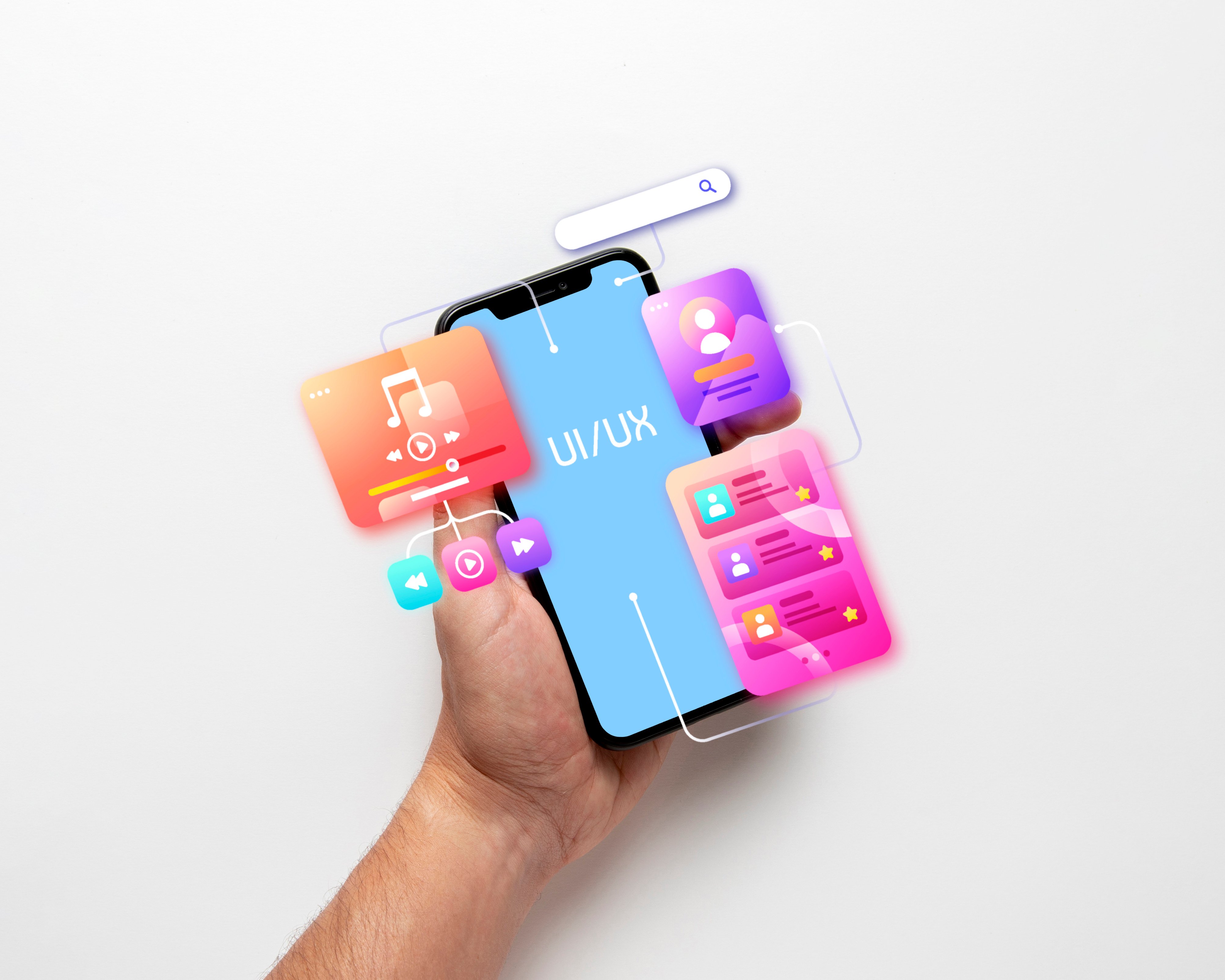OUR BLOGS
Don’t miss out on our blogs for a chance to stay updated on interesting topics.
Recent blog posts
Don’t miss out on our blogs for a chance to stay updated on interesting topics

November 24, 2024
Does Your Phone Listen to You for Ads? Or Is It Just a Coincidence?
Have you ever mentioned a product in conversation and then noticed ads for it soon after? It’s a curious and thought-provoking experience that has sparked discussions about whether our smartphones might play a role. A recent report has added new insights to this ongoing debate, suggesting there could be more to explore. 1. Active Listening in Advertising: Exploring the Possibilities In December 2023, 404 Media uncovered a marketing pitch from Cox Media Group (CMG) claiming to offer “Active Listening” services. This capability purportedly enables advertisers to target users based on conversations captured by device microphones. 2. The Scale of Data Harvesting CMG’s alleged program wasn’t isolated. The report suggested partnerships with major tech giants like Google, Amazon, and Facebook, although these companies have since distanced themselves. 3. The Potential Benefits of Targeted Advertising A CMG webpage once described their technology as a tool to target individuals “actively discussing their need for your services.” While the concept of active listening in advertising raises valid privacy concerns, it’s worth considering the potential benefits of such targeted approaches, particularly when implemented responsibly and transparently. Relevance and Personalization Targeted ads allow businesses to reach users with products or services that align with their immediate needs or interests. For example, if someone is discussing plans for a trip, seeing ads for travel deals or accommodations could save them time and effort. Personalized content enhances the user experience by reducing irrelevant distractions. Time-Saving Convenience By presenting users with solutions to problems they’re already considering, targeted ads can save them from lengthy searches. This efficiency is particularly valuable in today’s fast-paced world, where quick access to relevant information can make a significant difference. Small Business Growth Targeted advertising levels the playing field for small businesses, enabling them to compete with larger corporations. By connecting directly with the right audience, smaller enterprises can allocate their limited marketing budgets more effectively, ensuring their message reaches those most likely to engage. Reduced Advertising Waste Unlike traditional blanket advertising, which reaches broad audiences regardless of interest, targeted advertising focuses on those who are likely to benefit. This precision not only maximizes advertising budgets but also reduces the “noise” of irrelevant marketing for consumers. Improved Innovation and Development Insights gathered through targeted advertising can help businesses better understand consumer needs, leading to more innovative products and improved services. When data is used ethically, it serves as a feedback loop for continuous improvement. For targeted advertising to remain a beneficial tool rather than a contentious one, transparency and respect for privacy must be at the forefront. Companies are increasingly adopting measures such as opt-in permissions, anonymized data collection, and robust security protocols to strike a balance between personalization and privacy. By focusing on these positive aspects and promoting ethical practices, targeted advertising can be a powerful way to enhance user experiences, drive business success, and support innovation—without compromising trust. 4. The Other Side: How Companies Are Safeguarding Privacy While privacy concerns are understandable, it’s important to recognize that many tech companies have taken significant measures to safeguard user data and address public concerns: Transparency Policies - Apple’s App Tracking Transparency (ATT) feature empowers users to block apps from tracking their activity across websites and apps, giving them more control over their data. - Google’s Privacy Sandbox initiative aims to phase out third-party cookies, replacing them with less invasive technologies that protect user anonymity while supporting relevant advertising. User-Controlled Privacy Settings Both Android and iOS platforms now offer detailed privacy settings, allowing users to easily manage app permissions for microphones, cameras, and other sensitive data. Data Encryption End-to-end encryption in apps like Apple Messages and WhatsApp ensures that conversations remain private and inaccessible to advertisers or companies. Third-Party Audits Many companies now engage independent auditors to verify their data protection practices and reassure users that their privacy is respected. These efforts illustrate how the industry is evolving to balance the benefits of technology with the need to protect user privacy.
Read more...November 18, 2024
Avoiding Common Website Design Pitfalls: Enhancing User Experience and Engagement
In today's digital landscape, a well-designed website is crucial for establishing a strong online presence and engaging your target audience effectively. However, certain design pitfalls can hinder user experience and diminish the impact of your site. Drawing insights from HubSpot's article on common website design mistakes, let's explore these pitfalls and how to avoid them. 1. Overlooking Mobile Optimization With a significant portion of web traffic originating from mobile devices, neglecting mobile optimization can alienate a large segment of your audience. For instance, a retail website that isn't mobile-friendly may experience high bounce rates as users struggle with navigation and readability on smaller screens. Solution: Implement responsive design techniques to ensure your website adapts seamlessly across various devices and screen sizes. 2. Slow Loading Speeds Users expect websites to load quickly; delays can lead to frustration and increased abandonment rates. An e-commerce platform with sluggish load times may see a decline in sales as impatient customers turn to faster alternatives. Solution: Optimize images, leverage browser caching, and minimize HTTP requests to enhance loading speeds. 3. Cluttered Layouts A cluttered website can overwhelm visitors, making it difficult to find essential information. For example, a news portal with excessive ads and pop-ups may distract readers from the main content, leading to a poor user experience. Solution: Embrace simplicity by using ample white space, organizing content logically, and focusing on key messages to guide users effectively. 4. Inconsistent Branding Inconsistencies in branding elements like colors, fonts, and imagery can confuse users and weaken brand identity. A corporate website that uses varying color schemes across pages may appear unprofessional and disjointed. Solution: Develop and adhere to a comprehensive brand style guide to maintain uniformity throughout your website. 5. Poor Navigation Complicated or unclear navigation can frustrate users, causing them to leave your site prematurely. A restaurant's website without a clear menu or contact information may deter potential customers. Solution: Design intuitive navigation menus, include a search function, and ensure essential information is easily accessible. 6. Lack of Clear Calls-to-Action (CTAs) Without prominent CTAs, users may be uncertain about the next steps, leading to missed conversion opportunities. A software company's landing page without a visible "Sign Up" button may result in lower subscription rates. Solution: Place clear, compelling CTAs strategically throughout your site to guide users toward desired actions. 7. Ignoring Accessibility Failing to make your website accessible to all users, including those with disabilities, can limit your audience reach and may have legal implications. A travel blog without alt text for images or proper heading structures may be challenging for screen reader users. Solution: Incorporate accessibility best practices, such as using descriptive alt text, ensuring sufficient color contrast, and enabling keyboard navigation. 8. Neglecting SEO Best Practices A website that isn't optimized for search engines may struggle to attract organic traffic. A local business without proper meta descriptions or keyword optimization may not appear in relevant search results. Solution: Implement SEO strategies, including keyword research, optimizing meta tags, and creating high-quality content to improve search engine visibility. Conclusion: By recognizing and addressing these common design mistakes, we can enhance user experience, strengthen your brand presence, and achieve your website's objectives more effectively. Regularly reviewing and updating your site in line with best practices will ensure it remains a valuable asset in your digital strategy. For more detailed insights and topics about website design Development, check our blog post highlighting the 5 Key Strategies to Enhance User Experience. If you're looking for expert assistance in managing and enhancing your website experience, don't hesitate to contact us.
Read more...November 6, 2024
Winning Business Mobile App Strategies for 2024: Lessons from Famous Brands
In an increasingly mobile-first world, businesses rely on apps to connect with customers, enhance engagement, and drive conversions. With smartphone penetration climbing globally, an effective app strategy can unlock significant revenue and build lasting brand loyalty. Here, we explore successful app strategies from leading brands, highlighting key elements like user experience (UX), personalization, and data-driven optimization. 1. Prioritizing Seamless User Experience (UX) Focus on a user-centric design that eliminates friction. Simple layouts, quick access to main features, and personalization options contribute to an engaging experience, encouraging regular app usage. Headspace, a popular meditation app, exemplifies the power of an intuitive and enjoyable UX. The app’s design is simple and visually appealing, with clear navigation and quick access to core features like guided meditations and sleep sounds. Headspace emphasizes ease-of-use, reducing steps to help users reach content quickly. 2. Personalization for Deeper Engagement Use customer data to create personalized experiences. Recommendations based on preferences or past orders can turn a functional app into a valuable companion that fosters loyalty. Starbucks leverages personalization to enhance its mobile app experience. From tailored product recommendations to real-time offers based on user behavior, Starbucks taps into data to provide personalized suggestions and promotions. By understanding customer preferences, Starbucks encourages repeat visits and builds brand loyalty. The app’s reward-based offers, like a discounted favorite drink on birthdays, make the experience personal and rewarding for users, increasing customer retention. 3. Implementing Gamification for Engagement Integrate elements of gamification, such as challenges and rewards, to increase user retention. Making the experience fun and rewarding can enhance user commitment to the app. Nike Run Club has successfully implemented gamification to keep users engaged. By providing badges, challenges, and rewards for completing activities, Nike motivates users to stay active and return to the app. This strategy not only builds community but also encourages consistent app usage. Users can join global challenges or set personal goals, earning badges that celebrate their achievements. This feature has driven high user engagement and community building within the app. 4. Utilizing Data Analytics for Continuous Improvement Rely on data analytics to adapt and optimize the app experience. Regularly update your app based on user feedback and behavior patterns to remain relevant and user-friendly. Duolingo, a language-learning app, uses data analytics to understand user behavior and optimize its app. By analyzing user engagement patterns, Duolingo makes adjustments that enhance the learning experience, such as adjusting lesson difficulty based on user progress. This data-driven approach has helped the app maintain high engagement rates and user satisfaction. The app customizes lessons according to user performance, adapting difficulty levels to ensure users are challenged yet supported throughout their learning journey. 5. Expanding Functionality to Add Value Go beyond transactional features. Consider incorporating technology that adds real value to the user’s lifestyle, making your app indispensable in their daily lives. Sephora has evolved its mobile app into a complete shopping and beauty guide, offering features like augmented reality (AR) for virtual try-ons, personalized recommendations, and beauty tips. These features transform the app from a simple shopping platform to a comprehensive beauty experience, making it a valuable resource for customers. With AR technology, users can virtually try on makeup before purchasing. This functionality provides added value by helping users make informed buying decisions. 6. Simplifying Onboarding for Higher Retention Design an onboarding experience that’s quick, intuitive, and welcoming. The first impression counts, and a smooth start can lead to long-term user retention. Revolut, a digital banking app, has mastered the art of onboarding. With a streamlined sign-up process and easy account setup, Revolut quickly brings users into its ecosystem. This simplified onboarding has helped the app retain new users and drive the adoption of its financial products. By breaking down onboarding into small steps with progress indicators, Revolut ensures users aren’t overwhelmed and can complete setup in minutes. Conclusion: Building a Successful App Strategy Each of these examples showcases different elements of a successful app strategy. From personalization and gamification to advanced UX design and seamless onboarding, today’s top apps meet users’ needs at every step. By incorporating these practices, businesses can create apps that not only meet functional needs but also offer value, enjoyment, and long-term engagement. To learn more about building effective app strategies in the Gulf region, don't hesitate to contact us. For more insights on the latest mobile Apps check our previous blog post on Hybrid vs Native App Definition and read all about the Future of AI in Mobile Apps.
Read more...October 28, 2024
Top Smart AI Trends Businesses are Leveraging Today
AI isn’t just a futuristic idea anymore; it's an essential part of running a business today. Businesses are using it to improve their operations, connect better with customers, and grow faster. Let’s break down the key AI trends making a difference for startups and small businesses. 1. Automation for Efficiency AI-powered tools are automating repetitive tasks like customer support and financial management. These tools, like chatbots, help businesses save time and cut costs, letting teams focus on bigger projects that need human creativity. 2. Personalized Customer Experiences Customers expect personalized experiences. AI helps businesses analyze data to understand customer preferences and behaviors. This means they can create marketing strategies and product suggestions that feel more personal, which keeps customers coming back. 3. Smart Decision-Making with Predictive Analytics AI can analyze past data to predict future trends, sales, and customer needs. Businesses use these insights to plan better, manage their inventory, and stay ahead of their competitors. It’s all about making smarter, data-driven decisions that reduce risks. Uber for instance analyzes data patterns to predict ride demand and optimize driver availability, offering a seamless customer experience. 4. Innovative Product Development Businesses are using AI in product development to create smarter solutions. For example, some tech startups are integrating AI into their software, making it learn and improve based on user behavior. Take Grammarly, which uses AI to provide real-time writing suggestions and improve user experience. This approach helps businesses stay innovative and adaptable. 5. Voice and Visual Search Optimization With more people using voice commands and visual search features on devices like Amazon Alexa and Google Lens, businesses are optimizing their websites for these new search methods. It’s essential for businesses to make sure their products and services are easy to find using these technologies. IKEA has optimized its mobile app to allow users to search for products using their camera, while Starbucks uses voice search to allow customers to place orders via their mobile devices. These features enhance convenience and engagement, setting a new standard for digital customer interaction. 6. AI-Driven Cybersecurity As businesses grow online, protecting data becomes critical. AI-powered security systems detect and respond to threats in real-time, keeping customer information safe and building trust. Darktrace, for example, uses AI to detect anomalies and stop cyber threats in real-time, helping businesses secure their networks. This proactive approach is essential for businesses looking to protect their digital operations and customer data from evolving threats. 7. Green Tech and Sustainability AI helps businesses embrace sustainable practices. Google uses AI to reduce its data centers' energy consumption by optimizing cooling systems, which has cut power usage by 30%. Similarly, Tesla uses AI in its electric vehicles and energy solutions to optimize power use, contributing to a more sustainable future. 8. Enhanced Customer Support AI-powered customer service, like Zendesk’s AI chatbot, handles customer inquiries instantly, providing quick resolutions without human intervention. This allows startups to offer 24/7 support, enhancing customer satisfaction while keeping operational costs low. Conclusion AI is becoming an essential tool for businesses. From automating tasks and enhancing customer service to developing smart products and improving cybersecurity, AI offers countless opportunities for startups to grow and stay competitive. By staying up-to-date with these trends, businesses can make the most of AI and thrive in today’s digital world. For more insights on how to harness the power of AI for your business, check our latest blog post on It’s Not AI You’re Competing With, But Brands Using AI Better and Voice and Visual Search Optimization: If you're looking for expert assistance in managing your business using the latest AI solution in the Gulf region, don't hesitate to contact us.
Read more...
October 15, 2024
Why Do We Love Short-Form Video? A Dive into the Psychology of Quick Content
Have you ever wondered why we can't seem to get enough of short-form videos? Whether it's a quick reel on Instagram, a TikTok challenge, or a YouTube short, these bite-sized videos seem to hold our attention like nothing else. But why is that? 1. The Power of Instant Gratification One key psychological reason behind the success of short-form videos is the instant gratification they provide. According to HubSpot, people are naturally drawn to content that is quick and easy to consume. In today’s fast-paced digital world, users want to get information or entertainment instantly, without having to commit to long-form content. For example, TikTok's format thrives on brevity, where viewers can absorb a storyline, punchline, or tutorial in a matter of seconds. This taps into our brain’s reward system by delivering small doses of dopamine when we quickly get the satisfaction of consuming a new piece of content. 2. Cognitive Load and Attention Span Another reason short-form videos are so captivating is due to the low cognitive load they require. We’re not expected to absorb a large amount of information in one sitting. Studies suggest that our attention spans are getting shorter, which makes short-form videos more appealing because they require minimal mental effort. A prime example is YouTube Shorts, which compresses valuable information or entertainment into less than 60 seconds. Viewers can jump from one video to the next without feeling overwhelmed, allowing for a constant stream of easily digestible content. 3. FOMO: The Fear of Missing Out Short-form video platforms are designed to tap into FOMO (Fear of Missing Out). The endless scroll and algorithm-driven feeds create a sense of urgency to keep watching so you don’t miss the next trending video. For instance, Instagram’s reels or Facebook stories show videos from friends and influencers, encouraging users to stay engaged to see what’s happening in their social circles in real time. 4. The Role of Dopamine and Quick Wins The fast nature of short videos means the brain’s reward system is activated more frequently. Short-form content gives us quick wins—completing one video and moving to the next offers a dopamine hit. It’s why watching multiple 10-second TikToks feels more satisfying than watching a single, long-form documentary. This constant stimulation encourages users to stay on the platform longer. 5. Real-world examples of Short-Form Video Success Take, for instance, Chipotle’s viral TikTok campaign, where they introduced new menu items via 15-second videos. The campaign not only captured attention but also drove engagement and sales as users quickly shared the content. Another example is GoPro, which uses short-form content to showcase extreme sports, taking advantage of the fact that users love watching thrilling moments in under 30 seconds. 6. Why It Works for Brands Brands use short-form video not just for entertainment, but to drive awareness, engagement, and conversions. According to Digital Rhetoric, short-form videos can increase brand recall by up to 80%, making them a perfect tool for marketing campaigns . The bite-sized nature makes it easier for users to process a brand message, even if they are exposed to it for just a few seconds. Conclusion: The Future of Quick Content In the fast-evolving digital landscape, short-form video isn’t going anywhere. The psychology behind our love for quick, easily digestible content lies in the instant gratification, lower cognitive effort, and dopamine rushes that come with short videos. Brands and marketers who understand this psychology can effectively harness it to engage their audience, build stronger connections, and drive real results. If your brand hasn’t already embraced short-form video, now might be the time to get started. For more insights on content marketing, check out our blog post on Creating Successful Personalized Video Content.
Read more...
October 9, 2024
The Power of Storytelling: Driving Change and Engaging Audiences
Storytelling is more than just a way to entertain, it's a powerful tool for driving change and influencing behavior. Whether you're a brand trying to connect with your audience, a leader aiming to inspire action, or a marketer seeking to elevate your product, storytelling can serve as the bridge that connects information with emotion. 1. Why Storytelling Matters? At its core, storytelling resonates because it speaks to human emotions. It’s ingrained in our culture, dating back to the earliest forms of communication. According to the Product Marketing Alliance, storytelling helps audiences remember information better, engage more deeply and respond emotionally. In a world where people are bombarded with content, storytelling cuts through the noise by connecting facts with emotions, making the message stick. Harvard Business Review’s article on Storytelling that Drives Bold Change emphasizes the importance of compelling stories for initiating change within organizations. When leaders frame their vision as a story, employees and stakeholders are more likely to support it because they can visualize the future and their role in it . 2. How to Tell a Great Story Good storytelling is not just about what you say, it's about how you say it. HubSpot outlines key elements for successful storytelling, such as knowing your audience, setting the scene, and building tension before resolving. Meanwhile, BetterUp suggests honing three key skills: understanding the needs of your listeners, using empathy to shape the narrative, and practicing until the delivery feels natural . One real-life example of this is Nike, a brand known for its emotive storytelling. Their "Just Do It" campaign doesn't just sell shoes; it tells the story of overcoming obstacles, pushing limits, and triumphing against adversity. This story resonates because it taps into the universal human desire for achievement, making it not just about the product but about personal transformation. 3. Storytelling to Drive Change Storytelling is particularly impactful when used to drive meaningful change. Harvard Business Review highlights how leaders at organizations like Patagonia use storytelling to align their workforce around sustainability goals. By framing their mission in stories about protecting the environment, they inspire both employees and customers to contribute to the cause. A powerful story that drove change comes from Airbnb. At a time when short-term rentals were controversial in many cities, Airbnb used storytelling to highlight how their hosts were regular people making ends meet, humanizing the brand, and changing public perception. This strategic storytelling played a critical role in their ability to work with local governments to legalize and regulate short-term rentals. 4. Real-World Examples Apple frequently employs storytelling, not by focusing on technical features, but by framing its products as tools that unlock human potential. Their campaigns often show users creating art, solving problems, or overcoming personal challenges, positioning their products as enablers of creativity and innovation. Dove’s Real Beauty campaign tells the story of self-acceptance, challenging conventional beauty standards. By sharing authentic stories of real women, Dove turned their products into symbols of empowerment and authenticity, driving both sales and brand loyalty. Conclusion Storytelling is a strategy. Whether you’re aiming to sell, inspire, or drive social change, incorporating storytelling into your approach can be the difference between a message that resonates and one that gets lost. By tapping into emotion, human experiences, and narratives that align with your audience’s values, brands and leaders can foster deeper connections and inspire bold action. Start experimenting with Storytelling today, and you might just discover a new way to connect with your audience. If you're looking for expert assistance in your marketing campaigns in the Gulf region, don't hesitate to contact us.
Read more...
October 1, 2024
The Power of Personalization in Building Customer Loyalty in the GCC
In the GCC region, where cultural nuances, traditions, and preferences play a significant role in shaping consumer behavior, personalization is a powerful tool for brands looking to build long-term customer loyalty. Personalization goes beyond addressing customers by their names, it involves tailoring experiences, offers, and communications to resonate with individuals on a personal level, ultimately creating a deeper connection between the brand and its audience. 1. Why Personalization is Critical in the GCC Market The GCC’s unique social and cultural fabric, with a strong emphasis on family values, religious practices, and community, means that consumers here expect brands to acknowledge and cater to these values. With a diverse mix of nationalities and preferences across Saudi Arabia, the UAE, Qatar, and other GCC nations, brands that focus on personalization are better positioned to build loyalty among their customers. According to a Fast Company Middle East report, companies like GMG in the UAE have successfully used hyper-personalization to cater to specific consumer needs. By leveraging data analytics and AI-driven insights, they have been able to offer tailored shopping experiences that resonate with their customers’ values, preferences, and behaviors. The result? Stronger relationships, higher customer retention, and ultimately, greater loyalty to the brand. 2. How GCC Brands Are Using Personalization to Build Loyalty Tailored Experiences in E-commerce: In the highly competitive e-commerce space, personalization is key to standing out. Brands like Namshi and Ounass are employing data-driven personalization techniques to suggest products based on past purchases and browsing habits. In doing so, they create a seamless shopping experience that is both convenient and personalized, encouraging repeat purchases and long-term loyalty. Localized Content and Offers: The cultural diversity of the GCC requires brands to personalize content based on local preferences. For instance, during Ramadan, many businesses in the region adjust their marketing messages and promotions to reflect the values of charity, family, and fasting. Hyper-Personalization Through Technology: AI-powered personalization tools are becoming increasingly popular in the GCC. Companies like Heinz use customer data to offer targeted promotions during events like Saudi National Day, where they launched a brandless ketchup bottle, inviting Saudi customers to share their voices on the iconic label. This innovative approach highlights how personalization can go beyond traditional marketing strategies to create meaningful customer engagement. 3. Strategies for Personalizing Marketing in the GCC Utilize Local Data and Insights: Successful personalization starts with data. By collecting and analyzing customer behavior and preferences, brands can create tailored experiences that meet individual needs. In the GCC, using the Arabic language in communications and offering region-specific discounts or promotions based on local holidays can go a long way in connecting with consumers. Segment Audiences Based on Cultural Preferences: With a diverse population, personalization in the GCC should cater to different cultural groups. For example, Luxury retailers often segment their marketing to cater to the preferences of high-net-worth locals and expatriates differently. Brands that understand and respect these distinctions will see better engagement. Leverage AI and Machine Learning for Personalization: Tools like Comarch's Loyalty Marketing platform enable brands to use AI to offer personalized customer journeys, helping businesses in the GCC enhance customer retention. AI-driven personalization allows companies to send tailored recommendations, notifications and offers in real time, increasing the chances of customer engagement. Develop Omnichannel Personalization: Ensure that personalized experiences are delivered consistently across all customer touchpoints, from social media and email to physical stores. Landmark Group in the UAE, for example, uses its Shukran loyalty program across its diverse brands, offering seamless personalized experiences whether customers are shopping online or in-store. 4. Examples of Successful Personalization in the GCC One of the most prominent examples of personalization in the GCC is Al-Futtaim Group’s loyalty program, which offers customized rewards and incentives based on customer preferences. By gathering data on purchase history and engagement, Al-Futtaim personalizes offers, ensuring that their customers feel valued and connected to the brand. This approach has resulted in increased customer retention and enhanced brand loyalty across multiple sectors, including retail and automotive. Majid Al Futtaim’s SHARE loyalty program is another example, where customers can accumulate points across its various retail, entertainment, and leisure brands. The program uses AI to deliver personalized offers based on user behavior, driving engagement and making customers feel understood. Conclusion In a region like the GCC, where brand loyalty is influenced by cultural values, personal connections, and tailored experiences, personalization has become an essential strategy for businesses. Brands that invest in data-driven personalization, leverage AI technologies, and localize their content for the GCC audience will be better positioned to build long-term loyalty and stand out in this competitive market. As customer expectations continue to rise, personalization is not just a competitive advantage, it's a necessity for any brand aiming to succeed in the GCC. For more insights on personalized marketing, explore our latest blog post on: How Cultural Differences Impact Marketing in the Gulf
Read more...
September 26, 2024
How to Effectively Market Your Podcast: A Comprehensive Guide
With the rise of podcasting as a popular medium globally, and the Middle East, standing out in a sea of content can be a challenge. While creating valuable and engaging content is essential, promoting your podcast is equally critical to ensure it reaches your target audience. Here’s how you can effectively market your podcast in the Middle East, tailored to the preferences and behaviors of the region’s audience. The key takeaway? Success in today’s digital landscape depends not on whether you use AI, but on how you use it. 1. Optimize Your Podcast for SEO One of the most effecto promote your podcast is to make it discoverable through Search Engine Optimization (SEO). To do this: Create Descriptive Titles: Ensure that your episode titles include relevant keywords that potential listeners might search for. Show Notes and Transcripts: Detailed show notes and transcripts not only improve accessibility but also enhance your podcast's SEO by including searchable content related to each episode. Podcast Website: Having a dedicated website for your podcast provides an opportunity to host all your episodes and written content, improving your visibility on search engines. Arabic Keywords: Ensure your episode titles and descriptions include relevant Arabic keywords to appeal to local search queries. Localized SEO: Use region-specific keywords such as "GCC" or "Saudi podcasts" to target audiences looking for podcasts tailored to the Middle East. Leveraging SEO strategies will make your podcast more discoverable, allowing it to rank higher in search results. 2. Leverage Social Media Social media platforms are powerful tools to amplify your podcast. In the Middle East, platforms like Instagram, Twitter, Snapchat and Youtube are widely used, making them excellent platforms for promotion. Here's how to effectively use social media: Create Clips and Teasers: Short audio or video snippets from your podcast episodes can be shared on platforms like Instagram, Twitter, TikTok, Youtube and Facebook. These bite-sized pieces of content can intrigue potential listeners and direct them to your full episodes. Consistent Branding: Ensure your podcast’s branding is consistent across all social media platforms, from cover art to your tone of voice. This helps build recognition and loyalty among your audience. Engage with Your Audience: Actively engage with your listeners by responding to comments, sharing behind-the-scenes content, and running polls or Q&A sessions to encourage interaction. Social media not only helps promote new episodes but also builds a loyal community of listeners. 3. Collaborate with Regional Podcasters and Influencers Collaborations with other podcasters and influencers in the GCC can help you tap into established audiences and build credibility. Here’s how to maximize collaborations: Guest Appearances: Make guest appearances on other podcasts within your niche to introduce yourself to new listeners. Cross-Promotion: Partner with other podcasters to promote each other’s shows. This can be through shoutouts, episode swaps, or sharing trailers. Building these regional partnerships can help localize your content and introduce your podcast to a broader audience within the GCC. 4. Build an Email List Email marketing remains a strong tool to engage your listeners directly. In the Middle East, email communication is still an essential channel for brands and personal communication. To optimize your email marketing efforts: Send Episode Updates: Notify your subscribers whenever a new episode is released. Include a brief description or highlight key topics to spark interest. Multilingual Newsletters: Send email newsletters in both Arabic and English to cater to your diverse audience. Highlight key takeaways from each episode and provide exclusive content for subscribers. Exclusive Content: Offer exclusive behind-the-scenes content, early access to episodes, or bonus materials to your email subscribers. Engage with Feedback: Ask for feedback, run polls, or invite your subscribers to contribute to future episodes, fostering a deeper connection with your audience. Building an email list allows you to maintain regular contact with your most engaged listeners, helping you build a loyal fan base. 5. Utilize Video Podcasting Podcasts aren’t limited to just audio anymore. Many podcasters are turning to video to expand their reach and engage with audiences on platforms like YouTube and Facebook. Here’s how you can adapt this strategy for the Middle East: Video Podcasts: Platforms like YouTube have a large user base in the GCC, especially in Saudi Arabia and the UAE. Consider recording video versions of your podcast and uploading them to YouTube to increase visibility. Audiograms: These short, animated clips with audio from your podcast are perfect for platforms like Instagram and Twitter, allowing you to share key moments from your podcast in a visually engaging format. Platforms like Riverside.fm and Restream.io make it easy to record and share video content, opening up new possibilities for audience engagement. 6. Localize Your Podcast Directories for GCC Listeners Ensure your podcast is available on the platforms most popular in the GCC. While global platforms like Spotify, Apple Podcasts, and Google Podcasts are commonly used, also consider local and niche platforms: Anghami: As one of the leading audio streaming platforms in the Arab world, Anghami is crucial for promoting your podcast to a regional audience. Deezer: This music streaming platform is growing in popularity in the Middle East and provides another avenue to distribute your podcast. YouTube: Many listeners in the Middle East still prefer YouTube for long-form content, making it an essential platform for video podcasts. Being available on multiple platforms, including regional favorites, ensures your podcast reaches as many listeners as possible. 7. Final Thoughts Remember, podcasting in the Middle East is growing, and now is the time to capitalize on the rising trend. By applying these strategies, your podcast has the potential to grow its listener base and become a well-recognized brand within your niche. For more insights on podcast marketing, explore our latest blogposts on: How Has MENA Become a Hotspot for Podcast Listeners? And How to Start a Podcast in 2024
Read more...
September 22, 2024
It’s Not AI You’re Competing With, But Brands Using AI Better
As artificial intelligence (AI) continues to revolutionize industries, many companies in the GCC are coming to the realization that it’s not AI itself that poses the biggest challenge, it’s how competitors are leveraging AI more effectively. Brands that can integrate AI-driven solutions into their strategies are setting themselves apart by increasing efficiency, personalizing customer experiences, and driving innovation. The key takeaway? Success in today’s digital landscape depends not on whether you use AI, but on how you use it. 1. AI’s Transformative Impact on Business AI has evolved far beyond being a mere buzzword, it’s now a powerful tool that enables brands to optimize their operations, automate repetitive tasks, and analyze vast amounts of data in real-time. From chatbots that enhance customer service to advanced algorithms that deliver personalized content recommendations, AI has become indispensable for forward-thinking companies. What makes certain brands more successful isn’t their access to AI, but how they’re harnessing its potential to streamline processes and improve outcomes. For example, companies like Netflix and Amazon have successfully integrated AI into their recommendation systems, offering highly personalized suggestions based on user data and behavior. This use of AI doesn’t just improve customer satisfaction. it keeps users engaged and coming back for more. Brands that fail to adopt such strategies risk falling behind, not because they lack the technology, but because they’re not using it to its fullest potential. 2. Personalization at Scale: The AI Advantage One of the most significant benefits AI brings to the table is personalization at scale. In an age where consumers expect tailored experiences, brands using AI to deliver hyper-relevant content, ads, and recommendations are gaining a competitive edge. AI allows businesses to understand customer preferences, predict future behaviors, and adapt marketing strategies accordingly. This shift toward personalization not only boosts customer loyalty but also increases conversion rates. Consider Spotify, which uses AI to create personalized playlists like "Discover Weekly" based on users' listening habits. By continuously learning from data, Spotify delivers fresh, customized experiences that keep users engaged. In this scenario, it’s not AI that’s pushing competitors out of the market, but Spotify’s strategic use of AI to stay relevant and cater to individual tastes. 3. AI-Powered Efficiency: Driving Growth AI isn’t just about the customer-facing side of the business, it’s also revolutionizing backend operations. AI-powered tools can optimize everything from supply chain management to predictive maintenance, helping brands operate more efficiently and save costs. Walmart, for instance, uses AI to manage inventory, ensuring that the right products are in stock at the right time. This ability to make data-driven decisions in real-time gives brands an operational advantage over competitors still relying on manual processes. The lesson here? AI allows brands to not only meet customer demands but to also scale operations more efficiently. Those who integrate AI solutions across their business processes are set to outpace competitors, particularly in industries where speed and accuracy are critical. 4. How to Use AI Effectively Adopting AI requires more than just implementing the latest tools—it requires a shift in mindset. Brands need to embrace AI as part of their strategic vision, ensuring it’s embedded in both customer-facing and internal operations. Here’s how businesses can start: Data is Key: AI thrives on data. Brands must ensure they’re collecting high-quality, actionable data to fuel their AI systems. Personalization: Use AI to better understand customer behaviors and tailor experiences to meet their needs. Operational Efficiency: Look for AI tools that can optimize back-office functions like supply chain management, HR, and finance. Continuous Learning: AI technology is rapidly evolving, and brands must stay up to date with the latest advancements to maintain a competitive edge. Conclusion It’s not the technology itself but how well brands use AI that will determine their success. Businesses that fail to leverage AI effectively risk being outpaced by those that use it to improve customer experiences, personalize interactions, and optimize their operations. The key takeaway is that in today’s landscape, you’re not competing with AI—you’re competing with brands that know how to use AI better. For more insights on how to harness the power of AI for your business, check our latest blog post on AI Insights & Data-Driven Decision Making for Multi-Location Brands If you're looking for expert assistance in managing your business using the latest AI solution in the Gulf region, don't hesitate to contact us.
Read more...
September 10, 2024
How Cultural Differences Impact Marketing in the Gulf
Have you ever wondered why some marketing strategies thrive in one region but fail in another, despite targeting similar demographics? The answer often lies in cultural differences. In the Gulf Cooperation Council (GCC), understanding these nuances can make or break a campaign. The diverse cultures of Saudi Arabia, UAE, Qatar, Kuwait, Bahrain, and Oman require marketing strategies tailored to their unique social norms, values, and preferences. 1. Understanding the Role of Cultural Differences in the GCC The Gulf region is rich in tradition, values, and religious practices, all of which significantly shape consumer behavior. Brands entering this market must understand that what works in the West may not resonate with Gulf audiences. Here’s why: Religious Influences Religion is a central aspect of daily life in the GCC. As a result, marketing campaigns need to respect and align with its values. For example, Ramadan is not only a religious observance but also a significant period for marketing. Brands that show respect for fasting traditions and the giving nature of this holy month are more likely to win consumer trust. Family-Oriented Values In the GCC, family is at the heart of society. Advertising that emphasizes familial connections or portrays the brand as family-friendly is often well-received. This contrasts with some Western markets, where individualism plays a larger role. For instance, successful campaigns in Saudi Arabia often highlight how a product or service benefits the whole family, not just the individual. Communication Styles and Language The Arabic language itself plays a crucial role in marketing. While many Gulf residents speak English, marketing materials are more impactful when crafted in Arabic, reflecting both the language and local dialects. In fact, a report from ResearchGate emphasizes that using culturally specific language can lead to a 50% improvement in ad recall and engagement. Storytelling and Visual Content "Picture this: a vibrant market where every video tells a story." In Gulf culture, storytelling is more than a method of communication, it’s an art form. Successful marketing campaigns in the GCC often use storytelling techniques that resonate emotionally with the audience. Consumer Expectations: Personalization vs. Generalization Unlike more generalized marketing approaches in other parts of the world, Gulf consumers expect personalization. This means brands need to focus on building trust, developing long-term relationships, and catering to specific cultural needs. For instance, fastercapital emphasizes the value of customer relationships in Gulf culture, where word-of-mouth is often a more trusted source than traditional advertising. 2. Local vs. Global Brands In the Gulf, local brands often have an edge over global counterparts due to their deep understanding of the culture. However, global brands that localize their marketing campaigns have also found success. For example, Unilever’s Dove campaign in the Middle East adapted its global message of "Real Beauty" by focusing on modesty and inner beauty, resonating with Gulf women who value authenticity. 3. Real Examples of Cultural Marketing Success in the GCC Coca-Cola's Ramadan Campaign: Coca-Cola launched a culturally tailored campaign during Ramadan that resonated deeply with the values of giving and togetherness. Their campaign included "Labeless Cans", where Coca-Cola removed its logo and promoted messages of tolerance and anti-prejudice, connecting with the essence of Ramadan. This campaign was part of their broader effort to build community engagement during the holy month, gaining significant visibility and engagement across the GCC. Etihad Airways: Etihad Airways has consistently leveraged culturally nuanced campaigns, particularly emphasizing the importance of family and tradition. Their campaigns resonate with Gulf audiences by portraying the airline as a symbol of togetherness, which aligns with the region's deeply rooted family values. 4. Conclusion In conclusion, cultural differences in the Gulf have a profound impact on marketing success. By respecting local traditions, using appropriate language, and crafting culturally sensitive messages, brands can create meaningful connections with GCC audiences. Understanding these nuances not only ensures market entry success but also builds long-lasting brand loyalty in the region. If you're looking for expert assistance in managing your marketing campaigns in the Gulf region, don't hesitate to contact us. For more detailed insights on the Mena market, check out our latest blog posts on how to tailor your content for MENA Countries.
Read more...
September 4, 2024
The Ultimate Guide to TikTok for B2B Marketing
Have you ever wondered why video marketing is booming in the Middle East, especially in countries like KSA and Qatar, even in B2B? As the digital landscape in these regions rapidly evolves, platforms like TikTok are no longer just for fun and dance challenges, they're becoming powerful tools for B2B marketers. But how can your business leverage TikTok to boost brand visibility, engage with decision-makers, and drive conversions? This guide will walk you through everything you need to know. 1. Why TikTok for B2B Marketing? TikTok has over 1 billion active users, and while it’s often associated with consumer brands, B2B companies are starting to recognize its potential. TikTok’s algorithm favors authentic, engaging content, allowing brands to reach a vast and highly targeted audience without the need for massive ad budgets. According to recent insights from Influencer Marketing Hub and Zen Media, TikTok is rapidly becoming a powerful platform for B2B marketers. With 60% of its user base comprised of professionals over 25, the platform offers a unique opportunity to engage with decision-makers. Moreover, brands leveraging TikTok enjoy a remarkable 29% higher engagement rate compared to other social platforms, making it an essential tool for reaching and influencing key business audiences. According to Exploding Topics, in KSA around 90% of the adult population uses the platform. The majority of TikTok users in KSA are young, with a large portion under the age of 30, making it a vibrant platform for engaging with a younger, professional audience. Marketing software company HubSpot has successfully used TikTok to share quick marketing tips, behind-the-scenes looks at their company culture, and product updates, all while engaging with a broader audience. 2. Setting Up Your B2B TikTok Strategy Define Your Goals: What do you want to achieve with TikTok? Whether it’s brand awareness, lead generation, or customer engagement, setting clear goals will guide your content strategy. Understand Your Audience: Research the type of content that resonates with your target audience on TikTok. Are they looking for industry insights, product demos, or thought leadership content? Create Authentic Content: TikTok thrives on authenticity. Instead of overly polished ads, focus on creating relatable, behind-the-scenes videos, industry tips, or even humorous takes on common industry challenges. Adobe uses TikTok to share creative tutorials and showcase how professionals use their products in real-life scenarios, making their content highly relatable and useful. Utilize Hashtags and Trends: Stay on top of TikTok trends and use relevant hashtags to increase your content’s visibility. However, ensure that the trends align with your brand’s messaging and don’t compromise professionalism. Collaborate with Influencers: Consider partnering with industry influencers who have established credibility in your niche. They can help amplify your message and reach a broader audience. Salesforce partnered with micro-influencers to create content that highlighted how businesses can leverage CRM tools effectively, reaching a new audience on TikTok. 3. Best Practices for B2B TikTok Success Engage with Your Audience: Reply to comments, ask questions, and encourage user-generated content. Engagement is key to building a community around your brand on TikTok. Test and Optimize: TikTok’s algorithm rewards frequent posting, so experiment with different types of content and posting times. Use TikTok’s analytics tools to track performance and adjust your strategy accordingly. Integrate TikTok with Your Other Marketing Efforts: Ensure your TikTok content aligns with your broader marketing strategy. For example, you can repurpose blog content into short videos or direct TikTok followers to download an e-book on your website. 4. The Future of B2B Marketing on TikTok TikTok is rapidly evolving as a platform that B2B companies can no longer ignore. By embracing its unique format and creating authentic, engaging content, you can reach decision-makers and drive meaningful business results. Start experimenting with TikTok today, and you might just discover a new way to connect with your audience. For more insights on integrating TikTok into your marketing plan, check out our blog post on Navigating the TikTok landscape
Read more...
August 29, 2024
Voice and Visual Search Optimization: The Future of SEO
Have you ever wondered why your competitors in the GCC are rapidly optimizing for voice and visual search? In a region where digital transformation is a key focus, businesses in Qatar and KSA are constantly striving to stay ahead of the curve. In today’s digital age, traditional text-based searches are no longer the only way consumers seek information. The rise of voice and visual search technologies is reshaping how users interact with the digital world, and it’s time for your business to adapt. 1. Understanding Voice Search Optimization Voice search optimization refers to the process of enhancing your website’s content to rank better in voice search results. With the growing popularity of voice-activated devices like Amazon’s Alexa, Google Assistant, and Apple’s Siri, more people are using their voices to search for information online. Why is Voice Search Important? Increased Usage: According to Search Engine Land, the use of voice search is on the rise, especially among mobile users, and Google did report in previous years stating that 27% of the global online population uses voice search on mobile, though this figure might vary depending on the latest data. As voice recognition technology improves, more people are finding it convenient to ask their devices questions instead of typing them out. Long-Tail Keywords: Voice searches tend to be longer and more conversational. Optimizing for long-tail keywords and natural language queries is crucial to capturing this growing market. Local Search Impact: A significant portion of voice searches are local queries, like “Where is the nearest coffee shop?” For example, Google found that 58% of consumers have used voice search to find local business information. Optimizing for local SEO can significantly boost your visibility in these searches. Google My Business, for instance, is one of the most effective tools for enhancing your local SEO, and similar to GMB, Bing allows you to manage your listing, ensuring your business appears in local searches. Key Strategies for Voice Search Optimization Focus on Natural Language: Tailor your content to match how people speak. This involves using more conversational phrases and questions. For example, instead of optimizing for “best running shoes,” consider a phrase like “What are the best running shoes for marathon training?” Enhance Local SEO: Ensure your business is listed in local directories and optimize your content for local keywords. This increases your chances of appearing in voice search results for nearby users. Optimize for Featured Snippets: Voice assistants often read out the content from featured snippets. Structure your content to answer common questions directly and concisely, increasing the likelihood of being featured. 2. Visual Search Optimization: A New Frontier Visual search allows users to search the web using images instead of text. This technology is becoming increasingly popular with platforms like Pinterest, Google Lens, and Bing Visual Search leading the way. Why is Visual Search Important? Enhanced User Experience: Visual search offers a more intuitive way to find products and information. According to Medium, users can simply snap a picture and find related products or details instantly. Competitive Advantage: Brands that optimize for visual search can stand out by providing a seamless shopping experience, especially in the fashion, home decor, and lifestyle sectors. Key Strategies for Visual Search Optimization High-Quality Images: Ensure your website features high-resolution images with descriptive, keyword-rich alt text. This not only helps with visual search but also improves overall SEO. Structured Data: Implement schema markup on your images. This helps search engines understand and index your visual content more effectively, increasing its visibility in search results. Leverage Image Search Engines: Utilize platforms like Pinterest and Google Images to your advantage. Optimize your content to rank higher in these visual search engines, which are becoming increasingly important in the e-commerce space. 3. Integrating Voice and Visual Search with AI Artificial Intelligence (AI) plays a crucial role in enhancing voice and visual search technologies. According to HubSpot, AI algorithms are continuously improving, making search experiences more personalized and accurate. This means that businesses need to adapt their SEO strategies to align with AI-driven search engines. 4. Voice and Visual Search: The Perfect Pair Combining voice and visual search optimization can offer a comprehensive search experience. For instance, a user might ask their voice assistant to show them a product, and then use visual search to find related products or purchase options. Ensuring your content is optimized for both types of search can help you capture a wider audience and enhance the user experience. Stay Ahead with Voice and Visual Search Start optimizing for voice and visual search today, and watch your digital presence rise quickly. If you're looking for expert assistance in managing your technical SEO and taking your website to the next level, don't hesitate to contact us for our professional SEO Management Services. Let us help you achieve your goals and maximize your online presence. For more detailed insights on how to leverage these technologies, check out our latest blog posts on: Basic SEO Guide and Customized SEO Techniques for Strategic Growth.
Read more...
August 27, 2024
Unlocking Business Growth: A Strategic Guide to Effective Paid Search
Have you ever wondered why some businesses seem to dominate search results while others struggle to gain visibility? In today's competitive digital landscape, getting your brand noticed can feel like navigating a maze. The answer often lies in mastering paid search. 1. The Power of Paid Search Paid search, also known as pay-per-click (PPC) advertising, is a powerful tool that can propel your business to the forefront of search results. Unlike organic search, where results are driven by algorithms and SEO efforts, paid search allows you to take control of your visibility. By bidding on relevant keywords, you can ensure that your ads appear at the top of search engine results pages (SERPs) when potential customers are actively searching for products or services like yours. 2. Why Paid Search Matters? Increased Brand Awareness: Paid search ads are prominently displayed, making them one of the first things users see when they search for related keywords. This increased visibility can significantly boost brand awareness, even if users don't click on your ad immediately. Valuable Data Insights: Paid search campaigns provide detailed data on user behavior, such as which keywords are driving clicks and conversions. This data is invaluable for refining your marketing strategy and ensuring that you're reaching the right audience. Improved Traffic and Conversions: With targeted ads, you're not just attracting any traffic—you're bringing in visitors who are more likely to convert. Whether your goal is to generate leads, sell products, or increase sign-ups, paid search can help you achieve it efficiently. 3. Crafting a Successful Paid Search Strategy Set Clear Goals: Before launching your campaign, define what success looks like. Are you aiming to increase sales, drive traffic to your website, or boost brand awareness? Clear goals will guide your strategy and help you measure success. Keyword Research: Effective paid search starts with identifying the right keywords. Use tools like Google Keyword Planner to find high-performing keywords that are relevant to your business. Focus on a mix of short-tail and long-tail keywords to capture a broad audience. Choose the Right Platform: While Google Ads is the most popular platform for paid search, don't overlook other options like Microsoft Advertising. Depending on your audience, advertising on multiple platforms can broaden your reach. Budget Wisely: Your budget should align with your overall marketing goals. Start with a modest budget and adjust based on performance. Remember, the highest bid doesn’t always win—relevance and quality score also play a crucial role in ad placement. Create Compelling Ads: Your ad copy should be concise, relevant, and engaging. Use A/B testing to experiment with different headlines and calls to action. Don't forget to include keywords in your ad copy to improve relevance and click-through rates. Continuous Optimization: Paid search is not a set-it-and-forget-it strategy. Regularly review your campaign performance, adjusting bids, keywords, and ad copy based on what’s working and what’s not. Utilize the data insights to refine your approach and improve ROI. Take the Next Step Ready to take control of your online presence and drive business growth? Mastering paid search is your key to standing out in a crowded market. For more information on paid search services, click here. For more insights on Paid Search, check out our blog on Optimizing Search Campaigns in Qatar. Additionally, explore our guide on Digital Marketing Strategies in the MENA Region
Read more...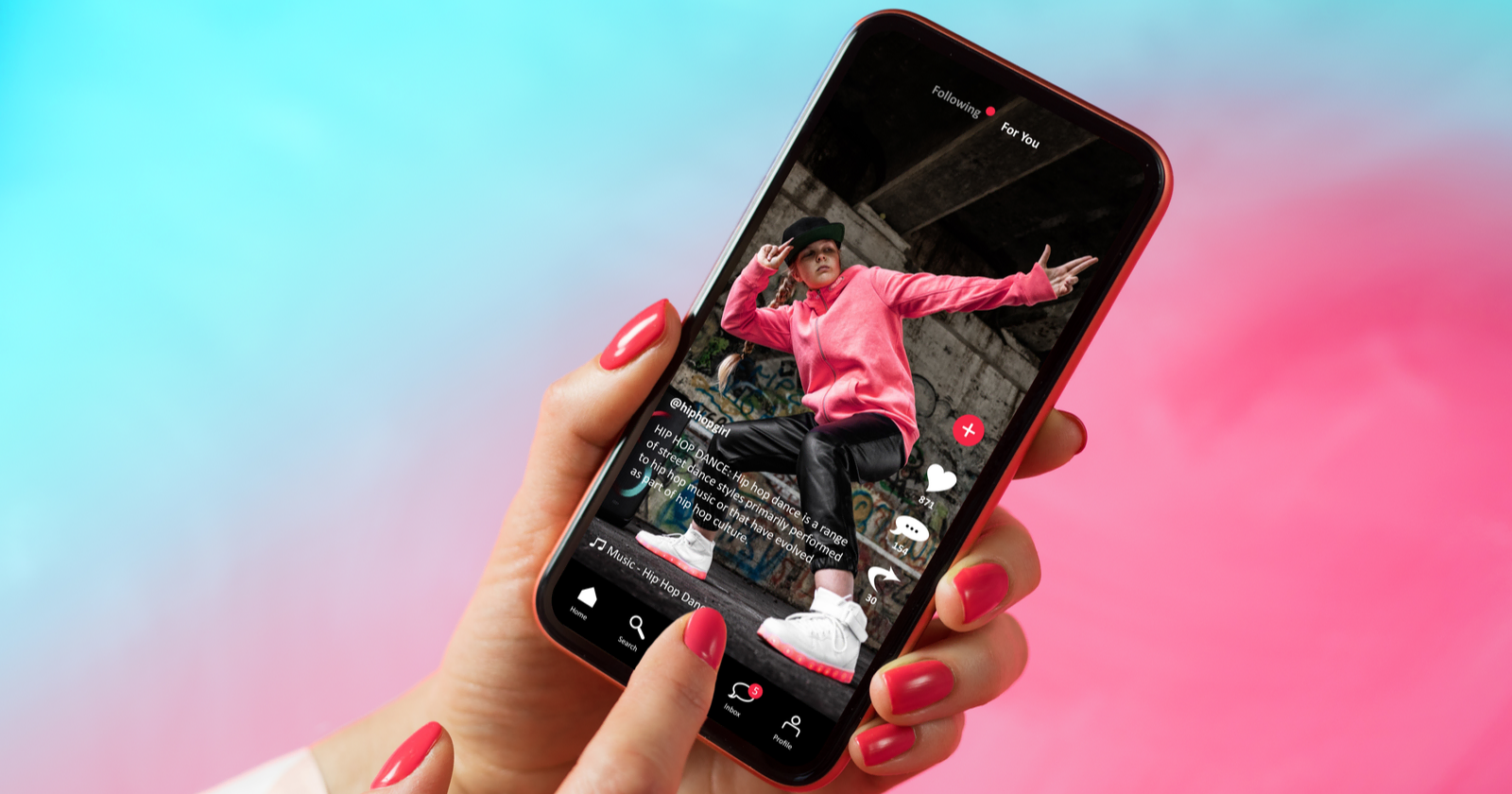
August 5, 2024
Navigating the TikTok Landscape: A Marketer’s Guide for KSA
Did you know that TikTok boasts a penetration rate of 135% in Saudi Arabia? This means the platform is teeming with opportunities for marketers to connect with a highly engaged audience. But how can you effectively harness this platform to boost your marketing efforts in the KSA market? This guide will walk you through the essential strategies for navigating the TikTok landscape in Saudi Arabia, ensuring your content not only reaches but resonates with your target audience 1. Understanding TikTok’s Popularity in KSA TikTok's rapid growth in Saudi Arabia can be attributed to its engaging content and the high level of internet penetration in the region. As more Saudis join TikTok, brands have a prime opportunity to reach a diverse audience. Why TikTok is Popular in KSA Youthful Demographic: A large portion of TikTok users are young Saudis who are eager for fresh, entertaining content. High Engagement Rates: TikTok’s interactive features, like duets and challenges, foster high user engagement. Cultural Resonance: Content that resonates with Saudi culture and traditions tends to perform well. 2. Creating Effective TikTok Content for Saudi Audiences To succeed on TikTok in Saudi Arabia, it’s crucial to create content that is both engaging and culturally relevant. Here are some tips to help you get started. Content Creation Tips Localize Your Content: Use local dialects and references that resonate with Saudi users. Embrace Trends: Keep up with the latest TikTok trends and adapt them to fit your brand message. High-Quality Visuals: Invest in good quality visuals to capture the attention of viewers. Use Hashtags Wisely: Utilize popular and relevant hashtags to increase the discoverability of your content. 3. Leveraging TikTok Influencers Influencer marketing on TikTok can greatly enhance your brand’s reach. Collaborating with popular TikTok influencers in Saudi Arabia can help you tap into their established follower base and gain credibility. Choosing the Right Influencers Relevance: Ensure the influencer’s content aligns with your brand values and message. Engagement Rates: Focus on influencers with high engagement rates rather than just a large follower count. Authenticity: Choose influencers who are genuine and have a strong connection with their audience. 4. Measuring Success on TikTok Tracking the performance of your TikTok campaigns is crucial for understanding what works and what doesn’t. Here’s how you can measure success on TikTok. Key Metrics to Track Engagement Rate: Measures the interaction your content receives (likes, comments, shares). View Count: Tracks the number of times your videos are viewed. Follower Growth: Monitors the increase in your TikTok followers over time. Conversion Rate: Evaluates how many viewers take the desired action after watching your content. Conclusion TikTok offers a unique and powerful platform for marketers in Saudi Arabia to reach and engage with their target audience. By understanding the local landscape, creating culturally relevant content, leveraging influencers, and measuring your success, you can effectively navigate the TikTok landscape in KSA. For more insights on digital marketing in Saudi Arabia, check out our blog on E-commerce in Saudi Arabia: Key Trends to Watch in 2024 and Stop Wasting Money: Target Audience Refinement in KSA. These articles will provide you with valuable information to enhance your marketing strategies in the region.
Read more...
August 4, 2024
The Role of Consumer Psychology in Crafting Effective Marketing Messages
Did you know that ads with an above-average emotional response generate a 23% increase in sales volume? Understanding consumer psychology is essential for creating marketing messages that resonate deeply with your audience. By leveraging psychological insights, marketers can tap into the emotions, motivations, and cognitive biases that drive consumer behavior. In this blog, we’ll explore how you can use consumer psychology to craft compelling marketing messages that engage your audience and drive results. 1. Understanding Consumer Psychology Why Consumer Psychology Matters Consumer psychology helps marketers understand why people make certain purchasing decisions. By tapping into these insights, you can create marketing messages that appeal directly to your audience’s emotions and motivations. Key Psychological Principles Social Proof: People tend to follow the actions of others, especially in uncertain situations. Use testimonials and reviews to build credibility. Scarcity: Limited availability can increase demand. Highlight limited-time offers and exclusive deals. Reciprocity: Offering something of value can make people feel obliged to return the favor. Provide free resources or trials. Authority: Expertise and knowledge can build trust. Share expert opinions and case studies to establish authority. 2. Crafting Messages That Resonate A) Emotional Appeals Emotions play a significant role in decision-making. Craft messages that evoke positive emotions like happiness, trust, and excitement. Tips for Emotional Appeals: Use Storytelling: Narratives can create emotional connections. Share stories that your audience can relate to. Visuals: Images and videos can enhance emotional impact. Use visuals that align with your message. Language: Use words that evoke emotions and create a sense of urgency or excitement. Examples: 1- Coca-Cola’s Emotional Holiday Ads Coca-Cola’s holiday campaigns are a masterclass in using emotional appeal. Their ads often feature heartwarming stories centered around themes of family, togetherness, and celebration. By creating a sense of nostalgia and warmth, Coca-Cola connects with viewers on a deep emotional level, making their brand synonymous with joyous holiday experiences. This emotional connection drives engagement and loyalty, as consumers associate the brand with positive memories and feelings. 2- Nike’s Powerful “Just Do It” Campaigns Nike’s “Just Do It” campaigns leverage powerful emotional triggers such as determination, empowerment, and inspiration. By featuring athletes overcoming obstacles and achieving greatness, Nike taps into the viewer's desire for self-improvement and success. This approach not only motivates consumers but also fosters a strong emotional bond with the brand. Nike's messaging encourages people to believe in themselves and take action, reinforcing the brand's identity as a symbol of strength and perseverance. B) Personalization Personalized messages are more likely to engage your audience. Tailor your content to address the specific needs and preferences of different segments. Steps to Personalize Content: Segment Your Audience: Divide your audience based on demographics, behavior, and preferences. Use Data: Leverage data to understand your audience’s interests and tailor your messages accordingly. Dynamic Content: Utilize dynamic content that changes based on the viewer’s profile or behavior. 3. Implementing Psychological Strategies Social Proof and Testimonials Showcase satisfied customers to build trust and credibility. Highlight testimonials and case studies that demonstrate your success. Implementing Social Proof: Customer Reviews: Display reviews prominently on your website and marketing materials. Case Studies: Share detailed case studies that highlight successful projects and satisfied clients. Influencers: Collaborate with industry influencers to enhance credibility and reach. Creating a Sense of Urgency Urgency can drive immediate action. Use time-sensitive offers and highlight the benefits of quick decision-making. Techniques to Create Urgency: Limited-Time Offers: Promote discounts and deals that are available for a short period. Countdown Timers: Use countdown timers on your website to emphasize the limited availability of offers. Exclusive Deals: Offer special deals for a select group of customers to create a sense of exclusivity. Conclusion Integrating consumer psychology into your marketing strategies can significantly enhance the effectiveness of your messages. By understanding your audience’s motivations and leveraging psychological principles, you can create compelling and persuasive marketing content. At A2Z Media, we are committed to helping businesses in Qatar, UAE, and KSA achieve their marketing goals through tailored, data-driven approaches. For more insights on effective marketing strategies, check out our blog on The Top 10 Benefits of SMS Marketing in Modern Messaging Campaigns. Harness the power of psychology to transform your marketing efforts and connect with your audience on a deeper level. By following this structured approach, you can craft marketing messages that not only capture attention but also drive action. Remember, the key to successful marketing lies in understanding your audience and appealing to their psychological triggers. At A2Z Media, we leverage these insights to help our clients achieve exceptional results.
Read more...
August 1, 2024
The Power of Client Feedback: Building Better Products and Services
Imagine if you could peek into the minds of your clients, understanding their desires, frustrations, and needs as clearly as your own. What if this insight could transform your products and services, setting your brand apart in a competitive market? Welcome to the world of client feedback—a powerful, yet often underutilized tool that can revolutionize your business. At A2Z Media, we’ve harnessed the true potential of client feedback, enabling our clients to create extraordinary products and services that not only meet but exceed customer expectations. Dive into this blog to uncover how you too can leverage client feedback to propel your business to new heights, ensuring every customer interaction is a step toward perfection. 1. Understanding Client Feedback Why Client Feedback Matters Client feedback provides direct insights into customer experiences and expectations. It is a crucial tool for identifying strengths and weaknesses in your products and services. Benefits of Collecting Client Feedback Improved Customer Satisfaction: Addressing client concerns leads to happier customers. Product Enhancement: Feedback highlights areas for product improvement. Increased Loyalty: Clients feel valued when their opinions are heard and acted upon. 2. Methods for Gathering Client Feedback Effective Feedback Channels To gather meaningful feedback, it's essential to utilize multiple channels. Here are some effective methods: a) Surveys Online Surveys: Easy to distribute and analyze. In-App Surveys: Provide feedback at the point of use. b) Interviews and Focus Groups One-on-One Interviews: Gain in-depth insights. Focus Groups: Collect diverse opinions. c) Customer Support Interactions Direct Feedback: Gather feedback during support calls. Follow-Up Emails: Request feedback after resolving issues. 3. Analyzing and Implementing Feedback Turning Feedback into Action Collecting feedback is just the beginning. Analyzing and implementing it effectively is where the real value lies. Steps for Effective Analysis Categorize Feedback: Sort feedback into categories such as product features, customer service, and usability. Identify Trends: Look for recurring themes and issues. Prioritize Actions: Focus on high-impact changes first. Implementing Changes Develop Action Plans: Create detailed plans to address feedback. Communicate with Clients: Inform clients about the changes made based on their feedback. Monitor Results: Track the impact of implemented changes on client satisfaction and product performance. 4. Case Studies: Success Stories Real-World Examples At A2Z Media, we've seen firsthand how client feedback can transform businesses. Here are a couple of success stories: Enhancing Event Coverage After receiving feedback about our event coverage services, we revamped our approach by incorporating more real-time updates and interactive content. This led to higher engagement rates and more positive client feedback. Influencer Marketing Tactics for Events in Qatar We also improved our influencer marketing strategies based on client insights, resulting in more effective campaigns and better ROI for our clients. Check out our blog on Influencer Marketing Tactics for Events in Qatar + Real-World Example for more details. 5. Best Practices for Utilizing Client Feedback Maximizing the Benefits To fully leverage client feedback, consider the following best practices: Regularly Collect Feedback: Make feedback collection an ongoing process. Act on Feedback Promptly: Show clients that their opinions matter by implementing changes quickly. Share Feedback with Your Team: Ensure all relevant departments are aware of client feedback. Close the Loop: Follow up with clients to let them know how their feedback has been used. Conclusion Client feedback is a powerful tool that can help businesses build better products and services. By understanding, gathering, analyzing, and implementing feedback, companies can enhance customer satisfaction, loyalty, and overall success. At A2Z Media, we are committed to using client feedback to drive continuous improvement and deliver exceptional value to our clients. For more insights on transforming your services, check out our other blogs, such as Sell an Experience: 5 Ways to Transform Your Service in Qatar. Let's harness the power of client feedback to achieve greater heights together!
Read more...
July 29, 2024
AI Insights & Data-Driven Decision Making for Multi-Location Brands
Imagine having the ability to predict customer behavior, optimize your marketing strategies, and streamline operations across multiple locations. For brands operating in dynamic markets like Qatar, KSA, and UAE, leveraging AI insights and data-driven decision-making can make this a reality. This blog explores how AI and data analytics can revolutionize your multi-location brand, providing practical examples and tools to help you thrive in these competitive landscapes. 1. The Importance of AI in Multi-Location Brand Management Multi-location brands face the challenge of maintaining consistency while catering to diverse customer needs and regional differences. AI can significantly streamline operations and optimize performance across all locations. a) Understanding AI Insights Localized Data Analysis: AI systems can analyze vast amounts of region-specific data, identifying patterns and trends unique to each location. Predictive Analytics: AI can forecast future trends based on historical data, helping brands anticipate market shifts and customer preferences. Personalization: AI enables brands to personalize marketing efforts based on customer data, increasing engagement and loyalty. b) Benefits of AI in Decision Making Improved Accuracy: AI-driven decisions are based on data and analytics, reducing the risk of errors. Efficiency: AI automates routine tasks, allowing teams to focus on strategic initiatives. Scalability: AI solutions can scale with the business, providing consistent performance across all locations. 2. Data-Driven Decision Making: A Competitive Advantage Data-driven decision-making allows brands to make informed choices that align with their business objectives and customer needs. a) Key Elements of Data-Driven Decision Making Data Collection: Gathering data from various sources, including sales reports, customer feedback, and market research. Data Integration: Combining data from different sources to provide a comprehensive view of the business. Data Analysis: Using analytical tools to extract insights and identify trends. b) Implementing Data-Driven Strategies Set Clear Objectives: Define what you want to achieve with your data-driven initiatives. Choose the Right Tools: Select tools and platforms that can handle your data needs. Train Your Team: Ensure that your team is skilled in data analysis and interpretation. Monitor and Adjust: Continuously monitor results and adjust strategies based on the data. 3. AI Applications in Multi-Location Marketing AI applications can revolutionize how multi-location brands approach marketing, ensuring more effective and targeted campaigns. a) AI-Powered Marketing Tools Customer Segmentation: AI can segment customers based on behavior and preferences, allowing for more targeted marketing. Tools like HubSpot are excellent for this purpose. Campaign Optimization: AI can analyze the performance of marketing campaigns in real-time, suggesting adjustments for better results. Google Analytics can help optimize your campaigns. Sentiment Analysis: AI can monitor social media and other channels to gauge customer sentiment, informing marketing strategies. Tools like Brandwatch and Socialbakers are useful for sentiment analysis. b) Real-World Examples Personalized Offers: Using AI to offer personalized promotions based on customer purchase history. Chatbots: Implementing AI-powered chatbots to provide instant customer service and support. Predictive Analytics: Utilizing AI to predict customer behavior and adjust marketing strategies accordingly. 4. Overcoming Challenges with AI and Data-Driven Decision Making Implementing AI and data-driven decision-making can present challenges, but with the right approach, these can be effectively managed. a) Common Challenges Data Quality: Ensuring that the data collected is accurate and reliable. Integration: Integrating AI tools with existing systems and processes. Skills Gap: Bridging the gap between current team skills and the expertise needed for AI and data analysis. b) Solutions to Overcome Challenges Data Management: Invest in robust data management practices to maintain data quality. Collaboration: Work with technology partners to ensure smooth integration of AI tools. Training and Development: Provide continuous training for staff to develop necessary skills. Conclusion AI insights and data-driven decision-making are essential for multi-location brands aiming to stay competitive in a dynamic market. By leveraging AI technologies, brands can gain valuable insights, make informed decisions, and enhance their marketing efforts. For more strategies on how to overcome challenges in CRM, read our blog on The Top Strategies to Overcome Challenges of CRM in The Middle East. Additionally, explore 5 Strategies to Unify Your Brand's Cross Channel Customer Experience for more insights into improving your brand’s marketing performance. Implementing these technologies not only helps in addressing current challenges but also sets the stage for future growth and success. Embrace AI and data-driven decision-making to transform your multi-location brand and lead in your industry.
Read more...
July 25, 2024
Understanding Gen Z: Consumer Behavior in Saudi Arabia vs. Qatar
Gen Z, the generation born between 1997 and 2012, is rapidly becoming a significant force in the consumer market. Their unique preferences and behaviors are reshaping the way businesses operate, particularly in the Middle East. This blog delves into the consumer behavior of Gen Z in Saudi Arabia and Qatar, highlighting the similarities and differences between the two nations. Understanding these nuances can help businesses tailor their marketing strategies more effectively to capture the attention of this influential demographic. 1. Digital Natives: The Online World of Gen Z Gen Z in both Saudi Arabia and Qatar are digital natives, having grown up with the internet and social media. Their online presence is substantial, influencing how they discover and engage with brands. a) Social Media Usage Saudi Arabian Gen Zers are avid users of Snapchat, Instagram, and TikTok, often using these platforms for entertainment and shopping. In Qatar, while Instagram and Snapchat are popular, Twitter also has a significant user base among Gen Z. Both groups follow influencers and rely on social media for product recommendations and reviews. b) E-commerce Preferences Saudi Gen Z consumers frequently shop online, with a preference for mobile-friendly websites and apps. In Qatar, Gen Z also favors online shopping but shows a strong preference for local brands and products. c) Content Consumption Video content, particularly short-form videos on TikTok and Instagram Reels, is highly favored by Gen Z in both countries. Podcasts and live streams are gaining traction, offering brands new avenues to engage with this audience. For more insights on e-commerce trends in Saudi Arabia, check out our blog, E-commerce in Saudi Arabia: Key Trends to Watch in 2024. 2. Cultural Influences and Values Cultural context plays a significant role in shaping the consumer behavior of Gen Z in Saudi Arabia and Qatar. While both countries share similar cultural backgrounds, there are notable differences in their values and priorities. a) Family and Social Connections In Saudi Arabia, family values are paramount, and purchasing decisions often involve input from family members. Qatari Gen Zers also value family opinions but tend to exhibit a slightly more individualistic approach in their purchasing behavior. b) Brand Loyalty Saudi Gen Z consumers show a strong loyalty to brands that resonate with their cultural values and provide a sense of community. In Qatar, Gen Z is more experimental, willing to try new brands but still favoring those that offer personalized experiences. c) Sustainability and Ethics Environmental concerns are increasingly influencing the purchasing decisions of Gen Z in both Saudi Arabia and Qatar. Brands that demonstrate a commitment to sustainability and ethical practices tend to attract more Gen Z customers in these regions. 3. Marketing Strategies: Engaging Gen Z in Saudi Arabia vs. Qatar To effectively reach Gen Z in Saudi Arabia and Qatar, businesses must adopt tailored marketing strategies that resonate with their unique preferences and behaviors. a) Social Media Campaigns In Saudi Arabia, leveraging influencers and creating interactive content on platforms like TikTok and Instagram can drive engagement. For Qatari Gen Z, integrating Twitter into social media campaigns can enhance visibility and interaction. b) Localized Content Saudi Gen Z values content that reflects their cultural identity and language. Using local dialects and culturally relevant themes can enhance brand connection. In Qatar, while localized content is important, there is also an appreciation for content that blends local and international elements. c) Interactive and Immersive Experiences Gen Z in both countries enjoy interactive experiences such as virtual reality (VR) and augmented reality (AR) that offer immersive brand interactions. Hosting live events, both online and offline, can also capture the interest of Gen Z consumers. For a deeper dive into tailoring local content, read our guide on How to Tailor Local Content for Saudi Audiences: A Step-by-Step Guide. Conclusion Understanding the consumer behavior of Gen Z in Saudi Arabia and Qatar is crucial for businesses looking to capture this dynamic market. While there are similarities in their digital engagement and cultural influences, the differences in social media usage, brand loyalty, and marketing preferences highlight the need for tailored strategies. By leveraging these insights, businesses can create compelling and effective marketing campaigns that resonate with Gen Z in both countries, ensuring long-term success and customer loyalty.
Read more...
July 24, 2024
7 Alarming Facts Before Hiring a Marketing Agency! (#4 Is a Game-Changer!)
Are you overwhelmed by the sheer number of marketing agencies all promising to deliver exceptional results? With countless agencies promising the moon and stars, how do you sift through the noise to find the one that truly delivers? Your business's growth and reputation rest on making the right choice. To guide you, we've uncovered seven alarming facts that you must know before hiring a marketing agency. Bet you didn’t think about #4! 1. Do They Provide Strategic Counsel? A common mistake is to hire an agency that only takes orders without providing strategic counsel. A good marketing agency should align with your business objectives and offer strategic insights to guide your marketing efforts. Key Points to Consider: Alignment with Business Goals: Ensure the agency understands your business goals and can create a tangible action plan. Strategic Insights: Look for agencies that provide insights and recommendations based on your specific needs. Measurable Results: They should be able to track and measure success effectively. Understanding the importance of strategic counsel can save you time and money while driving better results. 2. How Creative Are They? Creativity is a crucial aspect of effective marketing. A creative agency can transform mundane content into engaging material that captivates your audience. Creative Considerations: Content Repurposing: Ensure the agency can creatively repurpose content across multiple channels. Engaging Formats: Look for innovative approaches to make your content appealing. Visual and Interactive Content: Check if they can produce a variety of content formats, from videos to infographics. Remember, creativity can set your brand apart in a crowded marketplace. 3. Do They Understand Your Audience? Understanding your target audience is essential for any marketing strategy. An agency that knows your audience can tailor campaigns to resonate deeply with them. Audience Insights: Demographic Understanding: They should have a clear understanding of your target demographics. Channel Expertise: Ensure they know which platforms and channels your audience prefers. Holistic Approach: Look for an agency that offers a consolidated approach to maximize reach without reinventing the wheel. This knowledge can significantly enhance the effectiveness of your marketing efforts. 4. Do You Trust Them? Transparency and trust are the foundation of a successful client-agency relationship. You need to be sure that the agency you choose operates with integrity and honesty. Trust Factors: Team Consistency: The team that pitches to you should be the same team delivering your projects. Clear Communication: Look for agencies that maintain open and honest communication. Ethical Practices: Ensure they adhere to ethical practices in all aspects of their work. Building a trustworthy relationship with your agency can lead to long-term success. 5. What’s Their Digital Presence Like? An agency’s digital presence speaks volumes about their capabilities. Their website, social media, and online activity should reflect their expertise and professionalism. Digital Presence Checklist: Website Quality: Evaluate their website design, usability, and content quality. Social Media Activity: Check their engagement and activity on social media platforms. Content Quality: Look for high-quality, informative content that showcases their knowledge and skills. A strong digital presence is an indicator of an agency’s ability to market effectively. 6. Are They Experts in Multiple Aspects of Marketing? A well-rounded marketing agency should have expertise across various marketing disciplines. This ensures they can provide comprehensive solutions tailored to your needs. Expertise Areas: Campaign Planning: They should excel in planning and executing marketing campaigns. Digital Strategy: Look for strong capabilities in digital marketing strategies. Creative Development: Ensure they have a robust creative team to develop engaging content. Cross-functional expertise is invaluable for achieving your marketing goals. 7. Do They Leverage Technology to Measure Success? The use of technology in marketing is crucial for tracking and optimizing performance. Your agency should utilize the latest tools to measure success accurately. Technology Utilization: Ad Tech and Martech: Ensure they use advanced technology for campaign execution. Analytics and Reporting: They should provide detailed analytics and regular performance reports. Optimization Strategies: Look for agencies that use data to continuously optimize their strategies. Leveraging technology can significantly enhance the effectiveness and efficiency of your marketing efforts. Conclusion Choosing the right marketing agency requires careful consideration of several factors. By focusing on strategic counsel, creativity, audience understanding, transparency, digital presence, expertise, and technology use, you can make an informed decision. For more insights on marketing in the GCC region, check out our blog post on Exploring Digital Marketing in GCC Countries | A2Z Media. For more tips and strategies, don't miss our articles on Niche Marketing: Strategies for Targeting Specific Audiences and Cost or Investment? 3 Ways to Rethink Your Marketing Budget. Selecting the right agency is crucial for your business's success. Make sure to consider these seven alarming facts before making your decision.
Read more...
July 23, 2024
How to Design SMS Drip Campaigns for Maximum Engagement
Imagine having a direct line to your customers, where every message you send is eagerly anticipated and acted upon. That's the power of SMS drip campaigns—an automated way to deliver timely, personalized messages that keep your audience engaged and drive them to take action. Whether you're looking to boost sales, nurture leads, or enhance customer loyalty, SMS drip campaigns can be your secret weapon. In this blog, we'll unlock the secrets to designing SMS drip campaigns that captivate your audience and maximize engagement. Get ready to transform your marketing strategy and see real results! 1. Understanding SMS Drip Campaigns SMS drip campaigns are automated series of text messages sent to subscribers at predetermined intervals. These campaigns aim to nurture leads, provide valuable information, and guide customers through their journey with your brand. Key Features of SMS Drip Campaigns Automation: Set up once and run automatically. Personalization: Tailored messages based on user behavior and preferences. Timeliness: Messages are sent at optimal times to maximize engagement. 2. Setting Clear Objectives Before designing your SMS drip campaign, it's essential to define clear objectives. Knowing what you aim to achieve will guide the content, frequency, and structure of your messages. Common Objectives Increase Sales: Promote products or services to drive conversions. Enhance Customer Loyalty: Keep existing customers engaged with your brand. Educate Customers: Provide valuable information and updates. 3. Crafting Compelling Messages The success of your SMS drip campaign hinges on the quality of your messages. Each message should be concise, relevant, and engaging to capture the recipient's attention. Tips for Writing Effective SMS Keep it Short: SMS messages are limited to 160 characters. Be concise. Use a Clear Call to Action (CTA): Guide recipients on what to do next. Personalize: Use the recipient's name and tailor content to their interests. 4. Timing and Frequency Determining the right timing and frequency for your SMS drip campaign is crucial. Too many messages can overwhelm recipients, while too few may fail to keep them engaged. Best Practices for Timing and Frequency Initial Message: Send a welcome message immediately after signup. Follow-up Messages: Space them out based on the campaign's objective (e.g., daily, weekly). Optimal Times: Send messages during peak engagement hours, such as early mornings or evenings. 5. Segmenting Your Audience Segmenting your audience allows you to send more personalized and relevant messages. By categorizing subscribers based on demographics, behavior, or preferences, you can tailor your content to better meet their needs. How to Segment Your Audience Demographics: Age, gender, location. Behavior: Purchase history, browsing behavior. Preferences: Interests, past interactions with your brand. 6. Measuring Success and Optimizing To ensure your SMS drip campaigns are effective, it's essential to track their performance and make necessary adjustments. Use metrics to measure success and identify areas for improvement. Key Metrics to Track Open Rates: Percentage of recipients who open your messages. Click-Through Rates (CTR): Percentage of recipients who click on links in your messages. Conversion Rates: Percentage of recipients who complete a desired action. Conclusion Designing effective SMS drip campaigns requires careful planning, clear objectives, and ongoing optimization. By following these guidelines, you can create campaigns that engage your audience, drive conversions, and enhance customer loyalty. For more insights into SMS marketing, check out our blog on "The Top 10 Benefits of SMS Marketing in Modern Messaging Campaigns." Additionally, explore our articles on "Transactional Email vs Marketing Email: A Simple Guide to Conversions" and "The Do's and Don'ts of WhatsApp Business Automated Messages" to further enhance your messaging strategies. Implement these strategies, and watch your engagement rates soar as you connect with your audience in meaningful and impactful ways.
Read more...
July 16, 2024
How to Start a Podcast in 2024: A Complete Guide for Marketing Experts
Imagine reaching your audience whenever and wherever they are, speaking directly into their ears with content that resonates. Welcome to the world of podcasting in 2024—a booming platform that's transforming marketing strategies across the globe. As the podcasting landscape continues to grow, especially in the MENA region, it offers unique opportunities for engaging with your audience. Whether you’re a seasoned marketer or just starting out, this guide will walk you through the essential steps to launch a successful podcast. We'll cover everything from planning to promotion, ensuring you have the tools you need to create compelling content and reach your target audience. 1. Planning Your Podcast a. Conceptualize Your Podcast Before you start recording, it’s crucial to have a clear concept for your podcast. This involves identifying your target audience, choosing a niche topic, and setting goals for your podcast. b. Define Your Target Audience Understand their interests and pain points. Consider demographics such as age, location, and profession. c. Choose Your Podcast Topic Select a niche that aligns with your expertise. Ensure it’s relevant to your target audience and marketing goals. d. Set Your Podcast Goals Decide on the purpose of your podcast (e.g., brand awareness, lead generation). Establish key performance indicators (KPIs) to measure success. 2. Setting Up Your Podcast a. Gather the Right Equipment To produce a high-quality podcast, you need the right equipment. This section will cover the essential tools required to get started. b. Essential Podcast Equipment Microphone: Invest in a good quality microphone for clear audio. Headphones: Use headphones to monitor sound quality. Recording Software: Choose software that suits your needs (e.g., Audacity, Adobe Audition). Hosting Platform: Select a platform to host and distribute your podcast (e.g., Podbean, Anchor). 3. Recording and Editing a. Recording Your First Episode Recording your podcast is an exciting step. Make sure you’re prepared to deliver engaging content. b. Tips for Recording Choose a quiet location to minimize background noise. Write a script or outline to stay on track. Speak clearly and at a moderate pace. c. Editing Your Podcast Remove Background Noise: Use software to clean up the audio. Add Intro/Outro Music: Create a professional feel with music. Edit for Clarity: Cut out unnecessary parts to keep the podcast concise. 4. Publishing and Promoting a. Publishing Your Podcast Once your podcast is recorded and edited, it’s time to publish. This involves uploading your episodes to a hosting platform and distributing them to various podcast directories. Steps to Publish: Upload to Hosting Platform: Follow the platform’s guidelines for uploading. Submit to Directories: Share your podcast on platforms like Apple Podcasts, Spotify, and Google Podcasts. b. Promoting Your Podcast Promotion is key to attracting listeners. Utilize various channels to spread the word about your new podcast. Promotion Strategies: Social Media: Share episodes on your social media channels. Email Marketing: Notify your subscribers about new episodes. Collaborate with Influencers: Partner with influencers in your niche to reach a wider audience. One great example is The Twist podcast, which successfully engages listeners with insightful marketing discussions, industry trends, and expert interviews, all while maintaining a consistent publishing schedule and leveraging multiple channels for promotion. 5. Measuring Success a. Analyzing Your Podcast Performance Measuring the success of your podcast helps you understand what’s working and what needs improvement. Key Metrics to Track Downloads: Monitor the number of downloads per episode. Listener Engagement: Track likes, shares, and comments. Audience Demographics: Analyze listener data to refine your content strategy. b. Using Feedback for Improvement Listener Surveys: Conduct surveys to gather feedback. Review Analytics: Use insights to improve future episodes. Conclusion Starting a podcast in 2024 is a strategic move for marketing experts looking to expand their reach and engage with their audience in a new way. By following the steps outlined in this guide, you’ll be well on your way to creating a successful podcast that resonates with your target audience. For more insights on the podcasting landscape in the MENA region, check out our blog on How Has MENA Become a Hotspot for Podcast Listeners? Additionally, explore Digital Marketing Strategies in the MENA Region: What Works Where? to enhance your overall marketing efforts. Creating a podcast can seem daunting, but with careful planning, the right tools, and effective promotion, you can launch a podcast that stands out in the crowded digital space. Start your podcasting journey today and leverage this powerful medium to connect with your audience and achieve your marketing goals.
Read more...
July 15, 2024
Digital Marketing Strategies in the MENA Region: What Works Where?
The MENA region presents a unique landscape for digital marketing, characterized by diverse cultures, languages, and economic conditions. To navigate this complex market, businesses must understand which strategies work best in different countries. This blog explores effective digital marketing strategies across key MENA countries, offering insights into what works where. 1. Digital Marketing in the UAE Understanding the Market High Internet Penetration: The UAE boasts one of the highest internet penetration rates in the region, making digital marketing highly effective. Social Media Savvy: Social media platforms like Instagram, Facebook, and LinkedIn are extremely popular. Mobile Usage: A significant portion of internet users access online content via mobile devices. Effective Strategies Social Media Advertising: Leveraging platforms like Instagram and Facebook to reach a broad audience. Influencer Marketing: Collaborating with local influencers to boost brand credibility and reach. Mobile Optimization: Ensuring websites and ads are optimized for mobile viewing. 2. Digital Marketing in Saudi Arabia Understanding the Market Rapid Digital Transformation: Saudi Arabia is undergoing a rapid digital transformation, with increasing internet and social media usage. Youth Population: A large portion of the population is young and tech-savvy. Preference for Visual Content: High engagement with video content and visually appealing ads. Effective Strategies Dynamic Video Ads: Utilizing video ads on platforms like YouTube and Instagram to captivate the younger audience. Localized Content: Creating content that resonates with the local culture and language. Search Engine Optimization (SEO): Focusing on local SEO to improve visibility in search engine results. 3. Digital Marketing in Qatar Understanding the Market Affluent Audience: Qatar has a high GDP per capita, leading to a more affluent audience with significant purchasing power. High Social Media Engagement: Platforms like Instagram and Twitter are widely used. Preference for Quality Content: Audiences value high-quality, informative content. Effective Strategies Content Marketing: Developing high-quality blog posts, articles, and infographics that provide value to the audience. Paid Social Media Campaigns: Running targeted ad campaigns on popular social media platforms. Email Marketing: Crafting personalized email campaigns to engage and convert affluent consumers. 4. Digital Marketing in Egypt Understanding the Market Growing Internet Usage: While not as high as in the Gulf states, internet usage is growing rapidly in Egypt. Cost-Sensitive Audience: Consumers are more price-sensitive, requiring cost-effective marketing strategies. High Engagement with Social Media: Platforms like Facebook and Instagram see high levels of engagement. Effective Strategies Social Media Marketing: Focusing on Facebook and Instagram to reach a wide audience. Affordable Advertising: Utilizing cost-effective digital ads to reach price-sensitive consumers. Community Engagement: Building strong online communities through interactive and engaging content. 5. Digital Marketing in Morocco Understanding the Market Diverse Linguistic Landscape: Content must cater to Arabic, French, and sometimes Berber-speaking audiences. Increasing Smartphone Use: A significant rise in smartphone usage, making mobile marketing essential. Preference for Local Content: Audiences prefer content that is locally relevant and culturally appropriate. Effective Strategies Localized Content Creation: Producing content in multiple languages to cater to the diverse linguistic audience. Mobile Marketing: Ensuring all digital marketing efforts are mobile-friendly. Social Media Engagement: Leveraging platforms like Facebook and WhatsApp for community building and engagement. Conclusion The MENA region offers vast opportunities for digital marketers, but success requires tailored strategies for each market. Understanding local preferences, leveraging popular platforms, and creating culturally relevant content are key to thriving in this dynamic region. For more insights on the digital landscape in the MENA region, check out our blog on How Has MENA Become a Hotspot for Podcast Listeners?. Additionally, explore our guide on The Role of Dynamic Video Ads in Captivating Gen Z in the MENA Region. By aligning your strategies with the unique characteristics of each MENA market, you can effectively reach and engage your target audience, driving better results for your business.
Read more...
July 14, 2024
The Essentials of Lifestyle Photography for Effective Content Marketing
In an era where authenticity reigns supreme, lifestyle photography stands out as a game-changer in content marketing. It’s not just about showing a product; it’s about capturing the essence of a moment that resonates with your audience’s everyday life. Imagine a photo that makes your audience pause, smile, and think, “I want that experience.” That’s the power of lifestyle photography. This blog will reveal how to harness this captivating tool to create compelling, relatable, and engaging content that not only attracts but deeply connects with your audience. 1. Understanding Lifestyle Photography Definition and Purpose Lifestyle photography captures people in real-life situations, telling stories about their lives or experiences. This type of photography focuses on the natural, authentic moments that resonate with viewers. Key Benefits Relatability: Helps the audience see themselves using the product. Storytelling: Creates a narrative that connects emotionally. Authenticity: Builds trust by showcasing genuine moments. 2. Planning Your Lifestyle Photoshoot Setting Goals and Objectives Before starting a photoshoot, define your goals. What message do you want to convey? Who is your target audience? Elements to Consider Location: Choose a setting that reflects the lifestyle you want to depict. Models: Select models that represent your target audience. Props and Wardrobe: Ensure they are relevant and enhance the story. Shot List: Plan your shots to capture a variety of scenes and angles. 3. Capturing Authentic Moments Techniques for Natural Poses Encourage models to interact naturally with the environment and each other. Avoid overly posed shots to maintain authenticity. Tips for Success Candid Shots: Capture spontaneous moments. Movement: Incorporate action to add life to your photos. Expressions: Focus on genuine emotions. 4. Post-Production and Editing Enhancing the Story Editing should enhance the authenticity of the photos. Adjust lighting, color, and contrast to make the images more appealing without losing the natural feel. Best Practices Consistency: Maintain a consistent style across all photos. Subtle Adjustments: Avoid over-editing. Highlight Key Elements: Ensure the main focus of the image stands out. 5. Integrating Lifestyle Photography into Your Marketing Strategy Using Images Effectively Incorporate lifestyle photos into various marketing channels to maximize their impact. Channels to Consider Social Media: Share relatable content to engage with followers. Website: Use lifestyle images on landing pages and blogs to enhance user experience. Email Campaigns: Include authentic photos to connect with subscribers. 6. Measuring the Impact Analyzing Performance Track the performance of your lifestyle photography to understand its effectiveness. Key Metrics Engagement Rates: Likes, comments, and shares on social media. Conversion Rates: Sales or sign-ups resulting from the content. Brand Awareness: Increase in followers and overall reach. Conclusion Lifestyle photography is an essential component of an effective content marketing strategy. By capturing authentic moments, you can create relatable and engaging content that resonates with your audience. Implementing these techniques will help you tell a compelling story and build a strong connection with your customers. For more tips on enhancing your product photography, check out our blog on 3 Essential Product Photography Ideas for Your eCommerce Strategy. By integrating these strategies, you can create a cohesive and impactful visual marketing campaign that drives results.
Read more...
July 10, 2024
Who's Seeing Your Ads? Optimizing Search Campaigns in Qatar
Did you know that Qatar has one of the highest internet penetration rates in the world? With around 99% of the population online, the digital marketplace is bustling with opportunities. But amidst this vast sea of potential, do you know who is actually seeing your ads? Understanding and optimizing your search campaigns can make the difference between your ads being lost in the noise or reaching the right eyes. In this blog, we’ll explore the top strategies to ensure your search campaigns in Qatar are hitting the mark and maximizing their potential. 1. Understanding Your Audience To optimize your search campaigns in Qatar, it's crucial to start with a deep understanding of your audience. a. Demographic Insights Analyze data on age, gender, and location to tailor your ads. Use tools like Google Analytics to gather comprehensive demographic data. Adjust your campaign settings based on these insights to better target your audience. b. Behavioral Patterns Study search behaviors specific to Qatar, such as peak search times and popular keywords. Implement behavioral targeting to reach users based on their past search activities. 2. Geo-Targeting Strategies Geo-targeting allows you to focus your ads on specific regions within Qatar, ensuring they reach the most relevant audience. a. Localizing Ads Create ad copies that resonate with local culture and language. Use local dialects or phrases to make your ads more relatable. b. Utilizing Location Extensions Include location extensions to show your business address and phone number in ads. Improve ad visibility and engagement by targeting users near your business locations. 3. Keyword Optimization Selecting the right keywords is the cornerstone of any successful search campaign. a. High-Value Keywords Identify and incorporate high-value keywords that potential customers in Qatar are likely to use. Use tools like Google Keyword Planner to find relevant keywords. b. Long-Tail Keywords Focus on long-tail keywords that are more specific and less competitive. These keywords often have higher conversion rates because they target users with clear intent. 4. Ad Copy and Extensions Crafting compelling ad copy and utilizing ad extensions can enhance your search campaigns. a. Writing Engaging Ad Copy Highlight unique selling points and benefits in your ad text. Use action-oriented language to encourage clicks. b. Implementing Ad Extensions Use sitelink extensions to direct users to specific pages on your website. Add callout extensions to emphasize special offers or features. 5. Analyzing and Adjusting Campaigns Continuous analysis and adjustment are key to maintaining the effectiveness of your search campaigns. a. Performance Tracking Regularly monitor key metrics such as click-through rates, conversion rates, and cost-per-click. Use this data to identify areas for improvement. b. A/B Testing Conduct A/B testing to compare different versions of your ads. Optimize your campaigns based on the results to enhance performance. Conclusion Optimizing your search campaigns in Qatar requires a strategic approach that includes understanding your audience, employing geo-targeting, optimizing keywords, crafting compelling ad copy, and continuously analyzing performance. By implementing these tactics, you can ensure your ads reach the right people and achieve better results. For additional insights into effective marketing strategies, explore our other blogs such as Influencer Marketing Tactics for Events in Qatar + Real-World Example, From Print to Pixels: Qatar's Shift in Marketing Strategies, and Top 5 Social Media Video Marketing Ideas for Qatar.
Read more...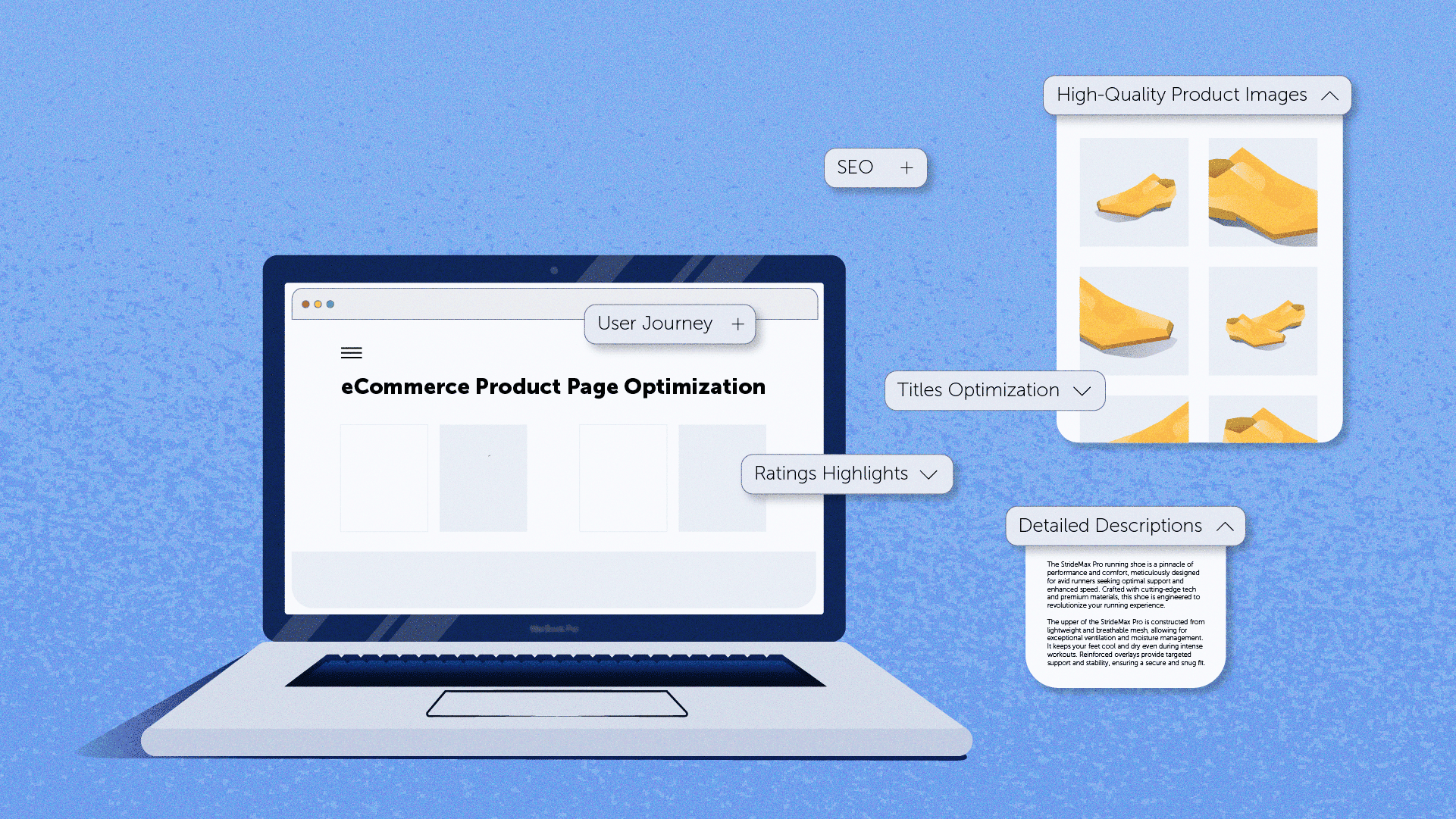
July 9, 2024
SEO for E-commerce: Optimizing Product Pages to Boost Sales
Did you know that 44% of online shoppers start their buying journey with a search engine? This staggering statistic highlights the importance of having well-optimized product pages. In the competitive world of e-commerce, optimizing your product pages for SEO can be the difference between a sale and a missed opportunity. Let's dive into the essential strategies to boost your e-commerce sales through effective SEO. 1. Crafting Compelling Product Titles and Descriptions Why It Matters The product title and description are often the first things potential customers see. They need to be both enticing and optimized for search engines. Key Strategies Use Long-Tail Keywords: Include specific keywords that customers are likely to search for. For example, instead of "running shoes," use "men's lightweight running shoes." Highlight Key Features: Clearly describe the product’s main features and benefits. Unique Descriptions: Avoid using manufacturer descriptions. Write unique, engaging content that speaks directly to your audience. 2. High-Quality Images and Videos Enhancing User Experience Visual content is crucial for e-commerce. High-quality images and videos can significantly improve user engagement and conversion rates. Best Practices Multiple Angles: Provide images from different angles. Zoom Functionality: Allow users to zoom in on images to see details. Video Demonstrations: Include videos that show the product in use. 3. Utilizing Meta Tags Effectively Boosting Visibility Meta tags, including title tags and meta descriptions, play a significant role in SEO. They help search engines understand your content and can improve click-through rates. Key Tips Title Tags: Include primary keywords and keep it under 60 characters. Meta Descriptions: Summarize the product in a compelling way, using keywords, and keep it under 160 characters. Alt Text for Images: Describe your images with relevant keywords to help with image search results. For more on meta tags, check out our blog: Meta Tags Explained: Key to Effective SEO | A2Z Media. 4. Implementing Structured Data Why Structured Data? Structured data helps search engines understand your product pages better, leading to rich snippets in search results. These snippets can increase your click-through rates. Types of Structured Data Product Markup: Include product name, description, price, availability, and review ratings. Review Markup: Show star ratings in search results. Breadcrumbs Markup: Helps users navigate your site and improves site structure. 5. Encouraging Customer Reviews Building Trust and SEO Value Customer reviews not only build trust but also add fresh content to your product pages, which is beneficial for SEO. Effective Strategies Easy Review Process: Simplify the review submission process. Incentivize Reviews: Offer discounts or loyalty points for reviews. Respond to Reviews: Engage with customers by responding to reviews, showing you value their feedback. Conclusion: Enhancing Your E-commerce SEO Strategy Optimizing your product pages for SEO is a crucial step in boosting your e-commerce sales. By focusing on well-crafted titles and descriptions, high-quality images and videos, effective use of meta tags, implementing structured data, and encouraging customer reviews, you can significantly improve your online visibility and user engagement. For more foundational SEO tips, visit our blog: Optimizing for Search: Basic SEO Guide. Additionally, consider exploring advanced techniques in our other articles such as 10 SEO Blog Post Tips to Boost Your Website's Ranking and Beyond Basics: Customized SEO Techniques for Strategic Growth. Investing time and effort into SEO can lead to higher rankings, more traffic, and ultimately, more sales. Start optimizing today and watch your e-commerce business thrive!
Read more...
July 8, 2024
How Nano-Influencers are Shaping Brand Strategies in KSA
What if you could transform your brand’s message into a trusted recommendation from a friend? In the Kingdom of Saudi Arabia (KSA), nano-influencers are doing just that, creating authentic and engaging connections with their audiences. These influencers, with their dedicated followings, are revolutionizing traditional marketing approaches, making brand messages more personal and impactful. How are they achieving this, and what can your brand learn from their strategies? Read on to discover how nano-influencers are reshaping the marketing landscape in KSA and how your brand can leverage their influence for greater success. 1. The Rise of Nano-Influencers in KSA Nano-influencers, also known as micro-influencers, are gaining traction in KSA due to their ability to engage deeply with their followers. Unlike macro influencers, who have large but often less engaged audiences, nano-influencers tend to have closer relationships with their followers, which can lead to higher engagement rates. Key Characteristics of Nano-Influencers Authenticity: Nano-influencers are often perceived as more genuine and trustworthy by their followers. Niche Focus: They typically focus on specific niches, allowing brands to target more precise demographics. High Engagement: Their posts often receive more comments, likes, and shares relative to their audience size. 2. Impact on Brand Strategies Brands in KSA are increasingly leveraging nano-influencers to drive their marketing efforts. These influencers help brands achieve higher engagement and a stronger connection with their target audience. Benefits for Brands Cost-Effective Marketing: Collaborating with nano-influencers is often more affordable than partnering with celebrities or macro influencers. Targeted Campaigns: Brands can run highly targeted campaigns that resonate with specific audience segments. Enhanced Credibility: Consumers tend to trust recommendations from influencers they perceive as relatable and genuine. 3. Case Studies: Successful Collaborations Nano-influencers are making waves across various industries in KSA, from fashion to technology, food and beverage to retail. In the fashion industry, nano-influencers often showcase new collections through personal style posts, generating organic buzz and driving sales. Example: SHEIN uses nano-influencers in KSA to showcase their latest collections, increasing brand awareness and sales. Their reality show "SHEIN Travel Diaries" features influencers exploring Saudi Arabia and highlighting the SHEIN Summer collection, further boosting engagement. In the tech sector, influencers review and demonstrate new gadgets, providing authentic feedback that resonates with tech-savvy audiences. Restaurants and food brands partner with food bloggers who share their dining experiences, enticing their followers to try new dishes. In the financial technology sector, nano-influencers share their experiences with digital wallet services, highlighting features and benefits that resonate with users looking for convenient and secure payment solutions. Example: STC Pay, a leading digital wallet service in Saudi Arabia, has partnered with nano-influencers to promote their app and services. By collaborating with influencers who have a strong local following, STC Pay has been able to reach a more engaged audience, resulting in increased app downloads and user engagement. Retail stores utilize nano-influencers to promote seasonal sales and exclusive offers, creating a sense of urgency and community among their followers. These diverse applications demonstrate the versatility and effectiveness of nano-influencers in connecting with targeted audiences in a meaningful way. 4. Challenges and Considerations While the benefits are clear, working with nano-influencers also presents certain challenges that brands must navigate. Common Challenges Consistency: Ensuring that influencers consistently produce high-quality content can be challenging. Brand Alignment: Finding influencers whose values and style align with the brand's identity is crucial. Measuring ROI: Tracking the return on investment from influencer campaigns can be complex. Conclusion Nano-influencers are undeniably reshaping brand strategies in KSA, offering brands unique advantages in terms of engagement, authenticity, and targeted marketing. By understanding the characteristics and potential challenges of working with these influencers, brands can effectively harness their power to drive marketing success. For a deeper dive into the impact of influencer marketing, check out our blog on Decoding The Impact of Influencer Marketing on Consumer Behavior". Additionally, explore our insights on Affiliate Marketing in Saudi Arabia: 7 Proven Growth Tactics for more strategies to enhance your marketing efforts in the region.
Read more...
July 7, 2024
From Script to Screen: The Ultimate Guide to Branded Video Content
Did you know that 86% of marketers are using videos as a content marketing tool, and 91% of consumers want to watch more online video content from brands? Video content has become a dominant force in digital marketing, driving engagement, brand awareness, and conversions. This guide walks you through the essential steps from scripting to final production, ensuring your branded videos are impactful and memorable. Whether you’re a seasoned marketer or new to video production, this guide offers valuable insights to elevate your brand's video content. 1. Crafting the Perfect Script A well-crafted script is the backbone of any successful video. It sets the tone, delivers the message, and ensures that the content is engaging and coherent. Elements of a Great Script Clear Message: Define the main message you want to convey. Audience Focus: Tailor the content to resonate with your target audience. Engaging Hook: Start with a compelling hook to grab attention. Concise Language: Keep it simple and to the point. Strong CTA: End with a clear call-to-action. For more tips on crafting the perfect script, check out this guide. 2. Pre-Production Planning Pre-production is all about planning and preparing for the shoot. This stage involves logistics, scheduling, and ensuring everything is in place for a smooth production process. Key Pre-Production Steps Storyboard Creation: Visualize each scene and shot. Location Scouting: Choose locations that enhance your story. Casting: Select the right talent for your video. Scheduling: Plan a detailed timeline for the shoot. 3. The Production Process The production phase is where your script comes to life. It involves filming the video according to the pre-production plan. Tips for a Successful Shoot Use Quality Equipment: Ensure you have the right tools. Refer to our blog "10 Must-Have Tools in Every Studio Video Production" for more details. Focus on Lighting: Good lighting is crucial for professional-looking videos. Sound Quality: Invest in quality microphones to capture clear audio. Direction: Provide clear directions to actors and crew. 4. Post-Production Magic Post-production is where the raw footage is transformed into a polished final product. This stage includes editing, adding effects, and finalizing the video. Essential Post-Production Tasks Editing: Cut and arrange the footage to create a cohesive story. For a step-by-step guide, see Adobe Premiere Pro tutorials or Final Cut Pro tutorials. Sound Design: Add music, sound effects, and voice-overs. Color Correction: Adjust the colors to enhance the visual appeal. Special Effects: Incorporate CGI or other effects to add creativity. Check out "Riding the New Wave: 5 Common Traits of Successful CGI Videos" for inspiration. 5. Distribution and Promotion Once your video is ready, it’s time to share it with the world. Effective distribution ensures your video reaches the right audience. Strategies for Effective Distribution Social Media: Share on platforms like Facebook, Instagram, and LinkedIn. Email Marketing: Include the video in your newsletters. SEO: Optimize your video title, description, and tags for search engines. Paid Advertising: Use ads to reach a wider audience. Conclusion From scripting to screen, creating branded video content requires careful planning and execution. By following these steps, you can produce videos that effectively communicate your brand's message and engage your audience. For more tips on videography, check out our blog "Shoot Like a Pro: Quick Videography Basics for Impactful Brand Stories" and "Behind the Scenes: Easy Video Storytelling Examples That Work." Embrace the power of video marketing and watch your brand's presence soar.
Read more...
July 4, 2024
Localized Marketing: How to Tailor Your Content for MENA Countries
Struggling to get your brand noticed in a crowded market? The key lies in understanding the cultural nuances and preferences of your audience. The Middle East and North Africa (MENA) region is a tapestry of diverse cultures, languages, and traditions. To effectively reach and engage with consumers in this region, marketers must tailor their content to reflect these unique characteristics. This blog will guide you through the essential steps for creating effective localized marketing strategies for the MENA region, ensuring your campaigns are both culturally sensitive and impactful. 1. Understanding Cultural Nuances MENA countries are rich in cultural heritage and traditions, which significantly influence consumer behavior and preferences. Recognizing these cultural nuances is crucial for creating content that resonates. Key Considerations Religious Sensitivity: Respect religious practices, holidays, and values. For example, during Ramadan, focus on themes of family, community, and charity. Language Variations: Arabic is the dominant language, but dialects vary across countries. Use local dialects and ensure accurate translations. Visual and Symbolic Elements: Colors, symbols, and imagery carry different meanings. For instance, green is often associated with Islam and prosperity. Examples: Advertising During Ramadan: Coca-Cola’s Ramadan campaign often includes themes of family reunions and sharing meals, resonating with the cultural and religious sentiments of the audience. Language Adaptation: McDonald’s uses different Arabic dialects in their advertisements for various MENA countries, ensuring the message feels personal and local. 2. Segmenting Your Audience Effective marketing in the MENA region requires understanding the diverse demographics within each country. Segment your audience to create more targeted and relevant content. Segmentation Strategies Geographic Segmentation: Different regions within MENA have distinct cultures and consumer behaviors. Tailor your content to address these differences. Demographic Segmentation: Consider age, gender, income, and education level. For example, youth in urban areas may prefer digital content, while older generations might favor traditional media. Psychographic Segmentation: Understand the values, attitudes, and lifestyles of your audience. This can help in creating content that aligns with their interests and beliefs. Examples: Youth-Focused Campaigns: Nike’s “You Can’t Stop Us” campaign used dynamic video ads targeted at young, urban consumers, leveraging social media platforms popular among this demographic. Luxury Market Segmentation: Brands like Louis Vuitton tailor their marketing strategies to affluent customers in the UAE, using exclusive events and personalized communication. 3. Creating Culturally Relevant Content Content that resonates with local audiences will increase engagement and brand loyalty. Here’s how to ensure your content is culturally relevant. Tips for Culturally Relevant Content Local Stories and Testimonials: Use local influencers and success stories to build credibility and trust. Check out our blog on Top 7 Influencer Categories in MENA You Need to Know for more insights. Localized Visuals: Incorporate local landscapes, traditional attire, and familiar settings in your visuals. Adapt Messaging: Customize your brand messages to reflect local idioms, humor, and references. Examples: Influencer Marketing: Beauty brands like L'Oréal collaborate with popular MENA influencers to demonstrate product use, increasing relatability and trust. Cultural Imagery: Starbucks' localized campaigns often feature local landmarks and cultural elements, making their content more relatable. 4. Leveraging Local Channels and Media Choosing the right channels to distribute your content is as important as the content itself. Understanding media consumption habits in the MENA region is key to successful marketing. Effective Channels Social Media: Platforms like Facebook, Instagram, and Snapchat are widely used across MENA. Tailor your content to each platform’s strengths and audience preferences. Traditional Media: Don’t underestimate the power of TV, radio, and print. These mediums still hold significant influence, especially in countries with lower internet penetration. For more, read our blog on Traditional Media’s Not Dead: How to Target Offline Audiences in MENA. Podcasts: There’s a growing trend of podcast listeners in MENA. Engage with this audience by creating or sponsoring podcasts. Explore more in our blog, How Has MENA Become a Hotspot for Podcast Listeners?. Conclusion Localized marketing in the MENA region requires a deep understanding of cultural nuances, audience segmentation, and effective content creation. By respecting cultural differences and leveraging appropriate channels, your brand can create impactful marketing campaigns that resonate with diverse audiences across MENA. Remember to stay updated on local trends and continuously adapt your strategies for the best results. For more insights on dynamic marketing strategies in the MENA region, check out our blog on The Role of Dynamic Video Ads in Captivating Gen Z in the MENA Region. By staying informed and adaptable, your brand can thrive in this vibrant and diverse market.
Read more...
July 3, 2024
User Behavior Monitoring in the Age of Social Media Algorithms
Have you ever wondered why some social media posts seem to know exactly what you like? Picture this: you're scrolling through your feed, and suddenly, an ad pops up for that exact product you were considering buying last week. It's no coincidence; it's the power of social media algorithms at work. These complex systems are designed to deliver personalized content, keeping you engaged and glued to your screen. But how do they work, and what does it mean for businesses trying to navigate this digital landscape? Let's dive into the world of social media algorithms and user behavior monitoring to uncover the secrets behind these digital puppeteers. 1. The Role of Social Media Algorithms a. What Are Social Media Algorithms? Social media algorithms are the backbone of content delivery on platforms like Facebook, Instagram, and TikTok. These algorithms analyze a multitude of factors to determine what content appears in a user’s feed, aiming to keep users engaged and coming back for more. Key Factors Influencing Algorithms: User Interaction: Engagement metrics such as likes, shares, comments, and views. Content-Type: Preference for videos, images, links, or status updates. Relevance: How related and timely the content is to user interests. Frequency: Interaction rates with specific accounts or content types. b. How Algorithms Affect User Behavior Algorithms significantly influence user behavior by curating a personalized feed that promotes engagement. This often leads to increased interaction, longer browsing sessions, and a more tailored user experience. Impact on Users: Echo Chambers: Reinforcement of existing preferences by showing similar content. Engagement: Higher likelihood of interacting with curated content. Addiction: Increased screen time driven by engaging and personalized feeds. 2. Monitoring User Behavior a. Why Monitor User Behavior? For businesses, monitoring user behavior is crucial for refining marketing strategies and improving engagement. By understanding how users interact with content, companies can better tailor their campaigns to meet audience needs and preferences. Benefits of User Behavior Monitoring: Enhanced Engagement: Creating more relatable and appealing content. Improved ROI: Optimizing marketing efforts based on user insights. Customer Insights: Gaining a deeper understanding of target demographics. b. Tools for Monitoring User Behavior Numerous tools are available to help businesses track and analyze user interactions on social media. Popular Tools: Google Analytics: Monitors website traffic and user behavior HubSpot: Integrates marketing, sales, and service data to provide detailed insights into user behavior across various platforms. Hootsuite Insights: Provides social media performance analytics. Sprout Social: Offers comprehensive reports on social media metrics. 3. Ethical Considerations a. Privacy Concerns With the capability to monitor user behavior comes the responsibility to address privacy and data security issues. Ethical considerations are paramount to ensure trust and compliance. Key Privacy Issues: Data Protection: Safeguarding user data from breaches. Transparency: Clearly communicating data collection practices to users. Consent: Securing explicit permission from users for data collection. b. Balancing Ethics and Business Goals Businesses must navigate the fine line between leveraging user data for marketing and respecting user privacy. Best Practices: Anonymize Data: Protect personal identities by anonymizing data. User Consent: Obtain clear and explicit consent for data usage. Data Security: Implement strong security measures to protect user information. 4. Future Trends in User Behavior Monitoring a. Advances in Technology The future of user behavior monitoring is being shaped by rapid advancements in technology, particularly in AI and machine learning. Emerging Trends: Predictive Analytics: Utilizing AI to forecast future user behavior. Real-Time Data Analysis: Gaining instant insights into user interactions. Enhanced Personalization: More precise content targeting based on behavior patterns. b. Staying Ahead To maintain a competitive edge, businesses need to stay updated with technological advancements and adapt their strategies accordingly. Recommended Actions: Invest in Technology: Embrace AI and machine learning tools for better insights. Continuous Learning: Keep up with the latest industry trends. Adaptability: Be flexible and ready to pivot strategies based on new data. Conclusion In the age of social media algorithms, understanding and monitoring user behavior is more important than ever. By leveraging user insights, businesses can create more engaging content, optimize marketing efforts, and build stronger relationships with their audience. However, it is crucial to balance these efforts with ethical considerations, ensuring user privacy and data security are prioritized. For further insights on social media trends, check out our blog on Social Media Marketing Trends to Watch Out for in 2024. By staying informed and adaptable, businesses can successfully navigate the complexities of social media algorithms and harness their power to drive success. For more detailed guides, explore our other blogs such as Instagram Collabs: Key to Page Success and AIDA Model: Key to Carousel Success.
Read more...
July 1, 2024
Top 5 Social Media Video Marketing Ideas for Qatar
Have you ever wondered why video marketing is becoming so popular in Qatar? The answer is simple: it works. Video marketing on social media can significantly boost engagement, reach, and conversion rates, particularly when tailored to the local audience. Let’s dive into the top 5 social media video marketing ideas that resonate with the Qatari audience and show your brand in the best light. 1. User-Generated Content (UGC) User-generated content is a powerful way to build community and trust. It encourages engagement and creates authentic connections with your audience. a. Why UGC Works: Authenticity: Real users sharing real experiences create trust. Engagement: Encourages audience participation and interaction. Social Proof: Shows that others are using and enjoying your products. b. Ideas for UGC: Contests and Challenges: Create contests where users submit videos using your products or services. Customer Testimonials: Feature videos of satisfied customers sharing their positive experiences. Social Media Takeovers: Allow followers to take over your social media for a day, sharing their unique perspectives. 2. Cultural and Event Highlights Qatar hosts numerous cultural and social events throughout the year, providing excellent content opportunities. a. Why Event Highlights Work: Relevance: Ties your brand to popular local events. Engagement: High interest in local celebrations and traditions. Visibility: Positions your brand as part of the community. b. Ideas for Event Videos: Festival Highlights: Capture the vibrant atmosphere of events like Qatar National Day or the Doha International Book Fair. Behind-the-Scenes: Show preparations and exclusive backstage access to major events. Live Streams: Broadcast key moments live to engage viewers in real-time. 3. Educational and How-To Videos Providing valuable information through educational videos can establish your brand as a trusted authority. Why Educational Videos Work: Value: Provides useful information that viewers appreciate. Authority: Positions your brand as an expert in the field. Engagement: High shareability due to informative content. Ideas for Educational Videos: How-To Guides: Create tutorials on a variety of topics, from tech tips to DIY projects. Industry Insights: Share expert opinions and analysis on current trends in Qatar’s market. Community Programs: Highlight local initiatives and community programs that make a difference. 4. Product Demonstrations and Reviews Showcasing your products in action helps potential customers understand their value and functionality. Why Product Demos Work: Clarity: Demonstrates how your product works and its benefits. Trust: Builds credibility through detailed explanations and reviews. Conversion: Encourages purchases by addressing potential questions. Ideas for Product Videos: Detailed Demonstrations: Show all features and benefits of your product. Customer Reviews: Include feedback from real users. Comparison Videos: Compare your product with competitors to highlight advantages. 5. Behind-the-Scenes Content Give your audience a peek behind the curtain to humanize your brand and build deeper connections. Why Behind-the-Scenes Works: Transparency: Builds trust by showing the human side of your brand. Engagement: Creates a sense of exclusivity and personal connection. Interest: Satisfies curiosity about how things are made or done. Ideas for Behind-the-Scenes Videos: Office Tours: Showcase your workspace and daily operations. Event Preparation: Share the effort and excitement before a big event. Team Introductions: Humanize your brand by introducing your team members. Creating social media videos that appeal to the Qatari audience involves understanding their preferences and interests. By focusing on user-generated content, cultural highlights, educational videos, product demonstrations, and behind-the-scenes content, you can engage viewers and build a strong online presence. For more insights, check out our blog on Influencer Marketing Tactics for Events in Qatar + Real-World Example and From Print to Pixels: Qatar's Shift in Marketing Strategies. Remember, the key to successful video marketing is creativity, consistency, and understanding your audience. Start creating and see the difference it makes in your marketing efforts!
Read more...
June 30, 2024
What Are the Key Elements of Successful Brand Ambassador Activities?
Picture this: a dynamic individual, passionately sharing their experience with your brand, captivating their audience, and driving genuine engagement. This isn't just a dream scenario; it's the power of brand ambassador activities. When executed correctly, these activities can significantly elevate your brand's presence and credibility. But what are the key elements that make these activities a success? Let's explore the essential components that ensure your brand ambassador activities hit the mark. 1. Choosing the Right Ambassadors Selecting the right brand ambassadors is the first and most critical step in ensuring the success of your activities. Qualities to Look For: Authenticity: Ambassadors should genuinely use and believe in your product. Relevance: They should align with your brand values and appeal to your target audience. Reach: Consider their social media following and influence within your market. Recruitment Strategies: Social Media: Identify and approach influencers who naturally fit your brand. Customer Base: Engage loyal customers who are passionate about your brand. Industry Experts: Collaborate with professionals who have credibility in your field. Choosing the right ambassadors ensures that your message is delivered by credible and influential voices, enhancing the authenticity and reach of your campaign. 2. Defining Clear Objectives Setting clear, measurable goals is vital for the success of any brand ambassador activity. Types of Objectives: Brand Awareness: Increase the visibility of your brand. Engagement: Foster interaction and engagement with your audience. Sales: Drive conversions and sales through ambassador promotions. Measuring Success: Key Performance Indicators (KPIs): Track metrics such as reach, engagement rates, and sales figures. Feedback: Gather feedback from ambassadors and participants to refine your strategies. Clear objectives provide a roadmap for your brand ambassador activities, ensuring that every effort is aligned with your overall marketing goals. 3. Providing Comprehensive Training Training your brand ambassadors equips them with the knowledge and skills needed to effectively represent your brand. Training Components: Brand Values: Ensure ambassadors understand and can communicate your brand’s core values. Product Knowledge: Provide detailed information about your products and services. Communication Skills: Train ambassadors on how to engage with their audience professionally. Training Methods: Workshops: Conduct in-person or virtual training sessions. Resource Materials: Provide manuals, videos, and FAQs. Ongoing Support: Offer continuous support through regular check-ins and updates. Proper training ensures that your ambassadors can confidently and accurately convey your brand message, enhancing their effectiveness and credibility. 4. Creating Engaging Content High-quality, engaging content is essential for capturing the attention of your audience and driving engagement. Content Types: Social Media Posts: Shareable content that highlights the ambassador’s experience with your brand. Blogs: In-depth articles that provide valuable insights related to your products. Videos: Engaging visual content showcasing product usage or behind-the-scenes looks. Content Creation Tips: Consistency: Maintain a consistent posting schedule. Authenticity: Encourage ambassadors to share their genuine experiences. Creativity: Use innovative formats and ideas to keep the content fresh and interesting. Engaging content not only attracts attention but also fosters a deeper connection between your brand and its audience. 5. Monitoring and Evaluating Performance Regularly monitoring and evaluating the performance of your brand ambassador activities ensures continuous improvement and success. Monitoring Tools: Analytics Platforms: Use tools like Google Analytics and social media insights to track performance. Surveys: Collect feedback from ambassadors and participants. Evaluation Criteria: Reach: Assess the size of the audience reached. Engagement: Measure likes, shares, comments, and other engagement metrics. Impact: Evaluate the overall impact on brand awareness, engagement, and sales. Continuous monitoring and evaluation help you identify what’s working and what needs adjustment, ensuring the ongoing success of your brand ambassador activities. Conclusion Successful brand ambassador activities require careful planning, execution, and evaluation. By choosing the right ambassadors, defining clear objectives, providing comprehensive training, creating engaging content, and monitoring performance, you can ensure that your brand ambassador activities are effective and impactful. For more insights on effective marketing strategies, check out our blog on "5 Proofs on the Importance of Event Marketing & Activations Management" and explore "From Concept to Consumer: Your Go-To Product Launch Formula" for comprehensive strategies on launching new products. Incorporating these key elements into your brand ambassador activities will not only enhance your brand’s presence but also create meaningful connections with your audience, driving long-term success.
Read more...
June 25, 2024
The Future of AI in Mobile Apps: What's Next?
Artificial Intelligence (AI) is no longer just a buzzword; it's a transformative force in mobile app development. From enhancing user experiences to driving efficiency and innovation, AI is set to shape the future of mobile apps in unprecedented ways. In this blog, we'll explore the upcoming trends and technologies in AI that are expected to revolutionize mobile apps. 1. Personalization Through Machine Learning Machine learning algorithms are the backbone of AI-driven personalization in mobile apps. These algorithms analyze user behavior to offer tailored experiences that keep users engaged. Enhancing User Experience Behavior Analysis: Apps can track user interactions to suggest relevant content, products, or services. Predictive Text and Autocorrect: Machine learning helps improve typing efficiency by predicting words and correcting errors based on user habits. Custom Recommendations: Whether it’s for e-commerce or streaming services, apps can suggest products, movies, or songs that match user preferences. 2. Voice and Speech Recognition Voice-controlled apps are becoming more sophisticated, thanks to advancements in AI. Speech recognition technology is making it easier for users to interact with their apps hands-free. Key Benefits Hands-Free Operations: Users can perform tasks like sending messages, setting reminders, and searching for information using voice commands. Accessibility: Voice recognition makes apps more accessible to users with disabilities. Natural Language Processing (NLP): Enhances understanding of user queries and provides more accurate responses. 3. Enhanced Security with AI Security is a top priority for mobile app developers. AI introduces advanced methods to protect user data and ensure secure transactions. AI-Driven Security Features Biometric Authentication: Facial recognition and fingerprint scanning provide robust security for unlocking devices and authenticating transactions. Fraud Detection: AI algorithms detect suspicious activities and prevent fraudulent transactions in real-time. Data Encryption: Ensures that sensitive information is encrypted and protected from unauthorized access. 4. AI-Powered Chatbots AI-powered chatbots are transforming customer service by providing instant, round-the-clock assistance. These chatbots can handle a wide range of tasks, from answering FAQs to processing orders. Chatbot Capabilities Customer Support: Available 24/7 to resolve issues and answer queries. Order Processing: Can assist users in placing orders and tracking shipments. Personal Assistants: Help users manage schedules, set reminders, and perform other daily tasks. 5. Augmented Reality (AR) and AI The combination of AR and AI is opening new avenues for mobile app development. This synergy is particularly impactful in gaming, retail, and education. Applications of AR and AI Gaming: AI enhances the realism and interactivity of AR games. Retail: Virtual try-ons and product visualizations improve the shopping experience. Education: AR combined with AI can create immersive learning experiences, making education more engaging and effective. 6. AI in Healthcare Apps AI is playing a pivotal role in the healthcare sector, offering innovative solutions for health monitoring, diagnosis, and treatment. Healthcare Innovations Remote Monitoring: AI-powered apps can monitor vital signs and health conditions, providing real-time data to healthcare providers. Diagnosis Support: AI algorithms assist in diagnosing illnesses by analyzing symptoms and medical history. Personalized Treatment Plans: Based on data analysis, AI can suggest personalized treatment plans and medication reminders. Conclusion The future of AI in mobile apps is bright and full of potential. From personalization and voice recognition to security and healthcare, AI is set to revolutionize how we interact with mobile apps. As we look ahead, staying informed about these trends will be crucial for businesses aiming to leverage AI to enhance their mobile app offerings. If you found this blog interesting, you might also enjoy our blog on Common Pitfalls in Mobile App Development & How to Avoid Them. For more insights on mobile app development, check out our articles on Will Augmented Reality Apps Ever Rule the World? and 5 Simple Tricks to Skyrocket Your App Downloads. Stay tuned to A2Z Media’s blog for more updates on the latest trends in mobile app development.
Read more...
June 24, 2024
How to Tailor Local Content for Saudi Audiences: A Step-by-Step Guide
Ever wondered why some brands effortlessly capture the attention of Saudi audiences while others struggle? The secret lies in crafting content that not only speaks their language but also resonates deeply with their cultural values and preferences. In this guide, we’ll reveal the steps to tailor your content specifically for the Saudi market, ensuring your brand connects on a personal level. From understanding local nuances to optimizing for search engines, we’ve got you covered. Ready to make a lasting impression in Saudi Arabia? Let's get started! 1. Understanding Your Audience Research and Insights To tailor content effectively, start by understanding your Saudi audience. Demographics: Know the age, gender, education, and income levels of your target audience. Preferences: Identify their interests, hobbies, and media consumption habits. Behavior: Understand their online behavior, including preferred social media platforms and content types. Cultural Sensitivity Cultural sensitivity is vital when creating content for Saudi audiences. Language: Use Modern Standard Arabic for formal content and regional dialects for a personal touch. Values: Respect local customs, traditions, and religious practices in your content. Imagery: Choose visuals that align with cultural norms, avoiding any potentially offensive images. 2. Crafting Culturally Relevant Content Localization Techniques Localization goes beyond translation; it’s about adapting content to fit the cultural context. Language Adaptation: Translate content accurately and adjust idioms or phrases to make sense locally. Cultural References: Incorporate local festivals, events, and public holidays in your content. Visual Elements: Use images, colors, and symbols that resonate with Saudi culture. Engaging Formats Use content formats that appeal to Saudi audiences. Videos: High-quality video content, particularly on platforms like YouTube, is highly popular. Social Media Posts: Leverage Instagram and Snapchat for visual storytelling. Blogs: Create informative and engaging blog posts that address local issues and interests. 3. Leveraging Local Influencers Identifying Influencers Influencers play a significant role in Saudi Arabia’s digital landscape. Research: Identify influencers who align with your brand values and have a strong following among your target audience. Engagement: Look for influencers who actively engage with their followers and create authentic content. Collaborating with Influencers Effective collaboration with influencers can boost your content’s reach and credibility. Partnerships: Develop long-term partnerships rather than one-off campaigns. Content Co-creation: Work with influencers to create content that feels authentic and relatable. Campaign Integration: Integrate influencer content into your broader marketing campaigns for maximum impact. 4. Optimizing Content for Search Engines SEO Best Practices To ensure your content is discoverable, follow SEO best practices. Keywords: Use high-value keywords relevant to your audience, such as "Saudi market trends" or "local content optimization." Meta Descriptions: Write compelling meta descriptions that include target keywords and encourage clicks. Mobile Optimization: Ensure your website and content are mobile-friendly, as many Saudis access the internet via mobile devices. Localized SEO Strategies Tailor your SEO strategy specifically for the Saudi market. Local Keywords: Use local keywords and phrases in Arabic and English. Local Listings: Ensure your business is listed in local directories and maps. Content Updates: Regularly update your content to reflect the latest trends and news in Saudi Arabia. 5. Measuring and Refining Your Strategy Analytics and Feedback Use analytics to measure the effectiveness of your content. Metrics: Track metrics such as engagement rates, click-through rates, and conversion rates. Feedback: Gather feedback from your audience to understand what resonates and what doesn’t. Continuous Improvement Content marketing is an ongoing process of improvement. A/B Testing: Conduct A/B tests to determine the most effective content formats and messages. Adjustments: Be prepared to adjust your strategy based on performance data and audience feedback. Trends: Stay updated on the latest market trends and continuously refine your content accordingly. Conclusion Tailoring content for Saudi audiences requires a deep understanding of their culture, preferences, and behaviors. By following these steps, you can create engaging, relevant, and effective content that resonates with your target audience. For more insights on marketing trends in Saudi Arabia, check out our blog on E-commerce in Saudi Arabia: Key Trends to Watch in 2024. Additionally, consider reading our article on Choosing The Proper Channel of Communication for Saudi Customers to further refine your marketing strategy. Creating localized content is an ongoing journey. Stay informed, stay adaptable, and keep your audience at the heart of your content strategy to achieve lasting success in the Saudi market.
Read more...June 23, 2024
Leveraging AI for Smarter Website Tracking Analytics
Imagine if your website could think, analyze, and predict user behavior like a seasoned marketing expert. That's the magic of AI-powered website analytics. In a world where every click, scroll, and interaction counts, leveraging AI can turn your website into a dynamic, intelligent platform that not only understands your visitors but also anticipates their needs. Dive into how AI is revolutionizing website analytics and discover the edge it can give your business in the competitive digital landscape. Understanding AI in Website Analytics Artificial intelligence is transforming website analytics by automating data collection, analysis, and interpretation. This section will explore how AI is applied in this field and its benefits. Key Benefits of AI in Website Analytics Automated Data Collection: AI tools can automatically gather data from various sources, saving time and reducing human error. Real-Time Insights: AI provides real-time data analysis, allowing businesses to make timely decisions. Predictive Analytics: AI can predict future trends based on historical data, helping businesses stay ahead of the curve. Enhanced Accuracy: AI algorithms improve the accuracy of data analysis, leading to better insights and strategies. How AI Enhances User Experience Enhancing user experience is crucial for retaining visitors and converting them into customers. AI-powered analytics play a significant role in understanding and improving user experience. Personalized User Experience Behavioral Analysis: AI analyzes user behavior to personalize content and offers. User Segmentation: AI segments users based on their behavior and preferences, allowing for targeted marketing. Adaptive Content: AI can dynamically adjust website content to match user interests in real-time. AI Tools for Website Analytics There are several AI tools available that can help businesses enhance their website analytics. This section will highlight some of the most effective tools. Top AI Tools Google Analytics Intelligence: Uses AI to provide insights and answer questions about your website data. Crazy Egg: Offers heatmaps and user recordings powered by AI to understand user interactions. HubSpot: Integrates AI for detailed marketing analytics and insights. Implementing AI in Your Website Analytics Implementing AI in website analytics may seem daunting, but with the right approach, it can be seamless. This section provides a step-by-step guide. Steps to Implement AI Identify Your Goals: Determine what you want to achieve with AI-powered analytics. Choose the Right Tools: Select AI tools that align with your goals and integrate with your current systems. Data Integration: Ensure all your data sources are integrated for comprehensive analysis. Monitor and Adjust: Continuously monitor the performance of AI tools and make necessary adjustments. Challenges and Solutions While AI offers numerous benefits, it also comes with challenges. Understanding these challenges and how to overcome them is crucial. Common Challenges Data Privacy Concerns: Ensuring that AI tools comply with data privacy regulations. High Costs: Initial investment in AI tools can be high. Technical Expertise: Requires skilled personnel to manage and interpret AI analytics. Solutions Data Privacy: Use AI tools that prioritize data security and comply with regulations. Cost Management: Start with affordable tools and scale up as needed. Training: Invest in training your team to handle AI analytics efficiently. Conclusion Leveraging AI for smarter website analytics can significantly enhance your business's online presence and user experience. By understanding and implementing AI tools effectively, you can gain valuable insights, predict trends, and make data-driven decisions that drive success. For more on enhancing user experience, check out our blog on Corporate Website Development: 5 Key Strategies to Enhance User Experience. AI-powered website analytics is not just a trend but a necessity in today’s competitive market. Embrace AI to stay ahead and ensure your website not only attracts visitors but also converts them into loyal customers. Explore our other insights, like 7 Essential Website Launch Strategies for Your Business, for more tips on optimizing your online presence.
Read more...
June 20, 2024
Top 7 Influencers Categories in MENA You Need to Know
Influencer marketing has become an essential part of the marketing landscape, especially in the MENA (Middle East and North Africa) region. With a diverse and dynamic audience, understanding the different types of influencers is crucial for brands looking to enhance their reach and engagement. This blog explores the top seven influencer categories that are shaping the MENA market, providing insights into how brands can effectively leverage their unique strengths. The 7 Types of Influencers: 1. Celebrity Influencers Definition: Celebrity influencers are well-known personalities, including actors, musicians, athletes, and public figures, who have amassed a significant following both online and offline. Characteristics: High follower count Wide reach across different demographics Strong influence on consumer behavior Examples: Collaborating with popular actors for product endorsements Using famous musicians in marketing campaigns Benefits: Increased brand visibility Credibility boost due to association with well-known personalities 2. Macro-Influencers Definition: Macro-influencers have a large following, typically between 100,000 to 1 million followers, and are often experts in their fields or niche. Characteristics: Significant follower base High engagement rates Expertise in specific areas Examples: Tech reviewers with hundreds of thousands of followers Fashion bloggers known for their style insights Benefits: High engagement and interaction Trusted voices in their respective niches 3. Micro-Influencers Definition: Micro-influencers have a smaller follower base, usually between 10,000 to 100,000, but they boast highly engaged and loyal followers. Characteristics: Personal connection with followers High engagement rates Niche-specific content Examples: Local food bloggers Fitness enthusiasts with a dedicated community Benefits: Authentic and relatable content Cost-effective partnerships 4. Nano-Influencers Definition: Nano-influencers are individuals with fewer than 10,000 followers but possess strong influence within their tight-knit communities. Characteristics: Extremely high engagement Authentic and personal interactions Localized influence Examples: Community leaders Local activists Benefits: High trust levels Hyper-local targeting 5. Industry Experts and Thought Leaders Definition: These influencers are recognized authorities in their respective fields, providing valuable insights and expertise to their followers. Characteristics: Deep knowledge of their industry High credibility Trusted source of information Examples: Marketing gurus Tech innovators Benefits: Enhanced brand credibility Access to highly targeted audiences 6. Content Creators and Bloggers Definition: Content creators and bloggers specialize in producing engaging content across various platforms, including blogs, YouTube, and Instagram. Characteristics: High-quality content production Strong storytelling abilities Diverse content formats Examples: Travel vloggers Beauty bloggers Benefits: Versatile content opportunities Strong influence on purchasing decisions 7. Social Media Influencers Definition: Social media influencers have built their following primarily through social media platforms like Instagram, TikTok, and Twitter. Characteristics: Platform-specific influence High engagement on social media Trendsetters and early adopters Examples: TikTok stars Instagram fashion influencers Benefits: Wide reach among younger demographics Quick dissemination of trends and information Conclusion Understanding the diverse types of influencers in the MENA region is essential for brands aiming to maximize their marketing impact. Each influencer category offers unique benefits and opportunities for engagement, from the broad reach of celebrities to the niche authority of micro-influencers. By strategically collaborating with the right influencers, brands can effectively target their desired audiences and achieve their marketing goals. For more insights into the MENA marketing landscape, check out our blog on How Has MENA Become a Hotspot for Podcast Listeners?. Additionally, learn about the Role of Dynamic Video Ads in Captivating Gen Z in the MENA Region to further enhance your marketing strategies.
Read more...
June 19, 2024
Optimizing Your Campaigns for Google Search Ads in Saudi Arabia
Imagine your business appearing right at the moment when a potential customer searches for products or services you offer. This is the power of Google Search Ads. In Saudi Arabia, leveraging this tool effectively can make a significant difference in reaching your target audience and driving conversions. This blog will guide you through the essential strategies for optimizing your Google Search Ads in Saudi Arabia, ensuring you achieve the best possible return on investment (ROI). 1. Understanding the Saudi Market Market Insights To optimize your Google Search Ads effectively, it's crucial to understand the unique aspects of the Saudi market. This includes recognizing the cultural nuances, consumer behavior, and trending keywords. Key Considerations Cultural Sensitivity: Tailor your ad content to respect local customs and values. Language: Use both Arabic and English keywords to cater to a bilingual audience. Mobile Usage: Ensure your ads are optimized for mobile devices, as a significant portion of the population accesses the internet via smartphones. 2. Keyword Research and Selection Identifying High-Value Keywords Effective keyword research is the cornerstone of a successful Google Search Ads campaign. By selecting high-value keywords relevant to your business and audience, you can drive more qualified traffic to your website. Strategies for Keyword Research Local Keywords: Focus on keywords that are specific to the Saudi market. Long-Tail Keywords: Utilize long-tail keywords to target specific search queries and reduce competition. Negative Keywords: Implement negative keywords to filter out irrelevant traffic and improve ad spend efficiency. 3. Crafting Compelling Ad Copy Ad Copy Best Practices Your ad copy should be engaging, relevant, and aligned with your target audience's interests. Well-crafted ad copy can significantly impact your click-through rates (CTR) and conversion rates. Tips for Writing Effective Ad Copy Highlight Benefits: Clearly state the benefits of your product or service. Call-to-Action (CTA): Include strong CTAs to encourage user interaction. Ad Extensions: Use ad extensions to provide additional information and increase visibility. 4. Utilizing Ad Extensions Enhancing Ad Visibility Ad extensions are additional pieces of information that can be added to your ads. They enhance your ad's visibility and provide more reasons for users to click on your ad. Types of Ad Extensions Sitelink Extensions: Direct users to specific pages on your website. Call Extensions: Allow users to call your business directly from the ad. Location Extensions: Show your business location, making it easier for local customers to find you. 5. Monitoring and Adjusting Your Campaigns Continuous Optimization Regularly monitoring and adjusting your campaigns is essential to maintain their effectiveness. Analyzing performance data helps you make informed decisions and optimize your campaigns for better results. Optimization Techniques A/B Testing: Experiment with different ad copies and keywords to see what works best. Performance Metrics: Track key performance metrics such as CTR, conversion rate, and ROI. Budget Allocation: Adjust your budget based on the performance of your campaigns to maximize ROI. Conclusion Optimizing your Google Search Ads campaigns in Saudi Arabia requires a deep understanding of the local market, strategic keyword selection, compelling ad copy, effective use of ad extensions, and continuous monitoring and adjustment. By implementing these strategies, you can significantly enhance your ad performance and achieve your marketing objectives. For more insights on the digital marketing landscape in Saudi Arabia, check out our other blogs: E-commerce in Saudi Arabia: Key Trends to Watch in 2024 and Stop Wasting Money: Target Audience Refinement in KSA. By staying informed and adapting to the evolving market trends, you can ensure your business remains competitive and successful in the dynamic Saudi market.
Read more...
June 10, 2024
Traditional Media’s Not Dead: How to Target Offline Audiences in MENA
In the digital age, it's easy to assume that traditional media is a thing of the past. However, for businesses targeting offline customers in the Middle East and North Africa (MENA) region, traditional media remains a powerful tool. While digital platforms are expanding, TV, radio, and print media still hold significant sway over consumer behavior. In this blog, we will explore the ongoing relevance of traditional media in the MENA region and how businesses can effectively integrate it into their marketing strategies. 1. The Resilience of Traditional Media in MENA TV: The Dominant Me.dium TV continues to be a primary source of entertainment and information. High viewership during prime time. Effective for reaching a wide audience quickly. Radio: The Ubiquitous Companion Radio is widely accessible and often used during commutes. Strong local reach, particularly in rural areas. Cost-effective advertising options. Print Media: Trust and Credibility Newspapers and magazines are trusted sources of information. High engagement with specific demographics, such as older adults. Opportunities for targeted advertising. 2. Understanding the MENA Audience Cultural Preferences MENA consumers value content that resonates with their cultural values. Traditional media often reflects local traditions and norms. Personalized messages in local languages enhance engagement. Media Consumption Habits High consumption of TV and radio during leisure time. Print media preferred for in-depth news and analysis. Digital media is growing but not yet universally accessible. 3. Integrating Traditional and Digital Media Multi-Channel Marketing Combining traditional and digital media creates a comprehensive marketing approach. TV and radio ads can drive traffic to digital platforms. Print media can reinforce online messages. Challenges and Solutions Navigating the cost of traditional media. Overcoming barriers to digital access in some areas. Tailoring content to suit different media types. 4. Best Practices for Traditional Media Campaigns Targeted TV Advertising Identifying peak viewing times for your target audience. Creating engaging, culturally relevant TV ads. Measuring viewership and impact. Radio Advertising Strategies Choosing the right stations and times for your ads. Crafting catchy and informative radio ads. Using radio to support other marketing efforts. Print Media Tactics Selecting publications that align with your brand and audience. Designing eye-catching and informative ads. Incorporating print media into a broader marketing strategy. Conclusion Traditional media is far from dead in the MENA region. On the contrary, it remains a vital component of any comprehensive marketing strategy. By understanding the unique media landscape and consumer preferences in MENA, businesses can effectively leverage traditional media to reach offline customers. For more insights into marketing trends in the MENA region, check out our blogs: How Has MENA Become a Hotspot for Podcast Listeners? and The Role of Dynamic Video Ads in Captivating Gen Z in the MENA Region. Embrace the power of traditional media and watch your brand thrive in this dynamic market.
Read more...
June 9, 2024
Sell an Experience: 5 Ways to Transform Your Service in Qatar
Offering a service is no longer sufficient; customers now seek memorable experiences that go beyond basic service offerings. By transforming your service into an experience, you can build stronger connections with your customers and foster long-term loyalty. Here are five effective ways to elevate your service into an unforgettable experience for the Qatari audience. 1. Customize Every Interaction Personalization is Key In Qatar's diverse and culturally rich environment, personalization can significantly enhance the customer experience. Tailoring your services to meet individual needs and preferences demonstrates that you value each customer uniquely. a. Use Customer Data: Gather and analyze customer data to personalize communications, recommendations, and service delivery. b. Personal Touches: Simple gestures like personalized greetings or remembering a customer's preferences can make a big difference. c. Feedback Integration: Regularly seek and incorporate customer feedback to improve and personalize your services continuously. 2. Build an Engaging Atmosphere Create an Immersive Environment The environment in which a service is delivered can greatly impact the customer's overall experience. In Qatar, where luxury and comfort are highly valued, creating an engaging atmosphere can set your service apart. a. Sensory Elements: Incorporate music, scents, and visuals that align with your brand and enhance the customer experience. b. Comfortable Spaces: Ensure that your service environment is comfortable and welcoming. This applies to both physical locations and virtual spaces. c. Cultural Relevance: Design your service environment to reflect the local culture and traditions, making it more relatable and appealing to your Qatari customers. 3. Deliver Unparalleled Support Provide Exceptional Customer Service Exceptional customer service is a cornerstone of creating a memorable experience. In a market like Qatar, where customers expect high-quality service, going above and beyond can make a significant impact. a. Responsive Service: Ensure your team is trained to be attentive and responsive to customer needs at all times. b. Proactive Assistance: Anticipate customer needs and provide assistance before they even ask for it. c. Consistent Quality: Maintain high standards of service delivery consistently across all touchpoints. 4. Integrate Cutting-Edge Technology Leverage Technology for Enhanced Experience Incorporating the latest technology can greatly enhance the customer experience. Qatar's rapidly evolving tech landscape provides ample opportunities to integrate innovative solutions into your service offerings. a. Virtual Reality: Use VR for product demonstrations or immersive service previews. b. Mobile Apps: Develop user-friendly mobile apps that offer easy access to your services and support. c. AI and Chatbots: Implement AI-driven chatbots to provide instant support and personalized recommendations. 5. Build a Loyal Community Foster a Sense of Community Creating a sense of community around your service can turn one-time customers into lifelong advocates. In Qatar, where community ties are strong, this approach can be particularly effective. a. Host Events: Organize events that bring your customers together and create a shared sense of belonging. b. Online Forums: Create online forums or social media groups where customers can connect and share their experiences. c. Loyalty Programs: Develop loyalty programs that reward repeat customers and encourage word-of-mouth referrals. Transforming your service into an experience requires a strategic approach that prioritizes personalization, environment, customer service, technology, and community building. By implementing these five strategies, you can create memorable experiences that set your brand apart in the competitive Qatari market and foster lasting customer loyalty. For more insights on enhancing your marketing strategies, check out our blog on Influencer Marketing Tactics for Events in Qatar + Real-World Example. Additionally, you may find valuable tips in our post From Print to Pixels: Qatar's Shift in Marketing Strategies. By focusing on these elements, you can not only meet but exceed customer expectations, ensuring your service stands out as a memorable experience in the vibrant market of Qatar.
Read more...
June 6, 2024
Brand vs. Performance Marketing: Finding the Right Balance for Your Business
Marketing strategies can be broadly categorized into two distinct approaches: brand marketing and performance marketing. While both aim to increase a company's visibility and drive sales, they differ significantly in their methodologies, objectives, and metrics for success. Understanding these differences is crucial for businesses, especially those navigating the competitive landscapes of the Middle East, such as Qatar, UAE, and KSA. This blog will explore the intricacies of brand and performance marketing, providing insights to help you choose the right strategy for your business. 1. Understanding Brand Marketing What is Brand Marketing? Brand marketing focuses on building a company's reputation and image over the long term. This approach aims to establish an emotional connection with the audience, fostering loyalty and trust. The primary goal is to create a strong, positive perception of the brand that can withstand market fluctuations. Key Elements of Brand Marketing: Consistency: Ensuring a uniform brand message across all platforms. Emotional Appeal: Creating ads that resonate on a personal level. Long-term Strategy: Focus on sustained growth and brand equity. Benefits of Brand Marketing: Customer Loyalty: Strong brand identity encourages repeat business. Competitive Edge: A well-established brand stands out in the marketplace. Pricing Power: Consumers are often willing to pay a premium for trusted brands. 2. Diving into Performance Marketing What is Performance Marketing? Performance marketing is all about measurable results. It focuses on specific actions such as clicks, sales, or leads, making it highly data-driven. This approach allows marketers to optimize their campaigns based on real-time performance metrics. Key Components of Performance Marketing: Pay-per-click (PPC) Advertising: Paying only when a user clicks on an ad. Affiliate Marketing: Partners promote your products for a commission. Conversion Rate Optimization (CRO): Enhancing the user experience to boost conversions. Advantages of Performance Marketing: Measurable ROI: Trackable metrics provide clear insights into campaign effectiveness. Budget Efficiency: Pay only for results, ensuring better use of marketing funds. Flexibility: Easy to adjust campaigns based on performance data. 3. Balancing Brand and Performance Marketing Why Balance Both? While brand marketing builds a foundation of trust and recognition, performance marketing drives immediate results. A balanced approach leverages the strengths of both strategies, creating a robust marketing plan that can adapt to changing market conditions and consumer behaviors. Strategies for Balancing Both Approaches: Integrated Campaigns: Combine brand and performance elements in your campaigns. For example, a branding ad can also include a call-to-action that drives immediate conversions. Unified Metrics: Develop KPIs that reflect both brand health and performance outcomes. This holistic view ensures that neither aspect is neglected. Cross-Channel Marketing: Use different channels for brand and performance efforts. Social media can be a powerful branding tool, while search ads can drive performance. Shoutout: For more insights on branding strategies, check out our blog "5 Crucial Mistakes to Avoid in Branding and Design". It's a must-read to avoid common pitfalls and enhance your brand presence. 4. Practical Steps for Implementation Step-by-Step Guide: Assess Your Goals: Determine if your primary objective is long-term brand building or immediate sales growth. Allocate Budget: Divide your marketing budget based on the priority of your goals. Ensure both brand and performance marketing get adequate funding. Develop Campaigns: Create campaigns that align with your goals. For brand marketing, focus on storytelling and emotional engagement. For performance marketing, prioritize clear CTAs and measurable outcomes. Monitor and Adjust: Use analytics tools to track the performance of your campaigns. Be ready to tweak your strategies based on what the data shows. Tools for Success: Google Analytics: For tracking website performance. Hootsuite: For managing social media campaigns. Mailchimp: For email marketing and automation. In the dynamic marketing landscape of the Middle East, understanding and balancing brand and performance marketing is crucial for success. By integrating both approaches, businesses can build strong, recognizable brands while driving measurable results. A2Z Media is here to help you navigate these strategies, offering customized marketing plans that align with your business objectives and deliver outstanding results. For additional strategies to enhance your marketing efforts, explore our blog "7 Essential Steps to Create a Visual Identity Beyond Just a Logo". This guide provides actionable tips to elevate your brand's visual identity. At A2Z Media, we specialize in providing integrated marketing solutions that combine the best of both worlds, ensuring your brand not only survives but thrives in a competitive market.
Read more...
June 5, 2024
Stop Wasting Money: Target Audience Refinement in KSA
Understanding and refining your target audience is crucial for maximizing marketing efficiency and ROI. For businesses in Saudi Arabia, this means knowing your audience's unique preferences and behaviors. This guide will help you stop wasting money on ineffective marketing by refining your target audience. By tailoring your message to the right people, you can boost engagement, improve conversion rates, and achieve your business goals. 1. The Importance of Target Audience Refinement Targeting everyone means targeting no one. A focused marketing strategy requires a deep understanding of your audience. a. Understanding Your Audience Demographics: Age, gender, income, education, and location. Psychographics: Interests, values, lifestyle, and personality traits. Behavioral Data: Purchase behavior, brand loyalty, and product usage. b. Benefits of Refining Your Target Audience Increased marketing efficiency. Higher conversion rates. Better customer retention. 2. How to Identify Your Target Audience Refining your target audience involves research and analysis. Here are key steps to get started. a. Conduct Market Research Surveys and Questionnaires: Gather direct feedback from your potential customers. Focus Groups: Understand customer perceptions and attitudes. Competitor Analysis: Learn from your competitors' successes and mistakes. b. Analyze Customer Data CRM Systems: Use data from customer relationship management tools. Website Analytics: Track user behavior on your website. Social Media Insights: Leverage social media platforms to understand audience interests and interactions. 3. Segmentation Strategies Once you have gathered data, segmenting your audience is the next step. a. Demographic Segmentation Age, gender, income, education, and family size. Example: High-income professionals in Riyadh aged 30-45. b. Geographic Segmentation Location-based targeting. Example: Marketing luxury goods to residents of Jeddah and Riyadh. c. Psychographic Segmentation Lifestyle, values, and personality traits. Example: Eco-conscious consumers interested in sustainable products. 4. Tailoring Your Message Creating a message that resonates with your target audience is key. a. Personalization Use customer names and personalized offers. Example: "Exclusive offer for our loyal customers in Jeddah!" b. Relevant Content Provide content that addresses your audience's pain points and interests. Example: Blog posts on the latest tech trends for young professionals. 5. Leveraging Technology Modern technology can significantly enhance your audience targeting efforts. a. Marketing Automation Automate repetitive tasks like email marketing and social media posting. Example: Automated email campaigns for product recommendations based on purchase history. b. Data Analytics Use analytics tools to track and analyze customer behavior. Example: Google Analytics for understanding website traffic and user engagement. 6. Case Examples Relevant to the Saudi Market To illustrate the importance of target audience refinement, consider these examples. a. Luxury Brands Target high-income individuals in major cities like Riyadh and Jeddah. Focus on personalized experiences and exclusive offers. b. Tech Products Target young, tech-savvy professionals across the Kingdom. Use social media and online marketing to reach this audience. c. Health and Wellness Products Target health-conscious consumers. Use content marketing to provide valuable health tips and advice. Refining your target audience is essential for effective marketing in Saudi Arabia. By understanding your audience's demographics, behaviors, and preferences, you can create personalized marketing strategies that drive engagement and conversions. Stop wasting money on broad, unfocused marketing campaigns and start seeing real results with targeted audience refinement. For more insights on effective marketing strategies, check out our blog on E-commerce in Saudi Arabia: Key Trends to Watch in 2024 and Choosing The Proper Channel of Communication for Saudi Customers.
Read more...
June 3, 2024
7 Must-Have Digital Marketing Tools and Techniques
businesses often feel overwhelmed by the sheer number of digital marketing tools and techniques available. With countless choices and subscriptions, it can be challenging to decide which ones are worth the investment and can truly boost your marketing operations. This blog will help you cut through the noise by highlighting seven essential digital marketing tools and techniques that can enhance your business's efficiency and effectiveness. 1. SEO Tools for Better Visibility SEO (Search Engine Optimization) is crucial for improving your website's visibility on search engines. Effective SEO tools help you optimize your content and ensure it ranks higher on search results. Recommended SEO Tools Ahrefs: Excellent for keyword research, backlink analysis, and competitive analysis. SEMrush: Comprehensive tool for SEO audits, keyword tracking, and competitor analysis. Moz Pro: Offers keyword research, link building, and site audits to boost your SEO strategy. Using these tools can help you understand what your audience is searching for and how to meet their needs. For more on this, check out our blog on Marketing ROI Benchmarks: Straightforward Strategies for Success. 2. Content Management Systems (CMS) A CMS helps you create, manage, and optimize your digital content efficiently. Choosing the right CMS can streamline your content creation process and improve your website's performance. Popular Content Management Systems WordPress: User-friendly, highly customizable, and supports numerous plugins. Joomla: Flexible and offers strong content management features. Drupal: Powerful and scalable, suitable for complex websites. A good CMS can be a game-changer for your business, making it easier to manage and publish high-quality content regularly. Explore more about content strategies in our post THE ART OF WRITING CONTENT THAT SELLS & CONVERTS. 3. Social Media Management Tools Managing multiple social media accounts can be time-consuming. Social media management tools allow you to schedule posts, track performance, and engage with your audience effectively. Top Social Media Management Tools Hootsuite: Allows you to schedule posts, monitor social conversations, and analyze performance. Buffer: Simplifies the process of scheduling posts and offers analytics to measure success. Sprout Social: Provides robust social media management and engagement features. These tools help maintain a consistent online presence, crucial for building and engaging with your audience. Don't miss our insights on Emerging Digital Marketing Trends in GCC: What You Need to Know. 4. Email Marketing Platforms Email marketing remains a powerful tool for nurturing leads and maintaining customer relationships. The right email marketing platform can help you create targeted campaigns and measure their effectiveness. Effective Email Marketing Platforms Mailchimp: Offers automation, analytics, and easy-to-use templates. Constant Contact: Provides robust email marketing features and detailed analytics. Sendinblue: Combines email marketing with SMS campaigns and automation. By leveraging these platforms, you can reach your audience directly and personalize your messaging to increase engagement. 5. Analytics Tools for Data-Driven Decisions Analytics tools provide insights into how your marketing efforts are performing. They help you track metrics, understand customer behavior, and make informed decisions. Essential Analytics Tools Google Analytics: Free and powerful tool for tracking website traffic and user behavior. Kissmetrics: Focuses on customer behavior analytics and conversion tracking. Adobe Analytics: Offers advanced analytics and reporting features. Data-driven decisions can significantly improve your marketing strategy and ROI. For more on leveraging data, read our article on Marketing ROI Benchmarks: Straightforward Strategies for Success. 6. Customer Relationship Management (CRM) Systems A CRM system helps manage customer interactions, improve customer relationships, and streamline processes. It's essential for tracking leads and maintaining a strong customer base. Leading CRM Systems Salesforce: Highly customizable and offers extensive features for sales and marketing. HubSpot: User-friendly and integrates well with other marketing tools. Zoho CRM: Cost-effective and offers robust features for small to medium-sized businesses. A good CRM system can enhance your customer service and increase customer satisfaction. 7. Marketing Automation Tools Marketing automation tools streamline repetitive tasks, allowing you to focus on more strategic activities. They can manage campaigns across multiple channels and improve efficiency. Best Marketing Automation Tools Marketo: Offers advanced automation features for lead management and email marketing. Pardot: Tailored for B2B marketing automation with powerful lead nurturing capabilities. ActiveCampaign: Combines email marketing, automation, and CRM in one platform. Automation tools can save you time and help you scale your marketing efforts effectively. Learn more about scaling strategies in our post Scaling Success: Lessons from Canva’s User-Centric Business Model. Conclusion Navigating the world of digital marketing tools and techniques can be daunting, but focusing on the essentials can simplify your decision-making process. By investing in these must-have tools and techniques, you can enhance your marketing operations, improve efficiency, and achieve better results. For more insights and strategies, don't miss our blog on Exploring Digital Marketing in GCC Countries | A2Z Media. Investing wisely in the right digital marketing tools and techniques can make a significant difference in your business's success. Stay updated with the latest trends and tools to keep your marketing efforts effective and efficient.
Read more...
June 2, 2024
Cost or Investment? 3 Ways to Rethink Your Marketing Budget
Many organizations still see marketing as a cost to be minimized, but forward-thinking companies understand that marketing is an investment that can drive growth and profitability. By shifting your perspective and rethinking your budget planning, you can transform your marketing efforts into powerful tools for achieving your business goals. In this blog, we explore five key strategies to help you rethink your marketing budget and turn it into a strategic investment. 1. Understand the True Value of Marketing Marketing as a Revenue Driver Marketing should be seen as a revenue driver rather than a cost center. It plays a critical role in attracting new customers, retaining existing ones, and building a strong brand presence. Understanding this value is the first step toward rethinking your marketing budget. Key Points: Customer Acquisition: Effective marketing campaigns attract new customers, expanding your market reach. Customer Retention: Marketing helps in maintaining strong relationships with existing customers, leading to repeat business. Brand Building: Consistent marketing efforts enhance brand recognition and loyalty, differentiating your business from competitors. By recognizing the true value of marketing, you can justify the investment needed to achieve these outcomes. 2. Separate Your Marketing and Media Budgets Distinct Goals for Marketing and Media Many companies lump their marketing and media expenditures into a single budget, but these two areas serve different purposes and should be managed separately. Key Points: Marketing Budget: Focuses on overall strategy, brand positioning, and creative development. Media Budget: Allocates funds for advertising channels, media placements, and audience targeting. By separating these budgets, you can more effectively track the performance and ROI of each component, ensuring that both areas receive appropriate attention and resources. 3. Embrace Data-Driven Decision Making Leverage Analytics for Better ROI Data analytics is a powerful tool for maximizing the return on your marketing investment. By leveraging data, you can make informed decisions that drive better outcomes. Key Points: Track Performance: Use analytics to monitor the effectiveness of your marketing campaigns in real-time. Optimize Strategies: Adjust your strategies based on data insights to improve performance and ROI. Allocate Resources Wisely: Identify high-performing channels and invest more in what works. Embracing a data-driven approach ensures that your marketing budget is spent efficiently and effectively, leading to greater returns. Rethinking your marketing budget as an investment rather than a cost is a game-changing perspective that can drive significant business growth. By understanding the true value of marketing, separating your marketing and media budgets, and embracing data-driven decision making, you can optimize your marketing efforts for maximum impact. For more insights into effective marketing strategies, check out our blog on Exploring Digital Marketing in GCC Countries | A2Z Media and dive into The Art of Writing Content that Sells & Converts for practical tips on crafting compelling content. Transform your marketing approach today and watch your business thrive. Shoutout: Don't miss our insights on Emerging Digital Marketing Trends in GCC: What You Need to Know and learn how to stay ahead in the rapidly evolving marketing landscape.
Read more...
May 30, 2024
Live from Qatar: Best Practices for Event Coverage and Marketing
Event coverage in Qatar offers a unique opportunity to enhance brand visibility and engage audiences. Whether it's a corporate conference, cultural festival, or sports event, effective event coverage can significantly boost your marketing efforts. In this blog, we'll explore best practices for event coverage in Qatar, tailored to the needs of our audience at A2Z Media. 1. Preparing for Event Coverage Importance of Pre-Event Marketing Effective event coverage starts long before the event itself. Pre-event marketing is crucial to build anticipation and ensure a good turnout. Key Steps for Pre-Event Marketing: Social Media Teasers: Post regular updates and teasers on social media platforms to generate buzz. Email Campaigns: Send targeted emails to your mailing list with event details and registration links. Press Releases: Issue press releases to inform the media and potential attendees about the upcoming event. Influencer Partnerships: Collaborate with local influencers to amplify your event’s reach and attract a larger audience. By setting the stage early, you create a strong foundation for your event coverage strategy. For more insights on leveraging influencers, check out our blog: Influencer Marketing Tactics for Events in Qatar + Real-World Example. 2. Executing Live Event Coverage Techniques for Real-Time Engagement Live event coverage is all about capturing the moment and engaging with your audience in real-time. Effective Live Coverage Techniques: Live Streaming: Use platforms like Facebook Live or YouTube Live to broadcast the event as it happens. Live Tweeting: Post real-time updates, quotes, and photos on Twitter to keep your followers engaged. Interactive Polls: Conduct live polls during the event to involve your audience and gather immediate feedback. High-Quality Photos and Videos: Ensure you have a professional photographer and videographer to capture the best moments. These techniques help in maintaining a dynamic and interactive presence during the event, enhancing audience engagement and reach. 3. Post-Event Content Creation Maximizing Post-Event Impact The work doesn't end when the event does. Post-event content is crucial for maintaining momentum and continuing the conversation. Post-Event Content Strategies: Event Recap Blog: Write a detailed blog post summarizing the event highlights, key takeaways, and attendee feedback. Photo Galleries: Share high-quality photo galleries on your website and social media channels. Video Highlights: Create a highlight reel of the event and share it across platforms. Thank You Emails: Send personalized thank-you emails to attendees, including links to post-event content. By effectively leveraging post-event content, you can keep your audience engaged and attract new followers. For more on evolving marketing strategies in Qatar, read our blog: From Print to Pixels: Qatar's Shift in Marketing Strategies. 4. Measuring Event Coverage Success Analyzing and Improving To ensure continuous improvement, it's essential to measure the success of your event coverage. Key Metrics to Track: Engagement Rates: Monitor likes, shares, comments, and retweets to gauge audience interaction. Reach and Impressions: Track the number of people who viewed your content. Attendance Metrics: Compare the number of registered attendees with the actual turnout. Feedback and Surveys: Collect feedback from attendees through surveys to understand their experience and areas of improvement. Analyzing these metrics helps in refining your strategies for future events, ensuring greater success each time. Effective event coverage in Qatar is a powerful tool for marketers looking to boost brand visibility and audience engagement. By preparing well, executing dynamic live coverage, creating impactful post-event content, and analyzing your success, you can maximize the benefits of your event marketing efforts. Remember, consistent improvement is key. For more insights, revisit our detailed blogs on influencer marketing and evolving marketing strategies in Qatar. Happy event planning and coverage! By following these best practices, A2Z Media can help you achieve your marketing goals and stand out in the vibrant event landscape of Qatar.
Read more...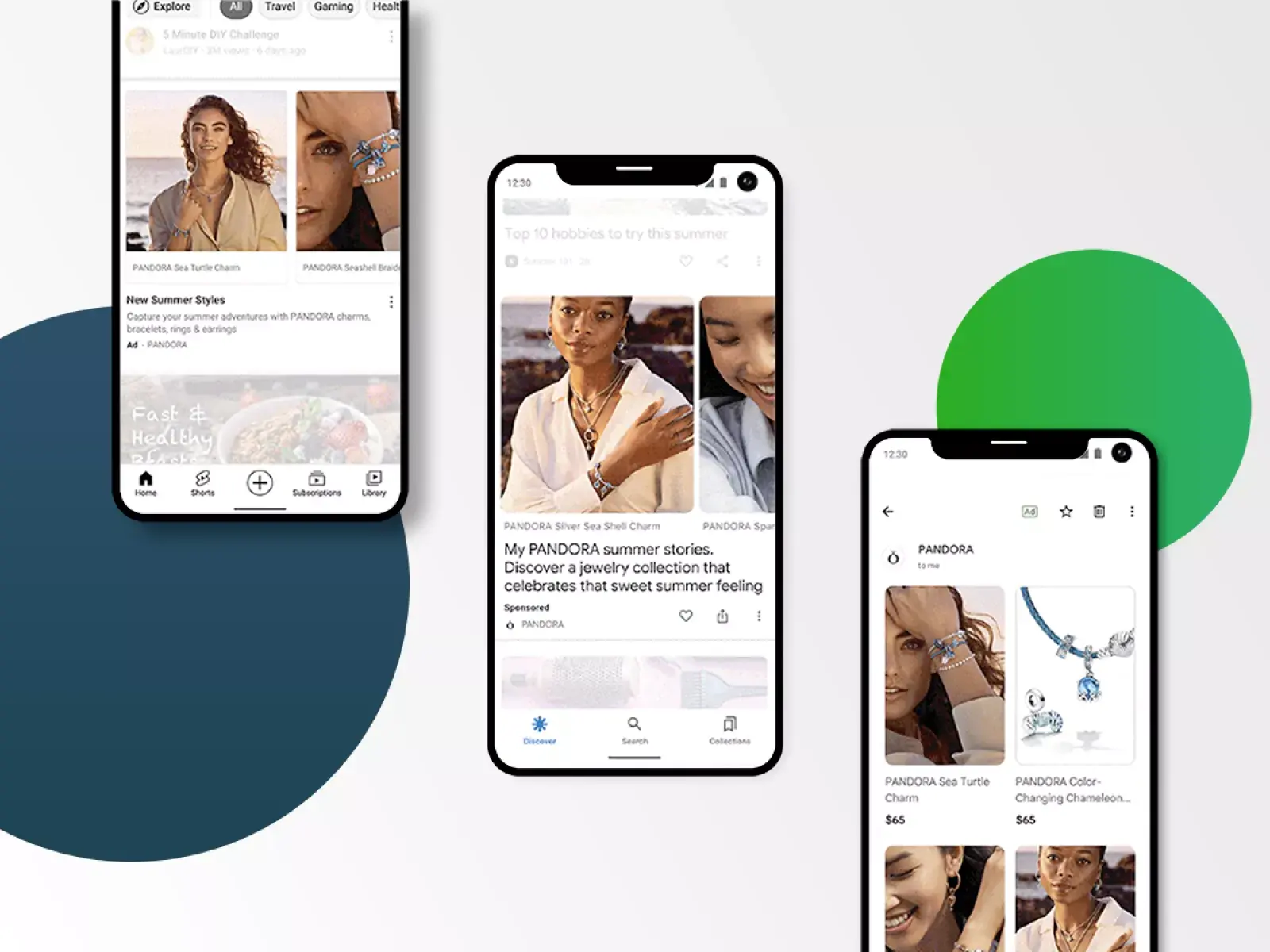
May 29, 2024
Understanding Demand Gen Campaigns: A Beginner’s Guide to Boosting Lead Generation
Demand Generation (Demand Gen) campaigns are designed to create sustained interest and engagement with your brand, making them an essential tool for modern marketers. This blog will explore what makes Demand Gen campaigns unique, how they compare to other types of Google ad campaigns, and the steps you need to take to integrate them into your marketing strategy. 1. Demand Generation vs. Other Google Ad Campaign Types To understand Demand Gen campaigns better, it's useful to compare them to other common Google ad campaign types. a. Demand Generation Campaigns Focus: Long-term engagement and lead nurturing. Objective: Build awareness, generate interest, and guide prospects through the entire buying journey. Content: Rich, educational content like blogs, whitepapers, webinars, and videos. Measurement: Success is measured by engagement metrics, lead quality, and conversion rates over time. b. Search Ads Focus: Immediate response to specific queries. Objective: Capture user intent by targeting specific keywords that potential customers are searching for. Content: Text-based ads that appear on search engine results pages (SERPs). Measurement: Click-through rates (CTR), cost-per-click (CPC), and immediate conversions. c. Display Ads Focus: Broad brand awareness and retargeting. Objective: Reach users while they browse other websites, emphasizing visual engagement. Content: Banner ads, images, and videos shown on Google Display Network. Measurement: Impressions, click-through rates, and conversion rates. d. Video Ads Focus: Engaging and capturing audience attention through video content. Objective: Build brand awareness and drive consideration through visually appealing and informative video content. Content: Video ads on YouTube and other Google partner sites. Measurement: View counts, watch time, and engagement metrics. 2. The Technical Aspects of Demand Generation Demand Generation campaigns involve several technical components that set them apart from other campaign types. a. Targeting and Segmentation Audience Segmentation: Use detailed buyer personas to segment your audience effectively. This allows for personalized content that speaks directly to each segment's needs and pain points. Behavioral Targeting: Target users based on their online behavior, such as pages visited, content consumed, and actions taken on your website. b. Content Strategy Educational Content: Focus on creating valuable content that educates your audience, such as how-to guides, case studies, and industry insights. Multi-Channel Approach: Distribute content across multiple channels, including blogs, social media, email, and video platforms, to ensure broad reach and engagement. c. Marketing Automation Lead Nurturing: Use marketing automation tools to nurture leads through personalized email sequences and targeted content delivery. Scoring and Qualification: Implement lead scoring to prioritize high-quality leads for your sales team, ensuring they focus on the most promising prospects. d. Analytics and Optimization Performance Tracking: Use advanced analytics tools to track the performance of your campaigns. Monitor key metrics such as engagement rates, lead generation, and conversion rates. Continuous Optimization: Regularly analyze data to identify areas for improvement and adjust your strategies accordingly to maximize ROI. 3. Is Demand Generation a New Thing? Demand Generation is not entirely new but has evolved significantly with advancements in digital marketing technologies and strategies. a. Historical Context Traditional Marketing: Historically, marketing efforts focused on immediate sales and short-term gains, with less emphasis on long-term relationship building. Evolution: With the rise of digital marketing, the need for more sophisticated strategies to engage and nurture leads over time became apparent. b. Modern Demand Generation Integration of Technology: Modern Demand Gen leverages advanced technologies like marketing automation, AI, and machine learning to create personalized and scalable marketing efforts. Holistic Approach: It integrates various marketing channels and techniques to provide a seamless and engaging experience throughout the customer journey. Demand Generation campaigns are a powerful tool in the digital marketer's arsenal, designed to build long-term relationships with potential customers and guide them through the entire buying journey. By comparing them to other Google ad campaign types, we can see their unique focus on sustained engagement and lead nurturing. The technical aspects, such as advanced targeting, educational content, and marketing automation, make Demand Gen campaigns particularly effective. For more insights into optimizing your digital paid media strategies, don't miss our blog on "The Future of Digital Paid Media: Top 5 Trends for 2024", in addition to blogs covering topics like "Awareness vs. Conversions" & "Personalized Ads". Incorporating Demand Gen into your marketing strategy can lead to higher-quality leads, improved ROI, and ultimately, more successful marketing outcomes. Start leveraging these powerful campaigns today to boost your lead generation efforts and build lasting relationships with your audience.
Read more...
May 20, 2024
From Print to Pixels: Qatar's Shift in Marketing Strategies
The digital marketing landscape in Qatar has undergone a significant transformation over the past decade. From traditional methods such as print, radio, and TV, the industry has rapidly embraced digital strategies to stay competitive and relevant. This shift has been driven by changing consumer behaviors, technological advancements, and the need for more targeted and measurable marketing efforts. In this blog, we'll explore the evolution of Qatar's digital marketing, comparing what worked in the past with what works now, using the automotive industry as a case study. 1. Traditional Marketing Approaches in Qatar Description: In the early 2000s, marketing in Qatar heavily relied on traditional media. Print ads in newspapers and magazines, radio commercials, and TV spots were the primary channels for reaching consumers. These methods were effective due to the limited media options and the high trust in established media outlets. Key Points: Print Media: Newspapers and magazines were the go-to platforms for advertising. Companies placed full-page ads and inserts to capture the attention of readers. Radio: Radio commercials were popular due to the high listenership during commutes and at home. Television: TV ads were a powerful tool for reaching a broad audience, particularly during prime time slots. Events and Sponsorships: Companies often sponsored local events and sports teams to increase brand visibility and build community relations. 2. The Shift to Digital Marketing Description: As the internet became more accessible, consumer habits began to shift. People started spending more time online, and the importance of digital marketing grew. Social media platforms, search engines, and websites became essential tools for reaching and engaging with target audiences. Key Points: Social Media Marketing: Platforms like Facebook, Instagram, and Twitter offer targeted advertising options that allow businesses to reach specific demographics. Search Engine Optimization (SEO): Improving website visibility on search engines became crucial for attracting organic traffic. Content Marketing: High-quality content, including blogs, videos, and infographics, became key for engaging audiences and building brand authority. Email Marketing: Personalized email campaigns provided a direct line of communication with customers, enhancing relationship building and retention. 3. Case Study: Automotive Industry in Qatar Description: The automotive industry in Qatar provides a clear example of how digital marketing has transformed traditional approaches. Previously, car manufacturers and dealers relied heavily on print ads, TV commercials, and radio spots to promote new models and sales events. Check out the latest episode of Twist's podcast: Host Elie Charbel and guest Karim Fakhri, a renowned automotive journalist and co-founder of Auto Network ME, discuss the evolution of content creation, the electric car industry in the GCC, and the challenges and opportunities in the digital age. Key Points: Digital Showrooms: Automotive companies now use virtual showrooms and interactive websites to showcase their vehicles. This allows potential buyers to explore features and options online before visiting a dealership. Influencer Collaborations: Collaborating with automotive influencers and bloggers has become a popular strategy for reaching car enthusiasts and potential buyers. Social Media Campaigns: Platforms like Instagram and YouTube are used for launching new models, sharing customer testimonials, and engaging with the audience through interactive content. Targeted Ads: Utilizing data-driven advertising on Google and social media platforms allows for precise targeting based on user behavior and preferences. For more insights on other industries, be sure to listen to the podcast's other episodes, which cover a range of topics relevant to digital marketing in Qatar and the wider region. 4. What Worked Then vs. What Works Now Description: The contrast between traditional and digital marketing in Qatar highlights the evolution in strategies and effectiveness. Key Points: Reach and Engagement: Traditional media had broad reach but lacked the engagement and interaction capabilities of digital media. Measurability: Digital marketing offers detailed analytics and performance metrics, enabling businesses to measure ROI and adjust strategies in real-time. Cost-Effectiveness: Digital campaigns can be more cost-effective, offering better targeting options and reducing wasted ad spend. Customer Insights: Digital marketing provides deeper insights into customer behavior and preferences, allowing for more personalized and effective marketing efforts. Conclusion Qatar's digital marketing landscape has evolved significantly, with digital strategies now taking precedence over traditional methods. The automotive industry exemplifies this shift, showcasing how digital tools and platforms can enhance reach, engagement, and effectiveness. As the market continues to evolve, staying updated with the latest trends and technologies will be crucial for success. For more on digital marketing strategies, check out our other blog: "Influencer Marketing Tactics for Events in Qatar + Real-World Example."
Read more...
May 19, 2024
Choosing The Proper Channel of Communication for Saudi Customers
Choosing the right communication channels is crucial for connecting with your ideal customers in Saudi Arabia. With a unique blend of traditional values and modern influences, understanding the preferred methods of communication can significantly enhance your marketing strategy. This blog will explore the most effective communication channels for engaging with Saudi customers, helping your brand build strong and lasting relationships in this vibrant market. 1. Understanding the Saudi Customer Landscape Saudi Arabia's consumer landscape is diverse and dynamic, influenced by both cultural traditions and technological advancements. A. Key Demographics: Age Groups: Young population with a high percentage under 30. Income Levels: Wide range, from middle to high income. Education Levels: Increasing number of college-educated individuals. B. Consumer Behavior: Tech-Savvy: High smartphone and internet penetration. Cultural Values: Strong emphasis on family, religion, and community. C. Communication Preferences: Social Media: High usage of platforms like WhatsApp, Twitter, Instagram, and Snapchat. Direct Communication: Preference for personal interactions through messaging apps. 2. Social Media: The Leading Communication Channel Social media is a dominant force in Saudi Arabia, with millions of active users across various platforms. A. Top Platforms: WhatsApp: Most popular for daily communication. X (Twitter): Widely used for news and public discussions. Instagram: Popular for visual content and influencer marketing. Snapchat: Preferred by younger demographics for quick, visual interactions. B. Effective Strategies: Engaging Content: Create culturally relevant and visually appealing content. Influencer Collaborations: Partner with local influencers to increase reach and credibility. Interactive Campaigns: Use polls, Q&A sessions, and live videos to engage with your audience. 3. Messaging Apps: Personal and Direct Communication Messaging apps are integral to daily life in Saudi Arabia, offering a direct line to customers. A. Key Platforms: WhatsApp: The go-to app for personal and business communication. Telegram: Gaining popularity for its security features. B. Best Practices: Personalized Messages: Craft messages that address the recipient by name and reflect their interests. Timely Responses: Ensure quick and responsive communication to build trust. Broadcast Lists: Use broadcast lists for announcements while keeping messages relevant and concise. 4. Email: Professional and Formal Communication Email remains a vital communication channel for more formal interactions and detailed information sharing. A. Usage: Business Communications: Preferred for official correspondences and detailed proposals. Newsletters: Effective for regular updates and promotions. B. Tips for Success: Professional Tone: Maintain a formal and respectful tone in emails. Clear Subject Lines: Use clear and concise subject lines to increase open rates. Valuable Content: Provide useful and relevant information to keep readers engaged. 5. Traditional Media: Bridging the Old and the New While digital channels dominate, traditional media still holds a significant place in Saudi Arabia. A. Main Channels: Television: Popular for reaching a wide audience, especially for major announcements and advertisements. Radio: Effective for targeting specific regions and demographics. Print Media: Newspapers and magazines remain relevant for certain segments. B. Integration Strategies: Cross-Channel Campaigns: Combine digital and traditional media for a comprehensive approach. Localized Content: Tailor content to fit the preferences of traditional media audiences. Choosing the right communication channels is essential for resonating with your ideal customers in Saudi Arabia. By understanding the landscape and leveraging social media, messaging apps, email, and traditional media effectively, your brand can build meaningful connections and drive engagement. For more insights on the Saudi market, check out our blog on E-commerce in Saudi Arabia: Key Trends to Watch in 2024. Adapting to these preferences will ensure that your marketing efforts are both impactful and culturally sensitive, paving the way for sustained success in this vibrant market.
Read more...
May 16, 2024
Out-of-the-Box Ad Campaigns: How Top Brands Captivate and Convert
Creating an unforgettable ad campaign requires thinking outside the box and connecting with audiences in unique and compelling ways. In today’s saturated market, brands that innovate and captivate their audience stand out. Here are some stellar examples of out-of-the-box ad campaigns from top brands, illustrating how creativity, emotional resonance, and effective use of social media can convert casual viewers into loyal customers. 1. Music Feels Better by JBL Capturing the Physical Sensation of Music JBL’s "Music Feels Better" campaign brilliantly captures the physical sensation of listening to high-quality sound. The campaign features a simple yet powerful visual: a close-up photo of goosebumps on a person's arm, vividly illustrating the emotional and physical response to music. This striking image conveys JBL’s brand promise of delivering immersive audio experiences. Key Elements: Visual Impact: The goosebumps photo immediately grabs attention and communicates the message without needing words. Emotional Connection: By focusing on the physical reaction to music, JBL connects with the audience on an emotional level. Simplicity: The minimalistic approach enhances the impact, making the message clear and memorable. 2. Real Beauty Sketches by Dove Redefining Beauty Standards Dove’s "Real Beauty Sketches" campaign is a powerful commentary on self-perception. The brand hired a forensic artist to draw women based on their own descriptions and then based on descriptions from strangers. The stark difference between the two sketches highlighted how women often undervalue their own beauty. Key Elements: Innovative Approach: Using forensic sketches to illustrate self-perception was unique and impactful. Emotional Resonance: The campaign struck a chord with viewers, fostering a positive message about self-esteem. Viral Potential: The compelling concept encouraged sharing on social media, amplifying its reach. 3. Share a Coke by Coca-Cola Personalized Marketing Coca-Cola’s "Share a Coke" campaign took personalization to new heights by printing popular names on bottles and cans. This simple yet effective strategy encouraged customers to find bottles with their names and share them with friends, creating a personal connection with the brand. Key Elements: Personalization: Customizing products with individual names made each purchase feel unique. Social Engagement: Encouraging customers to share their personalized Coke on social media extended the campaign’s reach. Memorable Experience: The personal touch created memorable experiences that resonated with customers. 4. The Man Your Man Could Smell Like by Old Spice Using Humor to Revitalize a Brand Old Spice revitalized its brand with "The Man Your Man Could Smell Like" campaign, featuring humorous and over-the-top commercials. The witty and memorable ads appealed to both men and women, significantly increasing brand awareness and engagement. Key Elements: Humor: The use of humor made the ads entertaining and shareable. Broad Appeal: The campaign resonated with a wide audience, including both men and women. Brand Reinvention: The fresh and funny approach helped reposition Old Spice as a modern and relevant brand. Conclusion These innovative ad campaigns highlight the importance of creativity, emotional connection, and effective use of social media in capturing and converting audiences. By thinking outside the box, these brands not only grabbed attention but also built lasting connections with their customers. For more insights on branding and design, check out our blog on 5 Crucial Mistakes to Avoid in Branding and Design. Additionally, explore our other popular articles like 7 Essential Steps to Create a Visual Identity Beyond Just a Logo and 10 Rebranding Ideas That Will Transform Your Business Image for more valuable tips and strategies.
Read more...
May 15, 2024
The Green Wave: How Sustainability is Becoming the Biggest Sell
In today’s market, sustainability is no longer just a buzzword—it’s a business imperative. Brands across the globe are realizing that incorporating green practices isn’t just good for the planet; it’s also a powerful marketing strategy that resonates deeply with consumers. 1. The Rise of Eco-Conscious Consumers The Growing Demand for Green Awareness and Expectations: Consumers are more aware than ever about environmental issues and expect brands to take action. Purchasing Power: Studies show that a significant percentage of consumers are willing to pay more for sustainable products. Brand Loyalty: Eco-friendly practices are increasingly influencing where and how consumers decide to spend their money. The Impact on Brands Competitive Advantage: Brands that commit to sustainability can differentiate themselves in crowded markets. Reputation Management: Sustainable practices help improve a brand’s image and credibility, which is crucial for long-term success. 2. Integrating Sustainability into Marketing Strategies Creating a Green Brand Image Product Design and Packaging: Utilize recycled materials or sustainable production methods. Eco-friendly Campaigns: Launch campaigns that highlight your brand’s commitment to the environment. Digital Marketing and Sustainability Content Marketing: Share stories of your sustainability initiatives on social media and blogs. Targeted Advertising: Use digital platforms to target consumers who value sustainability. 3. Case Studies of Success Brands Leading the Way Retail Giants: Some of the world’s largest retailers have seen substantial growth by integrating eco-friendly practices into their operations. Startups and Innovators: Smaller brands are making a big impact with unique, sustainable products that cater to niche markets. Learning from the Leaders Best Practices: What can other brands learn from these success stories? Avoiding Greenwashing: It’s important to back up sustainable claims with genuine action to maintain consumer trust. Sustainability is more than just an ethical choice; it's a strategic one that can elevate your brand and engage a growing segment of environmentally aware consumers. For further insights, don’t forget to check out our blog on "Key Strategies to Boost Your Brand's Public Relations Event Management." Also, learn how effective communication plays a role in brand management with our post on "Why Your Brand Needs a Powerful Story Now More Than Ever."
Read more...
May 14, 2024
Influencer Marketing Tactics for Events in Qatar + Real-World Example
Leveraging influencers has become a crucial strategy for brands aiming to enhance event awareness and engagement. This blog explores how Qatari brands can maximize their event promotion through effective influencer marketing strategies, drawing on A2Z Media's successful campaign for Al Hallab's new branch opening. 1. Understanding the Impact of Influencer Marketing on Event Promotion Influencer marketing harnesses the power of popular personalities to amplify your event's visibility and appeal. For brands in Qatar, where digital engagement is highly valued, this strategy offers a direct path to potential customers' screens and hearts. Key Advantages: Extended Reach: Influencers bring your event to a larger, more engaged audience. Enhanced Credibility: Collaboration with respected figures boosts your brand's trustworthiness. Targeted Impact: Influencers attract specific demographic groups, aligning with your event's target audience. 2. Case Study: Al Hallab’s New Branch Opening A2Z Media orchestrated an influencer marketing campaign that significantly heightened the visibility and engagement for Al Hallab's launch. Here’s how we tackled various challenges: Challenges and Solutions: Diverse Platform Engagement: Tailored content was created for Instagram, TikTok, and Snapchat to resonate uniquely across these platforms. Measuring Effectiveness: We implemented tracking processes to assess and quantify the campaign's direct impact on customer visits and interactions. Content Saturation: Our strategy included distinct, standout messaging that pierced through the digital noise in the food sector. Impact: Increased Brand Visibility: Notable uplift in engagement metrics such as Instagram impressions and likes, and Snapchat interactions. Enhanced Audience Engagement: High interaction rates were seen, like @dawoodyouniss’s posts, which received an average of 610 likes on Instagram. 3. Best Practices for Influencer Engagement in Qatar To replicate the success seen in the Al Hallab campaign, Qatari brands should consider these best practices for engaging with influencers: Strategies for Success: Selecting the Right Influencers: Focus on influencers whose audience demographics align closely with your target market. Creating Compelling Content: Work collaboratively with influencers to produce content that feels authentic and resonates with both your brand ethos and the influencers’ style. Monitoring and Adjusting: Continuously track performance metrics and be ready to tweak your strategy for optimal engagement. Conclusion Influencer marketing, when executed with precision and creativity, can transform promotional strategies for events in Qatar. By understanding the landscape, learning from successful case studies like Al Hallab, and applying industry best practices, Qatari brands can achieve remarkable success in their event marketing efforts. Let A2Z Media guide your next campaign to capture and engage your ideal audience effectively.
Read more...
May 13, 2024
Scaling Success: Lessons from Canva’s User-Centric Business Model
Canva's journey from a simple idea in a university lecture hall to a multi-billion-dollar company is not just inspiring but also a testament to the power of user-centric design in filling industry gaps. This blog will delve into how Canva identified and capitalized on a significant market need and how similar strategies can be implemented by businesses in the GCC to enhance their growth and efficiency. 1. The Genesis of Canva A. Identifying the Gap: Complexity in Design Software: Before Canva, professional design software was not only expensive but also complicated for the average user. Canva’s co-founder Melanie Perkins saw an opportunity to simplify this process, making design accessible to everyone. Rapid Prototyping: Starting with an online school yearbook design tool, Perkins tested her basic idea and iteratively developed it into what became Canva. B. Strategic Growth: Early Challenges: The initial challenge was convincing investors of the potential of a design tool aimed at non-professionals. Persistence and a clear vision eventually secured their first round of funding. Global Expansion: From its roots in Australia, Canva has expanded worldwide by adapting to various market needs and continuously enhancing user experience. 2. Lessons from Canva’s Market Strategy A. User-Centric Development: Simplicity and Accessibility: By focusing on a drag-and-drop interface, Canva made complex design tasks simple, attracting users from all skill levels. Consistent Feedback Integration: Regular updates based on user feedback helped Canva stay relevant and user-friendly, driving user retention and growth. B. Effective Monetization: Freemium Model: Canva’s free model attracted a large user base, while premium features catered to more advanced needs, creating a steady revenue stream. Diverse Product Offerings: Over time, Canva expanded its product range to include business solutions like Canva for Enterprise, addressing a broader market segment. 3. Canva’s Impact on the Design Industry Filling the Unnoticed Gap: Democratizing Design: Canva disrupted the graphic design software industry by democratizing access to design tools, allowing anyone to create professional-grade graphics without formal training. Influencing Industry Standards: The success of Canva has pushed other software companies to simplify their interfaces and make design more accessible. Conclusion: Implementing Canva’s Strategies in Your Business Canva’s journey underscores the importance of understanding customer pain points and innovatively addressing them. At A2Z Media, we believe in adopting a similar user-centric approach in our marketing consultancy services to help businesses in the GCC optimize their strategies effectively. By focusing on ease of use, continuous feedback, and strategic growth, we can help your business capture and engage a broader audience. For deeper insights into adapting to regional marketing trends, check out our blogs: Emerging Digital Marketing Trends in GCC: What You Need to Know and Niche Marketing: Strategies for Targeting Specific Audiences. Let’s take a leaf out of Canva’s book and scale your business to new heights with A2Z Media’s expert consultancy.
Read more...
May 12, 2024
Pay Now or Rank Later: The Strategic Decision of SEM vs. SEO
Making the right choice between Search Engine Marketing (SEM) and Search Engine Optimization (SEO) can significantly influence the visibility and success of your business online. Both strategies offer unique advantages and can be pivotal in shaping your digital footprint. This blog delves into the strategic considerations of SEM and SEO, helping you decide whether to pay now for immediate visibility or invest in your organic search ranking for future gains. 1. Understanding SEM and SEO What is SEM? Immediate Visibility: SEM involves paid advertising, which can immediately place your brand at the top of search engine results pages (SERPs). Cost Per Click (CPC): You pay for every click your ad receives, which means costs can add up, but so can immediate leads. What is SEO? Organic Growth: SEO focuses on optimizing your website to rank higher in search results naturally over time. Sustained Results: Effective SEO may take time to show results, but these can be more stable and cost-effective in the long run. 2. Cost Implications and ROI Comparing Costs SEM can be expensive in competitive industries where CPCs are high, but it's excellent for quick returns. SEO requires a sustained budget for content creation and site optimization but avoids ongoing click-based costs. Evaluating ROI SEM: Quick setup and immediate data on performance make SEM ideal for short-term campaigns. SEO: Long-term data accumulation and growing ROI as your site's authority strengthens. 3. Strategic Integration of SEM and SEO Complementary Strategies Use SEM to gain visibility for new product launches or promotions. Leverage SEO to build a robust foundation for organic traffic. Tactical Deployment Short-term goals: Focus on SEM for quick results. Long-term branding: Invest in SEO to build brand reputation and authority. 4. Navigating Algorithm Updates and Market Trends Adapting to Changes SEM campaigns can be quickly adjusted to align with new algorithms and market shifts. SEO strategies require ongoing adjustments to content and keywords based on algorithm updates. Staying Ahead Keep abreast of search engine updates to tweak your SEM bids and SEO strategies accordingly. Regularly update content and keywords to maintain both SEM and SEO effectiveness. 5. SEO and SEM: The Decision Matrix When to Choose SEM When immediate results are necessary. To test new markets or products quickly. When to Choose SEO Building a long-term web presence. When aiming for high ROI over time with lower ongoing costs. Conclusion Choosing between SEM and SEO doesn't have to be an either/or proposition. Many successful digital marketing strategies integrate both, using SEM for immediate impact and SEO for sustainable growth. As you refine your digital marketing approach, consider how each can serve your immediate needs and long-term goals. Dive deeper into effective SEO strategies by checking out our comprehensive guides, "Optimizing for Search: Basic SEO Guide" and "Beyond Basics: Customized SEO Techniques for Strategic Growth" for more insights on elevating your online presence.
Read more...
May 9, 2024
Riding the New Wave: 5 Common Traits of Successful CGI Videos
CGI (Computer-Generated Imagery) videos have become the go-to tool for marketers seeking to engage their audiences in creative and impactful ways. CGI videos allow brands to tell their stories with stunning visuals, immersive storytelling, and imaginative concepts that traditional videography can't match. At A2Z Media, we recognize the importance of staying ahead in the marketing game. With CGI videos riding a new wave of popularity, let's dive into the five common traits of successful CGI videos that will elevate your brand's marketing strategy. 1. Immersive Storytelling One of the defining features of successful CGI videos is their ability to captivate audiences through immersive storytelling. Key Elements of Immersive Storytelling: Compelling Narrative Arc: CGI videos are crafted around a strong narrative that guides viewers through a journey, evoking emotions and creating memorable experiences. Rich World-Building: CGI allows marketers to build entirely new worlds that reflect brand values and appeal to target audiences. Visual Symbolism: Subtle visual cues and symbols strengthen the story and communicate deeper messages to the audience. How Immersive Storytelling Benefits Your Brand: Increases audience retention and engagement Enhances brand perception and loyalty Creates emotional connections with the audience 2. High-Quality Visuals Visual quality is paramount in CGI videos. Lifelike animations and intricate designs are what set them apart. Essential Features of High-Quality Visuals: Stunning Graphics: The use of high-resolution textures, shading, and lighting techniques makes CGI videos visually appealing. Seamless Animation: Smooth, realistic animation ensures characters and objects move naturally within the CGI environment. Attention to Detail: From reflections in water to the texture of surfaces, attention to detail adds realism and depth. Impact of High-Quality Visuals: Conveys professionalism and brand credibility Captivates viewers, reducing drop-off rates Enhances the storytelling experience For a deeper understanding of high-quality videography basics, check out our blog, "Shoot Like a Pro: Quick Videography Basics for Impactful Brand Stories." 3. Brand Consistency Consistency in tone, style, and messaging is crucial for reinforcing brand identity through CGI videos. Elements of Brand Consistency: Visual Style: Maintaining a consistent visual aesthetic across all CGI videos reinforces brand recognition. Message Alignment: Ensuring that the video's message aligns with your brand's core values and voice creates a cohesive brand story. Logo and Color Scheme: Incorporating your brand logo and sticking to your brand's color palette strengthens brand recall. Benefits of Brand Consistency: Builds trust and credibility with your audience Increases brand loyalty and advocacy Differentiates your brand in a competitive market 4. Audience-Centric Approach Successful CGI videos are carefully tailored to the preferences, needs, and behaviors of the target audience. Key Aspects of an Audience-Centric Approach: Demographic Targeting: Creating CGI videos that appeal to specific age groups, genders, or interests ensures higher engagement. Cultural Relevance: Incorporating elements that resonate with your audience's culture helps establish a deeper connection. Feedback Incorporation: Leveraging audience feedback to refine video content leads to more relatable and impactful videos. Why an Audience-Centric Approach Works: Increases viewer relatability and engagement Drives higher click-through and conversion rates Enhances customer satisfaction and loyalty To explore personalized video marketing further, read our blog, "5 Steps to Creating Successful Personalized Video Content." 5. Clear Call-to-Action (CTA) A well-crafted CGI video without a strong call-to-action is like a map without a destination. Traits of a Clear CTA: Specific and Actionable: Use clear language to specify what action the audience should take, such as "Subscribe Now" or "Learn More." Relevant to the Content: The CTA should relate directly to the video's theme or story, providing a logical next step for viewers. Visually Distinct: Make the CTA stand out with bold text, contrasting colors, or animation effects. Benefits of a Clear CTA: Guides viewers toward your desired conversion goal Increases the likelihood of audience engagement Reinforces your brand's marketing message Conclusion As CGI videos continue to redefine the marketing landscape, understanding these five common traits will empower your brand to harness the new wave effectively. Immersive storytelling, high-quality visuals, brand consistency, an audience-centric approach, and a clear call-to-action will help you create compelling CGI videos that resonate with your target audience. If you're ready to incorporate CGI videos into your marketing strategy, reach out to us at A2Z Media. Let's ride the new wave together and create impactful marketing campaigns that leave a lasting impression.
Read more...
May 8, 2024
Awareness vs. Conversions: How Are You Setting Your Campaign Objectives?
For top marketing directors, setting clear campaign objectives often involves striking a balance between building brand awareness and driving conversions. With each phase of the marketing funnel requiring a unique approach, understanding the distinction between awareness and conversion objectives is key to developing a strategic and results-driven marketing plan. In this blog, we'll explore how marketing directors can set effective campaign objectives that align with their business goals, from awareness to conversion and beyond. 1. Understanding the Difference: Awareness vs. Conversion Objectives Before diving into the specifics of setting campaign objectives, it's essential to clarify the difference between awareness and conversion goals. Both play a vital role in a comprehensive marketing strategy, but each requires different approaches. A. Awareness Objectives Campaigns focusing on awareness are designed to build recognition and familiarity with your brand. They sit at the top of the funnel and are crucial for attracting new potential customers. Key Metrics: Reach Impressions Brand recall Engagement (likes, shares, comments) Tactics: Display ads Social media advertising Influencer marketing Public relations and press releases B. Conversion Objectives Conversion-focused campaigns target customers further down the funnel who are ready to make a purchase or engage with your brand directly. Key Metrics: Click-through rate (CTR) Conversion rate Return on ad spend (ROAS) Cost per acquisition (CPA) Tactics: Search engine marketing (SEM) Retargeting ads Email marketing campaigns Landing page optimization 2. Setting Campaign Objectives: Aligning with Business Goals Top marketing directors know that campaign objectives must align with broader business goals to drive meaningful results. Here’s a step-by-step approach to setting effective campaign objectives: A. Define Your Primary Business Goal Increase brand awareness Generate leads Drive e-commerce sales Boost customer retention B. Set Specific, Measurable Objectives Awareness Objectives: Increase brand reach by 20% in the next quarter Improve brand recall by 15% within six months Conversion Objectives: Achieve a 10% increase in conversion rates over the next campaign Decrease cost per acquisition by 5% in Q3 C. Match Objectives to Campaign Phases Top of Funnel (Awareness): Focus on expanding reach and improving brand perception Middle of Funnel (Consideration): Increase engagement and nurture leads Bottom of Funnel (Conversion): Convert leads into customers D. Choose Relevant KPIs Awareness: Impressions, Reach, Brand Lift Conversion: CTR, Conversion Rate, ROAS 3. Campaign Objectives for Each Phase of the Customer Journey Each phase of the customer journey requires unique campaign objectives to guide potential customers from initial awareness to brand advocacy. Phase 1: Awareness (Top of Funnel) Objective: Build brand recognition and increase audience reach Tactics: Social media brand awareness campaigns Influencer partnerships Display advertising Phase 2: Consideration (Middle of Funnel) Objective: Educate potential customers and nurture leads Tactics: Content marketing (blogs, whitepapers, case studies) Webinars and virtual events Email marketing drip campaigns Phase 3: Conversion (Bottom of Funnel) Objective: Convert leads into customers and boost sales Tactics: Retargeting ads Search engine marketing (Google Ads, Bing Ads) Promotional offers and incentives Phase 4: Retention (Post-Purchase Experience) Objective: Retain customers and encourage repeat purchases Tactics: Customer loyalty programs Personalized email marketing Social media community engagement 4. Common Pitfalls in Setting Campaign Objectives While setting campaign objectives may seem straightforward, there are common pitfalls that even top marketing directors must avoid: A. Setting Unrealistic Objectives Overestimating reach or conversion rates Ignoring market competition B. Ignoring the Customer Journey Focusing solely on conversions without nurturing leads Neglecting post-purchase engagement C. Not Measuring Progress Regularly Failing to track KPIs throughout the campaign Not adapting strategy based on performance data 5. Conclusion: Aligning Campaign Objectives for Success Effective campaign objectives are not just about choosing between awareness and conversions; they are about aligning your marketing efforts with broader business goals. By understanding the distinct objectives for each phase of the customer journey, marketing directors can build comprehensive campaigns that deliver results. For more insights on marketing strategies and future trends, don't miss our blog post, "The Future of Digital Ads: Top 5 Trends for 2024," and explore other valuable content like "Reaching Your Target Audience: The Key to Advertising Success" to stay ahead in the digital marketing game. Ready to align your marketing objectives with your business goals? Contact A2Z Media for comprehensive marketing consultancy and agency solutions that will elevate your campaign success from awareness to conversion.
Read more...
May 7, 2024
The Role of Dynamic Video Ads in Captivating Gen Z in the MENA Region
Marketing to Gen Z in the MENA region poses a unique challenge, as this digitally native generation is known for its high expectations and rapidly changing media habits. Born between the late 1990s and early 2010s, Gen Z prioritizes personalized, authentic, and entertaining content. This is where dynamic video ads come into play, offering brands an opportunity to captivate this generation with engaging, personalized advertising. A2Z Media understands the importance of reaching this tech-savvy generation. In this blog, we'll explore the role of dynamic video ads in captivating Gen Z in the MENA region and how brands can leverage this format to build lasting connections. We'll also provide practical strategies, backed by insights from A2Z Media's marketing plan, to help you create campaigns that resonate. 1. Understanding Gen Z in the MENA Region Key Characteristics of Gen Z Gen Z is a generation marked by its diversity, digital fluency, and desire for authenticity. In the MENA region, these traits are amplified by unique cultural dynamics. Digital Natives: Grew up with smartphones and social media. Personalization Seekers: Prefer content tailored to their preferences. Socially Conscious: Support brands aligned with their values. Short Attention Spans: Prefer bite-sized, entertaining content. Media Consumption Habits Mobile-Centric: Majority consume content on mobile devices. Video Lovers: YouTube, TikTok, and Instagram Reels are highly popular. Streaming Services: Increasingly favor Netflix, Shahid, and other platforms. Podcasts: A growing interest in podcasts, making MENA a hotspot for listeners. 2. The Power of Dynamic Video Ads What Are Dynamic Video Ads? Dynamic video ads are personalized video ads tailored in real-time based on user data like demographics, behavior, and preferences. This makes them highly relevant and engaging. Benefits of Dynamic Video Ads Hyper-Personalization: Ads can be customized based on location, interests, and behavior. Increased Engagement: More relevant content leads to higher engagement rates. Real-Time Optimization: Adjust ad creatives dynamically based on performance data. Storytelling Opportunities: Create a cohesive brand story that adapts to the viewer. Why They Work for Gen Z Authenticity: Personalization resonates with Gen Z's desire for authentic content. Interactivity: Dynamic elements make ads interactive and engaging. Snackable Content: Short, tailored videos appeal to Gen Z's attention span. 3. Strategies for Effective Dynamic Video Ads 1. Leverage Data Insights Demographics and Behavior: Utilize demographic data and browsing behavior. Purchase History: Tailor ads based on past purchases and abandoned carts. Content Preferences: Create content aligned with what Gen Z enjoys. 2. Tell a Consistent Story Create Narrative Arcs: Develop storylines that unfold over a series of videos. Adapt in Real-Time: Adjust messaging and visuals based on viewer interactions. Highlight Brand Values: Align the story with values that resonate with Gen Z. 3. Optimize for Mobile Vertical Format: Use vertical video formats for platforms like TikTok and Instagram. Short and Sweet: Keep videos under 15 seconds to capture attention. Captions and Visuals: Ensure clarity with on-screen text and visuals. 4. Monitor and Adjust A/B Testing: Test different creatives to see what resonates best. Performance Metrics: Track engagement, click-through rates, and conversions. Continuous Improvements: Refine the ads based on real-time performance data. 4. Creating Gen Z-Focused Campaigns 1. Cultural Nuances in MENA Language Variants: Create ads in both Arabic and English to reach a wider audience. Local Influences: Incorporate regional trends, holidays, and events. Relatability: Showcase relatable situations for Gen Z in the MENA region. 2. Collaborate with Influencers Micro-Influencers: Partner with niche influencers for targeted campaigns. Branded Content: Co-create engaging content that aligns with Gen Z preferences. Authenticity Factor: Ensure influencer-brand collaborations feel genuine. 3. Use Multiple Channels Social Media Platforms: Distribute dynamic video ads across TikTok, Instagram, and YouTube. Streaming Services: Consider platforms like Shahid for wider reach. Podcasts: Integrate audio ads and shoutouts into popular podcasts. Dynamic video ads are a powerful tool for brands seeking to captivate Gen Z in the MENA region. By understanding this generation's unique characteristics, leveraging data insights, and creating tailored content, marketers can build stronger connections with Gen Z audiences. Brands must remain agile, authentic, and data-driven to stay ahead in this fast-evolving landscape. For more insights on marketing trends and strategies in the MENA region, check out our blog, How Has MENA Become a Hotspot for Podcast Listeners?. Interested in creating impactful dynamic video ads that resonate with Gen Z? A2Z Media can help you design fully integrated campaigns. Get in touch today!
Read more...
May 6, 2024
Are Emails Obsolete Now? Should You Shift to LinkedIn Sponsored Messages?
Communication in the digital age evolves rapidly, and with it, the tools and strategies we use to connect with our audience. While email has long been a staple in marketing campaigns, the rise of social media platforms like LinkedIn has sparked a conversation about the effectiveness of traditional email marketing. In this article, we'll explore whether emails are becoming obsolete and whether shifting to LinkedIn Sponsored Messages is a viable alternative for modern marketing strategies. 1. The Case for Email Marketing: Email marketing remains a powerful tool for reaching your audience, and here's why: Wide Reach: With billions of email users worldwide, email offers unparalleled reach compared to other communication channels. Personalization: Emails allow for highly personalized content tailored to individual recipients, increasing engagement and conversion rates. Automation: Automation tools streamline the process of sending targeted emails based on customer behavior, saving time and resources. 2. The Limitations of Email Marketing: However, despite its strengths, email marketing does have its limitations: Inbox Clutter: With the average person receiving hundreds of emails per day, standing out in a crowded inbox can be challenging. Declining Open Rates: Over time, email open rates have declined, indicating that users are becoming more selective about which emails they engage with. Spam Filters: Strict spam filters may prevent your emails from reaching the intended recipients, reducing the effectiveness of your campaigns. 3. The Emergence of LinkedIn Sponsored Messages: LinkedIn Sponsored Messages offer a unique approach to reaching professionals on the world's largest professional network: Targeted Audience: LinkedIn allows for precise targeting based on job title, industry, and other professional criteria, ensuring your message reaches the right audience. High Engagement: LinkedIn users are actively seeking professional connections and opportunities, making them more receptive to relevant messages. Interactive Content: Sponsored Messages support various interactive content formats, such as videos and polls, enhancing engagement and driving conversions. In conclusion, while email marketing remains a valuable tool in the marketer's arsenal, the rise of platforms like LinkedIn offers new opportunities to connect with a targeted professional audience. Rather than viewing email and LinkedIn Sponsored Messages as competing channels, savvy marketers should consider leveraging both to maximize their reach and engagement. To learn more about modern messaging strategies, check out our blog on "The Top 10 Benefits of SMS Marketing in Modern Messaging Campaigns."
Read more...
April 30, 2024
Data-Driven Marketing: How to Effectively Utilize 1st, 2nd, and 3rd Party Data
In today's rapidly evolving market, understanding and effectively utilizing different data types is crucial for shaping powerful marketing strategies. Whether it's 1st, 2nd, or 3rd party data, each type offers unique insights that can dramatically enhance how businesses engage with their target audiences. In this blog, we'll explore the distinct features of 1st, 2nd, and 3rd party data and provide actionable tips on how to harness their potential effectively. 1. Understanding Your Data Sources 1st Party Data: The Gold Standard Definition: Data collected directly from your customers through interactions with your brand (website visits, purchases, customer feedback). Advantages: High accuracy and relevancy. Complete ownership, offering more control over privacy. Usage Tips: Tailor marketing campaigns to customer preferences based on past purchase behavior. Enhance customer experiences through personalized communications. 2nd Party Data: A Trusted Partnership Definition: Data that you obtain directly from another organization that has collected it firsthand. Advantages: Often more specific and relevant than 3rd party data since it comes from a similar audience demographic. Greater transparency about the source and collection methods. Usage Tips: Identify new customer segments by accessing data that complements your own. Collaborate on co-marketing campaigns to expand reach. 3rd Party Data: The Broad Net Definition: Data purchased from outside sources that were not collected directly from your customers. Advantages: Access to a vast amount of data that can fill in gaps in your data. Useful for broad market trends and demographic insights. Usage Tips: Use to enhance understanding of customer behavior across different industries. Integrate with 1st party data to refine targeting strategies. 2. Strategic Application of Data in Marketing The integration of different data types can unlock profound insights into customer behavior and market dynamics. By strategically applying this data, businesses can make more informed decisions that align with current trends and customer expectations. Enhancing Customer Profiles Combine data types to develop comprehensive customer profiles. Use insights to drive content personalization and product recommendations. Optimizing Marketing Campaigns Analyze combined data to understand effectiveness across different channels. Adjust strategies in real-time to improve engagement and conversion rates. Conclusion Effectively using 1st, 2nd, and 3rd party data not only enhances your marketing strategies but also strengthens customer relationships through personalized experiences. As you continue to navigate the complexities of data-driven marketing, consider revisiting our blog on The Top Strategies to Overcome Challenges of CRM in The Middle East for more insights into integrating these practices within your CRM strategies. At A2Z Media, we are committed to helping you leverage your data to its fullest potential, ensuring your marketing efforts are as impactful as possible.
Read more...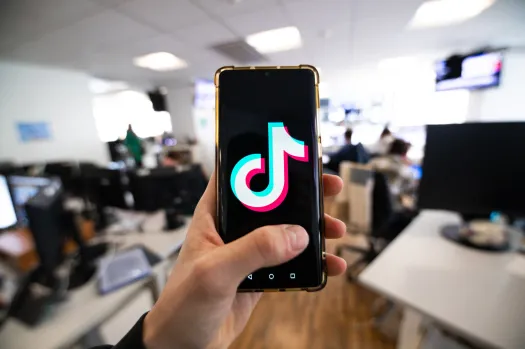
April 29, 2024
3 Lessons Learned from the TikTok Ban for Marketing Directors
In the swiftly evolving digital landscape, the recent TikTok ban has sent ripples across the global marketing community. For marketing directors, especially in dynamic regions like the Middle East, understanding the implications of such regulatory actions is crucial. This blog delves into the key lessons marketing directors can learn from the TikTok ban, aiding in strategic planning and risk management for future digital marketing initiatives. 1. Reassessing Social Media Dependency The Dangers of Over-Reliance: Platform Risk Assessment: Evaluate the risks associated with heavy reliance on single platforms. Diversification Strategies: Explore alternatives and diversify your social media portfolio to mitigate risks. Crisis Preparedness: Develop a robust crisis management plan that includes potential regulatory changes affecting key marketing platforms. 2. Agile Adaptation to Regulatory Changes Strategies for Swift Adaptation: Real-Time Monitoring: Implement tools and practices for real-time monitoring of regulatory developments. Agile Marketing Frameworks: Adapt marketing strategies quickly and efficiently to comply with new regulations. Stakeholder Communication: Maintain transparent communication with stakeholders about changes and strategies. 3. Enhancing Digital Resilience Building a Resilient Marketing Strategy: Technology Utilization: Leverage technology to enhance flexibility and responsiveness. Skill Development: Invest in training your team to handle digital transitions and regulatory challenges. Partnership Building: Forge relationships with tech companies and regulatory experts to stay ahead of changes. Conclusion: The TikTok ban serves as a potent reminder of the volatile nature of digital marketing landscapes. For marketing directors, the key takeaway is to enhance adaptability, diversify marketing efforts, and reinforce digital resilience. By learning from these disruptions, you can safeguard your marketing strategies against future uncertainties. For further insights into adapting your social media strategies, don't miss our detailed analysis in "Social Media Marketing Trends to Watch Out for in 2024."
Read more...
April 28, 2024
The Sky's the Limit: The Uses of Aerial Photography in Real Estate Marketing
In the competitive world of real estate marketing, standing out is paramount. Aerial photography has emerged as a game-changer, offering a fresh perspective that captivates potential buyers. This blog explores how aerial photography can elevate your real estate listings and why it should be a key component of your marketing strategy. For further insights on improving visual content, don’t miss our article on "3 Essential Product Photography Ideas for Your eCommerce Strategy". 1. Enhancing Property Visuals Why Aerial Photography Matters in Real Estate Comprehensive Property Views: Aerial photography provides potential buyers with a bird’s-eye view of the property, offering a comprehensive overview that ground-level photos simply cannot match. Highlighting Property Features: Use aerial shots to showcase large estates, beautiful landscaping, or proximity to desirable amenities like parks and water bodies. Attracting More Viewers: Listings featuring aerial images tend to attract more views and shares, increasing the chances of a quicker sale. 2. Boosting Marketing Impact Using Aerial Photos to Enhance Marketing Materials Brochures and Flyers: Include aerial images in printed marketing materials to create an immediate visual impact that captures attention. Online Listings: Aerial photographs make online real estate listings pop. They provide a unique perspective that can help your listings stand out in crowded digital platforms. Social Media Campaigns: Leverage aerial photos in marketing to generate buzz and engagement. They are particularly effective on visual platforms like Instagram and Pinterest. 3. Technological Edge Innovative Approaches to Aerial Photography Virtual Tours: Combine aerial photography with virtual tour technology to give potential buyers a realistic experience of moving through the property. Progress Shots for Developments: For new developments, use aerial photography to provide updates to buyers and investors, showing the progress of the construction. Enhanced Mapping: Use aerial photos to provide detailed property maps that help buyers understand the layout and dimensions of the property. Conclusion Aerial photography is not just a tool for beautiful images; it's a strategic asset in real estate marketing. By offering unmatched views and intriguing visuals, aerial photos can significantly enhance the attractiveness of your listings. As technology advances, the potential for innovative applications in marketing strategies grows. Embrace aerial photography to not only keep up with the competition but to stand out from it. For more specialized photography tips, consider exploring our guides on food photography and interior photography techniques, which can further enhance your marketing efforts.
Read more...
April 25, 2024
Why Your Brand Needs a Powerful Story Now More Than Ever
In a world where consumers are bombarded with endless marketing messages, your brand needs a powerful story to cut through the noise and resonate deeply with audiences. A compelling narrative not only sets your brand apart but also builds an emotional bridge to your customers. Here’s why your brand story is more critical now than ever. 1. Capturing Customer Interest Engaging Audiences Through Authentic Narratives Builds Trust and Loyalty: Sharing your brand's journey, challenges, and successes creates transparency that fosters trust and loyalty among customers. Enhances Brand Recall: A distinctive story helps your brand stay top of mind. When customers relate to your narrative, they're more likely to remember and choose your brand over competitors. Drives Engagement: Stories are inherently engaging. A good narrative can increase the time customers spend interacting with your brand, from social media to your main website. For more on enhancing public perception and engagement, see our blog on Key Strategies to Boost Your Brand's Public Relations Event Management. 2. Standing Out from the Competition Differentiating with Unique Brand Stories Showcases Brand Values: Clearly articulate what your brand stands for. Customers today choose brands whose values align with their own. Attracts New Customers: A well-crafted story can pull in audiences who might not have been exposed to your brand otherwise. Cements Customer Relationships: When customers see their own experiences reflected in your brand story, it deepens their emotional connection, making them more likely to stick with you. Explore strategic communication methods in our guide, How to Develop a Communication Management Plan in Less Than a Day. 3. Leveraging Stories for Strategic Impact Utilizing Narratives to Achieve Business Goals Facilitates Clear Communication: A narrative framework helps simplify complex information about products and services, making it easier for customers to understand and buy into your brand. Supports Marketing Strategies: Use your brand story to enhance content across marketing channels, from PR campaigns to digital marketing. Bolsters Brand Advocacy: Happy customers share stories they love. A compelling brand story turns satisfied customers into brand advocates. Conclusion Now more than ever, your brand story is a crucial tool in your marketing arsenal. It's not just about telling who you are; it's about showing why you matter to your customers. For those looking to refine their messaging further, don’t miss our The Ultimate Guide to Writing a Digital Marketing Press Release, which complements the strategies discussed here by providing insights into effectively announcing your brand narrative to the world. At A2Z Media, we’re dedicated to helping you craft and amplify your brand’s story, ensuring it not only tells but truly resonates and converts. Contact us today to harness the full power of your brand’s narrative.
Read more...
April 25, 2024
The Art of Attention: How Creativity is Redefining Online Advertising
In the fast-evolving world of online advertising, the battleground has significantly shifted. Once dominated by who could master the technical intricacies of ad platforms, the focus is now on who can craft the most compelling creative content. This transformation reflects a broader change in consumer behavior and market dynamics, making creativity not just an enhancement but a necessity in today's digital ad campaigns. 1. The Evolution from Technical to Creative Dominance The Rise of Technical Tools Early online advertising was heavily tech-driven, focusing on SEO, keyword targeting, and understanding platform algorithms. Advertisers leveraged tools like Google AdWords and Facebook Ads Manager to optimize reach and efficiency. The Shift to Creative Focus As digital spaces became saturated, and consumers grew more ad-savvy, the effectiveness of purely technical approaches diminished. Creative content has emerged as a key differentiator, helping brands cut through noise and make meaningful connections with audiences. 2. Engagement and Creativity: A Powerful Pair Impact on User Engagement Creative ads are more likely to capture attention, leading to higher click-through rates and engagement. Emotionally resonant and visually appealing ads can enhance brand recall and foster customer loyalty. Metrics That Matter The influence of creativity on key performance indicators (KPIs) is undeniable. For instance, Facebook ads that utilize high-quality creative content can see up to a 50% increase in conversion rates 3. Creativity as a Conversion Catalyst Driving Conversions Through Creativity Creative content is not just about aesthetics; it's about crafting messages that resonate and persuade. Innovative ad formats like interactive videos or gamified experiences have shown to significantly boost conversion rates. 4. The Future of Creative Online Advertising Predictive and Personalized Creativity Advances in AI and machine learning are enhancing our ability to predict which creative elements will resonate with specific audiences, allowing for more targeted and effective ads. Personalized ads that cater to individual user preferences are proving more engaging and effective, leading to higher conversion rates. Emerging Technologies Emerging technologies like augmented reality (AR) and virtual reality (VR) are setting the stage for the next wave of creative advertising by offering immersive experiences that were previously impossible. These technologies not only captivate users but also create memorable interactions that drive brand loyalty and conversion. Conclusion The pivot towards creativity in online advertising is not just a trend but a fundamental shift in how brands connect with their audiences. As we continue to navigate the digital age, the blend of creativity and technology will define the new standards for online advertising success. For further insights into what's on the horizon for digital advertising, don't miss our blog on "The Future of Digital Ads: Top 5 Trends for 2024"
Read more...
April 23, 2024
How Has MENA Become a Hotspot for Podcast Listeners?
The Middle East and North Africa (MENA) region has emerged as a vibrant hub for podcast listeners, with some of the highest engagement rates globally. Remarkably, Saudi Arabia reports a 67% podcast listening rate, placing it just behind South Africa as one of the top markets worldwide. This growth is propelled by a unique blend of cultural, technological, and demographic factors. This blog explores the underlying reasons for this trend, highlighting key aspects such as the region's young population, high internet penetration, and the rising popularity of mobile devices. 1. Demographic Dynamics Young, Connected Audiences Youthful Population: The MENA region boasts a significant youthful demographic, with a large portion of the population under 30. This group is tech-savvy and highly engaged with digital media. High Internet Penetration: Internet usage in the MENA region is among the highest globally, facilitating easy access to online content, including podcasts. Mobile Connectivity: With widespread mobile connectivity, smartphones have become the primary device for media consumption, making podcasts a convenient entertainment option. 2. Cultural and Linguistic Resonance Localized Content Diverse Languages and Cultures: The MENA region is culturally rich, hosting a wide range of languages and dialects, which podcast creators leverage to cater to specific local audiences. Growth of Local Creators: There has been a surge in local podcast creators, who produce content that resonates with the cultural nuances and preferences of the region. Educational and Informative: Podcasts in MENA often focus on educational content, which aligns well with the region’s values on education and self-improvement. 3. Technological Advancements and Media Consumption Trends Innovation in Media Consumption Ease of Access: Technological advancements have made it easier than ever to stream and download podcasts, which aligns with the lifestyle of MENA’s predominantly young, urban population. Increasing Smartphone Use: The widespread availability of affordable smartphones has made podcasts accessible to a larger audience, driving their popularity. Integration with Social Media: Podcasts are often promoted through social media platforms, which are highly popular in the region, thus reaching a broader audience. Conclusion The MENA region's remarkable rise as a hotspot for podcast listeners is fueled by its youthful demographics, cultural diversity, and technological advancements. Podcasts like "The Twist Podcast" offer content that appeals directly to local interests and global issues alike. As digital media consumption continues to rise, the future of podcasting in MENA looks promising, with potential for further growth and innovation. By understanding these dynamics, businesses, particularly in the media sector, can better tailor their strategies to engage with this rapidly expanding audience. Podcasts not only entertain but are becoming a vital part of digital marketing strategies, engaging listeners with compelling content that resonates with their cultural and personal identities.
Read more...
April 22, 2024
E-commerce in Saudi Arabia: Key Trends to Watch in 2024
In recent years, Saudi Arabia has witnessed a remarkable surge in e-commerce, driven by digital transformation initiatives and changing consumer behaviors. For businesses looking to capitalize on this growing market, understanding the key trends shaping the Saudi e-commerce landscape in 2024 is crucial. This blog explores these trends and offers actionable insights for B2B and B2C companies aiming to enhance their digital sales strategies. 1. Consumer Behavior Shifts in Saudi E-commerce Consumer Preferences and Expectations Increased demand for faster delivery services due to the rise of local e-commerce giants. Growing preference for mobile-friendly shopping experiences. Higher expectations for customer service and easy return policies. Emerging Shopping Trends The rise in popularity of "Buy Now, Pay Later" options among younger consumers. A significant shift towards sustainable and locally sourced products. Increased use of AR and VR for a better online shopping experience. 2. Technological Advancements Driving E-commerce Innovations Transforming the Market The integration of advanced AI to personalize shopping experiences. The adoption of blockchain for secure and transparent transactions. Deployment of robust cybersecurity measures to protect online transactions. Mobile Commerce Growth Surge in mobile commerce as consumers increasingly shop via smartphones. Enhancements in mobile payment systems like Apple Pay and MADA. 3. Regulatory and Economic Factors Government Initiatives Overview of Saudi Vision 2030 initiatives supporting digital trade. New regulations aimed at boosting e-commerce, such as the E-Commerce Law. Impact on Local Businesses Opportunities for local businesses to expand their digital presence. Challenges faced by traditional retailers transitioning online. Conclusion: The e-commerce landscape in Saudi Arabia is rapidly evolving, offering ample opportunities for businesses ready to adapt to the digital age. By staying informed about consumer behaviors, leveraging new technologies, and understanding regulatory changes, companies can position themselves at the forefront of the e-commerce wave in Saudi Arabia. Embrace these trends from A2Z Media’s insights to ensure your strategy aligns with the local market dynamics and consumer expectations.
Read more...
April 21, 2024
Case Studies: Companies with Brand Ambassador Programs That Got It Right
In the evolving landscape of marketing, brand ambassador programs have proven to be a goldmine for companies aiming to amplify their market reach and build genuine customer relationships. By leveraging the influence of individuals who resonate deeply with their target audiences, brands can foster a sense of trust and community around their products and services. This blog explores real-life examples of successful brand ambassador programs, highlighting the unique approaches and key learnings from each. For more insights on the nuances of influencer marketing, check out our blog on "Decoding The Impact of Influencer Marketing on Consumer Behavior." 1. Nike's Robust Ambassador Family Nike, a global leader in sports apparel, has long excelled in its ambassador strategy by partnering with athletes across various sports. From Michael Jordan to Serena Williams, Nike ambassadors are icons who embody the brand's commitment to excellence and perseverance. Key Points Diverse Representation: Nike selects ambassadors from a wide range of sports, ensuring broad market appeal. Brand Alignment: Each ambassador’s personal brand aligns with Nike’s values of inspiration and innovation in sports. Community Engagement: Nike leverages these partnerships through special editions and collaborations, driving both engagement and sales. Learning Point Strategic Alignment: Nike’s success with brand ambassadors lies in aligning with figures who not only excel in their fields but also share the brand’s core values, enhancing authenticity. 2. Sephora’s Beauty Influencers Sephora's Beauty Insider Community offers a platform for beauty enthusiasts to become brand advocates. Influencers share their favorite products and makeup tutorials, using Sephora’s vast product range. Key Points Inclusive Community: By involving everyday consumers, Sephora humanizes its brand and makes beauty more accessible. Content Variety: The platform encourages diverse content creation, from tutorials to personal skincare routines. Rewards System: Active members receive perks, discounts, and exclusive offers, incentivizing continuous engagement. Learning Point Community Focus: Sephora excels by cultivating a community around beauty education, which in turn drives loyalty and personal investment in the brand. 3. GoPro’s Adventurous Contributors GoPro’s ambassador program harnesses the power of user-generated content by encouraging adventurers and athletes to share their experiences using GoPro cameras. Key Points Adventure Sharing: Ambassadors capture thrilling content that highlights the durability and quality of GoPro cameras. High Engagement: GoPro’s social media channels showcase spectacular ambassador-shot footage, drawing viewers and potential customers. Brand Loyalty: Regular competitions and challenges keep the community active and engaged with the brand. Learning Point Experience Sharing: GoPro’s strategy revolves around showcasing real, adrenaline-pumping adventures that demonstrate product utility in exciting ways. 4. Daniel Wellington’s Instagram Success Daniel Wellington utilized a clever Instagram strategy by partnering with both high-profile and micro-influencers to promote their sleek, minimalist watches. Key Points Aesthetic Consistency: Ambassadors maintain a consistent style that aligns with the brand’s elegant design. Global Reach: Collaborations with diverse influencers helped expand their market presence worldwide. Discount Codes: Using personalized discount codes, ambassadors can directly track their impact on sales. Learning Point Digital First: Daniel Wellington’s focus on digital influencers and cohesive aesthetics drove massive online engagement, proving the power of visual consistency in ambassador campaigns. Brand ambassador programs can transform marketing strategies by integrating authentic relationships with key influencers into the brand narrative. Each of these companies showcases a unique approach to leveraging personality and customer engagement, turning ordinary users into lifelong brand advocates. For more insights on different scales of influencer impact, refer to our exploration of "What is the Difference Between Micro and Macro Influencers? Explained!" This strategic adoption of ambassador programs not only enhances visibility but also enriches the consumer's connection to the brand, making it a win-win situation across the board.
Read more...
April 18, 2024
Arabic Chatbots: Transforming MENA Marketing in 2024
As we move further into 2024, the marketing landscape in the MENA region is witnessing transformative shifts, largely fueled by the integration of advanced technologies such as Arabic chatbots. These digital assistants are not just enhancing customer interactions but are also reshaping marketing strategies. This blog highlights how Arabic chatbots are poised to redefine the future of marketing in MENA, offering insights into their impact and the best platforms to leverage for business success. 1. The Rise of Arabic Chatbots in MENA The significant adoption of chatbot technology in the MENA region marks a crucial shift in digital marketing practices. Arabic chatbots, designed to cater to the linguistic and cultural nuances of the Middle East, offer several advantages: Improved Customer Service: Instantaneous response times and 24/7 availability. Enhanced User Engagement: Interactive and personalized user experiences. Increased Operational Efficiency: Automation of routine inquiries and sales processes. 2. Top Arabic Chatbot Platforms for 2024 Selecting the right platform is critical for implementing an effective chatbot strategy. Here are some of the leading Arabic chatbot platforms that are making waves in the MENA marketing scene: Chatfuel: Best for ease of use and integration with Facebook Messenger. Botsify: Known for its multi-platform support and AI capabilities. ManyChat: Excellent for its extensive features and user-friendly interface. 3. Integrating Chatbots into Your Marketing Strategy To truly harness the power of Arabic chatbots, businesses must integrate them effectively within their existing digital marketing strategies. Essential integration tips include: Understand Your Audience: Tailor chatbot interactions based on customer demographics and preferences. Set Clear Objectives: Define what you aim to achieve with your chatbot—be it sales, lead generation, or customer support. Continuously Optimize: Use analytics to refine chatbot scripts, improve engagement, and enhance user satisfaction. Conclusion Arabic chatbots are set to revolutionize marketing practices in MENA by offering tailored, efficient, and engaging customer interactions. As we approach 2024, embracing this technology will be crucial for businesses aiming to maintain a competitive edge. For more insights into leveraging new technologies in your marketing strategy, don't miss our blog on "Exploring Digital Marketing in GCC Countries | A2Z Media".
Read more...
April 17, 2024
Meta Expands Metaverse with Virtual Reality Solutions in Schools
Meta's recent push to incorporate virtual reality solutions into schools is not just an educational revolution; it's a strategic move poised to boost VR technology adoption across multiple sectors. This blog highlights how Meta’s initiative could significantly drive up the demand for VR, reshaping its market dynamics and offering new opportunities for digital marketing. 1. Setting the Stage for Widespread VR Adoption Early Exposure: By integrating VR into educational curricula, Meta is introducing this technology to a young audience, planting seeds for its normalization in future workplaces and daily life. Market Expansion: This early adoption in schools is expected to stimulate a broader interest and demand for VR applications, encouraging tech developers to innovate further. Public Perception: As educational institutions endorse VR, it enhances the technology’s credibility, potentially accelerating its acceptance in other conservative or traditional sectors. 2. Meta’s Influence on Market Trends Leadership and Credibility: Meta’s involvement puts VR in the spotlight, showcasing its potential beyond gaming—into practical, educational tools, thereby positioning Meta as a pioneer in emerging technologies. New Business Collaborations: This initiative opens the door for collaborations between tech companies and educational sectors, paving the way for a surge in bespoke VR educational content and applications. Example Setting: Success in this venture may encourage similar adoption in sectors like healthcare, enhancing training and procedures through VR. 3. Implications for Future Digital Marketing Engagement Through Immersion: VR offers a unique platform for immersive marketing campaigns that can deeply engage audiences with memorable, experiential content. Deeper Insights: The data derived from VR interactions provides marketers with deeper insights into user behavior, enabling more targeted and effective marketing strategies. Innovative Customer Experiences: As VR becomes more mainstream, marketers can design innovative campaigns that leverage virtual experiences, setting their brands apart. Conclusion Meta's drive to embed virtual reality in schools suggests a strategic foresight into the technology's broader applications. This move not only aims to transform education but also to expand the VR market, offering fresh avenues for digital marketing and business innovation. For those keen to explore further how evolving technologies like VR are impacting marketing strategies, our blog “Instagram's 2024 Evolution: Latest Trends | A2Z Media” provides additional insights.
Read more...
April 16, 2024
Beyond Basics: Customized SEO Techniques for Strategic Growth
In an increasingly competitive digital landscape, merely understanding the fundamentals of SEO is not enough. Businesses aiming for strategic growth need to delve into customized SEO techniques that tailor their web presence to the specific needs and behaviors of their target audience. In this blog, we'll explore how customized SEO can transform your online strategy from basic to brilliant, ensuring that your brand not only competes but leads in your industry. For those new to SEO, consider starting with our foundational guide, "Optimizing for Search: Basic SEO Guide". 1. Understanding Customized SEO What is Customized SEO? Customized SEO involves tailoring your search engine optimization strategy to fit the unique characteristics of your business and its audience. Unlike generic SEO, it considers factors like local SEO needs, industry-specific keywords, and the unique competitive landscape of your market sector. 2. Key Components of Customized SEO Developing a Tailored Keyword Strategy Industry-Specific Keywords: Identify and utilize keywords that are highly relevant to your industry but less competitive, giving you a strategic advantage. Audience Intent: Understand the search intent behind the keywords your target audience uses to craft content that answers their specific queries and needs. Local Optimization: For businesses focusing on a regional market, emphasize local keywords and include location-based terms to attract nearby customers. 3. Implementing Advanced SEO Techniques Enhancing User Experience (UX) Site Speed: Optimize your website’s loading time as it is a critical factor in user satisfaction and SEO rankings. Mobile Responsiveness: Ensure your site is fully responsive, providing a seamless experience on tablets and smartphones. Navigation and Structure: Design your site with a clear, logical structure for easy navigation, helping search engines index your content more effectively. 4. Measuring and Adapting Your Strategies Utilizing SEO Analytics Monitor Performance: Regularly track your website’s performance using tools like Google Analytics to understand what works and what doesn’t. Adapt Strategies: Be prepared to refine your tactics based on analytics insights. SEO is not static, and your approaches should evolve as market dynamics change. Competitive Analysis: Keep an eye on your competitors’ SEO strategies. Understanding their moves can help you anticipate market trends and adjust your tactics accordingly. Customized SEO is not just a strategy but a necessity for businesses aiming to stand out in a saturated market. By focusing on tailored techniques and continuously adapting to new insights, your business can achieve significant visibility and growth. For more advanced tips, check out our articles "Meta Tags Explained: Key to Effective SEO | A2Z Media" and "10 SEO Blog Post Tips to Boost Your Website's Ranking". Dive deeper into customized SEO and transform your basic knowledge into a strategic powerhouse with these advanced techniques.
Read more...
April 15, 2024
How Active Events Can Revolutionize Your Brand Engagement
Brand engagement is not just about making noise but about making meaningful connections. Active events are dynamic, interactive experiences that allow brands to break through the noise and create lasting impressions. A2Z Media explores how these events can transform your marketing strategy, ensuring your brand not only engages but resonates with your audience. 1. Understanding the Power of Active Events Active events go beyond traditional marketing tactics by offering immersive experiences that allow direct interaction with your brand. Here’s why they are becoming a cornerstone in effective brand management: Engagement in Real-Time: Unlike static ads, active events engage participants in real-time, offering immediate opportunities for interaction and feedback. Memorable Experiences: The unique, hands-on experiences provided at these events are more likely to be remembered, increasing brand recall. Increased Visibility: Well-executed events often generate buzz on social media, extending the reach far beyond just the attendees. Incorporating active events into your marketing strategy can elevate your brand’s market presence and deepen consumer relationships. 2. How to Integrate Active Events into Your Marketing Strategy Integrating active events requires careful planning and strategic alignment with your brand’s core values and objectives. Here’s how you can seamlessly weave them into your existing marketing framework: Align With Brand Objectives: Ensure that the design and execution of the event align with your overall brand goals and messaging. Leverage Social Media: Use social media to amplify the event, both pre and post-event, to maximize reach and engagement. Follow-up: Post-event engagement is crucial. Use the momentum generated at the event to follow up with attendees through targeted campaigns or personalized messages. For more insights, check out our blog on "3 Simple Steps to a Successful In-Store Brand Activation". 3. Measuring the Impact of Active Events To truly understand the effectiveness of your active events, you need robust metrics that reflect both engagement and conversion. Here are key metrics to consider: Attendee Engagement: Track interactions during the event, such as participation in activities or use of branded hashtags on social media. Lead Generation: Measure how many leads are generated directly from the event and the subsequent conversion rate. ROI Analysis: Compare the cost of the event against the revenue generated from leads attributed to the event to assess its profitability. Proper measurement can inform future events and help refine your strategy. For a deeper dive into the significance of these metrics, don’t miss our blog on "5 Proofs on the Importance of Event Marketing & Activations Management". Conclusion Active events offer a unique way to engage directly with your target audience, providing memorable experiences that can significantly enhance brand loyalty and recognition. At A2Z Media, we understand the transformative potential of these events and specialize in seamlessly integrating them into broader marketing strategies to maximize your brand’s engagement and impact. Whether you are launching a new product or looking to invigorate your brand, consider how active events can play a pivotal role in your marketing efforts. For further reading on how to launch your product successfully, see our blog "From Concept to Consumer: Your Go-To Product Launch Formula".
Read more...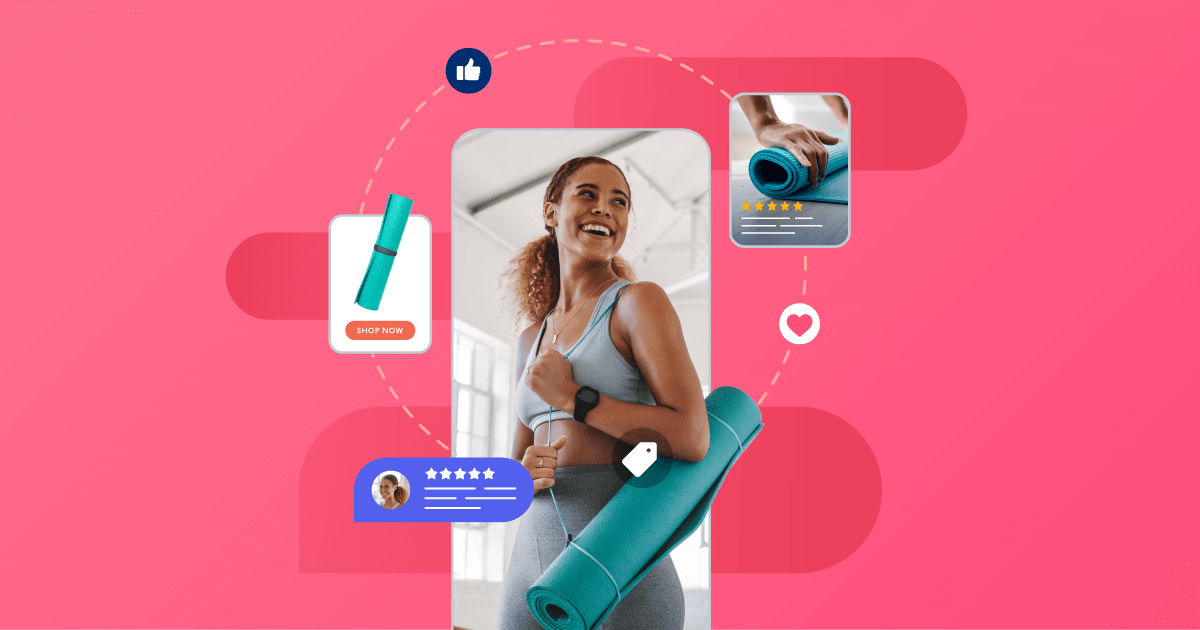
April 8, 2024
The Science Behind Effective User Generated Content Moderation
In the digital age, brands are increasingly leveraging user-generated content (UGC) to build community, enhance brand authenticity, and engage directly with their audience. However, as much as UGC offers unparalleled opportunities for engagement, it also presents a unique set of challenges, primarily related to maintaining the quality and appropriateness of content. Let's dive into the science behind effective UGC moderation, ensuring your brand remains protected while fostering a positive community environment. 1. Understanding UGC and Its Importance Why Moderate User Generated Content? User-generated content, from customer reviews to social media posts, serves as a powerful endorsement for brands. It boosts credibility, increases engagement, and can significantly influence buying decisions. However, unmoderated UGC can risk brand reputation, expose audiences to harmful content, and even violate legal guidelines. Effective moderation is not just about removing negative content; it's about cultivating a brand-safe environment that encourages more users to share their positive experiences. Brand Protection: Prevents damage to your brand’s reputation by filtering out harmful content. Legal Compliance: Ensures content adheres to legal standards, avoiding potential lawsuits. Community Engagement: Enhances user experience by maintaining a positive and safe environment for interaction. 2. The Mechanisms of Moderation How Does Content Moderation Work? Effective content moderation combines artificial intelligence (AI) with human oversight to manage UGC efficiently. AI algorithms can quickly scan vast amounts of content for specific keywords, images, and patterns indicative of inappropriate material. However, AI cannot grasp context the way humans can, making human oversight crucial for nuanced decisions. Artificial Intelligence: Automates the detection of explicit content, spam, and off-topic posts. Human Moderation: Provides context-sensitive analysis to ensure a nuanced understanding of content. Hybrid Approaches: Combines AI efficiency with human insight for optimal moderation. 3. Strategies for Effective UGC Moderation Best Practices for Moderating User-Generated Content Adopting a comprehensive approach to UGC moderation can help maintain the delicate balance between encouraging user participation and protecting your brand. Here are some strategies to consider: Clear Guidelines: Establish and communicate clear content guidelines to your community. Regular Audits: Conduct periodic reviews of moderated content to ensure consistency and quality. Community Involvement: Encourage the community to report inappropriate content, fostering a self-regulating environment. 4. The Role of Moderation in Influencer Marketing Enhancing Influencer Partnerships with Effective Moderation UGC moderation extends to content generated through influencer partnerships. Influencers play a crucial role in shaping brand perception, making it essential to align their content with your brand values. Our blog, "Decoding The Impact of Influencer Marketing on Consumer Behavior," delves deeper into how influencer content affects audiences, highlighting the importance of moderation in maintaining a brand-consistent message. Brand Alignment: Ensures influencer content is in line with brand messaging and values. Audience Protection: Guards against exposing the audience to potentially harmful influencer-generated content. Quality Control: Maintains high content quality standards across all brand and influencer channels. Conclusion Effective user-generated content moderation is vital for safeguarding your brand, complying with legal standards, and providing a safe space for community engagement. By understanding the significance of UGC and implementing a strategic approach to its moderation, brands can harness the power of customer and influencer endorsements without compromising on quality or safety. For more insights into leveraging digital marketing strategies, explore our articles on "Affiliate Marketing in Saudi Arabia: 7 Proven Growth Tactics" and "What is the Difference Between Micro and Macro Influencers? Explained!" to further enhance your marketing efforts.
Read more...
April 4, 2024
The Insider's Guide: Customer Service Secrets for Business Success
Welcome to the essential guide for transforming your business through unparalleled customer service. In a world where every interaction can make or break customer loyalty, understanding and implementing the secrets to stellar customer service is non-negotiable. This guide, tailored for businesses navigating the dynamic landscapes of today’s market, especially in the Middle East, unpacks the strategies that lead to business success. 1. Understanding Your Customer Building a Customer-Centric Culture Embrace customer feedback at every level. Train your team to think from the customer's perspective. Regularly review customer service practices for areas of improvement. Creating a culture that prioritizes customer needs and feedback is the first step towards delivering exceptional service. This involves not just understanding but anticipating the needs and preferences of your customers, which can be significantly enhanced by integrating CRM strategies, as discussed in our blog, "The Top Strategies to Overcome Challenges of CRM in The Middle East." 2. Leveraging Technology for Personalization Using CRM to Tailor Customer Interactions Implement CRM systems to gather and analyze customer data. Use insights from CRM to personalize communications and offers. Automate routine inquiries, freeing up time for personalized service for complex issues. CRM tools are invaluable in understanding customer patterns and preferences, allowing for the customization of services and communications. This personalization is key to creating memorable customer experiences that foster loyalty and satisfaction. 3. Feedback Loop: The Key to Continuous Improvement Turning Feedback into Action Regularly solicit feedback through surveys, social media, and direct communication. Analyze feedback data to identify trends and areas for improvement. Implement changes based on feedback and measure the impact. Feedback is a goldmine for continuous improvement. By establishing an effective feedback loop, businesses can adapt and evolve their customer service strategies to meet changing customer expectations. This proactive approach ensures that your service remains top-notch and relevant. 4. Training and Empowering Your Team Equipping Your Team for Success Provide regular training on customer service best practices and tools. Empower employees to make decisions that enhance customer satisfaction. Recognize and reward exceptional customer service within your team. Your team is on the front lines of customer service. Equipping them with the right training, tools, and empowerment to make customer-focused decisions is crucial for delivering consistent and exceptional service. 5. The Omnichannel Approach Seamless Service Across All Platforms Ensure consistent customer service across all channels, including in-store, online, and social media. Utilize CRM to maintain a unified view of customer interactions across channels. Train your team to provide seamless service, regardless of the platform. In today’s interconnected world, an omnichannel approach is essential. Customers expect to receive the same level of service whether they’re shopping online, in-store, or engaging through social media. CRM systems play a critical role in achieving this consistency by providing a unified view of the customer journey across all touchpoints. Conclusion Exceptional customer service is not just about solving problems; it's about creating an experience that leaves customers feeling valued and heard. By understanding your customers, leveraging technology for personalization, actively using feedback for improvement, training your team, and adopting an omnichannel approach, businesses can unlock the secrets to customer service excellence. As we've explored in "5 Strategies to Unify Your Brand's Cross Channel Customer Experience," integrating these customer service secrets with strategic CRM use can elevate your business from good to great. Remember, in the realm of customer service, every detail counts towards building lasting relationships and driving business success.
Read more...
April 3, 2024
7 Push Notification Best Practices Every Marketer should Know in 2024
In the fast-paced world of digital marketing, push notifications stand out as a powerful tool to directly engage users and enhance customer experience. As we move into 2024, understanding the best practices for push notifications is crucial for marketers aiming to cut through the noise and deliver value to their audience. This blog post dives into seven key strategies every marketer should know to effectively use push notifications, ensuring that your messages are timely, relevant, and, most importantly, welcome. 1. Personalization is Key Crafting Tailored Messages for Your Audience Understand Your Audience: Segment your audience based on their behavior, preferences, and interaction history with your brand. Customized Content: Tailor your messages to match the interests and needs of each segment, increasing the relevance and effectiveness of your notifications. 2. Timing Matters Sending Notifications at the Right Time Analyze User Data: Leverage analytics to determine when your audience is most active and likely to engage with your notifications. Avoid Overloading: Avoid sending too many notifications, as this can lead to user annoyance and increased opt-outs. 3. Clear and Concise Messaging Keeping Your Notifications Direct Simplicity: Ensure your message is straightforward to understand at a glance. Call to Action: Include a clear call to action (CTA) that guides users on what to do next. 4. Rich Media Usage Enhancing Notifications with Images and Videos Visual Appeal: Use images and videos judiciously to grab attention without overwhelming the message. Optimization: Make sure media elements are optimized for quick loading and display correctly across devices. 5. Prioritize User Experience Respecting Your Audience's Preferences Opt-In First: Always get permission before sending notifications to ensure users are open to receiving them. Easy Opt-Out: Provide a straightforward way for users to adjust their notification preferences or opt-out entirely. 6. A/B Testing for Improvement Refining Your Strategy Through Testing Experiment: Test different messages, timings, and formats to see what works best with your audience. Analyze and Adapt: Use the insights gained from testing to improve your push notification strategy continuously. 7. Leverage Analytics Understanding Engagement and Performance Monitor Metrics: Track open rates, click-through rates, and engagement to measure the effectiveness of your notifications. Iterate: Use these insights to refine your approach, focusing on what delivers the best results. Conclusion Push notifications are a dynamic and direct way to communicate with your audience. By following these best practices, marketers can ensure that their push notification campaigns are effective, engaging, and, most importantly, appreciated by their audience. As digital landscapes evolve, staying informed and adaptable is key to success. For more insights on enhancing your messaging campaigns, check out our blogs on "Transactional Email vs Marketing Email: A Simple Guide to Conversions," "The Do's and Don'ts of WhatsApp Business Automated Messages," and "The Top 10 Benefits of SMS Marketing in Modern Messaging Campaigns." Each of these resources offers valuable strategies to elevate your digital marketing efforts in 2024 and beyond.
Read more...
April 2, 2024
The Ultimate Guide to Writing a Digital Marketing Press Release
Digital marketing press releases have become a cornerstone for companies looking to boost their online visibility and connect with their audience more effectively. A2Z Media is here to guide you through mastering this essential tool. By integrating insights from our popular blogs like "Key Strategies to Boost Your Brand's Public Relations Event Management," we'll unveil how to maximize your reach and make a lasting impact. 1. Understanding the Power of Digital Press Releases The Essence of Digital Press Releases Definition and Purpose: A digital marketing press release is an official announcement that is distributed online to media outlets, stakeholders, and the public. Its primary purpose is to share newsworthy information about your company, such as product launches, updates, or significant achievements. Benefits for Your Brand: Utilizing press releases as part of your digital marketing strategy can significantly enhance your brand’s visibility, improve SEO, and establish credibility in your industry. Integrating with Your Marketing Strategy: To achieve the best results, your digital press release should align with your overall marketing objectives and incorporate high-value keywords to boost search engine rankings. 2. Crafting Compelling Content Key Elements of an Effective Press Release Headline: Craft a headline that grabs attention while clearly stating the purpose of your press release. Introduction: Your opening paragraph should succinctly summarize the who, what, when, where, and why of your news. Body: Provide detailed information, including quotes from key stakeholders and data to support your announcement. Boilerplate: Conclude with a standard description of your company, including its mission, history, and key offerings. 3. Maximizing Distribution and Reach Strategies for Broadening Your Audience Targeted Distribution: Utilize platforms and services that distribute your press release to media outlets and journalists in your industry. Social Media Amplification: Share your press release across your brand’s social media channels to engage directly with your audience. SEO Optimization: Include relevant keywords throughout your press release to improve its visibility in search engine results. Conclusion Digital marketing press releases are a dynamic tool that, when executed correctly, can elevate your brand’s profile and foster deeper connections with your audience. By understanding the power of digital press releases, crafting compelling content, and maximizing distribution, you can significantly enhance your marketing strategy. As you venture into the realm of digital press releases, consider exploring our insightful blogs like "How to Develop a Communication Management Plan in Less Than a Day" and "Why Top CEOs Rely on This Crisis Management Model" for additional strategies to bolster your communication efforts. A2Z Media is dedicated to empowering your brand with the knowledge and tools necessary to thrive in the digital landscape. Remember, the key to maximizing your reach lies not just in the message you deliver but in how effectively you share it with the world.
Read more...
April 1, 2024
Behind the Scenes: Easy Video Storytelling Examples That Work
In today's fast-paced digital landscape, video storytelling stands out as a powerful tool to captivate audiences, convey messages effectively, and drive engagement. This blog dives into easy, impactful video storytelling examples, showcasing techniques that work wonders for brands aiming to leave a lasting impression. Discover the magic behind the scenes and learn how to elevate your video content to new heights. 1. Understanding the Basics of Video Storytelling The Key Elements of Effective Video Storytelling Engaging Narrative: A compelling story is at the heart of every successful video. It should be relatable, evoke emotions, and connect with your audience on a personal level. Strong Visuals: Utilize dynamic and relevant visuals to support your narrative. Visual storytelling can often convey more than words alone. Clear Message: Ensure your video has a clear, concise message. What action do you want your viewers to take after watching? Targeted to Audience: Tailor your story to resonate with your specific audience. Personalized video content is far more likely to engage and convert. 2. Easy Video Storytelling Examples Showcasing Success Through Customer Testimonials Real-life Impact: Share customer success stories to illustrate the tangible benefits of your products or services. Personal Connection: Use direct quotes and personal anecdotes to create a deeper connection with potential customers. Behind-the-Scenes Glimpses Studio Video Production: Offer a sneak peek into how your products are made or what goes into delivering your services. This transparency builds trust and authenticity. Team Highlights: Introduce the faces behind your brand. Showcasing team members adds a personal touch and humanizes your business. 3. Tips for Crafting Your Own Video Stories Maximizing Engagement with Simple Strategies Start with a Bang: Open with an intriguing hook to grab attention immediately. Keep It Short and Sweet: In the age of short attention spans, concise videos are more effective. Call to Action: Always conclude with a clear call to action. Guide your viewers on what to do next. Leveraging Social Media Platforms Platform-Specific Content: Tailor your videos for different social media platforms. What works on Instagram might not work on LinkedIn. Engage with Your Audience: Use video storytelling as a two-way communication tool. Encourage comments, shares, and direct interaction. Conclusion Video storytelling is an art form that, when executed well, can transform the way audiences perceive your brand. By following the easy examples and strategies outlined in this blog, you can start creating video content that not only tells a story but also drives results. For more insights into elevating your video content, don't miss our blog on "Personalized Video Content: The Key to Viewer Engagement." At A2Z Media, we're passionate about helping brands like yours leverage the power of video storytelling to achieve marketing success. Whether it's through studio video production or crafting personalized narratives, our team is ready to bring your stories to life.
Read more...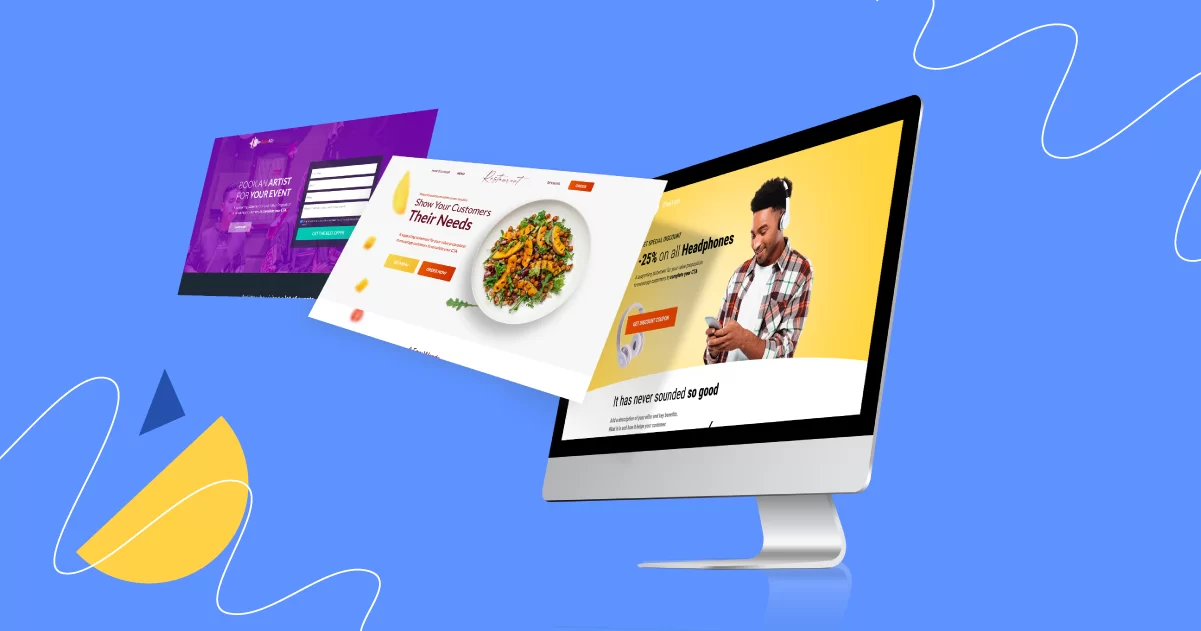
March 28, 2024
The Secret Sauce to a High-Converting Creative Landing Page
Creating a landing page that turns visitors into customers isn't magic—it's all about knowing the right ingredients to use. Think of your landing page as a recipe. Just like in cooking, you need the right mix to make everything come together perfectly. Here's how you can create a landing page that not only looks good but also sells. 1. Understand Your Audience Before you start designing, you need to know who you're designing for. Think about who will visit your page and what they want. This will help you make something that speaks directly to them. Who are they? Imagine who your potential customers are, including their challenges and goals. What do they need? Highlight how your product or service uniquely addresses their pain points. How can you help? Use language and imagery that resonate with your audience, making your offer irresistible. 2. Keep It Simple A visually cluttered page can overwhelm visitors. Opt for a clean, focused design that guides them towards your desired action. Visual Hierarchy: Use design elements to draw attention to key areas, like your value proposition and CTA. Responsive Design: Ensure your page looks great and functions seamlessly on any device, enhancing user experience. Speed Optimization: A fast-loading page keeps potential customers engaged and reduces bounce rates. 3. Make It About Them Your landing page should focus on how your product or service benefits the visitor. Instead of listing features, explain how it makes their life better or solves a problem. Value Proposition: Clearly articulate the unique benefits of choosing your solution over competitors. Social Proof: Incorporate testimonials and case studies to build credibility and trust among prospective customers. SEO-Optimized Copy: Integrate relevant keywords naturally to improve search engine visibility without compromising readability. 4. A Clear Call to Action (CTA) Your CTA is perhaps the most important part of your landing page. This is where you tell visitors what you want them to do next. Visibility: Ensure your CTA button stands out with contrasting colors and is placed prominently on the page. Action-Oriented Language: Use verbs that encourage action and make the next steps clear and appealing. Instead of "click here," use action words like "Get started," "Buy now," or "Sign up free." A/B Testing: Experiment with different CTA texts, colors, and placements to find what works best for your audience. Conclusion The secret to a successful creative landing page isn't so secret after all. It's about understanding your audience, keeping things simple, focusing on benefits, and having a clear call to action. With these ingredients, you'll be well on your way to creating a landing page that converts visitors into customers. Before you go, check out our other blogs for more tips on Website Development success: 7 Essential Website Launch Strategies for Your Business The Best Ecommerce Web Design Trends to Adopt in 2024 Corporate Website Development: 5 Key Strategies to Enhance User Experience These resources will give you more insights into creating a comprehensive online presence that meets your audience's needs and exceeds their expectations.
Read more...
March 27, 2024
How to Set and Achieve Your Marketing Automation Objectives in 2024
In 2024, marketing automation isn't just a tool; it's the backbone of a digital marketing strategy, integral to enhancing the cross-channel customer experience and optimizing your CRM efforts. This guide dives deep into setting precise marketing automation objectives and the steps to achieve them, with practical examples to illuminate the path. 1. Crafting Clear Marketing Automation Goals Defining Your Ambitions Setting the stage for a successful marketing automation journey begins with clear, actionable goals. Here are steps to identify and refine these objectives: Audit your current marketing efforts: Examine past campaigns to identify pain points. For example, if your email open rates are low, your goal could be to personalize email content to boost engagement. Employ SMART criteria: For instance, instead of aiming to "increase email engagement," set a goal to "increase email open rates by 20% within the next quarter." Utilize CRM insights: Dive into your CRM to analyze customer behavior and purchase history. This might reveal that customers who watch a demo video are more likely to purchase, guiding you to automate sending demo videos to new leads. 2. Strategizing Your Approach Technology and Business in Harmony Choosing the right tools and aligning them with your objectives is crucial. Consider these strategies: Integration is key: Ensure your marketing automation platform can seamlessly share data with your CRM. For instance, if a customer fills out a form on your website, this information should automatically update their CRM profile. Map the customer journey: Identify key touchpoints. For example, if most conversions happen after a client attends a webinar, automate invitations to webinars for new leads showing high engagement. Content personalization: Use CRM data to personalize emails based on past interactions. A customer who frequently purchases a specific product could receive automated emails about related products or upcoming sales. 3. Putting Plans into Action From Theory to Practice Effective implementation hinges on thoughtful execution and ongoing optimization: Pilot before launch: Test your automated emails on a small group before a full rollout. For instance, if you're automating birthday discount emails, send them to a small segment first to gauge response. Audience segmentation: Utilize CRM data to segment your audience for more targeted campaigns. For example, create segments based on product interest, and tailor newsletters with product updates, tips, or user stories specifically related to each segment. Adapt and refine: Regularly review performance metrics. If the automated reminder emails for webinar registration are not converting, tweak the call-to-action or timing based on analytics. Conclusion Setting specific, data-driven objectives is paramount to truly leverage marketing automation in 2024. By aligning your automation tools with CRM insights and adopting a flexible, test-and-learn approach, you can significantly enhance the cross-channel customer experience and drive meaningful engagement. Remember, the journey doesn't end with implementation; continuous refinement based on customer behavior and campaign performance is key to staying ahead in the ever-evolving digital landscape. Explore further insights in our "5 Strategies to Unify Your Brand's Cross Channel Customer Experience" for a deep dive into creating a seamless customer journey across all touchpoints.
Read more...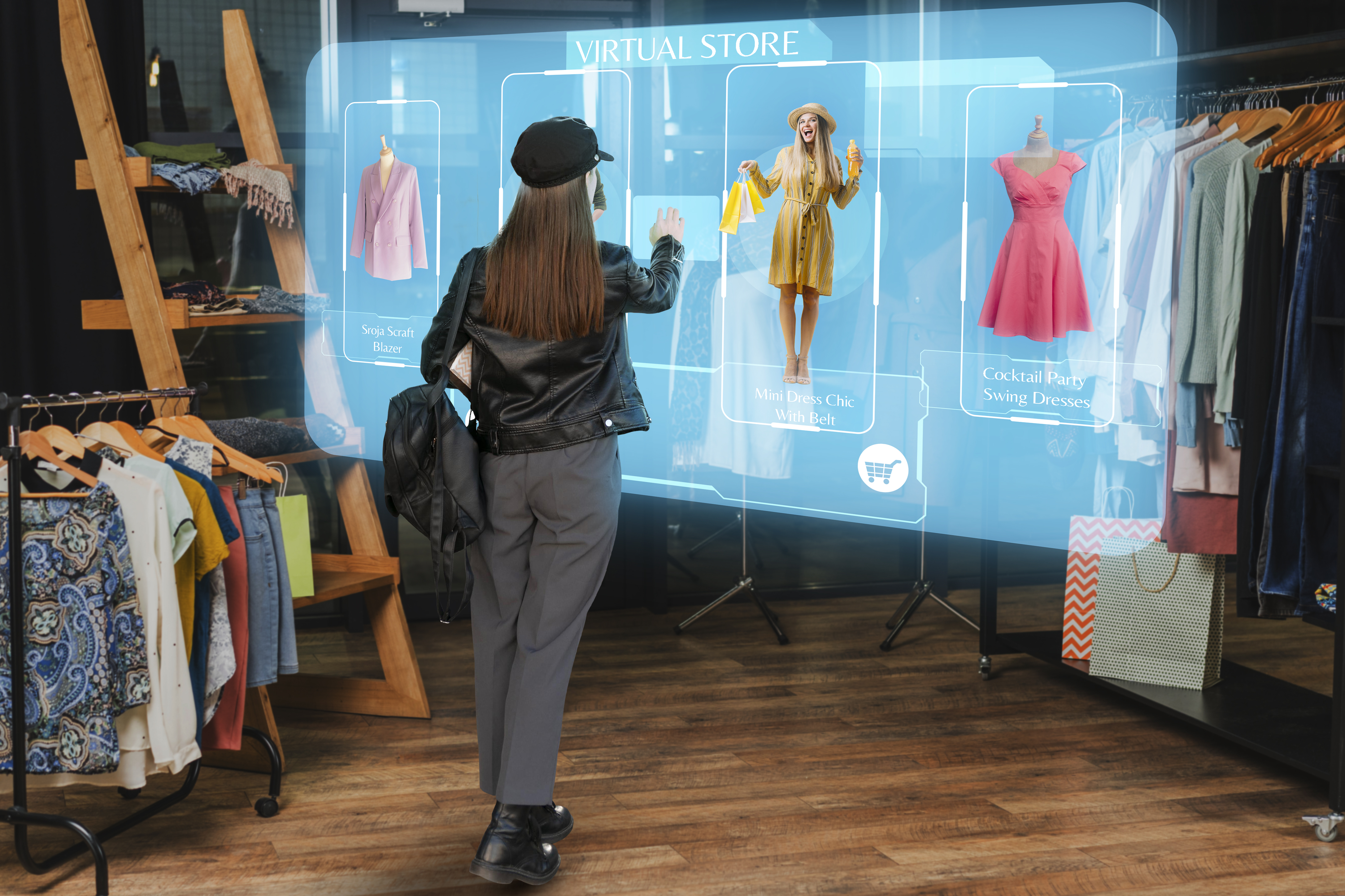
March 26, 2024
3 Simple Steps to a Successful In-Store Brand Activation
Welcome to the world of in-store brand activation! If you're looking to turn your store into a place where shoppers not only come to buy but also to experience something special, you're in the right spot. In Store Brand Activation is all about creating moments that make your brand memorable and encourage shoppers to engage with your products. We've put together some easy steps to help businesses in the Middle East get started. 1. Know Your Audience Understanding Who Comes to Your Store Research: Spend time understanding who your customers are and what they like. Feedback: Ask for their opinions through surveys or casual conversations. Tailoring the Experience Customize: Use what you learn about your customers to create personalized experiences. Cultural Relevance: Make sure your activations resonate with local tastes and preferences. 2. Create Interactive Experiences Ideas for Engaging Customers Product Demos: Let customers try before they buy. Games and Contests: Host fun activities that relate to your brand. Leveraging Technology Augmented Reality (AR): Use AR for virtual try-ons or to bring product stories to life. Social Media Integration: Encourage customers to share their in-store experiences online. 3. Train Your Team Empowering Your Staff Knowledge is Power: Ensure your team knows the products inside out. Customer Service: Teach them to be proactive in engaging customers and offering help. The Role of Employees in Activation Brand Ambassadors: Your staff can embody the brand’s values and communicate them to customers. Feedback Collectors: They're also key in gathering insights directly from customer interactions. In-store brand activation is a powerful way to connect with your customers and create a shopping experience that stands out. By understanding your audience, creating interactive experiences, and training your team, you can introduce that "Wow Factor" into your store. Start small, test different approaches, and see what works best for your brand and your customers. Remember, the goal is to make shopping not just a task, but an experience to remember. And don't forget to explore the insights shared on our partner blog about mastering the Product Launch Formula to elevate your in-store brand activation even further!
Read more...
March 25, 2024
The Do's and Don'ts of WhatsApp Business Automated Messages
In an era where speed and efficiency in communication reign supreme, WhatsApp Business emerges as a pivotal channel for brands aiming to connect with their audience in real time. WhatsApp Business Automated Messages, in particular, offer a spectrum of opportunities for customer engagement, support, and information dissemination. Mastering the art of these automated messages is crucial for enhancing customer experience. As we dive into the best practices and common pitfalls, we invite you to also explore our insights on "transactional email vs marketing email" for a comprehensive understanding of effective messaging campaign strategies. 1. Understanding WhatsApp Business Automated Messages Benefits of Automated Messaging Instant customer support: Automated messages can provide immediate answers to common questions, significantly enhancing customer satisfaction. Enhanced engagement: Keep your audience informed and engaged with timely updates, promotions, and news. Efficiency in communication: Automate routine messages, freeing up valuable time for your team to focus on more complex customer interactions. 2. The Do's of WhatsApp Business Automated Messages Crafting Effective Messages Personalize your approach: Utilize customer data to tailor your messages, making each interaction feel personalized and valued. Keep it simple: Aim for direct and easily digestible messages to maintain your audience's attention. Continuously optimize: Experiment with various messages and timing to discover the most effective strategy for engaging your audience. 3. The Don'ts of WhatsApp Business Automated Messages Avoiding Common Pitfalls Resist over-messaging: Be mindful of how often you send messages to avoid overwhelming or annoying your customers. Steer clear of complexity: Employ straightforward, accessible language that's easy for everyone to understand, including non-native speakers. Embrace customer feedback: Actively seek and incorporate customer feedback to refine and improve your messaging tactics. Conclusion Leveraging WhatsApp Business Automated Messages can significantly boost your customer engagement and operational efficiency when done correctly. Remember to keep your messages personal, clear, and relevant, avoiding the common missteps that can lead to customer dissatisfaction.
Read more...
March 24, 2024
What is the Difference Between Micro and Macro Influencers? Explained!
In today's fast-evolving digital landscape, Influencer Marketing has become a cornerstone for brands aiming to amplify their presence and connect genuinely with their audience. So What is the Difference Between Micro and Macro Influencers? Understanding the difference is critical for marketing managers and directors, especially those operating within dynamic markets like Saudi Arabia. This blog dives into the essence of both influencer types, unraveling why this distinction is pivotal for crafting successful marketing strategies. 1. Defining Micro and Macro Influencers Micro-Influencers: The Personal Touch Reach: Typically have followers ranging from 1,000 to 100,000. Engagement: High engagement rates due to a closer, more personal relationship with their audience. Niche-focused: Often focused on specific niches, offering targeted outreach. Macro Influencers: Broad Influence Reach: Possess a vast audience, usually exceeding 100,000 followers. Engagement: Lower engagement rates but offer extensive visibility. Versatility: Cover broader topics, appealing to a wide audience spectrum. 2. Why the Difference Matters Targeting Precision vs. Reach Micro-influencers, with their niche focus, offer precision targeting, making them ideal for brands with specific audiences. Macro influencers provide broad reach and are beneficial for brands looking to enhance visibility and brand awareness on a larger scale. Cost-Effectiveness vs. Impact Partnering with micro-influencers is often more cost-effective, offering a higher ROI for targeted campaigns. Macro influencers, while more expensive, can significantly boost a brand's profile and attract a wider audience pool. 3. Choosing the Right Influencer for Your Brand Understand Your Campaign Goals Micro-influencers can be your best bet for targeted engagement or to promote niche products. If you aim to maximize reach and brand awareness, macro influencers might be more appropriate. Consider Your Budget Micro-influencers are more budget-friendly and can offer multiple partnerships to diversify your approach. Macro influencers require a larger investment but can lead to substantial brand exposure. Conclusion Navigating the landscape of Influencer Marketing, especially in vibrant markets like Saudi Arabia, demands a nuanced understanding of the micro and macro influencer dynamics. Each type holds distinct advantages, from cost-effectiveness and targeted outreach to expansive reach and brand visibility. By aligning your campaign objectives with the right influencer type, your brand can harness the full potential of influencer marketing to foster meaningful connections and drive growth. As you delve into the world of Affiliate Marketing in Saudi Arabia and influencer collaborations, remember that the essence of effective marketing lies in choosing partners that resonate with your brand's vision and values.
Read more...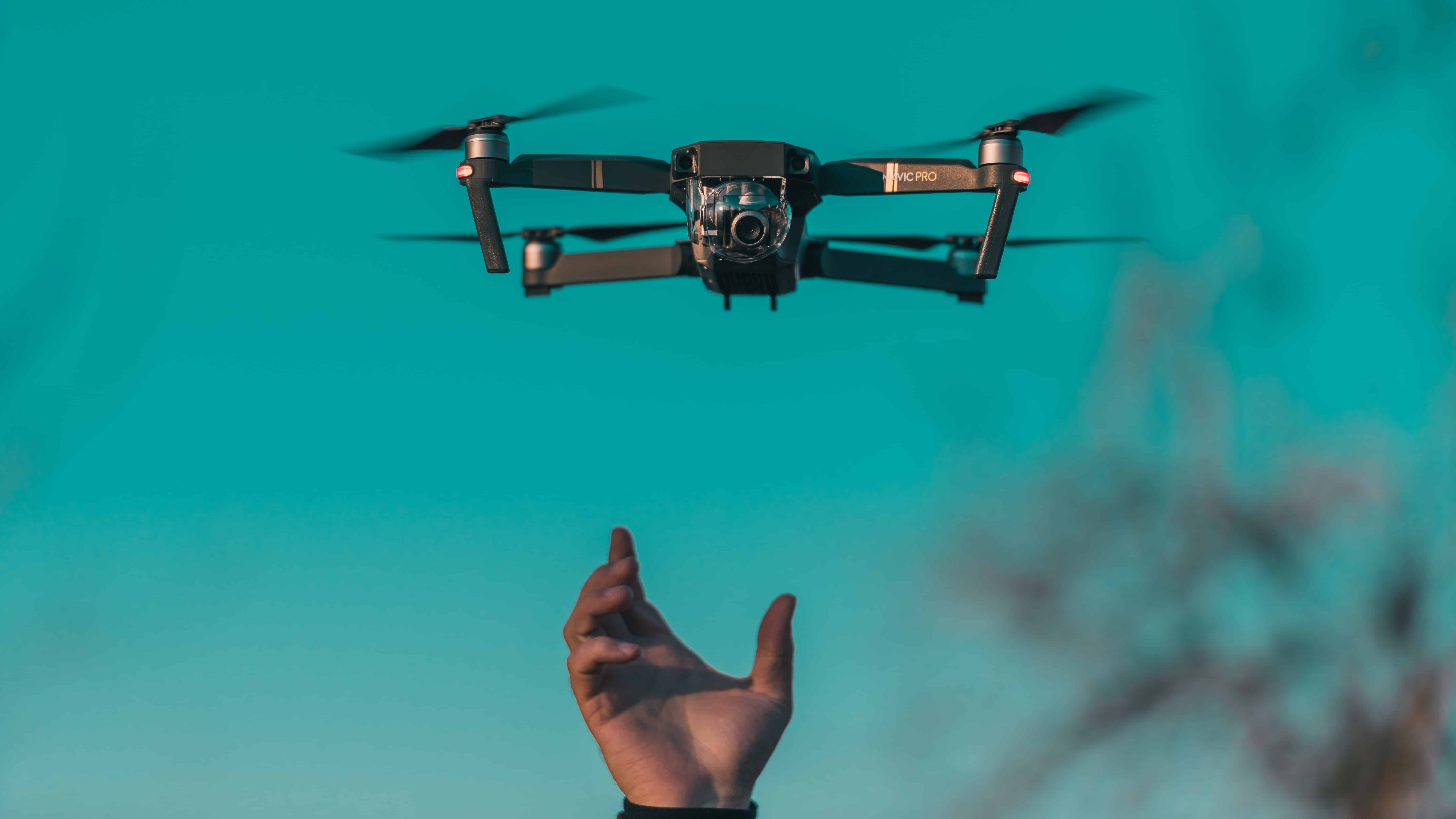
March 21, 2024
Behind the Scenes Techniques for Drone Photography and Videography
Drone photography and videography have revolutionized the way we capture images and footage, offering perspectives that were once impossible or highly expensive to achieve. Whether it's breathtaking landscapes, dynamic urban shots, or intimate views of events, drones bring a new dimension to visual storytelling. At A2Z Media, we're always on the lookout for innovative methods to enhance our creative projects, ensuring our clients stand out in their industries. This blog delves into the essential techniques behind the scenes that can elevate your drone photography and videography, making your content truly soar. 1. Understanding Your Drone's Capabilities Exploring Drone Features and Limitations Battery Life and Flight Time: Knowing the duration your drone can stay airborne is crucial for planning your shoots. Camera Specifications: Familiarize yourself with the camera's resolution, frame rate, and ISO range to maximize image quality. Flight Modes: Many drones come with pre-set flight modes. Experiment with these to achieve smooth and cinematic shots. 2. Mastering the Art of Composition Crafting the Perfect Shot Rule of Thirds: Place your subject along the lines or at the intersections for a balanced composition. Leading Lines: Use natural or urban lines to lead the viewer’s eye through the scene. Perspective and Angles: Experiment with different heights and angles to find unique perspectives that tell a story. 3. Optimal Camera Settings for Different Environments Adjusting for Light and Motion Golden Hour: Capture soft, warm hues during the first and last hour of sunlight. Overcast Conditions: Utilize diffused light to minimize shadows and highlights in your landscape shots. High Wind: Increase shutter speed to reduce motion blur and ensure sharp images. 4. Navigating Legalities and Safety Staying Within Boundaries Regulations and Permissions: Always check local drone laws and obtain necessary permissions before flying. Privacy Concerns: Be mindful of privacy when flying over private properties or recording people. Safety First: Avoid flying in crowded spaces and maintain a visual line of sight with your drone at all times. Conclusion Drone photography and videography open up a realm of possibilities for creative expression and storytelling. By understanding your drone’s capabilities, mastering composition, adjusting camera settings for different environments, and navigating legalities and safety, you can significantly enhance the quality and impact of your aerial footage. At A2Z Media, we continually explore the intersection of technology and creativity, pushing the boundaries of what's possible. Whether you're capturing the perfect food photography setup, finding the best camera settings for interior photography, or taking your drone photography and videography to new heights, remember that great content starts with knowledge, experimentation, and a passion for innovation. Let's soar together, creating visuals that captivate and inspire. Feel free to explore our other blogs for more tips and tricks, such as "The Best Food Photography Setup Techniques for Mouthwatering Images" and "Best Camera Settings for Interior Photography" where we dive deeper into specific techniques that can further enhance your photography projects.
Read more...
March 20, 2024
From Concept to Consumer: Your Go-To Product Launch Formula
Launching a new product can be one of the most exhilarating yet daunting tasks for any marketing professional. At A2Z Media, we understand the complexities involved in turning a concept into a consumer favorite. Whether you're a B2B marketing director orchestrating the debut of a new service or a brand manager in the B2C realm aiming to capture hearts with the next big thing, this guide is your go-to Product Launch Formula. 1. Understanding Your Market Market Research and Analysis Identify your target audience's needs, desires, and pain points. Analyze competitor offerings and pinpoint gaps your product can fill. Utilize surveys, focus groups, and social media listening to gather insights. Crafting Your Value Proposition Clearly define what sets your product apart. Focus on the benefits that directly address your audience's challenges. Ensure your messaging resonates with the intended market segment. 2. Building a Buzz: Pre-launch Strategies Creating Anticipation Utilize teaser campaigns on social media to spark curiosity. Engage influencers and brand advocates early to widen your reach. Offer sneak peeks or beta versions to create early adopters. Leveraging Content Marketing Develop a content calendar that aligns with your launch timeline. Use blog posts, infographics, and videos to educate your audience about your product's value. Implement SEO best practices to ensure your content is discoverable. 3. Activations Management: The Launch Executing Your Launch Event Plan an event that embodies the essence of your brand and product. Utilize live streaming to reach a broader audience if physical attendance is limited. Gather real-time feedback to gauge initial market reaction. Maximizing Digital Platforms Coordinate your social media, email marketing, and paid advertising efforts to create a cohesive launch message. Use targeted ads to reach specific segments of your audience with customized messages. Monitor social media closely to engage with users and address any queries or concerns promptly. Conclusion A successful product launch is much more than a one-time event; it's a comprehensive strategy that begins long before the actual launch and continues well after. By understanding your market, building anticipation pre-launch, and effectively managing activations at launch, you can ensure that your product not only reaches its target audience but also resonates with them on a deeper level. At A2Z Media, we specialize in turning concepts into consumer successes. Our approach to activations management is designed to navigate the complexities of the market, ensuring that your product launch is not just seen and heard but felt and remembered. Let's work together to make your next product launch not just successful, but spectacular.
Read more...
March 19, 2024
5 Strategies to Unify Your Brand's Cross Channel Customer Experience
In the maze of today’s digital landscape, a unified cross channel customer experience (CX) stands as a beacon of success for brands. Before diving into strategies, let’s clarify what we mean by "cross-channel customer experience." This approach ensures that regardless of how or where a customer interacts with your brand—be it through social media, email, in-person interactions, or over the phone—their experience is cohesive, consistent, and reflective of your brand’s core values. With the advent of Customer Relationship Management (CRM) systems, businesses have a powerful tool at their disposal to harmonize these interactions, making every touchpoint an opportunity to strengthen the customer-brand relationship. What is Cross Channel Customer Experience? Defining the Unified Customer Journey Cross-channel CX ensures a seamless and consistent customer journey across all platforms and touchpoints. It aims to deliver a cohesive brand message and experience, regardless of the channel or device. The ultimate goal is to build a strong, positive relationship with the customer at every stage of their journey. 1. Understand Your Customer Journey Mapping the Customer Journey Identify every touchpoint: Understand where your customers interact with your brand, from social media to customer service calls. Analyze the current experience: Look for inconsistencies or gaps where the customer experience drops off. Engage with your audience: Collect feedback at various stages to understand their needs and expectations better. 2. Leverage Data and Analytics Utilizing CRM for a Unified View Integrate CRM solutions: Use CRM tools to consolidate customer data from all channels into a single view. Analyze customer behavior: Understand patterns and preferences to tailor the experience across channels. Personalize interactions: Use data to customize your communications, making each customer feel valued and understood. 3. Ensure Consistent Messaging Across Channels Creating a Cohesive Brand Voice Develop a brand style guide: Ensure your brand’s voice and messaging are consistent across all platforms. Train your team: Make sure everyone understands the brand voice and how to apply it across different channels. Audit regularly: Regularly review your channels to ensure consistency in tone, style, and messaging. 4. Optimize for Mobile Making Mobile a Priority Responsive design: Ensure your website and emails look great and function well on mobile devices. Mobile-first content: Create content that’s easy to consume on the go, such as short videos or easy-to-scan lists. Simplify transactions: Streamline the purchasing or booking process on mobile for a frictionless experience. 5. Foster Omnichannel Customer Service Providing Seamless Support Integrate service channels: Ensure customer service reps can access all customer data, regardless of the channel. Offer consistent service: Train your team to provide the same level of service online, in-person, and over the phone. Embrace technology: Use chatbots, AI, and self-service options to provide quick and efficient help across channels. Conclusion Creating a unified cross-channel customer experience is no small feat, but it’s essential for brands looking to thrive in the digital age. By understanding your customer journey, leveraging CRM data, ensuring consistent messaging, optimizing for mobile, and fostering omnichannel service, you can offer an experience that not only meets but exceeds customer expectations. Remember, the goal is to make every interaction with your brand as seamless and personalized as possible. A2Z Media is here to support your journey toward a stellar cross-channel CX, helping you build stronger relationships and drive loyalty with your target audience.
Read more...
March 18, 2024
Transactional Email vs Marketing Email: A Simple Guide to Conversions
In today’s digital age, email remains a cornerstone of business communication and marketing. Understanding the difference between transactional email vs marketing email is crucial for crafting effective messaging campaigns. Both play unique roles in customer engagement and conversions, yet they serve distinct purposes. This guide simplifies these concepts, making them accessible to our audience in the Middle East, especially those in the B2B and B2C sectors, aiming for enhanced brand awareness and improved ROI. 1. Understanding Transactional Emails What Are Transactional Emails? Transactional emails are automated messages sent to individuals following specific actions on your website. These emails are vital for ongoing customer interactions and include: Order confirmations Password resets Purchase receipts Account updates Why They Matter Immediate Delivery: They provide instant confirmation, enhancing customer trust. High Open Rates: Customers expect them, leading to higher engagement. Personalization Opportunities: Tailoring these emails can improve customer experience. 2. Exploring Marketing Emails What Are Marketing Emails? Unlike transactional emails, marketing emails are designed to promote a product, service, or brand. They aim to engage a broader audience and drive sales through: Newsletters Special offers Event Invitations Product announcements Benefits of Marketing Emails Brand Awareness: Keeps your brand top-of-mind for your customers. Customer Engagement: Encourages interaction with your content. Conversion Opportunities: Drives sales and encourages customer loyalty. 3. Maximizing Your Email Strategy Integrating Transactional and Marketing Emails To leverage both for your business, consider these strategies: Brand Consistency: Ensure both email types reflect your brand’s voice and style. Segmentation: Tailor messages based on customer actions and preferences. Clear Calls-to-Action: Guide recipients on what to do next, enhancing conversion rates. Conclusion Transactional and marketing emails are both pivotal in a successful email marketing strategy. By understanding and utilizing each effectively, businesses can enhance customer engagement, strengthen brand loyalty, and drive conversions. At A2Z Media, we specialize in creating tailored messaging campaigns that resonate with our target audience, combining the strengths of both transactional and marketing emails to meet our clients’ objectives. Embrace the power of email to connect with your customers and propel your business forward.
Read more...
March 17, 2024
Affiliate Marketing in Saudi Arabia: 7 Proven Growth Tactics
In the fast-paced world of digital marketing, finding effective ways to grow your brand in Saudi Arabia can be challenging. Affiliate marketing emerges as a powerful strategy to reach a wider audience and ensure sustainable growth. This performance-based marketing model leverages partnerships to drive sales and brand awareness, making it a key tactic for businesses aiming to thrive. But what exactly is affiliate marketing? Let's dive in before exploring the key strategies for leveraging this powerful tool in the competitive Saudi Arabian market. What is Affiliate Marketing? Understanding the Basics Affiliate marketing is a performance-based marketing strategy where a business rewards one or more affiliates for each visitor or customer brought by the affiliate's marketing efforts. It's a win-win situation: brands gain increased visibility and sales, while affiliates earn a commission for their promotional activities. This model thrives on collaboration and mutual benefits, making it an attractive option for businesses looking to grow in today's digital age. 1. Identify the Right Affiliates Choosing Partners That Amplify Growth Focus on niche relevance: Collaborate with affiliates who specialize in your industry to reach a more targeted audience. Look for engagement over size: Partners with highly engaged followers can drive more meaningful growth than those with larger but less engaged audiences. Consider long-term potential: Select affiliates who can grow with your brand, offering sustainable partnership opportunities. 2. Optimize Your Affiliate Program Creating a Compelling Program Competitive commission structures: Offer attractive commissions to stand out. Clear program guidelines: Ensure your affiliates understand what is expected. Regular communication: Keep affiliates updated with new products, promotions, and insights. 3. Leverage Local Influencer Marketing Enhancing Brand Visibility Collaborate with local influencers: Utilize influencers to gain trust and extend reach within Saudi Arabia. Create authentic content: Encourage content that resonates with the local audience's values and culture. Measure influencer impact: Track sales and engagement from influencer promotions to gauge effectiveness. 4. Utilize Data-Driven Insights Making Informed Decisions Track affiliate performance: Use analytics to monitor sales, clicks, and overall effectiveness. Adjust strategies based on data: Refine your approach by focusing on what works best. Understand your audience: Tailor your marketing efforts based on the preferences of your Saudi audience. 5. Offer Exclusive Deals Attracting More Customers Exclusive discounts for affiliate channels: Provide special offers that affiliates can promote. Limited-time promotions: Create urgency with time-sensitive deals. Customized offers for top performers: Reward your best affiliates with exclusive promotional deals. 6. Focus on Mobile Optimization Catering to Mobile Users Responsive design: Ensure your affiliate landing pages are mobile-friendly. Simplify the purchase process: Make it easy for users to buy through mobile devices. Optimize for speed: Ensure fast loading times for better user experience. 7. Prioritize Transparency and Compliance Maintaining Trust Clear disclosure policies: Ensure affiliates disclose the nature of their promotional content. Adhere to local regulations: Stay updated with Saudi Arabia's advertising and marketing laws. Build trust through honesty: Transparency with your audience fosters long-term loyalty. Conclusion Affiliate marketing in Saudi Arabia presents a fertile ground for brands aiming to magnify their presence and drive impactful results. By understanding what affiliate marketing is and implementing strategies such as identifying the right affiliates, optimizing your program, leveraging influencer marketing, and more, your brand can effectively dominate the market. Harness the power of affiliate marketing to see your brand flourish in the bustling Saudi market.
Read more...
March 14, 2024
Why Top CEOs Rely on This Crisis Management Model
In an era where companies can face unforeseen crises at any turn—from data breaches to public relations nightmares—the difference between thriving and barely surviving often lies in one's preparedness. This is why top CEOs heavily rely on a comprehensive crisis management model. This model is not just a framework; it's a blueprint for navigating through tumultuous times efficiently and effectively. Let's explore the model that has become the cornerstone of robust business strategies and why it's trusted by leading CEOs worldwide. 1. Understanding the Crisis Management Model The Core Components Crisis management can be broken down into three critical phases, each with its own set of strategies and objectives: Preparation: The foundational stage is where businesses identify potential risks, develop crisis response plans, and train their teams for potential scenarios. This phase is about creating a culture of readiness within the organization. Response: When a crisis strikes, the response phase kicks in. This involves activating the crisis management plan, communicating with stakeholders, and taking decisive action to mitigate the crisis's impact. Recovery: Post-crisis, the focus shifts to recovery and analysis. Businesses assess the damage, return to normal operations, and learn from the crisis to strengthen their crisis management plan. 2. Why CEOs Trust This Model Clarity and Direction The model offers a clear, actionable plan during chaotic situations, ensuring the organization responds quickly and cohesively. It helps prioritize actions to minimize damage, safeguarding the company's assets and reputation. Risk Mitigation Early identification of potential risks through regular audits and monitoring allows companies to prepare or even prevent certain crises. Pre-planned responses ensure a swift reaction that can significantly reduce the long-term impact on the company. Brand Protection Effective communication strategies maintain trust and confidence among consumers, investors, and other stakeholders. Transparent and timely updates throughout a crisis can help protect and even enhance the company's brand reputation. 3. The Model in Action: Real-World Success Stories Learning from Leaders Consider how Toyota responded to its 2010 recall crisis. Despite the massive scale of the recall, Toyota utilized its crisis management model to communicate openly with its customers, initiating a comprehensive recall plan swiftly, and focus on long-term recovery by investing in quality control and customer safety. This strategic approach helped Toyota regain its position as a leader in the automotive industry. Key Takeaways Preparation is Key: A well-prepared organization can navigate crises with minimal damage. Communication is Critical: Keeping stakeholders informed is essential for maintaining trust. Learn and Adapt: Every crisis provides valuable lessons that can improve future crisis management efforts. Conclusion The crisis management model is a trusted framework for a reason—it provides a systematic approach to navigating the unpredictable. By understanding and implementing this model, CEOs ensure their companies are prepared to face crises and equipped to emerge stronger and more resilient. A2Z Media adopts this model, recognizing its power to transform potential Public Relations disasters into opportunities for growth and learning. In the volatile landscape of modern business, adopting such a model isn't just strategic; it's imperative.
Read more...
March 13, 2024
The Top 10 Benefits of SMS Marketing in Modern Messaging Campaigns
In the digital age, the key to an effective marketing strategy lies in choosing the right channels to reach your audience. With the overwhelming presence of smartphones, SMS marketing has emerged as a powerhouse for direct communication. What makes SMS Marketing work? At A2Z Media, we understand the significance of engaging your audience where they are most attentive. Here, we unveil the top 10 benefits of integrating SMS marketing into your modern messaging campaigns. 1. Unmatched Open Rates High Visibility Ensures Your Message Gets Seen Instant Attention: Over 90% of SMS messages are read within 3 minutes of receipt, guaranteeing immediate visibility. Superior Open Rates: SMS outshines email with an average open rate of 98%, ensuring your message isn't lost in the noise. 2. Cost-Effective Communication Maximize Your Marketing Budget Low Cost, High ROI: SMS marketing offers a high return on investment, making it a cost-effective choice for businesses of all sizes. Efficient Resource Use: With SMS, you're investing in a direct line to your audience without the hefty price tag of more complex campaigns. 3. Broad Audience Reach Connect with a Global Audience Universal Access: Nearly everyone owns a mobile phone, offering a direct pathway to a diverse and extensive audience. No Internet Required: SMS doesn't rely on Internet connectivity, reaching users even in areas with limited online access. 4. Personalization and Segmentation Tailor Messages to Fit Your Audience Customized Campaigns: Personalize messages based on customer data to increase relevance and engagement. Targeted Communications: Segment your audience to ensure that the right messages reach the right people at the right time. 5. Immediate Feedback Loop Engage in Real-Time Conversations Quick Responses: SMS marketing facilitates instant feedback, allowing for real-time engagement with your audience. Enhanced Customer Service: Use SMS for quick polls or to answer customer inquiries, enhancing the overall service experience. 6. High Engagement Rates Drive Action and Participation Direct Calls-to-Action: The concise nature of SMS prompts clearer and more compelling calls-to-action. Interactive Content: Engage your audience with contests, polls, and exclusive offers, driving participation and loyalty. 7. Easy Integration Complement Your Marketing Mix Multi-Channel Strategy: Seamlessly integrate SMS with your email, social media, and other marketing efforts to enhance your overall strategy. Consistent Branding: Use SMS to support and amplify your message across channels, creating a cohesive brand experience. 8. Reliability Ensure Your Message is Delivered Direct Delivery: Unlike emails that may end up in spam, SMS messages are delivered directly to the recipient's inbox. Minimal Interference: With less competition in the SMS inbox, your message stands a better chance of being seen and acted upon. 9. Simplicity and Directness Communicate Clearly and Concisely Straightforward Messaging: The character limit of SMS encourages messages to be clear and to the point, reducing misunderstanding. Immediate Understanding: Customers appreciate the brevity, making it easier to digest and respond to your messages. 10. Extensive Reach Without Internet Reach Customers Anywhere, Anytime No Internet Dependency: SMS marketing doesn't require an Internet connection, ensuring you reach your audience regardless of their online status. Inclusive Marketing: Include users who prefer or rely solely on SMS for communication, ensuring no one is left out of your marketing initiatives. Conclusion SMS marketing is an invaluable component of modern messaging campaigns, offering direct, personal, and efficient communication with your target audience. At A2Z Media, we're dedicated to leveraging the power of SMS to enhance your marketing strategy, ensuring you achieve unparalleled engagement and results. Embrace the immediacy, cost-effectiveness, and broad reach of SMS marketing to elevate your brand's presence in the digital realm.
Read more...
March 13, 2024
Decoding The Impact of Influencer Marketing on Consumer Behavior
In today’s fast-paced digital world, influencer marketing has emerged as a powerful tool for brands looking to reach their target audiences more effectively. At A2Z Media, we understand the importance of tapping into this dynamic strategy to enhance brand awareness and drive consumer behavior. This blog post delves into the impact of influencer marketing on consumer behavior, offering valuable insights for marketing directors and managers aiming to harness the power of influencers in their marketing mix. 1. The Rise of Influencer Marketing Understanding the Landscape Influencer marketing is no longer just a buzzword; it's a critical component of modern marketing strategies. It involves collaborating with individuals who have a significant online following to promote products, services, or brand messages. This strategy leverages the trust and rapport influencers have built with their audience, resulting in more authentic and impactful marketing efforts. Authentic Connections: Influencers can create genuine connections with their followers, leading to increased trust in the brands they endorse. Enhanced Engagement: Content created by influencers tends to receive higher engagement rates compared to traditional advertising. Targeted Reach: Influencers can help brands reach specific demographics and niche markets with precision. 2. Influencer Marketing's Effect on Consumer Behavior Shaping Perceptions and Decisions The impact of influencer marketing on consumer behavior is profound. By leveraging influencers, brands can significantly influence how consumers perceive their products and make purchasing decisions. Brand Perception: Positive endorsements from influencers can enhance brand image and credibility. Purchasing Decisions: Recommendations from trusted influencers can directly influence consumer purchasing choices. Consumer Trust: Influencer partnerships can build or strengthen consumers' trust in a brand, as recommendations from a familiar face feel more personal and reliable. 3. Best Practices for Implementing Influencer Marketing Maximizing Impact To ensure the success of influencer marketing campaigns, it's crucial for brands to adopt best practices that resonate with their target audience. Choose the Right Influencers: Collaborate with influencers who align with your brand's values and have a genuine interest in your products. Focus on Quality Over Quantity: It's better to form deep, meaningful partnerships with a few influencers than to engage with many who may not be as closely aligned with your brand. Measure Success: Use metrics like engagement rate, conversion rate, and ROI to evaluate the effectiveness of your influencer marketing campaigns. Influencer marketing has transformed the way brands interact with consumers, offering a unique opportunity to influence consumer behavior through authentic and personalized marketing messages. By understanding the impact of this strategy and implementing best practices, brands can significantly enhance their marketing efforts, leading to improved brand perception, consumer trust, and ultimately, sales. At A2Z Media, we're committed to helping our clients navigate the influencer marketing landscape to achieve their marketing objectives effectively. Let's harness the power of influencer marketing together and create impactful campaigns that resonate with your target audience.
Read more...
March 11, 2024
Setting the Scene: The Best Camera Settings for Interior Photography
In the realm of visual storytelling, interior photography holds a place of distinction. It's not just about capturing spaces; it's about conveying the essence of an environment, its mood, and its architectural beauty. This is particularly crucial in the hospitality industry, where the allure of hotel interiors can significantly influence a guest's decision to book. At A2Z Media, we understand the importance of showcasing interiors in their best light. Thus, we're diving into the best camera settings for interior photography, ensuring every click resonates with your target audience. 1. Understanding the Basics Key Camera Settings: ISO: Keep it as low as possible to avoid noise. ISO 100 is ideal for most indoor conditions. Aperture: A wider aperture (e.g., f/8-f/11) ensures sharpness across your scene. Shutter Speed: Adjust according to your light source. For dimly lit interiors, a slower shutter speed captures more light but may require a tripod for stability. White Balance: Proper white balance prevents unnatural color casts. Adjust based on lighting conditions or use presets as a starting point. 2. Lighting and Composition Harnessing Natural Light: Time of Day: Shoot during the golden hours for a warm, natural glow. Window Use: Utilize windows not just for light but as a compositional element to guide the viewer's eye. Composition Techniques: Rule of Thirds: Place key elements along the lines or intersections for a balanced composition. Leading Lines: Use architectural features to lead the eye deeper into the photograph. 3. Specializing in Hospitality Capturing the Essence of Hospitality: Focus on Atmosphere: Convey the unique ambiance of hotel spaces, from the grandeur of lobbies to the comfort of rooms. Detail Shots: Highlight amenities and decor that set the hotel apart, such as luxurious bedding or custom art pieces. Incorporating Food Photography: Food Photography Setup: Showcase the hotel's cuisine with a proper setup. Use natural light and reflectors to highlight the textures and colors of the food. 4. Post-Processing Tips Enhancing Your Images: Color Correction: Ensure colors are true to life, especially for interior details and food presentations. Perspective Correction: Straighten lines to avoid distorted architectural elements, maintaining the space's integrity. Conclusion Interior photography, especially within the hospitality sector, is an art form that requires a keen eye for detail, an understanding of your audience, and mastery over your camera. By applying these best camera settings and techniques, you're well on your way to creating captivating images that not only showcase spaces in their best light but also tell a story that resonates with viewers. At A2Z Media, we're dedicated to empowering our clients with the knowledge and tools to excel in their marketing endeavors, making every shot count towards building a stronger, more engaging brand.
Read more...
March 10, 2024
Hybrid vs Native App Definition: What’s Best for Your Business?
In the fast-paced world of Mobile App Development, choosing the right approach can significantly impact your business's success. With the increasing demand for apps that offer seamless user experiences and high performance, the debate between hybrid and native apps becomes more relevant. Let's dive into what these terms mean and which option might be the best fit for your business needs. 1. Understanding the Basics Native App Definition Built for a specific platform using the platform's native programming language (e.g., Swift for iOS, Kotlin for Android). Offers high performance and a seamless user experience by accessing device-specific hardware and software. Typically requires more development time and budget due to the need for separate codebases for each platform. Hybrid Apps Developed using web technologies like HTML, CSS, and JavaScript, then wrapped in a native container to access basic device features. Easier and faster to develop, with one codebase for all platforms but may sacrifice performance and user experience quality. 2. Pros and Cons Native Apps: The High Performers Optimal Performance: Direct access to device hardware results in faster and more responsive apps. Better User Experience: Designed with specific platform guidelines in mind, ensuring a look and feel that matches the operating system. Enhanced Security: Offers robust security features, taking full advantage of the device's capabilities. Hybrid Apps: The Cost-Effective Choice Cross-Platform Development: A single codebase for all platforms reduces development time and costs. Easier Updates: Update your app for all platforms simultaneously, without going through app store approvals. Limited Performance: May experience slower performance and a less fluid user experience compared to native apps. 3. Key Factors Beyond Development When pondering over app development strategies, it's essential to factor in not just the development process but also the app’s intended use, target audience, and desired functionalities. Augmented Reality Apps (AR), for instance, generally perform better as native apps due to their intensive use of device hardware for immersive experiences. App Downloads and user engagement also heavily depend on the app’s performance and usability. Native apps, with their enhanced capabilities, tend to foster higher engagement levels, leading to better retention rates and a more substantial user base. The choice between hybrid and native app development ultimately depends on your business goals, budget, and the type of user experience you want to deliver. If your priority is to launch quickly on multiple platforms with a limited budget, a hybrid approach may be suitable. However, if you aim to provide a top-tier user experience with high performance, especially for augmented reality apps or applications where speed and fluidity are crucial, investing in native mobile app development might be the way to go.
Read more...
March 7, 2024
5 Proofs on the Importance of Event Marketing & Activations Management
In today's dynamic market, the role of event marketing and activations management in crafting impactful brand experiences cannot be overstated. These strategies not only captivate your target audience but also cement your brand's position in their minds. For businesses aiming to make a significant mark, understanding and leveraging the benefits of event marketing is essential. Here's how these strategies can revolutionize your approach to your next event or activation. 1. Enhances Brand Awareness and Fosters Loyalty Strategize to Stand Out Direct Engagement: Utilize events as a platform to directly engage with your audience, allowing your brand's voice to be heard firsthand. Unique Brand Identity: Through creative activations, illustrate the unique aspects of your brand, creating a memorable impression that lasts beyond the event. Cultivate Brand Advocates: Deliver exceptional experiences that transform attendees into brand advocates, amplifying your reach through word-of-mouth. Plan Your Next Move: Consider hosting an event that aligns closely with your brand's values and message. Design activations that are not only engaging but also deeply resonant with your audience's interests and needs. 2. Drives High-Quality Lead Generation Connect and Convert Focused Engagement: Craft events that appeal to a well-defined audience, enhancing the quality of leads generated. Live Feedback: Leverage the immediacy of events to gather feedback, adjusting your offerings in real-time to better meet attendee expectations. Expand Your Network: Utilize events as a networking hub to meet potential clients, partners, and industry influencers. Plan Your Next Move: Develop an event strategy that includes targeted networking sessions and feedback mechanisms to ensure your event not only attracts but also engages and converts. 3. Elevates Customer Experience Create Unforgettable Moments Immersive Experiences: Design events that immerse attendees in the essence of your brand, leaving a lasting impact. Exclusive Perks: Offer special promotions or sneak peeks at your event to make attendees feel privileged and valued. Sustained Engagement: Keep the conversation going post-event through strategic follow-ups, reinforcing the connections made. Plan Your Next Move: Think of ways to extend the event's lifecycle through digital content, community forums, or follow-up events that keep your brand top of mind. 4. Secures a Competitive Edge Showcase Your Distinction Showcase Innovations: Use your event as a platform to debut new products or services, highlighting your market leadership. Creative Engagements: Differentiate your brand with unique and creative event concepts that stand out from the competition. Establish Authority: Position your brand as an industry thought leader by incorporating educational sessions or expert panels into your event. Plan Your Next Move: Align your event's theme with your brand's unique selling propositions. Incorporate innovative technologies or exclusive content that showcases your brand's leadership and expertise. 5. Provides Tangible Metrics for Success Quantify Your Impact Data-Driven Insights: Implement tools and technologies to capture valuable data at your events, from attendee behaviors to engagement levels. Qualitative Assessments: Collect testimonials and feedback to understand the qualitative impact of your event on brand perception. ROI Evaluation: Assess the overall success of your event through a comprehensive analysis of costs versus benefits, focusing on long-term brand value. Plan Your Next Move: Integrate measurement tools into your event planning from the start. Set clear objectives and KPIs to evaluate your event's success and inform future strategies. Conclusion Event marketing and activations management are indispensable tools in the modern marketer's arsenal, offering direct pathways to enhance brand awareness, generate quality leads, elevate customer experience, secure a competitive edge, and measure success in tangible terms. As you plan your next event or activation, leverage these insights to create a strategy that not only captivates your audience but also drives your brand towards its objectives. At A2Z Media, we're committed to helping you navigate this journey, ensuring your next event is a resounding success.
Read more...
March 6, 2024
The Best Food Photography Setup Techniques for Mouthwatering Images
Capturing the perfect food photograph requires more than just a good camera and delicious food. It's about creating a visual feast for the eyes, one that entices and engages your audience, making them almost taste the flavor through the image. A2Z Media understands the unique challenges faced by marketing professionals in presenting their culinary creations in the most appetizing light. This blog is tailored for you, providing easy-to-follow techniques to prepare the perfect Food Photography Setup and guarantee mouthwatering images every time. 1. Understanding the Basics of Food Photography Choosing the Right Equipment DSLR or Mirrorless Camera: For flexibility in settings and lens choices. Tripod: Essential for stability and sharp images. Macro Lens: Captures close-up details of the food. Reflectors and Diffusers: Manage shadows and light distribution. Lighting Is Key Natural light is preferable for food photography, creating soft, diffused lighting that highlights the textures and colors of the food. Position your setup near a window, using reflectors to balance the light. 2. Styling Your Scene The Art of Composition Rule of Thirds: Position key elements along the intersections for a balanced image. Leading Lines: Use utensils, napkins, or the table to guide the eye through the photo. Layering: Incorporate different heights and textures to add depth. Choosing Props and Backgrounds Select props that complement the food's color and texture without distracting from it. Neutral backgrounds work best to keep the focus on the dish. 3. Focus on the Food Enhancing the Hero Fresh Ingredients: Use the freshest components for a vibrant look. Cooking Techniques: Employ techniques that enhance the food's natural appeal, like grilling or glazing. Garnishing: Add a final touch with fresh herbs or spices to make the dish pop. Angles Matter Experiment with various angles to find the most flattering perspective for your dish. Overhead shots are great for flat layouts, while a 45-degree angle can give a more realistic, inviting look. Capturing the essence of food through photography is an art that requires patience, practice, and a keen eye for detail. By following these setup techniques, you're well on your way to creating stunning, appetizing images that not only look professional but also tell a story that resonates with your audience. Remember, the goal is to make the viewer feel as if they could reach into the photo and take a bite. Whether you're a seasoned marketer looking to enhance your brand's visual content or a budding photographer eager to dive into the culinary scene, keep experimenting, and let your creativity lead the way to mouthwatering masterpieces.
Read more...
March 5, 2024
How to Develop a Communication Management Plan in Less Than a Day
In the world of Public Relations (PR), clear and effective communication is key to building and maintaining a positive public image for any organization or individual. What is a Communication Management Plan? A Communication Management Plan in PR outlines the strategy for all communications within a PR campaign. It details how messaging will be conveyed to ensure consistency across all channels, which is essential for achieving the desired public image and objectives of an organization or individual. This plan includes everything from the objectives of the PR campaign to the specific roles and responsibilities within the communication team. Let's dive into how you can develop a robust communication management plan in less than a day, supporting your project's success from kickoff to completion: 1. Define Your Objectives and Goals Start With the End in Mind: What do you want to achieve with your PR campaign? Having clear goals is the first step in developing your Communication Management Plan. Whether you're aiming to enhance your brand's reputation, manage a crisis, or promote a new product, defining these goals will guide your entire communication strategy. 2. Understand Your Stakeholders Know Your Audience: Identify everyone who has a stake in your PR campaign. Recognizing the needs, preferences, and communication habits of your stakeholders, including both internal and external groups, is crucial. This understanding allows you to tailor your messaging and choose the most effective channels for communication. Example: For a new product launch, stakeholders could include your marketing team (internal), your customers (external), bloggers, and industry influencers (external). 3. Craft Key Messages What You Need to Say: Create clear and consistent messages that resonate with each stakeholder group. Your key messages are the core of your PR campaign, embodying your objectives and appealing directly to your audience's needs and interests. 4. Select Channels and Tools How to Reach Your Audience: Determine the best ways to communicate with your stakeholders. Choosing the right communication tools and platforms is vital to ensuring your message gets through to your audience effectively. 5. Plan Your Timeline When to Communicate: Schedule your communications to maximize impact. A well-thought-out timeline helps ensure that your messages are not only consistent but also delivered at the most ideal moments. Example: If you're planning a product launch event, you might schedule teaser social media posts two weeks in advance, a press release one week before, and a series of live tweets on the day of the event. 6. Assign Roles and Responsibilities Who Does What: Clearly define who is responsible for each aspect of your communication plan. Effective communication requires a coordinated effort. Assigning clear roles ensures that your team works together seamlessly to deliver your messages. Example: Assign a team member to manage social media postings, another to handle media inquiries, and another to oversee the production of promotional materials. 7. Budget for Your Campaign Manage Your Resources Wisely: Outline the costs associated with your communication activities. A detailed budget helps you allocate your resources efficiently, ensuring that your campaign is both effective and sustainable. 8. Monitor and Adjust Keep Track of Your Progress: Use metrics to gauge the effectiveness of your communications. Regular monitoring and evaluation allow you to fine-tune your strategy, making adjustments as necessary to achieve your goals. 9. Prepare for the Unexpected Crisis Management: Have a plan in place for managing communication during crises. Anticipating potential challenges and having a response plan ready can help protect your organization's reputation in difficult times. 10. Learn and Adapt Feedback is Gold: Create channels for receiving feedback and incorporate it into your strategy. Listening to your stakeholders and adapting your approach based on their feedback is key to maintaining effective communication. Developing a Communication Management Plan is essential for any successful PR campaign, and it's possible to create a robust plan in less than a day with a focused approach. By clearly defining your objectives, understanding your audience, crafting compelling messages, and strategically planning your communication efforts, you can ensure that your organization communicates effectively and achieves its public relations goals. At A2Z Media, we're dedicated to helping you navigate the complexities of PR communication, ensuring that your messages not only reach but also resonate with your target audience. For more insights into effective communication strategies, check out our guide on "Key Strategies to Boost Your Brand's Public Relations Event Management".
Read more...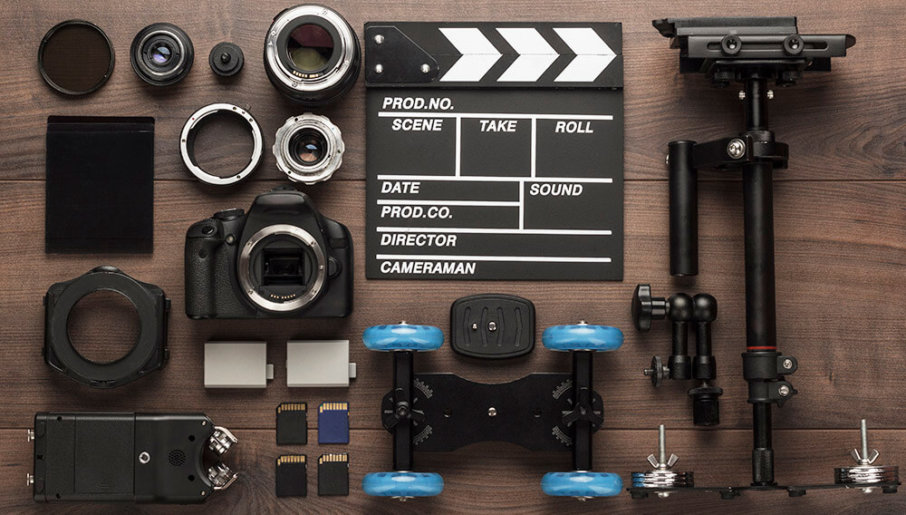
March 4, 2024
10 Must-Have Tools in Every Studio Video Production
In the world of videography, especially within the dynamic landscapes of Qatar, UAE, and KSA, the right tools can be the bridge between an idea and its high-quality execution. A2Z Media, with its deep understanding of personalized video content and studio video production, presents a curated list of essential tools that every videographer should have in their arsenal. Whether you're aiming to hold professional shoots or just stepping into the field, these tools are your cornerstone for success. 1. High-Quality Camera The Heart of Videography DSLR or Mirrorless Cameras: Depending on the project's complexity and budget, you might opt for a DSLR or mirrorless camera for their versatility and high-quality output, suitable for a broad range of video projects. Cinema Cameras: For advanced filmmaking needs, cinema cameras provide superior image quality and greater control over depth of field, enabling a more cinematic look. 2. Tripods and Stabilizing Gear The Foundation of Stability Sturdy Tripods: Essential for static shots. Gimbals and Stabilizers: For smooth, moving shots. 3. Lighting Equipment Setting the Scene LED Panels: LED panels are versatile and energy-efficient, suitable for a variety of settings. Softboxes: Softboxes diffuse light, reducing harsh shadows and creating a flattering light for subjects. 4. Microphones Capturing Clear Audio Lapel Mics: Great for interviews, capturing clear voice audio without intrusive background noise. Shotgun Mics: Ideal for capturing directional sound. 5. High-Resolution Monitors Ensuring Precision in Every Frame A high-resolution monitor is crucial for editing, allowing you to see your footage in detail and ensure color accuracy and clarity. This tool is essential for making precise edits and color corrections. 6. Video Editing Software Crafting Your Story Adobe Premiere Pro: For comprehensive editing. Final Cut Pro X: Offers powerful editing tools for Mac users. 7. External Hard Drives Secure Storage Solutions High-definition video files are large, making external hard drives essential for storing raw and edited footage securely. They also serve as a backup to prevent data loss. 8. Reflectors and Diffusers Mastering Light Control Reflectors and diffusers are simple yet effective tools for manipulating light. They can brighten dark areas, soften harsh sunlight, and create more visually appealing shots. 9. Backgrounds and Green Screens Unlimited Creative Potential Green screens allow for the addition of digital backgrounds in post-production, offering unlimited creative potential. They are perfect for creating special effects or placing your subject in any location. 10. Audio Editing Tools Polishing Your Sound Audacity or Adobe Audition: Clear, crisp audio is as important as stunning visuals. Tools like Audacity or Adobe Audition can help refine your audio tracks, removing noise and enhancing clarity. Conclusion In the fast-evolving digital age, personalized video content stands out as a powerful tool for storytelling and brand promotion. A2Z Media understands the unique challenges and opportunities within the Middle East's marketing landscape. By equipping yourself with these essential tools for Studio Video Production, you're not just preparing to meet industry standards; you're setting the stage for innovation and creativity in your projects. Explore more videography insights and connect with like-minded professionals on our pillar blog, "Shoot Like a Pro: Quick Videography Basics for Impactful Brand Stories" to enhance your skills and knowledge in this exciting field.
Read more...
March 3, 2024
The Best Ecommerce Web Design Trends to Adopt in 2024
In the ever-evolving world of e-commerce, staying ahead of the curve is not just beneficial—it's essential. As we step into 2024, A2Z Media is here to guide you through the maze of web design trends that are shaping the future of online shopping. Whether you're planning a website launch or looking to refresh your current e-commerce platform, understanding these trends can help you create a more engaging and effective online presence. 1. Mobile-First Design Embracing the Mobile Shopping Surge With mobile commerce sales skyrocketing, a mobile-first approach is no longer optional. This design philosophy ensures your site is optimized for smaller screens first, providing a seamless shopping experience for users on the go. Key features include: Simplified navigation menus Fast-loading pages Touch-friendly buttons and interfaces 2. Dark Mode Aesthetics Enhancing Visual Comfort Dark mode has become a popular choice for reducing eye strain and saving battery life on devices. Incorporating a dark theme option in your e-commerce site can not only improve usability but also give your site a modern, sophisticated look. Considerations include: Contrast ratios for readability Dark mode toggles for user preference Color schemes that pop against dark backgrounds 3. Advanced Personalization Creating Tailored Shopping Experiences Leveraging data to offer personalized shopping experiences is a trend that continues to gain momentum. By analyzing user behavior, e-commerce sites can display personalized product recommendations, content, and deals. Techniques involve: AI-driven product suggestions Customizable content blocks based on user history Personalized email marketing campaigns 4. Interactive Product Visuals Engaging Customers with Dynamic Imagery To mimic the in-store experience online, e-commerce sites are turning to interactive visuals. This includes 360-degree product views, augmented reality (AR) experiences, and video demonstrations. These features can significantly enhance product understanding and boost confidence in purchase decisions. Conclusion Adopting these Ecommerce Web Design Trends in 2024 can set your online store apart, providing a competitive edge in the bustling digital marketplace. At A2Z Media, we understand the importance of staying updated with the latest trends to meet the evolving needs of our clients. Implementing these strategies not only caters to the preferences of modern consumers but also aligns with effective Website Launch Strategies. As you embark on your e-commerce journey this year, consider these trends not just as Website Development & Design choices, but as investments in the future of your brand's online success.
Read more...
February 29, 2024
Synergy or Setback? The Top Co-Branding Advantages and Disadvantages
In today's fast-paced market, creative brand design is not just about Visual Identity; it's about storytelling, connection, and innovation. Co-branding stands out as a strategy that blends the strengths of two or more brands. Yet, like any marketing strategy, it comes with its own set of advantages and disadvantages. This blog dives deep into the intricate dance of co-branding, exploring how it can either create a harmonious synergy or lead to unexpected setbacks. Advantages of Co-Branding 1. Expanding Market Reach The Power of Collaboration: Broader Audience: Co-branding allows brands to tap into each other's audiences, significantly expanding their reach, like the iconic collaboration between Nike and Apple, which merged fitness with technology, attracting tech-savvy athletes. Enhanced Credibility: Partnering with established brands can boost credibility and trust among consumers unfamiliar with your brand. Diverse Marketing Channels: Utilize various channels and creative brand design strategies, enhancing visual identity and engagement. 2. Shared Resources and Costs Efficiency in Collaboration: Cost Efficiency: Shared marketing efforts mean reduced costs for each brand, allowing for more extensive campaigns or higher-quality content. Resource Sharing: Combining talents, insights, and technologies can lead to innovative Rebranding Ideas and executions. Risk Mitigation: Sharing the branding stage can dilute individual brand risks associated with new product launches or campaigns. Disadvantages of Co-Branding 1. Potential for Brand Dilution The Risk of Mixed Messages: Confused Brand Identity: Without clear, cohesive branding guidelines, co-branding can confuse customers and dilute the visual identity. Misaligned Brand Values: Partnerships with brands having different core values can harm your brand’s reputation and customer trust. Customer Overlap: Limited audience overlap can lead to inefficient marketing, as was the risk in the Spotify and Uber collaboration. If the audience doesn’t fully overlap, the message may not resonate equally across all customer segments. 2. Challenges in Partnership Management Navigating the Complexities: Contractual Disputes: Differences in opinion on creative brand design, brand fonts, or campaign execution can lead to conflicts. Unequal Effort and Rewards: Ensuring that all parties contribute equally and reap proportional benefits can be challenging. Long-Term Commitments: Some co-branding efforts require long-term commitments that might not always align with changing market strategies or brand directions. Co-branding embodies a dual-edged sword in the realm of creative brand design. On one hand, it offers an unparalleled opportunity to merge visual identities, share audiences, and create something truly unique. On the other, it demands a high level of coordination, compatibility, and clarity to avoid diluting brand identities or confusing the target audience. As we navigate the advantages and disadvantages of co-branding, the key lies in careful selection, clear communication, and a shared vision. By focusing on these pillars, brands can leverage co-branding to unlock new levels of creativity and connection, ensuring that the partnership is marked by synergy rather than setbacks. For more insights on navigating the complexities of Branding and Design, don't miss our related blog, "5 Crucial Mistakes to Avoid in Branding and Design," where we explore pivotal strategies to ensure your brand’s integrity and appeal remain uncompromised.
Read more...
February 28, 2024
5 Simple Tricks to Skyrocket Your App Downloads
Navigating the world of Mobile App Development can be as daunting as it is exciting. With millions of apps competing for attention on various app stores, standing out and securing a high number of downloads overnight may seem like a dream. However, with the right strategies in place, increasing your app’s visibility and download rates is entirely achievable. This guide dives into five straightforward yet potent tricks designed to propel your App Downloads to new heights almost instantly. Tailored for both B2B and B2C markets, these insights are your first step towards making your app the next big thing in the digital realm. 1. Optimize for the App Store Understanding App Store Optimization (ASO): App Store Optimization (ASO) is the key to making your app more visible in app stores, thereby increasing the likelihood of downloads. Research and Use Relevant Keywords: Identify keywords your target audience is searching for and incorporate them into your app's title, description, and metadata. Design a Captivating App Icon: Your app icon is the first visual impression users have. Make it eye-catching and reflective of your app's purpose. Screenshots and Videos: Use high-quality screenshots and a compelling preview video to showcase your app's features and user interface. 2. Leverage Social Media Marketing Creating a Buzz on Social Platforms: Engage with Your Audience: Use social media platforms to engage with potential users. Share useful content related to your app's niche. Influencer Collaborations: Partner with influencers to reach a broader audience. Choose influencers who resonate with your brand and target demographic. Paid Social Ads: Invest in targeted social media ads to reach potential users based on their interests, behaviors, and location. 3. Encourage User Reviews and Ratings Boosting Credibility Through Feedback: Incentivize Reviews: Encourage your users to leave a review by offering them something valuable in return, like in-app rewards. Respond to Reviews: Show that you value user feedback by responding to reviews, addressing concerns, and thanking users for positive feedback. Highlight Positive Reviews: Feature positive reviews in your marketing materials and on your website to build trust with potential users. 4. Utilize Content Marketing Engaging Potential Users with Valuable Content: Blog Posts: Write informative blog posts that provide value to your target audience and subtly promote your app. Email Newsletters: Use email marketing to keep your audience informed about your app's features, updates, and promotional offers. Guest Posting: Collaborate with popular blogs or platforms in your app's niche to reach a wider audience. 5. Implement Referral Programs Encouraging Word-of-Mouth Marketing: Offer Incentives for Referrals: Provide current users with incentives for referring new users to your app, such as discounts or premium features. Make Sharing Easy: Include social sharing buttons within your app to make it easy for users to share your app with their networks. Track Referral Success: Use analytics to track the success of your referral program and make adjustments as needed. Boosting your app's download rates doesn't have to be an insurmountable challenge. By implementing these simple tricks, you can significantly increase visibility and attract more users. Remember, the key is to be consistent in your efforts and always look for innovative ways to engage with your target audience. A2Z Media is here to support you every step of the way, from development to marketing, ensuring your app achieves the success it deserves.
Read more...
February 27, 2024
The Top Strategies to Overcome Challenges of CRM in The Middle East
In the dynamic business landscape of the Middle East, CRM (Customer Relationship Management) plays a pivotal role in shaping successful customer interactions and driving sales growth. Yet, navigating the challenges of CRM in this region involves addressing unique market dynamics, cultural preferences, and evolving technological trends. This blog aims to provide strategies and suggestions for overcoming these challenges. 1. Understanding Local Market Dynamics Adapt to Cultural Nuances Tailor CRM interfaces and communications to support Arabic, ensuring right-to-left text compatibility. Customize messaging within CRM campaigns to reflect local holidays, traditions, and social norms. Example: Consider how a retail chain could customize its CRM to send special offers during Ramadan, enhancing customer engagement. 2. Integrating CRM with Existing Systems Seamless Integration Solutions Choose CRM solutions that offer flexible integration capabilities. Assess and map out your technology ecosystem to ensure seamless data flow between systems. Employ expert IT support to ensure smooth integration. Example: HubSpot exemplifies the ideal CRM for seamless integration across diverse business systems, connecting smoothly with ERP systems, marketing platforms, and social media, ensuring efficient data flow and operational cohesion. 3. Data Privacy and Security Concerns Robust Security Measures Implement CRM security features: Use CRM systems with data encryption and user access controls to protect customer information. Comply with local laws: Ensure your CRM usage adheres to Middle Eastern data protection regulations for legal compliance and customer trust. 4. Achieving User Adoption User-Friendly Training Programs Tailor training for all levels: Develop comprehensive training materials and sessions tailored to different user levels within the CRM, such as HubSpot’s extensive knowledge base and certification courses. Foster an open feedback culture: Encourage users to share their CRM experiences to guide continuous learning and system improvements. 5. Customizing CRM to Fit Business Needs Tailored CRM Strategies Utilize the customization capabilities of CRM systems like HubSpot to tailor functionalities to your business needs, including automation, reporting, and customer segmentation. Engage with CRM consultants or partners to leverage best practices in customization. Example: A healthcare provider could work with a HubSpot partner to develop custom CRM workflows that better manage patient engagements and follow-ups. Overcoming the challenges of CRM in the Middle East requires a strategic approach, focusing on cultural adaptation, seamless integration, data security, user adoption, and system customization. By leveraging a comprehensive CRM solution like HubSpot and considering the suggested examples as a blueprint, businesses can enhance their customer relationship management and achieve greater success in the region. A2Z Media is dedicated to supporting businesses through these challenges, offering insights and solutions tailored to the unique market dynamics of the Middle East.
Read more...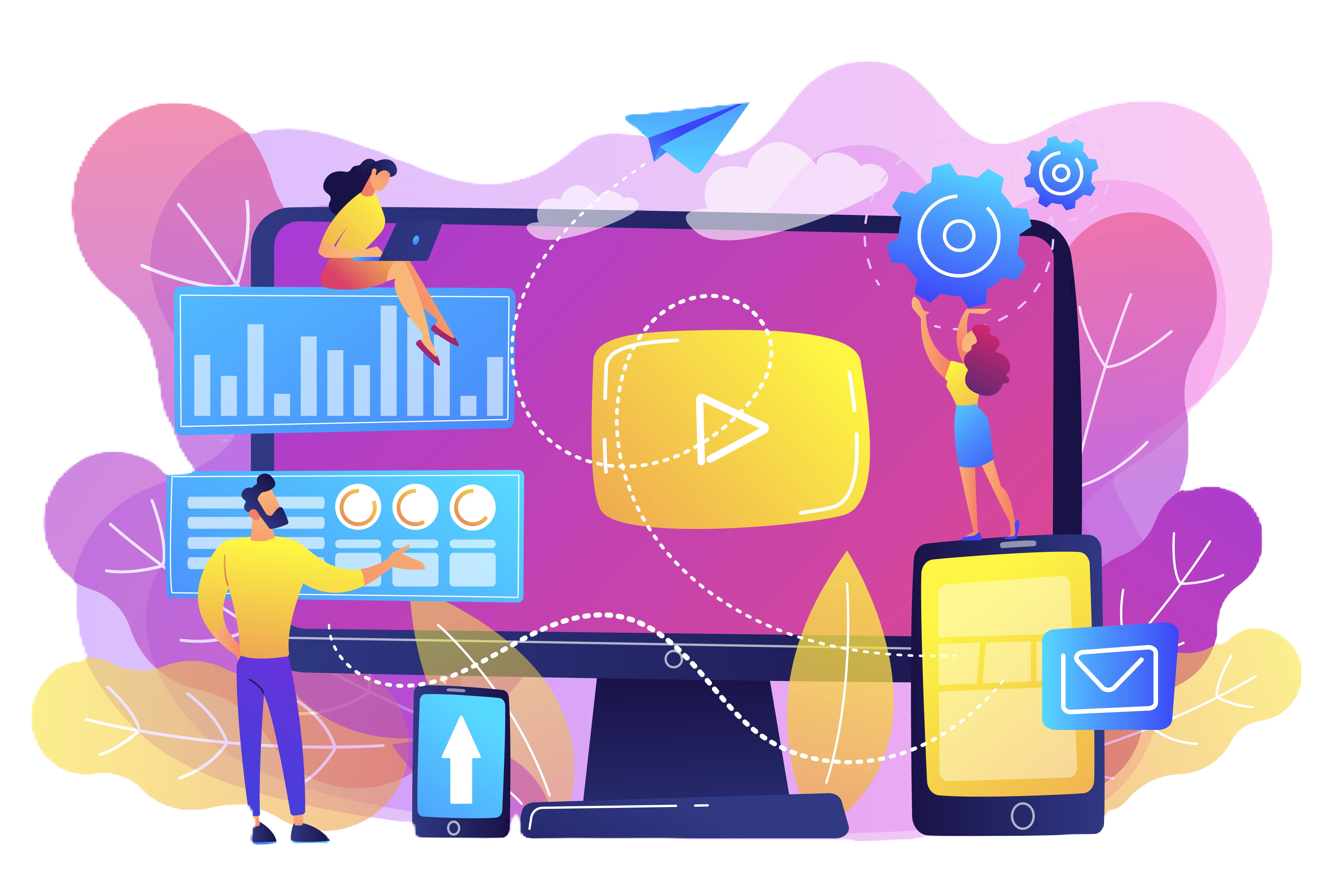
February 26, 2024
5 Steps to Creating Successful Personalized Video Content
In the digital landscape, personalized video content stands as a beacon of innovation, transforming the way brands connect with their audiences. This technique not only elevates engagement but also personalizes the marketing experience, making each viewer feel uniquely valued. Below, we'll navigate through five pivotal steps to craft personalized video content, illustrated with real-world brand examples. 1. Understand Your Audience Know Who You're Talking To To tailor content that resonates, you must first deeply understand your audience. Segment Your Audience: Break them down by demographics, behaviors, or preferences. Gather Insights: Utilize data analytics and customer feedback. Create Personas: Develop personas to guide content creation. Example: Spotify’s “Wrapped” campaign brilliantly showcases personalized summaries of users' listening habits, leveraging data to create a deeply personal and engaging experience. 2. Set Clear Objectives Define Your Goals Clarify what you aim to achieve with your personalized video content. Determine Your Purpose: Be it boosting sales, enhancing brand awareness, or fostering loyalty. Choose Relevant Metrics: Select KPIs that will gauge your success effectively. Example: Nike allows users to design custom shoes and then engages them with personalized videos showcasing their designs, directly linking personalization to increased customer engagement. 3. Craft Your Message Make It Personal and Relevant Personalization goes beyond using the viewer's name; it's about crafting a message that speaks to their interests and needs. Personalize the Script: Reference specific viewer data to make the script resonate on a personal level. Design for Engagement: Encourage interaction through relevant content. 4. Leverage Technology Use the Right Tools Choosing the right platform and tools is crucial for delivering personalized video content efficiently. Select a Video Platform: Pick one that supports personalization and integrates with your customer database. Incorporate Interactive Elements: Engage viewers with clickable CTAs. 5. Analyze and Optimize Learn and Improve Continuous analysis and optimization are key to refining your strategy. Monitor Performance: Review your video's performance regularly. Gather Feedback: Seek viewer input to understand preferences. Iterate and Refine: Use insights to improve future content. Example: Airbnb’s “Made Possible By Hosts” campaign featured personalized stories from guests and hosts, using feedback and performance data to enhance storytelling techniques. Conclusion Personalized video content is more than a marketing trend; it's a powerful tool for creating meaningful connections with your audience. By understanding your audience, setting clear objectives, crafting a personalized message, leveraging technology, and continuously optimizing based on insights, you can create content that not only stands out but also resonates deeply with viewers. Brands like Spotify, Nike, and Airbnb have already demonstrated the profound impact of personalized video content. Now, it's your turn to harness this potential and transform your marketing strategy. If you're interested in refining your videography skills for impactful brand storytelling, be sure to check out our blog 'Shoot Like a Pro: Quick Videography Basics for Impactful Brand Stories' to enhance your personalized video content creation journey."
Read more...
February 25, 2024
Key Strategies to Boost Your Brand's Public Relations Event Management
In the realm of marketing, the fusion of public relations (PR) and event management is not just a strategy but an art. It's about painting your brand's story in the minds of your audience, creating a lasting impression that transcends the event itself. The Art of Buzz: Insider Secrets on Public Relations Event Management uncovers the layers of this intricate process, guiding you through the mastery of creating unforgettable events powered by strategic PR. Understanding the Synergy Between PR and Event Management At the heart of every successful event lies a story waiting to be told. PR and event management work hand-in-hand to narrate this tale, building anticipation, engaging participants, and ensuring the message resonates long after the curtains close. Why This Partnership Matters Amplified Reach: Combining PR efforts with event management can significantly extend the reach of your event, tapping into audiences you might not have accessed otherwise. Enhanced Credibility: Thoughtfully crafted PR activities surrounding an event can enhance your brand's credibility, positioning you as a leader in your industry. Memorable Impact: Events that are talked about, shared, and remembered are the ones that weave PR into their fabric, creating moments that stick with attendees. Strategies for Creating Buzz Creating buzz is about igniting conversations and excitement around your event. Here are insider secrets to make your event the talk of the town: 1. Before the Event: Build Anticipation Tease with Pre-Event Content: Utilize social media, press releases, and influencer partnerships to tease key aspects of the event, building anticipation. Engage with Your Audience: Create interactive opportunities such as contests or Q&A sessions that invite potential attendees to connect with your brand before the event. 2. During the Event: Capture and Amplify Live Updates: Use social media platforms for live updates, behind-the-scenes looks, and real-time engagement to create a buzz online.Partner with influencers Influencer Collaborations: Partner with influencers to share their live experiences, reaching their followers and broadening your event's visibility. 3. After the Event: Sustain the Conversation Share Highlights: Post-event engagement such as press releases, blog posts, and social media content that highlight key moments can keep the conversation going. Feedback Loop: Engage with attendees for feedback and share this openly to show transparency and foster community. Measuring the Impact of Your PR Efforts The true artistry in PR event management lies in measuring the impact. Understanding how your efforts translated into engagement, reach, and ultimately ROI is crucial. Utilize analytics tools to track media mentions, social media engagement, and attendee feedback to gauge the success of your PR strategy. Key Metrics to Consider Media Coverage: Quantity and quality of media coverage pre and post-event. Social Media Metrics: Engagement rates, shares, and hashtag usage related to the event. Attendee Feedback: Surveys and social media interactions that provide insights into the attendee experience. In conclusion, the art of creating buzz through public relations event management is a delicate balance of storytelling, strategic planning, and engagement. By uncovering these insider secrets, you're equipped to transform your next event into a memorable experience that not only captivates but also resonates with your audience. Remember, in the world of events, the buzz isn't just about noise—it's about creating a harmony that sings the praises of your brand long into the future.
Read more...
February 22, 2024
3 Essential Product Photography Ideas for Your eCommerce Strategy
In the competitive realm of digital marketing, standing out with unique product photography is not just an option—it's a necessity. A2Z Media brings you transformative product photography ideas that cater specifically to eCommerce businesses and marketers. This guide will walk you through creative strategies to captivate your audience and enhance your online marketing efforts. 1. Utilizing Contextual Backdrops Enhance the Narrative with Creative Settings Storytelling Through Scenes: Craft a narrative around your product by placing it in a context that resonates with your audience, thereby enhancing the product's appeal and connection. Brand Consistency: Ensure the backdrop aligns with your brand identity, creating a cohesive look across your marketing channels. Engagement Boost: Contextual images are more likely to engage users and encourage social sharing, amplifying your reach. 2. Playing with Lighting Techniques Mastering Shadows and Highlights for Dramatic Effect Soft Lighting for Mood: Use soft, diffused lighting to create a mood that complements your product, from cozy warmth to sleek professionalism. High Contrast for Impact: Employ high-contrast lighting to highlight features and create a dynamic look that catches the eye. Creative Colors: Experiment with colored lights to evoke emotions or highlight brand colors, making your product pop. 3. Innovative Angles and Perspectives Showcasing Products in a New Light Unexpected Angles: Capture your product from unconventional angles to reveal interesting details and features that standard shots might miss. 360-Degree Views: Provide a comprehensive look at your product by using rotating images or videos, offering customers a virtual hands-on experience. Macro Shots for Detail: Zoom in on the details that set your product apart, from texture to craftsmanship, making it irresistible. Conclusion Elevating your eCommerce strategy with innovative product photography ideas is a game-changer in today’s visually driven market. Implement these techniques to transform how potential customers see your products, making every click a step toward conversion. A2Z Media's expertise in creative marketing strategies ensures that your product not only looks good but also communicates your brand's unique story, driving engagement and sales.
Read more...
February 21, 2024
Shoot Like a Pro: Quick Videography Basics for Impactful Brand Stories
Creating impactful brand stories through videography is an art that requires understanding the basics. In this blog, we'll dive into quick videography basics aimed at helping you, our dedicated marketing directors and brand managers, elevate your brand's narrative. Whether you're crafting content for a multinational conglomerate or a spirited startup, these foundational tips will help you shoot like a pro. Laying the Foundation: Videography Essentials for Marketers 1. Crafting Your Narrative Understand Your Story: Before the camera rolls, clarity on your story is paramount. A well-defined narrative forms the backbone of effective video content, essential for capturing your target market's attention. Consider: What is the message? Who is the target audience? Which emotions are you aiming to evoke? This preparatory step is vital for aligning your video content with your overarching digital marketing strategy, ensuring every frame contributes to your brand’s objectives. 2. Technical Essentials for High-Quality Content Equip Yourself Right: Leveraging the right tools is crucial for creating high-quality marketing videos. Key essentials include: Reliable Cameras: Opt for cameras that deliver both in quality and functionality, suitable for your content requirements. Stabilization Tools: Utilize tripods or gimbals to ensure smooth, professional footage. Optimal Lighting: Proper lighting can dramatically enhance your video’s appeal, highlighting your product or message effectively. Crystal Clear Audio: Invest in quality microphones to ensure your message is heard clearly, an often-underestimated aspect of video production. These components are foundational for crafting video content that resonates with your audience, driving engagement, and enhancing your brand's presence in the digital realm. 3. Visual Composition and Aesthetics Framing Your Shots Composition influences the viewer's perception, making it a critical aspect of videography. Implementing techniques like the Rule of Thirds, appropriate headroom, and effective use of depth can transform your shots from amateur to professional. Rule of Thirds: Position key elements along the grid lines for a balanced composition. Headroom and Lead Room: Give your subjects space to breathe, enhancing viewer comfort. Depth: Use foreground and background elements creatively to add visual interest. Lighting and Exposure Mastering lighting and exposure settings is essential for capturing the right mood and quality. Utilize natural light whenever possible and understand your camera’s settings to adapt to various lighting conditions, ensuring your visuals are always top-notch. The Power of Sound Compelling visuals paired with subpar audio can diminish the impact of your content. High-quality audio is crucial for maintaining viewer engagement and ensuring your message is delivered effectively. 4. Post-Production: Editing for Impact The editing phase is where your story comes together. Focus on: Pacing: Keep it dynamic but give your audience time to absorb the information. Transitions: Use them sparingly. Sometimes, a simple cut is more effective than a fancy transition. Color grading: Enhance your visuals with subtle color corrections to set the mood. 5. Continuous Learning and Experimentation Videography, much like any skill, improves with practice and experimentation. Stay abreast of the latest trends, experiment with new techniques, and continually refine your approach to storytelling. The digital marketing landscape is ever-evolving, and staying innovative in your video content creation will keep your brand relevant and engaging. By integrating these videography basics into your marketing strategy, you’re not just telling stories; you’re creating immersive experiences that captivate your audience and elevate your brand.
Read more...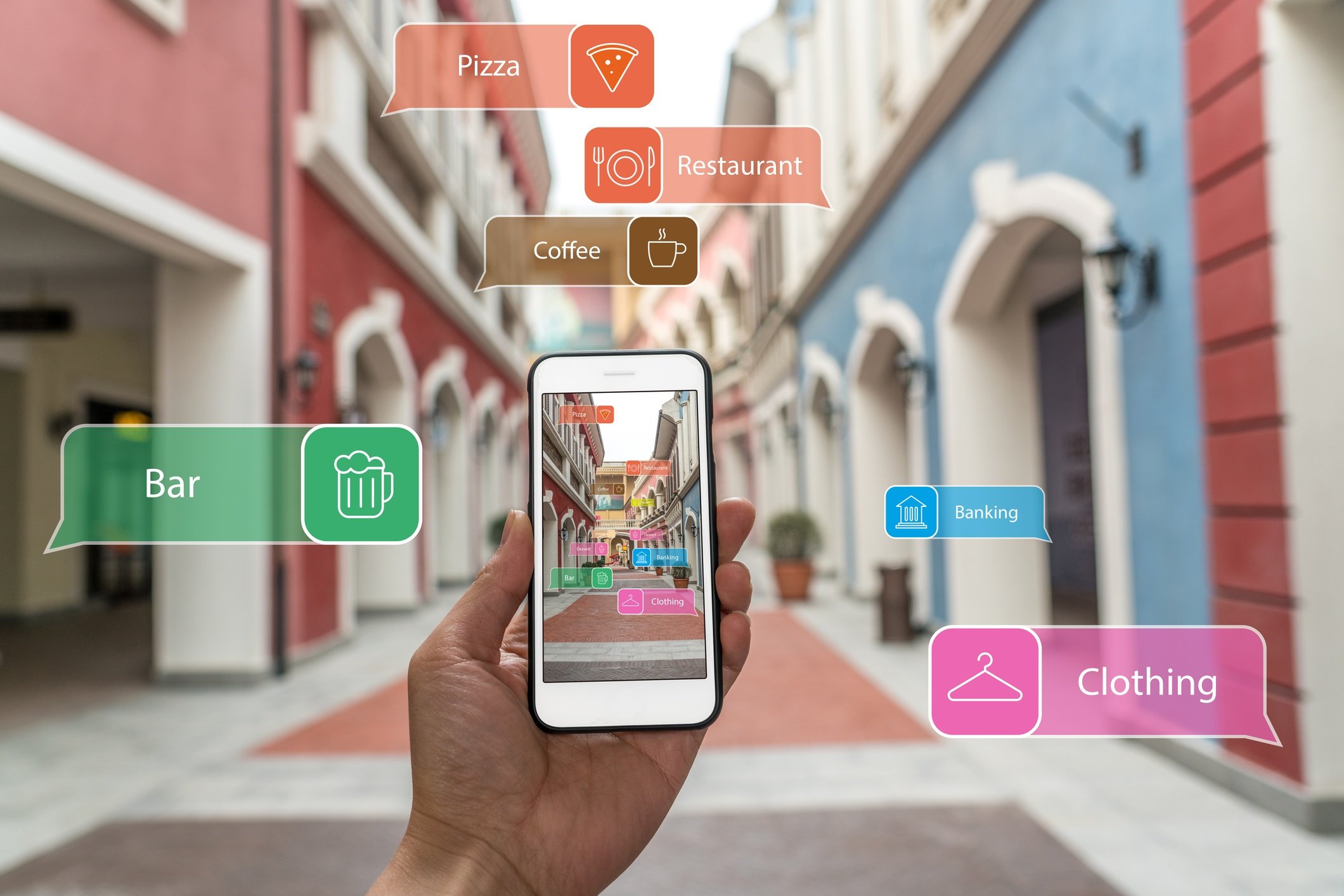
February 20, 2024
Will Augmented Reality Apps Ever Rule the World?
In an era where technology seamlessly integrates into our daily lives, augmented reality (AR) apps are emerging as the frontrunners of innovation. These apps promise a future where digital information doesn't just sit on our screens but overlay our reality, enhancing the way we see, learn, and interact with the world around us. But the question remains: Will Augmented Reality Apps ever rule the world? Let's dive deep into the realm of Mobile App Development to find out. 1. The Rise of Augmented Reality What is Augmented Reality? Augmented reality blends digital content with the physical world, creating a composite view that augments the real world with computer-generated elements. Current Impact on Industries Retail: IKEA's AR app, "IKEA Place," allows customers to visualize furniture in their homes before purchasing. Education: Google's "Expeditions AR" transforms classrooms by bringing 3D objects into lessons, making learning more interactive and engaging. Mobile App Development and AR The integration of AR into mobile apps is revolutionizing user experiences, making applications not just tools but gateways to immersive worlds. 2. Benefits for Businesses Enhanced Customer Engagement Interactive marketing campaigns that captivate users, such as Pepsi's bus shelter AR advertisement, surprised commuters with seemingly real-life scenarios like a giant robot attack. Real-time product visualization enables customers to try on clothes or makeup virtually, as seen with Sephora's "Virtual Artist" app. Operational Efficiency AR applications in training and simulations offer hands-on learning without risks, like Boeing's use of AR for assembly line training. Maintenance and remote support through AR can reduce downtimes and improve service, exemplified by the "Vuforia Chalk" app for remote technical assistance. Competitive Edge Creating unique brand experiences that resonate with users, such as Snapchat's AR filters, which blend entertainment with social media. Increased user retention through engaging and memorable app experiences. 3. Challenges to Overcome Technical Limitations Hardware dependencies can limit AR experiences to users with the latest devices. Development complexity and the need for specialized skills can raise the barrier to entry for businesses. User Adoption Innovations must balance novelty with user comfort to encourage widespread adoption. Privacy and security concerns, especially with apps that use real-time location data, must be addressed. 4. Future Projections Market Growth The AR market is expected to see exponential growth, with projections suggesting a multibillion-dollar expansion in the next few years. Technological Advancements Advances in AR technology will lead to smarter, faster, and more integrated solutions, reducing current limitations and opening new possibilities. Sector Expansion AR's application will extend beyond gaming and entertainment, with significant impacts anticipated in healthcare, education, and more. For instance, AR can assist surgeons during procedures or help students interact with complex biological structures in 3D. As augmented reality continues to blend more seamlessly into our lives, its dominion over the digital world seems not just possible but probable. For businesses in the Middle East and beyond, the journey into AR app development is not a question of if but when. With AR, brands have the opportunity to redefine customer engagement, operational efficiency, and competitive advantage. While the path is fraught with challenges, the future it promises—of a world where digital and physical realities coexist and enrich each other—is too compelling to ignore.
Read more...
February 19, 2024
The Best Brand Fonts for Making a Lasting Impression
In the bustling marketplaces of the Middle East, from the innovative hubs of Qatar to the dynamic cities of the UAE and KSA, standing out is not just an option—it's a necessity. For brands looking to make their mark, the choice of font is more than a design decision; it's a strategic move. Understanding the Power of Brand Fonts Choosing the right brand font is akin to selecting the right attire for a key business meeting. It communicates your brand's personality, values, and reliability without saying a word. But what makes a font not just good, but great for your brand? It's about alignment with your brand's character, the ease of readability across various platforms, and the uniqueness that sets you apart from competitors. Let's dive into the best brand fonts that can help elevate your brand's visual identity and make it unforgettable. Serif Fonts: Elegance and Authority Garamond: Preferred for its timeless elegance, Garamond suits brands aiming for a classic, scholarly appeal. Baskerville: With its sharp contrasts and sophisticated style, Baskerville is ideal for luxury brands that wish to convey reliability and value. Sans Serif Fonts: Modernity and Clarity Futura: Celebrated for its geometric shapes and clean lines, Futura is perfect for brands looking to project a modern, efficient image. Roboto: Versatile and user-friendly, Roboto is a favorite for tech companies and startups for its approachable yet professional look. Script Fonts: Personal Touch and Flair Pacifico: Offering a laid-back vibe, Pacifico is excellent for lifestyle brands that want to appear accessible and friendly. Brush Script: Ideal for creative brands, Brush Script adds a personal, handmade touch to branding materials. Display Fonts: Distinctiveness and Impact Bebas Neue: Known for its strong, impactful presence, Bebas Neue is suited for attention-grabbing headlines and branding that stands out. Lobster: Lobster offers a unique blend of vintage and contemporary, great for brands that celebrate individuality and creativity. Custom Fonts: Crafting Your Unique Brand Voice Investing in a custom font allows for unparalleled uniqueness in your visual identity, echoing your brand's individuality and setting you apart in the market. Remember to navigate the legalities of font usage by understanding licensing agreements to avoid potential copyright issues. Visual Identity and Rebranding Ideas Your choice of brand font plays a pivotal role in shaping your visual identity and can be a powerful tool in rebranding efforts. A well-chosen font reflects your brand's personality, values, and ambition, becoming a cornerstone of your branding strategy. Incorporating these brand fonts can revitalize your brand's appearance, offering fresh rebranding ideas that resonate with your audience and strengthen your market position. Further Reading For more insights on avoiding common pitfalls in your branding and design efforts, check out our blog on "5 Crucial Mistakes to Avoid in Branding and Design". This guide complements your journey toward creating a compelling visual identity, ensuring your brand's fonts align perfectly with your overall branding strategy.
Read more...
February 18, 2024
10 Rebranding Ideas That Will Transform Your Business Image
Starting Fresh: Why Rebrand? Rebranding your business can breathe new life into your brand, making it more relevant and engaging in today's fast-paced market. Whether you're looking to attract a new audience or refresh your image, rebranding is a powerful way to align your brand with your current vision and goals. Let's dive into ten effective Rebranding Ideas for businesses that can help transform your brand image and Visual Identity. 1. Refresh Your Logo and Brand Colors Updating your logo and brand colors can significantly impact your brand's perception. A modern, visually appealing logo and a color scheme that resonates with your target audience can make your brand more memorable and distinctive. 2. Revise Your Brand Mission and Vision Ensure your brand's mission and vision reflect your current business goals and values. A clear, updated mission and vision statement can guide your branding efforts and help connect with your audience on a deeper level. 3. Modernize Your Website Design Your website is often the first point of contact with potential customers. A sleek, user-friendly website design can improve user experience and reflect your brand's updated visual identity and values. 4. Enhance Your Social Media Presence Social media is a vital tool for engaging with your audience. Refresh your social media profiles with new content, visuals, and interactive elements to boost engagement and showcase your rebranded image. 5. Adopt New Marketing Channels Exploring new marketing channels, such as influencer collaborations or podcast advertising, can introduce your rebranded business to new audiences and keep your marketing strategies fresh and effective. 6. Update Brand Messaging and Tone of Voice Your brand's messaging and tone of voice should evolve with your audience's changing preferences. Ensure your content resonates with your target demographic by updating your messaging to be more relatable and engaging. 7. Focus on Customer Experience Enhancing the customer experience is crucial in a successful rebrand. Consider new ways to delight your customers, such as personalized services or improved customer support, to build loyalty and positive brand perception. 8. Leverage User-Generated Content User-generated content (UGC) can lend authenticity to your brand and engage your community. Encourage your customers to share their experiences with your brand and feature this content in your marketing efforts. 9. Implement Sustainable Practices Consumers today value sustainability. Incorporating eco-friendly practices into your business operations and highlighting them in your rebranding can attract a more conscientious audience. 10. Engage with Community and Social Causes Show your brand's commitment to positive change by supporting community projects or social causes. This not only enhances your brand image but also builds meaningful connections with your audience. Rebranding offers a unique opportunity to revitalize your brand and align it with your current business strategy and audience expectations. By implementing these effective rebranding strategies for businesses, you can transform your brand image and position your business for future success. Remember, while rebranding can offer a fresh start, it's essential to avoid common pitfalls. Check out our blog on "5 Crucial Mistakes to Avoid in Branding and Design" for insights on navigating your rebranding journey smoothly.
Read more...
February 15, 2024
CLICKS TO CUSTOMERS: THE DIFFERENCE BETWEEN SEARCH AND DISPLAY ADS
Navigating the digital ad world can feel like a treasure hunt. You're on a quest to turn those elusive clicks into gold—aka, loyal customers. Let’s dive into the nitty-gritty of two main tools you’ve got: search and display ads. Understanding these can seriously amp up your marketing game, making sure you're not just shouting into the void. 1. Search Ads: Your Direct Line to the Seekers Imagine someone’s Googling "best chocolate chip cookies near me." If you're a bakery in town, you want your ad popping up. That's search ads for you—straight to the point, targeting folks actively searching for what you offer. Right on Target: These ads are like using a GPS to reach your target audience. They’re already looking for you; you just need to show up. All About Visibility: With search ads, you’re front and center when potential customers are on the hunt. It’s your chance to make a first impression that counts. Measuring Success: One of the best parts? You can see exactly how well your ads are doing. This means you can tweak and adjust to your heart’s content, making sure every penny counts. 2. Display Ads: Catching Eyes and Building Buzz Now, let’s talk about display ads. These are the billboards of the internet, showing up on websites, blogs, and social media. They’re not about catching someone in the act of searching but about sparking interest, maybe even before someone knows they want what you’ve got. Building the Buzz: These ads are all about getting your name out there, creating that “Oh yeah, I’ve heard of them” moment. Pretty as a Picture: With display ads, you get to show off with colors, images, and even video. It’s your chance to get creative and grab attention. Smart Targeting: These aren’t just random shots in the dark. With personalized ads, you can make sure you’re showing up for just the right people, whether it’s based on what they like, where they hang out online, or even their shopping habits. The Dynamic Duo: Search and Display Together So, what’s the real magic? Using both search and display ads together. It’s like throwing a one-two punch in your digital paid media strategy. Consistent Chatter: Keep your message smooth across both types of ads. It’s like telling a story that gets your target audience nodding along, thinking, “Yep, that’s for me.” Learning from the Best: Dive into the data from both search and display ads. What’s working? What’s not? This is your roadmap to getting even better. Trial and Error: Don’t be afraid to try new things. Test out different messages, images, and strategies. Find out what makes your audience click (literally). Come Back for More: Use the power of personalized ads to bring people back. Maybe they visited your site but left without buying. A well-placed display ad can remind them what they’re missing out on. Understanding the difference between search and display ads isn’t just marketing speak; it’s about finding the best ways to connect with your audience and turning those chance encounters into lasting relationships. And hey, if you can have a bit of fun along the way, even better.
Read more...
February 14, 2024
Corporate Website Development: 5 Key Strategies to Enhance User Experience
Creating a corporate website that stands out requires more than just a sleek design. It's about crafting an experience that resonates with your visitors, encouraging engagement, and facilitating seamless navigation. Below, we dive into five actionable strategies to elevate your corporate website's user experience, making it not only visually appealing but also functionally superior. 1. Embrace Mobile-First Design Turn Your Site Mobile-Friendly With the majority of internet browsing happening on mobile devices, adopting a mobile-first approach is no longer optional. This strategy involves designing your website for small screens first, ensuring content and navigation are easily accessible on smartphones and tablets, before scaling up to larger screens. 2. Act on User Feedback Utilize Insights to Refine UX Direct feedback from your users is invaluable. Implement tools to gather this data, such as surveys, feedback forms, and user testing sessions. Analyzing this information allows you to make informed adjustments, enhancing the usability and overall satisfaction with your site. 3. Boost Your Site's Speed Speed Optimization Techniques A fast-loading website is essential for keeping your audience's attention. Techniques like compressing images, leveraging browser caching, and minimizing CSS and JavaScript can significantly reduce load times, improving the user experience and your site’s SEO performance. 4. Streamline Navigation Make Finding Information Effortless Clear, intuitive navigation is key to keeping visitors on your site. Simplify your site's structure and include a well-organized menu with straightforward labels. Consider implementing a search function for larger sites, making it easier for users to find specific content. 5. Prioritize Accessibility Ensure Your Site Is Accessible to All Web accessibility means making your site usable for everyone, including people with disabilities. Simple adjustments, such as ensuring high contrast for text, adding alt text to images, and ensuring your site is navigable via keyboard, can make a big difference in making your site more inclusive. Conclusion By implementing these five key strategies, you can significantly enhance the user experience on your corporate website. Remember, a great website is an evolving entity that requires ongoing attention and adjustment based on user feedback and emerging web trends. Keep testing, keep learning, and your website will not only attract visitors but also keep them engaged. These strategies are just the starting point. A crucial part of this process involves understanding effective website launch strategies, which play a pivotal role in making your site accessible, engaging, and user-friendly from day one. The journey to creating an exceptional corporate website is continuous, filled with learning and adaptation to meet your users' evolving needs. Engage with your audience, understand their preferences, and always strive to deliver a better experience. Your website is often the first impression potential clients have of your business—make it count.
Read more...
February 13, 2024
7 Essential Steps to Create a Visual Identity Beyond Just a Logo
Creating a strong visual identity is paramount for brands looking to distinguish themselves in a crowded marketplace. Beyond just a logo, a visual identity encompasses the complete visual aspect of your brand, including color palettes, typography, and imagery, all of which work in harmony to convey your brand's essence. Here's how you can build a visual identity that resonates deeply with your audience and stands the test of time. 1. Understand Your Target Audience and Brand Personality Before diving into the design, it’s crucial to understand who you are designing for and what your brand stands for. Your visual identity should reflect the preferences of your target audience while embodying your brand's personality and values. This alignment ensures your visual identity resonates with the right people and accurately represents your brand ethos. 2. Conduct Comprehensive Market Research Analyze your competitors and the current market trends to identify opportunities for differentiation. Understanding the competitive landscape helps in crafting a visual identity that sets you apart, ensuring your brand is both unique and relevant. 3. Develop Your Brand’s Core Elements Logo and Color Palette While the logo isn’t the entirety of your brand identity, it's a critical component that aids in brand recognition. A well-designed logo and a thoughtfully chosen color palette can significantly impact customer perception, invoking the desired emotional response and reinforcing your brand’s messaging. Typography and Imagery Select fonts and imagery that complement your brand's tone and personality. Consistent use of typography across all your communications strengthens your brand identity, while cohesive imagery helps tell your brand's story more effectively. 4. Craft a Compelling Brand Story Your brand story is the foundation of your visual identity, weaving together your values, history, and mission. It should connect with your audience on an emotional level, making your brand more relatable and memorable. 5. Define the Purpose and Role of Your Visual Brand Identity Consider the various platforms where your visual identity will be applied, from digital to print, and ensure versatility and consistency across all mediums. This clarity helps in creating a flexible yet cohesive visual identity. 6. Document Your Brand Visual Identity with Guidelines Create a brand style guide to maintain consistency in how your visual identity is applied. This document should detail the use of logos, color palettes, typography, and other visual elements, ensuring anyone working on your brand maintains uniformity. 7. Final Analysis and Application Before finalizing your visual identity, ensure it’s distinct, scalable, and cohesive. Then, apply your new visual identity across all brand touchpoints, from your website to social media, packaging, and beyond, to present a unified brand image. A well-executed visual identity revamp goes beyond aesthetics, serving as a strategic tool for storytelling and engagement. By thoughtfully implementing the components of visual identity and aligning them with your brand strategy, your brand not only captures attention but also leaves a lasting impression. Is your brand ready for a visual identity makeover? At A2Z Media, we specialize in crafting compelling visual identities that resonate with your target audience and amplify your brand’s impact. Contact us today to begin your brand’s transformation. For more insights on navigating the complexities of Branding and Design, don't miss our related blog, "5 Crucial Mistakes to Avoid in Branding and Design," where we explore pivotal strategies to ensure your brand’s integrity and appeal remain uncompromised.
Read more...
February 12, 2024
Common Pitfalls in Mobile App Development & How to Avoid Them
In the bustling world of digital innovation, mobile apps have become cornerstones of business strategy and user engagement. However, the journey from concept to launch is fraught with challenges that can derail even the most promising projects. Let's dive into some common pitfalls in the mobile app development process and explore practical strategies to sidestep these obstacles. Critical Mistakes to Avoid in Your App Development Process: 1. Insufficient Market Research The Pitfall: Jumping into development without thoroughly understanding your market can lead to an app that misses the mark with users. Avoidance Strategy: Conduct detailed market research to identify user needs and preferences. Analyze competitors to find gaps your app can fill. Engage with your target audience through surveys or focus groups to validate your app idea. 2. Unclear App Objectives The Pitfall: Without a clear vision, your app development process can become a ship without a compass—drifting aimlessly and susceptible to feature creep. Avoidance Strategy: Define SMART objectives for your app early in the planning phase. Keep your team aligned with these goals throughout the development process. Regularly review objectives to ensure the project stays on course. 3. Ignoring User Experience (UX) Design The Pitfall: Underestimating the importance of UX design can result in an app that's frustrating, confusing, or simply unenjoyable to use. Avoidance Strategy: Invest in UX research to understand the user journey. Create wireframes and prototypes to test and refine the user interface. Incorporate user feedback to continuously improve the app's design. 4. Underestimating the Budget The Pitfall: It's easy to overlook certain costs, leading to budget shortfalls that can compromise the quality of your app or halt its progress. Avoidance Strategy: Prepare a comprehensive budget that accounts for all phases of development, including unexpected expenses. Monitor spending closely and adjust plans as necessary to stay within budget. 5. Overlooking Cross-Platform Compatibility The Pitfall: Developing exclusively for one platform can limit your app's reach and potential user base. Avoidance Strategy: Consider cross-platform development frameworks to efficiently target multiple platforms. Test your app on various devices to ensure consistent performance and user experience. 6. Neglecting App Security The Pitfall: Failing to prioritize security can lead to data breaches, damaging your reputation and user trust. Avoidance Strategy: Implement robust security measures from the start, including data encryption and secure coding practices. Conduct regular security audits and updates to protect user data. 7. Poorly Managing Project Scope The Pitfall: Scope creep can extend timelines, inflate budgets, and lead to project overload. Avoidance Strategy: Clearly define project scope and deliverables at the outset. Use agile methodologies to manage changes effectively and keep the project adaptable. Maintain open lines of communication with all stakeholders to manage expectations. 8. Inadequate Testing The Pitfall: Rushing through the testing phase or not covering all bases can result in launching an app riddled with bugs. Avoidance Strategy: Develop a comprehensive testing plan that includes unit, integration, and user acceptance testing. Encourage feedback from beta testers to identify and fix issues before launch. Wrapping Up Navigating the mobile app development process requires careful planning, attention to detail, and a proactive approach to problem-solving. By recognizing these common pitfalls and implementing the suggested strategies, you can steer your app development project toward success with confidence. Looking for expert guidance on your next app project? Reach out to us at A2Z Media. Our team is ready to help you transform your app vision into reality, ensuring a smooth development journey from start to finish.
Read more...
February 11, 2024
7 Essential Website Launch Strategies for Your Business
Launching a new website is a crucial moment teeming with opportunity. To turn this moment into a success story, it’s vital to deploy a blend of strategies that not only capture but maintain audience engagement. Let's dive into seven indispensable strategies that promise to elevate your website's launch and ensure its enduring success. 1. Comprehensive Pre-Launch Testing A smooth user experience is non-negotiable. Before you launch your website, thorough user experience (UX) testing can identify and rectify potential issues, ensuring your visitors encounter no hurdles. User Experience (UX) Testing: Conduct usability tests to refine the interface and navigation based on real user feedback. Performance Optimization: Use tools to assess and improve site speed, ensuring quick load times for all users. 2. SEO Fundamentals Visibility is key to a website's success. Establishing a solid SEO foundation ensures your site is discoverable by your target audience from the start. Start by mastering on-page SEO best practices to boost your site's discoverability. On-Page SEO: Optimize essential elements such as meta tags and keywords, and ensure your site is mobile-friendly. Technical SEO: Implement a sitemap and robots.txt to aid search engines in indexing your site more effectively. 3. Content Marketing Plan A content marketing plan is the heart of your digital presence, engaging visitors with high-quality, relevant content from day one. A strategic approach to content not only engages visitors but also supports your SEO efforts. Launch Content: Kick off with engaging, high-quality content tailored to your audience's interests and needs. Content Calendar: Develop a plan for regular content updates to keep your audience engaged and enhance your site's SEO. 4. Social Media Integration and Promotion Social media promotion extends your reach and fosters community. Integrating social media effectively can amplify your launch and draw in a broader audience. Integration: Ensure your site features social sharing options to facilitate engagement. Launch Campaign: Utilize social media to create buzz around your launch, using teasers and exclusive offers. 5. Email Marketing Campaign Email marketing offers a direct line to your audience, making it a powerful tool for personalized engagement. List Building: Start building your email list early by offering incentives for sign-ups. Launch Announcement: Craft an engaging email to announce your launch, highlighting what’s special about your site and offering exclusive deals. 6. Analytics Setup What gets measured gets improved. Setting up Google Analytics from day one enables you to track performance and understand visitor behavior. Tool Installation: Equip your site with analytics tools to monitor key metrics. Key Metrics: Focus on essential metrics like traffic sources, user engagement, and conversion rates to guide your optimization efforts. 7. Post-launch feedback and Iteration Continuous improvement is the hallmark of a successful website. Post-launch, actively seek out and implement feedback to refine and enhance your site. Feedback Collection: Use surveys and feedback tools to gather insights directly from your users. Continuous Improvement: Leverage user feedback and analytics to make informed adjustments and updates to your site. The launch of your website is just the beginning. By implementing these seven essential strategies, you're not only ensuring a successful debut but also laying the groundwork for sustained growth and engagement. Remember, the journey of a website is continuous, thriving on adaptation and improvement.
Read more...
February 8, 2024
5 Crucial Mistakes to Avoid in Branding and Design
In today's hyper-competitive marketplace, a compelling brand identity is not just a business asset; it's a necessity for standing out. Branding and design are at the heart of a company's identity, reflecting its values, mission, and personality. A strong brand communicates to customers who you are, what you stand for, and why you deserve their attention. However, creating a standout brand is fraught with challenges, and common mistakes can undermine your efforts. This guide outlines five critical mistakes to avoid in branding and design, ensuring your brand not only resonates with your audience but also shines brightly in a crowded market. Mistake 1: Neglecting Brand Consistency Consistency is King Inconsistency across brand touchpoints can confuse customers and dilute brand equity. Whether it's your website, social media, or packaging, every interaction should reinforce your brand identity. Strategies for Consistency: Develop a comprehensive brand style guide covering logos, color palettes, typography, and tone of voice. Regularly review and update all branded materials to ensure alignment with your brand guidelines. Case Study: Coca-Cola Coca-Cola's brand consistency across global markets is legendary. Despite cultural variations, its consistent messaging and visual identity make it one of the most recognized brands worldwide. Mistake 2: Overcomplicating Your Design Simplicity Sells A simple, clear design is more likely to be remembered than a complex one. Overdesigning can overwhelm your audience and obscure your brand message. Achieving Minimalism: Use clean lines and ample white space to enhance visual appeal and readability. Focus on one or two design elements that effectively communicate your brand essence. Example: Apple Apple is synonymous with minimalist design, from its product design to marketing. This simplicity has played a crucial role in establishing its premium brand status. Mistake 3: Ignoring Target Audience Preferences Know Your Audience Designing without a deep understanding of your target audience's preferences and behaviors is like shooting in the dark. Your brand should speak directly to their needs, aspirations, and lifestyle. Understanding Your Audience: Conduct market research to gain insights into your audience's preferences. Tailor your branding and design elements to resonate with your target demographic. Success Story: Netflix Netflix tailors its content and user interface based on viewer preferences, demonstrating an understanding of its audience that has contributed to its global success. Mistake 4: Underestimating the Power of Color Psychology Color Conveys Meaning Colors evoke emotions and associations. Choosing the wrong color palette can send unintended messages to your audience. Choosing the Right Colors: Select colors that align with the emotions and traits you want associated with your brand. Consider cultural differences in color perception when targeting international markets. Case Study: Tiffany & Co. The iconic "Tiffany blue" evokes feelings of luxury and exclusivity, perfectly aligning with the brand's upscale image. Mistake 5: Failing to Evolve Your Brand Stay Relevant Markets, trends, and consumer preferences evolve, and so should your brand. An outdated brand can appear out of touch, risking customer engagement and loyalty. Evolving While Maintaining Essence: Regularly assess your brand's relevance and resonance with your audience. Undertake a brand refresh that updates your look without losing your core identity. Example: Old Spice Old Spice revitalized its brand by updating its image and messaging, appealing to a younger demographic without alienating its existing customer base. Conclusion: Crafting a Brand That Stands the Test of Time Avoiding these five mistakes in branding and design is crucial for developing a strong, enduring brand identity. By ensuring consistency, embracing simplicity, understanding your audience, leveraging color psychology, and staying adaptable, your brand can stand out and make a lasting impression. Remember, a standout brand is not just seen—it's remembered and cherished.
Read more...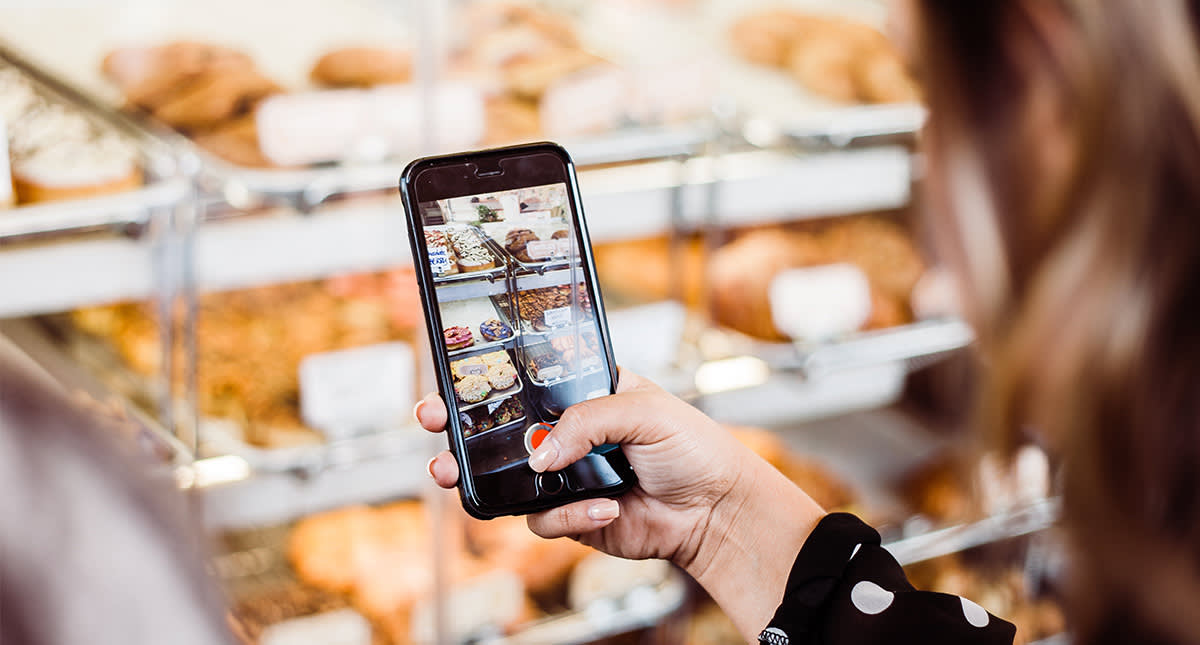
February 7, 2024
How User-Generated Content Boosts Your Digital Marketing Impact
In the dynamic realm of digital marketing, a strategic asset often overlooked by brands is User-Generated Content (UGC). Far beyond being a mere buzzword, UGC emerges as a crucial element for fostering trust, authenticity, and engagement. If your strategy has yet to incorporate UGC, you're bypassing a rich vein of potential leads. Here’s an in-depth look at why UGC should be at the forefront of your marketing efforts and how platforms like Instagram, with its trending features like Instagram Collabs, can amplify its value. The Power of Authenticity In today's digital landscape, where consumers are incessantly targeted with polished advertisements, there's a burgeoning appetite for authenticity. UGC, encompassing customer reviews, photos, and testimonials, offers an unfiltered peek into real-life user experiences. This layer of authenticity builds trust—a crucial factor in consumer decision-making. Overlooking UGC means undervaluing a potent tool that can significantly elevate credibility and organically attract leads. Enhanced Engagement and SEO UGC serves as fresh, pertinent content that maintains your brand's relevance and relatability. It fosters community participation, lengthens dwell time, and crucially, elevates SEO rankings through organic keywords and content updates. Neglecting UGC foregoes these engagement opportunities and the chance to boost your search visibility, which directly influences lead generation. Social Proof and Peer Influence Social proof wields considerable influence over purchasing decisions. Witnessing others endorse your product or service lends credibility and reassures potential customers about their investment. By not integrating UGC, you're overlooking a chance to display this invaluable social proof that can drive leads and enhance conversions. Cost-Effective Content Creation Content creation can be an exhaustive and expensive endeavor. UGC presents a cost-efficient alternative, offering a stream of content generated by your users. This allows for resource reallocation while keeping your audience engaged with varied content. Disregarding UGC is essentially a refusal of free content and the leads that come with increased engagement. Strengthened Community and Brand Loyalty UGC nurtures a sense of community among your audience, making them feel acknowledged and heard. This engagement deepens brand loyalty, as customers see their input celebrated and shared. Loyal customers are more likely to become brand advocates, leading to lead generation through word-of-mouth and shared content. Ignoring UGC means missing the opportunity to build this community and its associated lead-generating potential. Competitive Advantage In the competitive digital marketplace, standing out is key. UGC offers an unparalleled perspective on your brand, something traditional marketing cannot match. Moreover, leveraging Instagram trends, such as the most viewed Instagram reel or Instagram Collabs, can add immense value to your account. These collaborations between creators harness the AIDA (Attention, Interest, Desire, Action) model effectively, capturing attention and driving engagement through shared audiences and fresh content. Competitors utilizing UGC and engaging with Instagram's dynamic ecosystem will likely surpass those who don't, as they connect with their audience on a more profound and relatable level. By not tapping into UGC and Instagram's potential, you risk falling behind and losing leads to more community-centric competitors. How to Start Leveraging UGC Encourage UGC Creation: Motivate your audience to share their experiences through social media challenges, contests, and incentives. Highlighting how Instagram Collabs can add value to user accounts encourages broader participation. Showcase UGC Across Platforms: Feature UGC prominently on your website, social media channels, and marketing materials. Utilize Instagram Trends and the allure of becoming a most-viewed Instagram reel to maximize visibility and impact. Engage with the Community: Foster a vibrant, engaged community by interacting with UGC creators, especially on platforms like Instagram where engagement can significantly amplify reach. Monitor and Curate: Ensure UGC quality and relevance by keeping an eye on the content being shared. Align it with your brand values and messaging for consistent brand portrayal. Conclusion Neglecting User-Generated Content is a significant oversight in the modern digital marketing sphere. UGC not only offers authenticity and engagement but also provides social proof and a wealth of content that can attract leads and cultivate a loyal community. By incorporating UGC and embracing platforms like Instagram with its Collabs and trends, you can significantly boost your brand's visibility, credibility, and appeal, converting more leads into devoted customers. Start leveraging the power of your audience's voice today, and witness your brand flourish in ways previously unimagined.
Read more...
February 6, 2024
Social Media Marketing Trends to Watch Out for in 2024
As we navigate through 2024, the pace at which social media evolves continues to accelerate, bringing new challenges and opportunities for marketers. With the digital landscape already showing significant shifts in user behavior, technology adoption, and content consumption, understanding the prevailing trends is crucial for brands aiming to maintain relevance and engagement. This blog delves into the essential social media marketing trends of 2024, offering strategic insights to help your brand thrive in this dynamic environment. 1. Augmented Reality (AR) Integration Across Platforms AR technologies are transforming social media into a more interactive space. This trend signifies a shift towards creating more engaging and memorable content that stands out in crowded feeds. AR for Enhanced Engagement: Utilize AR filters and interactive experiences to captivate users, with platforms like Instagram and Snapchat leading the way. Applications of AR: Explore virtual try-ons, immersive ads, and interactive events to create memorable brand experiences. 2. Dominance of Short-Form Video Content Brands are leveraging this format to highlight behind-the-scenes content, product launches, or user-generated content campaigns, offering a glimpse into the creativity and authenticity that resonates with audiences today. Content Creativity: Focus on producing authentic, engaging, and concise videos that are relevant to your audience, utilizing platforms such as TikTok, Instagram Reels, and YouTube Shorts. Strategies for Success: Embrace spontaneity and highlight your brand's personality to connect with users more personally and directly. 3. Personalization and Interactive Content Tailoring content to individual preferences and behaviors is becoming essential to foster a sense of community and belonging among users. Targeted Experiences: Leverage advanced targeting and segmentation tools to deliver content that aligns with individual user preferences. Engaging Interactions: Implement polls, quizzes, and interactive stories to foster a participatory experience and boost engagement. 4. Social Commerce Expansion The integration of shopping features within social platforms simplifies the path to purchase. Seamless Shopping: Integrate shoppable tags and streamlined checkout processes to transform your social media profiles into virtual storefronts. Innovative Features: Explore AR shopping experiences and other immersive tools to enhance the online shopping journey within social platforms. 5. The Rise of Micro-Influencers and Niche Communities Quality Over Quantity: The rise of micro-influencers and Instagram Creators highlights a trend towards authenticity and trust in marketing. Authentic Partnerships: Partner with micro-influencers who boast high engagement rates and target specific demographics for more genuine connections. Community Engagement: Invest in building and nurturing communities within niche platforms to foster loyalty and advocacy. 6. Enhanced Use of AI and Machine Learning From predictive analytics forecasting the best times to post, to AI-driven content recommendations, these AI tools are enabling smarter, more effective marketing strategies. Optimization and Insights: Use AI to refine ad targeting and gain deeper insights into consumer behaviors and preferences. Customer Service Innovations: Develop AI-driven chatbots for personalized interaction and predictive analytics for strategic planning. 7. Sustainability and Social Responsibility Consumers are increasingly drawn to brands that advocate for social causes and environmental responsibility. Value-Driven Campaigns: Share your brand's commitment to sustainability and social causes, engaging with consumers who prioritize these values. Impactful Messaging: Utilize social media to highlight your initiatives in social impact and environmental stewardship, building trust and loyalty among your audience. Conclusion: Embracing the Digital Future The landscape of social media marketing in 2024 is rich with opportunities for innovation and engagement. By strategically adopting these trends, brands can not only enhance their digital presence but also forge stronger connections with their audiences. The key to success lies in being adaptable, creative, and forward-thinking in your social media endeavors. Lead with Innovation As the year unfolds, it's crucial to stay ahead of the curve in the rapidly evolving social media sphere. Assess your current strategies, experiment with new trends, and continuously refine your approach to ensure your brand remains competitive and compelling in the digital arena.
Read more...
February 5, 2024
Niche Marketing: Strategies for Targeting Specific Audiences
In the vast expanse of the marketing world, where broad campaigns and widespread strategies dominate, lies a powerful, focused approach known as niche marketing. Tailored for businesses aiming to carve out a unique position in the market, niche marketing targets a specialized segment of the broader market. This approach is not just about narrowing your audience but engaging with them on a level that broader strategies can't match. Here's how businesses in the Middle East can harness niche marketing to captivate and convert their most valuable audiences. Identifying Your Niche The first step in a successful niche marketing strategy is identifying your niche. This requires a deep dive into market research, and understanding the specific needs, preferences, and challenges of the segments you aim to target. For businesses in Qatar, UAE, and KSA, this could mean focusing on industry-specific needs, cultural nuances, or regional trends that are underserved by current market offerings. Key Strategies: Market Analysis: Utilize tools like SEM Rush to conduct keyword research and identify gaps in the market. Customer Feedback: Engage directly with your current customers through surveys or social media to uncover unmet needs. Competitor Assessment: Analyze your competitors with tools like HubSpot to find areas they are overlooking. Crafting Tailored Messages Once you've identified your niche, the next step is to speak their language. This means crafting marketing messages that resonate deeply with your target audience's unique needs and preferences. For niche markets, personalization goes beyond using a customer's name in an email. It's about creating content that feels like it was made just for them. Key Strategies: Content Marketing: Develop blog posts, whitepapers, and case studies that address specific pain points or interests of your niche audience. Social Media Engagement: Use platforms preferred by your niche to share relevant content, join conversations, and provide value. Email Marketing: Segment your email list to send highly targeted, relevant messages that engage and convert. Leveraging Digital Platforms In today's digital age, the right platforms can make or break your niche marketing efforts. For B2B brands, LinkedIn can be a goldmine for connecting with industry-specific professionals, while Instagram or TikTok might be perfect for visually-driven niches. Key Strategies: SEO Optimization: Use niche-specific keywords to improve your visibility in search engine results. Social Media Advertising: Run targeted ads on platforms where your niche audience spends their time. Influencer Partnerships: Collaborate with influencers who hold sway in your niche to boost credibility and reach. Measuring Success With any marketing strategy, measuring success is crucial to understanding what works and what doesn't. For niche marketing, traditional metrics like reach and impressions might be less important than engagement rates and conversion metrics Key Strategies: Analytics: Use Google Analytics and HubSpot to track website and campaign performance. Customer Feedback: Regularly solicit feedback from your target audience to gauge how well your messages are resonating. Sales Data: Monitor sales trends and customer acquisition costs to measure the direct impact of your niche marketing efforts. Navigating Challenges Niche marketing is not without its challenges. Limited audience size means each customer's value is magnified, and missteps can be costly. Additionally, staying ahead in a specialized market requires constant innovation and adaptation. Key Strategies: Continuous Learning: Stay informed about industry trends and shifts in customer preferences. Community Building: Foster a sense of community among your niche audience to encourage loyalty and word-of-mouth referrals. Flexibility: Be ready to pivot your strategy based on performance data and market changes. Conclusion Niche marketing offers a pathway to deep customer connections, enhanced brand loyalty, and improved Marketing ROI. By understanding your audience, crafting tailored messages, leveraging the right digital platforms, and continuously measuring success, businesses in the Middle East can effectively target and engage their specific audiences. Remember, in the world of niche marketing, quality often trumps quantity, turning small segments into significant successes. For an in-depth exploration of how tailored marketing consultancy can revolutionize digital marketing efforts in the GCC countries, dive into our comprehensive guide: Exploring Digital Marketing in GCC Countries | A2Z Media, where we unveil the nuances and strategies that drive success in this vibrant market.
Read more...
February 4, 2024
Marketing ROI Benchmarks: Straightforward Strategies for Success
Navigating Through Marketing Effectiveness Understanding Marketing ROI (Return on Investment) is pivotal for evaluating the success of your marketing endeavors. This blog delves into the essence of Marketing ROI, specifically focusing on benchmarks that guide businesses in assessing their marketing performance against industry standards. Here, we'll explore how leveraging Marketing ROI benchmarks can significantly enhance strategic decision-making and budget allocation for better returns. For insights into tailoring your marketing strategies for the GCC's unique digital landscape, check out our blog, Exploring Digital Marketing in GCC Countries. Understanding Marketing ROI Benchmarks Setting the Stage for Measurement Before optimizing, it's crucial to grasp what Marketing ROI benchmarks are and why they matter. These benchmarks serve as a yardstick for measuring the efficiency and effectiveness of your marketing campaigns, providing insights into how your performance stacks up against competitors and industry averages. Key examples include: Average Conversion Rate: Assess campaign performance. Click-Through Rate (CTR): Analyze the effectiveness of digital ads and emails. Cost Per Lead (CPL): Measure cost-efficiency in marketing. Customer Lifetime Value to Customer Acquisition Cost Ratio (CLV: CAC): Evaluate profitability. Email Open Rates (EOR): Compare email engagement. Social Media Engagement Rates: Evaluate social strategy effectiveness. Strategies to Elevate Your Marketing ROI Adapting and Thriving with Proven Approaches Enhancing your Marketing ROI involves a blend of creativity, analytics, and strategic alignment. To stay ahead of Digital Marketing Trends in the GCC, you can implement the following tactics to drive substantial improvements in your marketing outcomes: Leveraging Data Analytics: Utilize advanced data analytics to identify high-performing marketing channels and allocate resources more effectively. Customizing Customer Experiences: Employ marketing automation tools to deliver personalized customer experiences at scale, significantly increasing engagement and conversion rates. Enhancing Digital Presence: Strengthen your digital presence by optimizing your website for SEO, engaging audiences on social media, and utilizing content marketing to establish thought leadership. Investing in High-Return Channels: Direct investments towards channels proven to offer the best ROI for your specific industry, such as targeted email marketing campaigns or precision-targeted social media advertising. The Role of Digital Tools in Tracking ROI Empowering Your Strategy with Technology In today's digital age, adopting the right digital tools is pivotal in accurately tracking and enhancing your Marketing ROI. This includes: Analytics Platforms: Tools like Google Analytics and SEMrush provide deep insights into campaign performance and customer behavior. CRM Systems: Customer Relationship Management (CRM) systems help in tracking leads, managing customer interactions, and personalizing marketing efforts. Marketing Automation Software: Automate repetitive tasks and tailor marketing messages to individual leads, increasing efficiency and conversion rates. Strategies for Converting Leads into Sales Proven Tactics to Maximize Conversions Key to enhancing Marketing ROI is mastering how to convert leads into sales. Here are key strategies to enhance this conversion process: Personalized Communication: Tailor your messages based on customer data to make each interaction feel personal and relevant. Value Proposition Clarity: Communicate how your product or service solves a problem or fulfills a need better than competitors. Lead Nurturing Programs: Implement programs that keep your brand top-of-mind for potential customers through regular, valuable content and engagement. Optimized Landing Pages: Ensure landing pages are clear, compelling, and call-to-action (CTA) focused to convert visitors into customers. Customer Testimonials and Case Studies: Leverage social proof to build trust and demonstrate the effectiveness of your offerings. Special Offers and Incentives: Use time-sensitive offers or exclusive bonuses to encourage leads to make a purchase decision faster. Applying these strategies can significantly improve your lead-to-sale conversion rate, directly impacting your overall marketing ROI Conclusion: The Path Forward with Marketing ROI Benchmarks Leveraging Benchmarks for Continued Success In summary, achieving a high Marketing ROI demands ongoing analysis, strategic adjustments, and the adoption of technology to stay competitive. By focusing on precise, actionable strategies and leveraging the latest digital tools, businesses can significantly improve their marketing effectiveness. Encouraging a culture of continuous learning and adaptation, guided by Marketing ROI benchmarks, ensures sustained success and growth.
Read more...January 31, 2024
The Future of Digital Paid Media: Top 5 Trends for 2024
Get ready for a thrilling ride into the Top Trends in Digital Ads! As we enter 2024, the digital advertising world is buzzing with new trends. From smart AI to personal touch in ads, and new rules on privacy, we’re here to guide you through the biggest changes. These top trends are your key to staying ahead in the fast-paced world of digital ads. The Rise of AI-Powered Advertising Welcome to the future of advertising! 2024 is all about AI, and here's why it's a game-changer: Smart Algorithms: AI isn't just a buzzword; it's your new best friend in ad campaigns. Think of algorithms that understand your Target Audience better than they know themselves, delivering ads that hit the mark every time. Chatbots and Virtual Assistants: Imagine ads that don't feel like ads. Chatbots are making this a reality, providing helpful recommendations and sneaking in ads that feel more like friendly advice than a sales pitch. Personalization: It's All About You (Yes, You!) Personalization isn't new, but in 2024, it's getting a major upgrade: Cutting Through the Noise: In an ocean of content, Personalized Ads are your lifeboat. Brands are using AI to craft messages that speak directly to you, based on your unique preferences and behaviors. Seamless Experience Across Channels: Ads are getting a personal touch, no matter where you see them. From tailored landing pages to creative formats, it's all about creating a cohesive journey that feels like it's made just for you. Voice Search Ads: Talk to Me! Voice search is not just for asking about the weather anymore: Optimizing for Conversational Queries: Brands are tuning into how you speak to your digital assistants. Ads are now being crafted to match the natural, conversational style of voice searches. Content That Speaks Your Language: With voice search, it's all about being brief and to the point. Ad copy is getting a makeover to be more concise and conversational, perfect for a quick voice query response. Ad Targeting Privacy Regulations: Playing it Safe and Smart Privacy is a big deal, and here's how it's changing ad strategies: Contextual Advertising to the Rescue: Goodbye, invasive tracking; hello, smart contextual ads. Brands are getting savvy, using the content they're viewing to show relevant ads without peeking into your data. The Rise of First-Party Data: With third-party cookies crumbling, first-party data is the new gold. Brands are building direct relationships with you, making sure they get your consent to make those ads feel more personal and less creepy. The Shift Towards Video and Interactive Ads Video and interactive ads are the stars of 2024: Embracing the Video Wave: Platforms like TikTok and YouTube are where it's at. Brands are creating video ads that are not just watchable but engaging and shareable. Interactive Ads for the Win: Ever thought ads could be fun? With quizzes, AR experiences, and shoppable videos, ads are becoming an interactive adventure, making the shopping experience a whole lot more engaging. Conclusion: The Future is Bright (and Super Smart) In summary, 2024 is shaping up to be an exciting year in digital advertising. AI is making ads smarter and more personal, personalization is reaching new heights, voice search is opening up new avenues, privacy is guiding new targeting strategies, and video and interactive ads are making things more engaging than ever. Stay ahead of these trends, and you're set for success in the ever-evolving digital ad landscape.
Read more...
January 30, 2024
Reaching Your Target Audience: The Key to Advertising Success
In the ever-evolving world of digital advertising, reaching your target audience effectively is not just a goal—it's a necessity. To help you navigate this landscape, let's dive into strategies that encompass various aspects of online advertising, from search and display campaigns to the power of facebook advertising and retargeting. Ready to elevate your advertising game? Let's go! Understanding Your Target Audience To craft a successful campaign, first understand who you're talking to. This isn't just about demographics; it's about getting into the psyche of your potential customers. Wide-Ranging Research: Delve into market research across platforms to understand your audience's demographics and behaviors. Audience Segmentation: Break down your audience for tailored messaging. Custom Audiences: Use tools available on various platforms like Google Ads, Meta, and LinkedIn to create custom audiences, ensuring precise targeting. Identifying the Right Channels The digital landscape is vast and varied. Your audience might be scrolling through Facebook, searching on Google, or flipping through Instagram. Knowing where they are is key. Multi-Channel Approach: Use a mix of channels like search engines, social media, and email marketing. Search Campaigns: Capitalize on PPC campaigns to appear in search engine results. Display Campaigns: Utilize display networks for visual impact and brand awareness. Social Media Advertising: Leverage the power of platforms like Facebook, Instagram, LinkedIn, and Twitter for targeted advertising. Retargeting Campaigns: Re-engage visitors on multiple platforms who showed interest in your product/service. Crafting Compelling Ad Copy Your ad's message is your first (and sometimes only) impression. Make it count with copy that’s engaging, clear, and action-oriented. Highlight Benefits: Focus on how your product solves problems or fulfills needs. Creating Urgency: Use time-sensitive language to spur action. Powerful CTAs: Ensure your call-to-action is unmissable and compelling. Optimizing Ad Placement Where your ad appears can be just as important as its content. Optimize placement for maximum visibility and relevance. Context Matters: Align ads with relevant site content or user interests. Strategic Positioning: Understand your preferred ad placements whether it's a social feed, a search results page, or a partner website. Timing Is Key: Tailor your ad scheduling to when your audience is most active across different platforms. Monitoring and Adjusting Your Campaign The beauty of digital advertising is its measurability. Use data to continually refine and improve your campaigns. Set Clear KPIs: Track metrics like click-through and conversion rates to gauge success. Adapt and Adjust: Be ready to pivot based on performance insights. Test and Learn: Experiment with different ad variations to find what works best. Conclusion Remember, successful advertising isn't just about reaching people; it's about reaching the right people with the right message at the right time. By understanding your audience, utilizing the right channels, creating compelling content, optimizing placement, and continuously monitoring and adjusting your campaigns, you can create a powerful advertising strategy that resonates with your audience and achieves your business goals. Stay agile, keep learning, and always be ready to adapt. Your audience is waiting for you.
Read more...
January 29, 2024
Emerging Digital Marketing Trends in GCC: What You Need to Know
Stay ahead of the game with these emerging digital marketing trends in GCC. The Rise of Influencer Marketing in the GCC In recent years, influencer marketing has gained significant traction in the Digital Marketing Trends in GCC. Influencers, who have a large following on social media platforms, are now being recognized as powerful marketing tools. Their ability to connect with their audience on a personal level makes them highly effective in promoting products and services. By partnering with influencers, businesses in the GCC can reach a wider audience and build brand awareness. This growing influence brings several key benefits to businesses in the region: A Powerful Tool for Engagement: Influencers resonate with their audiences, offering authenticity and trust, particularly appealing to millennials and Gen Z. Niche Market Penetration: Leveraging influencers provides a unique opportunity to tap into specific demographics, offering targeted exposure. Localized Approach: Influencers in GCC often use local languages and cultural nuances in their content, ensuring that brand messages are relatable and impactful. The Growing Importance of Video Content Video content has become increasingly popular in the GCC as consumers are becoming more visually oriented. With the rise of platforms like YouTube and TikTok, businesses in the GCC are recognizing the power of video in capturing and retaining audience attention. Video content allows businesses to convey their message more engagingly and memorably, making it an effective tool for brand storytelling and product promotion. This trend highlights several key aspects: Engaging and Memorable: Videos offer a dynamic way to tell a brand's story, making messages more engaging and memorable for the audience. Highly Shareable Content: Due to its visual appeal, video content tends to be shared more, extending the reach and visibility of your brand. SEO Advantage: Well-optimized video content can significantly boost your SEO rankings, aiding in organic discovery. The Power of Personalization in Digital Marketing Personalization has become a key driver of success in digital marketing. With advancements in technology and data analytics, businesses in the GCC can collect and analyze customer data to create personalized experiences. By tailoring their marketing messages and offerings to individual preferences, businesses can enhance customer engagement and loyalty." This trend is underscored by several key aspects: Data-Driven Customer Insights: Utilize customer data to deliver marketing messages and offerings that resonate personally with each individual. Enhanced Engagement: Personalized content is not just relevant; it significantly boosts engagement and customer loyalty. AI in Customer Service: AI-powered tools, like chatbots, offer personalized assistance, enhancing the customer service experience. The Impact of Voice Search on GCC Consumers Voice search has gained significant popularity among consumers in the GCC. With the rise of voice assistants like Siri, Google Assistant, and Amazon Alexa, more and more people are using voice commands to search for information, make purchases, and interact with brands. This has implications for businesses in the GCC, as they need to optimize their digital marketing strategies to accommodate voice search. Key aspects of this trend include: Shift in Keyword Strategy: Adapting to natural, conversational language used in voice searches requires a different approach to keywords. Local SEO Emphasis: Voice searches are often local, making it crucial for businesses to optimize their local SEO. Emerging Search Trend: Understanding the nuances of voice search can provide a competitive edge in the digital landscape. The Role of Artificial Intelligence in Digital Marketing Artificial Intelligence (AI) is revolutionizing digital marketing in the GCC. With AI-powered tools and algorithms, businesses can automate and optimize various marketing processes, leading to more efficient and effective campaigns. Essential aspects of AI's impact include: Enhanced Customer Segmentation and Targeting: AI algorithms analyze large datasets to reveal customer patterns, enabling more precise marketing campaigns. Chatbots and Virtual Assistants: These AI tools provide personalized customer support, improving both efficiency and customer satisfaction. Content Optimization and Timing: AI helps in determining the most effective content strategies and optimal posting times for maximum engagement. To stay ahead in Digital Marketing Trends in GCC, businesses must embrace emerging trends like influencer marketing, video content, personalization, voice search, and AI. By keeping up with these trends, businesses can effectively reach their target audience and build a strong online presence. For a deeper dive into how these trends compare specifically within the GCC countries, our detailed analysis in 'Exploring Digital Marketing in GCC Countries | A2Z Media' offers essential insights. Additionally, 'Marketing ROI Benchmarks: Straightforward Strategies for Success' provides practical tips on how to measure and enhance the effectiveness of these strategies, ensuring your investments deliver optimal returns.
Read more...
January 28, 2024
10 SEO Blog Post Tips to Boost Your Website's Ranking
Discover 10 SEO BLOG POST TIPS TO BOOST YOUR WEBSITE'S RANKING on search engines. Understanding Keyword Research Understanding keyword research is essential for creating SEO-friendly blog posts. Start by identifying relevant keywords that are related to your blog post topic. Use keyword research tools to find popular and high-ranking keywords that will attract organic traffic to your website. Incorporate these keywords naturally throughout your blog post to optimize it for search engines. Another important aspect of keyword research is understanding search intent. Consider the questions and problems that your target audience may have related to your blog post topic. By addressing these search queries in your content, you can provide valuable information and increase your chances of ranking higher in search engine results. Example: SEM Rush is an invaluable tool for bloggers looking to improve their website's ranking on search engines. By utilizing SEM Rush's Keyword Research Feature, you can easily identify relevant and high-ranking keywords that will attract organic traffic to your blog post. Crafting Engaging and Unique Content Creating engaging and unique content is key to drawing in readers and boosting your website's visibility. Here are some strategies to consider: Understand Your Audience: Identify the interests and needs of your target audience. Tailor your content to address their specific problems or questions. Use a Unique Writing Style: Develop a distinctive voice that resonates with your audience. Incorporate storytelling to make your content more relatable and memorable. Presentation Matters: Organize your content with clear headings and subheadings. Use bullet points to break down complex information and highlight key points. Ensure the content is easy to scan and visually appealing. Incorporate Multimedia: Enhance your posts with relevant images, videos, or infographics. Utilize visual aids to complement and clarify your text. By focusing on these aspects, you can create content that not only engages your readers but also stands out in a crowded digital landscape. Optimizing On-Page SEO Elements Optimizing on-page SEO elements is essential for improving your blog post's visibility on search engines. Start by optimizing your title tag, meta description, and URL. Include your target keyword in these elements to signal to search engines what your blog post is about. For an in-depth understanding of this crucial aspect of SEO, you can look more into → meta tags explained. Next, optimize your heading tags (H1, H2, etc.) by including relevant keywords. This helps search engines understand the structure and hierarchy of your content. Use descriptive alt tags for your images and optimize your internal linking structure to improve navigation and user experience. Lastly, optimize your blog post's loading speed by compressing images, minimizing code, and leveraging browser caching. A fast-loading website improves user experience and can positively impact your search engine rankings. To improve your website's ranking, understand the importance of on-page SEO. Read SEMrush's article "On-Page SEO: What It Is and How to Do It" for valuable insights on optimizing title tags, meta descriptions, URLs, heading tags, alt tags, and internal linking. Building High-Quality Backlinks Building high-quality backlinks is an effective way to improve your website's ranking. Focus on acquiring backlinks from reputable and authoritative websites that are relevant to your blog post topic. Start by creating valuable and shareable content that other websites would want to link to. Reach out to relevant websites and bloggers in your industry and pitch your content for potential backlink opportunities. Additionally, consider guest posting on other websites to increase your exposure and generate backlinks. Remember to monitor your backlink profile regularly and disavow any low-quality or spammy backlinks that may negatively affect your website's ranking. Utilizing Social Media for Promotion Social media can be a powerful tool for promoting your blog posts and improving your website's ranking. Share your blog posts on various social media platforms to increase visibility and reach a wider audience. Create engaging captions and use relevant hashtags to optimize your social media posts. Encourage your followers to share and engage with your content by asking questions, running contests, or hosting live events. Additionally, consider collaborating with influencers or partnering with other brands to amplify your blog post's reach. Engage with your social media audience by responding to comments, messages, and feedback. Building a strong social media presence can help drive traffic to your blog posts and boost your website's ranking. In conclusion, implementing these 10 effective tips will greatly enhance your blog posts and improve your website's ranking on search engines. By understanding keyword research and search intent, crafting engaging and unique content, optimizing on-page SEO elements, building high-quality backlinks, and utilizing social media for promotion, you can attract organic traffic, captivate readers, and boost your website's visibility. If you're looking for expert assistance in managing your technical SEO and taking your website to the next level, don't hesitate to contact us for our professional SEO Management Services. Let us help you achieve your goals and maximize your online presence.
Read more...
December 19, 2023
Automatic Placement Ads: Strategies and Benefits
While preparing a Meta ad, the first thing that usually comes to the mind of advertisers is identifying the marketing message, design direction, visual headlines, and captions needed. While these steps are crucial for creating a solid ad that grabs the attention of the right people, two other factors are at many times overlooked, especially among those of us who have a minds bursting with creativity and would rather not think of the strategic approach of distributing these ads. These two factors are: being where the right people are and being there at the same time that they are. These two factors (time & space) used to be identified using tedious processes led by digital strategists and supported by performance specialists. However, and as our good friends at Meta have pointed out many times, automation aims to shift these processes from tedious to smart. With Google, we currently see the rise of the Performance Max campaign after the success of automation in the Discovery Ad placements. With Meta; however, it is the automatic placement that takes the lead in automation. What Are Automatic Placements? Meta gives you two placement options for you to choose from upon setting up your campaign: Manual & Automatic. What you will directly notice is that the automatic placement is selected as default and is highly recommended by Facebook (it’s among their Power 5 recommendations for better ad performance). By selecting the automatic placement option, you are enabling Facebook’s delivery system to allocate your ad set’s budget across multiple placements based on where they’re likely to perform best. Why Use Automatic Placement? We don’t always have to agree with Meta and their recommendations, but when it comes to manual vs. automatic placements, we side with the ad channel. When selecting manual placement, many advertisers fall for the common mistake of choosing a few placements thus not allowing the Meta algorithm to play its role in identifying the time & space where our target audience exists. However, upon selecting automatic placements, we allow the algorithm to choose the ad placements needed for us to achieve optimal results. Thus, if there is a volume of ‘the right people’ on Audience Network In-Stream Videos, the algorithm will assign a larger volume of the ad set budget to that placement. Automatic placement takes the creatives and copies we give Meta and showcases them depending on the space & time our audience exists in, saving the poor digital strategists so much tedious work and allowing the creatives of our field to keep their minds bursting with ideas. Where Will Your Ads Show? As we previously established, the automatic placement is preferred due to the algorithm’s ability to utilize all of Meta’s channels and spend the most on the ones that will lead to optimal results. However, this variety of channels presents the creatives of the industry with a unique challenge: adapting their visuals and copies to the many channels available by Meta. But worry not! Below is a simple and easy guide to creating creatives for automatic placement that ensures you have a creative that appears exactly how you want it to be on each channel. For the Visuals If you are working on a carousel, prepare the following sizes: 1080×1080 and 1080×1920 If you are working on an image, prepare the following sizes: 1080×1080, 1080×1920, 1920×1080, 1080×1350, and 1200×628 If you are working on a video, prepare the following sizes: 1080×1080, 1080×1920, 1920×1080, 1080×1350, and 1200×628 Note: for the story size, prepare according to the reel safe zone. For the Copies Headline: Up to 20 Characters Description: Up to 30 Characters Caption: Unlimited, best practice is under 125 characters Conclusion According to data from a variety of marketing agencies in the United States, marketers who have shifted from manual placement to automatic placement witnessed a sharp rise in results and a significant decline in cost/result. This comes as no surprise as Meta has explicitly announced its plan for an automated future, one where we can submit to the algorithm’s capabilities at always identifying the time and space to reach ‘the right people’ – thus, changing how we have been doing marketing for decades. By Adham Al Saabi To further understand how automatic placement ads fit into the evolving landscape of digital advertising, check out 'The Future of Digital Ads: Top 5 Trends for 2024'. For a deeper exploration of how these ads can target effectively and creatively, 'The Art of Attention: How Creativity is Redefining Online Advertising' offers innovative perspectives that can enhance your advertising strategies.
Read more...December 19, 2023
Optimizing for Search: Basic SEO Guide
This is your simple guide to SEO. To start with the first question on everyone’s mind, What is SEO? SEO stands for “search engine optimization.” It’s the practice of increasing both the quality and quantity of website traffic, as well as exposure to your brand, through organic search engine results. SEO is about understanding what individuals search for online, what are the answers they are searching for? What words are they using? What type of content do they wish to consume? Knowing the answers to these questions helps optimize your website so that search engines understand its relevance and rank it accordingly in search results, thus better connecting you with the people who are looking for what you offer. How do search engines evaluate your content? Once you create a website, search engine bots crawl your website to understand the information it contains and index it accordingly, so that it appears in related search results. Search engine bots are now capable of understanding contextualized information (text, structure, and non-text content) on your website and index based on different factors, such as relevance and authority. This process can be enhanced by understanding Meta Tags Explained, which help search engines understand your page content better. How to optimize SEO for your website A. Keywords: Research, Relevance, and Placement A keyword plays an essential role in SEO. Choosing the right keywords makes it possible for people to find your article or website once they make an online search for a topic of interest. Keywords are essentially what people will type into a search engine. Thus, it is wise to make sure your keywords are aligned with the search intent of your target audience. Using a mixture of long and short keywords can help increase the search volume while also increasing the ranking of your website. Ideally, the best placements for your keywords are: The post’s title The URL The first and last paragraph of the post In the text organically throughout the post The tags of images used Permalinks B. Better content for better performance Crafting the right content is vital. They should find it engaging and informative, providing answers that cater to their needs. With that said, writing in a clear and concise manner works wonders, but integrating keywords shouldn’t be done at random and your website shouldn’t be overcrowded with them. Trying to cheat the system by placing as many keywords as they can doesn’t work, and many will actually get penalized for it. Search engines are highly intelligent and can recognize keyword stuffing. Technical SEO Technical SEO goes beyond just permalinks and choosing the right keywords. It’s about creating a responsive design for your website. This topic is, as the name would suggest, very technical, and for optimum results, it is best to work with technical SEO experts to better understand how the ideal website structure and design should look for your target audience. Customized SEO strategies can greatly benefit your website’s performance and rankings. SEO vs. SEM It's also important to understand the difference between SEM (Search Engine Marketing) and SEO. SEM involves paid strategies to increase traffic and visibility, while SEO focuses on organic strategies. Both have their own advantages, and sometimes a combination of both can be beneficial depending on your business goals. We hope our guide gave you some ideas on how to improve your website’s ranking and make it SEO-friendly! For more detailed strategies and personalized assistance, visit our SEO service now and request a proposal.
Read more...
December 19, 2023
Meta Pixel Explained: Enhance Your Marketing | A2Z Media
The Meta Pixel. What is it, what does it do, and how can it help boost your ad performance and sales? Meta Pixel, formally known as Facebook Pixel, is an analytical tool that allows you to track the activity of your website’s visitors. It is a piece of code that allows you to identify Facebook and Instagram visitors and observe how they engaged with the material on your website such as page views, product views, adding to cart, starting checkout, purchases, and more. Each time someone visits your website, the pixel sends Facebook information on who is visiting and what activities they are performing. All of this information is encrypted and depersonalized, so only Facebook knows which people visited your website. The information gathered may be used to target consumers with ads based on their interests, preferences, and online behavior. Meta Pixel is a vital piece of code that helps you monitor the effectiveness of your advertisements, making sure it’s seen by the right people, and driving up sales. Meta Pixel communicates events with Meta when users engage with your business. Events fuel your Facebook advertisements, allowing you to target a more relevant audience, give a more personalized ad experience, and optimize your ad campaigns for better business outcomes. Events occur as a result of either paid Facebook advertisements or organic reach (unpaid). There are two kinds of events: standard and custom. Standard events are established activities that Facebook recognizes and supports across ad products. Custom events are acts that do not fall under the purview of Facebook’s normal events. You may give them a distinct name to indicate the action that is taking place. In some cases Meta Pixel might be inactive due to errors that may occur as a result of an event name missing, invalid value parameter, missing value parameter, missing currency parameter, or even duplicate events detected. Running a diagnostic test will help you identify the problem and solve it. By Jihad Shamaa
Read more...
December 19, 2023
AIDA Model: Key to Carousel Success | A2Z Media
While browsing social media, the consumer’s mind is interrupted by hundreds of daily posts, making it critical to know how to capture their attention and make them scroll through our posts the way we want them to. This brings us to the significance of content and its types. Carousels have recently become one of the most popular and successful types of content for META after videos. There are various ways to write your carousels in order to effectively convey the information and have the audience read it all, but the AIDA Model is one of the most known and effective techniques. What is the AIDA Model? It’s one of the oldest sales approach methodologies, yet still one of the most successful ones today. The AIDA model goes through the different stages a person goes through while buying a product or a service and covers the main points a marketer should focus on in each stage. Now, what does AIDA stand For? AIDA model works for ad copy, website copy, and most importantly, social media copy. Learning how to use it to increase social media effectiveness for business is so important. AIDA in Carousels Carousels are an excellent approach to effectively provide varying information to readers since you can fit them into 10 different cards, which is enough to achieve your goal, such as, for example, generating leads. It’s important to get the user to your 3rd card at least, which increases the chances of retaining them. In fact, the more the users swipe through cards in your carousels, the more the algorithm will push your post and show it in the explore page, resulting in increased engagement and results. Thus, adopting the AIDA model in carousels can significantly help in getting the audience to swipe all the way to the end. Even though you are only allowed 10 cards in your carousel, you must consider showing only 8, in order to peak the audience’s curiosity and persuade them to desire your products/services. While the first card is meant to get their attention, the last card is supposed to inform them of the type of action they should take. Here is how to distribute your ideas and content along your carousel using AIDA. Attention: In the first image, use strong headlines to grab the user’s attention and make him/her stop scrolling. Put yourself in his/her shoes, and think why should they care for this post and read it? What is in this post for them? Based on the answers, craft a strong headline, but also work on the visuals in this slide, as they act as a hook as well, not only the headline. Interest: Provide the audience with interesting information in each slide, and make sure you give this information in bite-sized pieces to make them scroll to find out more. As mentioned, you have to get the user to go beyond the third image, so avoid giving a lot of information in your second image, and don’t give them the juicy value there. Instead, break it up into more images, and arouse their curiosity for the answers or the most important information, which you will state in slides 8-9. Desire: You have now reached the 8th image in your carousel, and it’s where you should provide the most valuable information, like answers, tactics, steps, or checklists. Action: tell them what to do. Do you want them to engage? To share this post or save it? To go to the link in bio or to buy? As a recap, sketch your ideas into an 8 frame story beats after coming up with an attractive headline and put one idea per frame (card). Then build their interest more and more until they reach the end where you include the actionable details and information they scrolled for. Most importantly, make your CTA in the last slide specific and clear. by Ahmad Shaghlil Explore these Instagram trends and strategies, but don't forget to stay up-to-date with the broader landscape of social media marketing by reading our comprehensive guide on SOCIAL MEDIA MARKETING TRENDS TO WATCH OUT FOR IN 2024
Read more...
December 19, 2023
Meta Tags Explained: Key to Effective SEO | A2Z Media
What are Meta Tags? Simply put, Meta Tags are code snippets, specifically HTML codes, that do not appear to visitors while browsing but only on the source code page and are usually found at the top of the pages. The primary role of meta tags is to guide Google search engines and crawlers by providing information about your web page and its content and emphasizing its compatibility with what is visible and hidden. To illustrate, meta tags can provide detailed information to search engines by defining keywords, page descriptions, authors, etc. If you want to see the meta tags of a web page, right-click anywhere on the page, pick “View page sources,” and look at the meta tags. As an example, check the following Meta Tag: Why Use Meta Tags? As mentioned earlier, Meta tags can be optimized to highlight the most important components of your content, stand out in search results, and compete with competitors in SERP (Search Engine Results Page). Meta tags are essential in optimizing a web page’s SEO since they help search engines ensure that the information which searchers need to know about your site is displayed upfront, concisely, and helpfully. Certain meta tags provide information about the page structure and ensure that your site is easy to navigate, but others advise search engines about which sections of your page are important and which should be ignored. Types of Meta Tags Four critical types of Meta tags contribute to SEO and help search engines drive more traffic to your webpage. Meta Keywords Attribute These are tags that include keywords linked to the content of your page. A few years ago, the practice of word staffing, which is defined as inserting keywords that are unrelated to your content to increase traffic, was pretty common. However, nowadays, search engines crawlers can easily detect this, and they have already made the algorithm independent of the Meta Keywords Attribute. As a result, while this form of Meta tag may help your page’s SEO a bit, it is no longer as effective as it used to be. Title Tag Meta tags, as opposed to meta keywords attribute tags, are the most important type of meta tags. Searchers can see this type of tag on SERPs and at the top of the browser tab. It is very crucial to the ranking of your website. An example of a title tag: Its primary function is to provide the main title for your page, informing the search engine about the content of this page and assisting the user as well. To make your Title Tag highly optimized, try these tips: Give each page a different title Make it short but descriptive Try to make it catchy Include your primary keyword in it Keep it under 60 characters Meta Description Attribute It is another essential type of Meta tags, where it also appears on the SERPs for searchers but not on the web page itself. In SERP, it appears directly below the Title Tag. Meta description attribute helps search engines and even searchers to understand what your page is about in more detail than the title tag. On another note, it’s worth mentioning that another function of this tag is to grab the searchers’ interest and make them click. Google can choose the Meta tag by itself by taking part from your introduction, or you can write it on your own, but remember that Meta descriptions are not a direct factor in your page ranking. However, consider these practices for better results: Summarize it accurately and keep it under 160 characters Avoid generic descriptions Include a call to action Make it click-worthy Include your main target keyword in it Meta Robots Attribute This is the last type of meta tag we are discussing, and it gives search engines instructions on what to do with your page. For example, it tells the search engine whether it should include a page in “Search Results” or not; this is usually by using specific words in HTML: index/noindex. Also, it provides information for the engines about the links on your page, whether to follow these links or not, and using specific HTML terms like follow/unfollow. Can you Set Meta Tags by yourself? Meta tags aren’t hard to implement yourself, and you don’t really need programmer experience, just some experience with HTML will help. However, in some cases, using sites like WordPress makes it much easier, where using specific plugins like Yoast, for example, can do the work effortlessly. Using SEO plugins can help you write your Meta Tag Title, Meta Description, Keyword Attributes, Alt Tags, and much more! by Ahmad Shaghlil
Read more...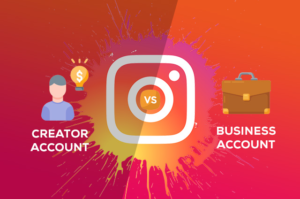
December 19, 2023
Instagram Guide: Business Vs. Creator Account | A2Z Media
Instagram today looks nothing like Instagram in the past. Remember the good old days when everyone had the same default account type and only posted casual photos? Well, not anymore! The world of social media is continuously evolving, and Instagram has been on a roll, testing new features for brands and individuals to capitalize on. Before you dig deep into all of that, you need to figure out one really important thing: What should the type of your Instagram account be? Is it better to have a creator account or a business account? What’s the difference? Which one will help you get the most out of your marketing strategy? In this blog, we simplify all you need to know about these account types to help you decide which one is best for you. Instagram Business Vs. Creator Account: How Do They Differ? To begin with, both can be used by brands, influencers, and individuals. However, it depends on what you’re looking to achieve and your marketing strategy. Let’s go over both account types, shall we? Instagram Business Account This account type is equipped with multiple features that are ideal for brands and businesses. You might be asking yourself, “What are these features?”. With a business account, you can add additional call-to-action buttons that allow profile visitors to book an appointment, make a reservation, or contact customer service. Another useful feature is the ability to create an Instagram shop and sell directly from it. Assuming that you own a gold jewelry brand, you can add all of your available products to the Instagram Shop and tag them whenever you post about a particular piece. Users will be able to purchase items directly from the post, simplifying and shortening the buyer’s journey. The ability to schedule posts is another advantage of Instagram business accounts. Business accounts can be linked to third-party platforms that help optimize specific Instagram processes. If you prefer manual posting, however, this feature isn’t necessary. Ads can also be used to promote your posts in a business account. This can be extremely beneficial for businesses looking to reach a new audience, raise brand awareness, or increase the conversion rate. Having said that, there is one major disadvantage that may radically alter your opinion on business accounts. the inability to use artists’ music. Unfortunately, due to copyright issues, Instagram business account users are unable to capitalize on the platform’s most popular music, limiting their ability to use reels effectively. If your marketing strategy is primarily focused on posting reels, the business account is not for you, my friend! Instagram Creator Account Instagram launched creator accounts to address the needs of content creators who do not necessarily run businesses, such as personal brands and influencers. The primary goal of these accounts is to build fan bases, share industry-related types of content, and become well-known public figures. The ability to create paid collaboration posts and partnerships is the main and most important feature of the Instagram creator account. This feature opens doors for content creators to collaborate with brands or other parties to increase engagement rate and access a new audience. Nothing speaks louder than numbers. Creator accounts provide a wealth of insights about the audience, post performance, enabling creators to better understand how good the content they are posting is. Another feature available in the creator accounts is the ability to categorize messages into three different categories: General, primary, and requests. This method can help you prioritize your communication by sorting your messages. Unlike the business account, which restricts your ability to use its music library, users with a creator account can rejoice, as they are eligible to get their hands on it fully. So, if you want to create reels using the most recent trends, a creator account is the way to go. Which Account Type Should You Go For? Instagram’s 2022 algorithm was heavily focused on reels. With static posts’ organic reach dramatically decreasing, reels were the go-to posting method to reach a large audience, and it’s not limited to only those who follow you. Instagram made it pivotal for everyone to use reels to go toe-to-toe with their rival, TikTok. Therefore, by ignoring reels and the limitations that business accounts have on this feature, the opportunity for growth is severely limited. Choosing between a business and a creator account really depends on your overall Instagram strategy. It really comes down to those minor differences, which may be of great value to you or pretty insignificant. If you choose one today and you feel you made the wrong decision, there’s no need to worry, as you are able to switch your account any time you want and adjust your strategy accordingly! by Louay Shami Explore these Instagram trends and strategies, but don't forget to stay up-to-date with the broader landscape of social media marketing by reading our comprehensive guide on SOCIAL MEDIA MARKETING TRENDS TO WATCH OUT FOR IN 2024
Read more...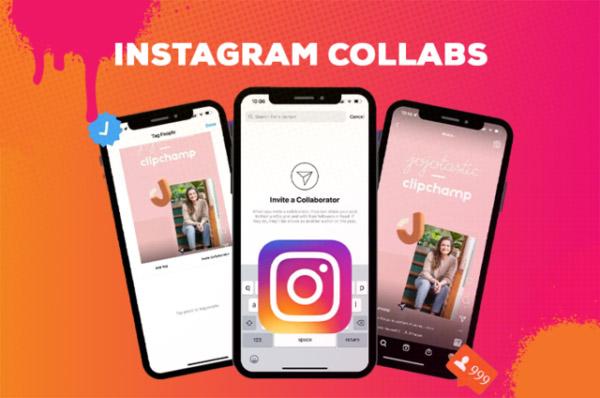
December 19, 2023
Instagram Collabs: Key to Page Success | A2Z Media
To attract a high number of followers, you need to add value to your Instagram page through the content you choose to post and the way you choose to communicate with your target audience. By assessing what you need to post and what your audience awaits from you, you will be taking your first step in increasing your page’s exposure and engagement. From there, you can choose the tactics you need to add to your marketing strategy to reach your goals in a more efficient way. This blog will address one of the best tactics for growing your audience, gaining their trust, and keeping them interested in what you have to offer: Instagram Collabs. What’s The Purpose Of Using Instagram Collabs? Users on Instagram have the option to co-author posts with other accounts via ‘collabs’. A collaborator can be identified by the original author (who has a public account) as any other account (public or private). If the request is approved, the post will appear on the profile of the cooperating account. The Instagram Collab function also shares views, likes, and comments with both collaborators’ followers in the Instagram feed. The original creator, known as the post’s author, has the right to add or remove a collaborator at any time. How can the Instagram Collab feature benefit you as a businessperson and/or a business? This feature makes it easier for businesses to promote their products and services by collaborating with other businesses, influencers, and creators who share the same audience and niche. Instagram Collabs allows you to reach a new audience by partnering with creators and other businesses without blowing your marketing budget, generating traffic to your page, and enhancing your engagement rate through new followers, likes, comments, and shares. In addition, it also has the advantage of letting both parties track the metrics to know how the post is doing without requesting the analytics from the collaborator and trying to analyze it based on the number of sales generated, engagement rates, and number of new followers. Last but not least, businesses should be careful when dealing with creators and influencers. They should select those trusted by the public in order to establish a trustworthy brand-audience relationship. How Can the Instagram Collab Feature Benefit You as a Creator? The collaboration feature will help influencers open up to a larger audience and be known on a larger scale. Influencers must stay up to date on new trends and services in order to keep their audiences entertained and expand their followers through their consistent presence on social media and honesty in all collaborations. 5 Ways to Use this Feature to Reach your Goals? 1- Promote Your Business It’s a great way to inform people about your business’s history, mission, values, and goals, and how you are working to achieve them in order to increase customer satisfaction. 2- CSR Activities CSR is an extremely effective marketing technique that may help you create a favorable brand image and boost client retention and loyalty. It is accomplished by raising awareness of social and environmental issues, showing concern for them, and continuously trying to give back to society and improve it. 3- Introduce A New Product A well-known company can announce the launch of a new product in collaboration with an influencer, by making a video to review this new product or a picture of them using the product. 4- Start A Trend Using Your Products Or Services As An Advertising Strategy Because the internet is full of trends and everyone is interested in trying new things, it has become simple for brands to start a trend by creating a hack to entice people to try it out to see if it works or by showcasing a famous person using this product or service. 5- Announce Brand X Brand Collaborations Sometimes, when two big brands collaborate, they can break the internet by hyping people up. Now it’s easier for both brands to get equal exposure and engagement when posting about their big collaborations. In conclusion, no matter what your goal is, there’s something for everyone to gain from this Instagram Collab feature. Both your and your collaborator’s accounts will gain more engagement, more followers, and more creativity while being exposed to a new audience that may be similar or slightly different depending on your product positioning and brand image. After that, it’s your job to keep your new audience interested and wanting to know more about you and what you’re up to. by Elham Hamzeh Explore these Instagram trends and strategies, but don't forget to stay up-to-date with the broader landscape of social media marketing by reading our comprehensive guide on SOCIAL MEDIA MARKETING TRENDS TO WATCH OUT FOR IN 2024
Read more...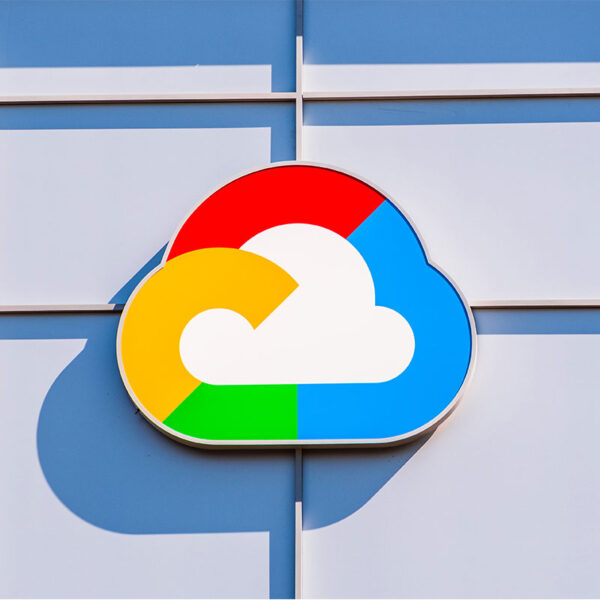
December 19, 2023
Google Cloud: A2Z Media's Hosting Choice | A2Z Media
95% of the websites and applications developed by our team are hosted through Google Cloud to ensure 100% scalability, reliability, security, and speed. Its managed DNS service runs on the same infrastructure that Google uses internally for its end-user products, such as Google Search, Gmail, file storage, and YouTube. Google Cloud ensures a high level of redundancy. It has granular control over our servers where they can tweak our hosting environment, make customers’ sites up to 100% faster, more stable, secure, and completely isolated. Google Cloud Platform allows us access to one of the largest networks in the world and ensures customers have less downtime as we can now utilize live migrations of virtual machines. How is Google different from other Cloud providers? Google-grade Security The Google security model is an end-to-end process built on over 15 years of experience and focused on keeping customers safe on Google applications like Gmail and Google Apps. With Google Cloud, your applications and data take advantage of the same security model. Global Network Google’s backbone network uses advanced software-defined networking and edge-caching services to deliver fast, consistent, and scalable performance. Advanced Security Tools Google Cloud protects your data, applications, infrastructure, and customers from fraudulent activity, spam, and abuse with the same infrastructure and security services Google uses. Google Cloud’s networking, data storage, and computer services provide data encryption at rest, in transit, and in use. Advanced security tools support compliance and data confidentiality. Other features of Google Cloud Platform include: Scheduled Snapshots Improved Performance Dedication to Continued Expansion Redundant Backups Less Downtime Dedicated Firewalls Managed Backups All PHP Apps Supported SSD-Based Servers Availability of Multiple Cloud Providers A solid and secure online presence through websites and applications is the future.
Read more...
December 19, 2023
Lead Conversion: Exploring the Buyer's Journey | A2Z Media
As a business owner, your main concern is how to find a way or ways to convert your leads to buyers, but first, you have to understand the buyer’s journey. With an effective digital marketing strategy, you will be able to produce qualified leads for your business. It starts when a buyer becomes aware of the need for a product or service, after which they initiate research. The journey leads the buyer to a stage where they have to evaluate different solutions. Once they’ve compared the features of each contender against their own needs and objectives, they start to make a purchasing decision. The buyer’s journey extends beyond the purchase stage, below we have laid out each stage buyer’s journey to help you retain customers and sustain long-term growth well after a lead becomes a customer. Awareness This is where users first begin to realize that they have a problem or a need and are looking for a solution. They, therefore, begin doing the research. When the buyers are in the search mode, it’s the perfect time to capture their attention with Keyword-optimized content. As a business, you must create relatable content that speaks to their need and offers the buyer a solution to their problem. Consideration Once the problem has been identified, the buyer will be researching the issue and possible solutions and considering the available options and while they may be aware of your company’s solutions, they’re often not ready to make a commitment yet. It’s important to educate them extensively about your specific offering during this stage. Decision At this stage, the buyers are more informed about their problem and its potential solutions and are vetting specific options, such as your product or service. Buyers that are ready to make a decision will simply contact you directly as they have made a decision to move forward with you, hoping you will provide the solution they are looking for. Service When the buyer has converted into a paying client, it doesn’t mean the nurturing stops. You still need to keep working to keep your buyer interested and delighted so that they can come back to your company for more or even promote your business to others. This stage is very important to maintain a happy relationship with your client by providing a superior customer service experience. Happy buyers can become brand evangelists with the right mixture of nurturing and support. Once the customers are fully onboard, focus on keeping them satisfied and engaged. It is important to understand your customer’s wants and needs, this will help you customize your content to speak directly to your buyer’s needs.
Read more...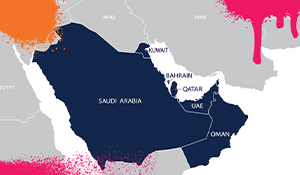
December 18, 2023
Exploring Digital Marketing in GCC Countries | A2Z Media
Are you searching for an effective approach to strategically reach the GCC markets? Digital marketing is the key! In fact, it is the most reliable strategy to establish a market presence and build a strong consumer base, especially in the GCC countries. Why? Social Media & Digital Devices Usage The GCC has one of the highest rates of Social media users (Instagram, Facebook, Twitter, Snapchat, TikTok, etc.) along with a notably high ownership of digital devices. Let’s talk numbers. If we take the UAE as an example, we find out that as of January 2022, it had an active social network penetration rate of 106.1%, which is the highest rate among all countries, according to Statista. Moreover, it had 5.25 million Instagram users in early 2022, as per Meta’s advertising tools. As for KSA, 82.3% of the population are active social media users, which puts it ahead of many global markets. E-commerce E-commerce has one of the largest market shares in the GCC countries. The Gulf’s annual e-commerce growth through 2022 is on pace to be 33% or higher: 38% in the UAE and 39% in KSA, the region’s largest markets. That’s roughly double the global rate, as per MEASA E-commerce Landscape. Subsequently, the e-commerce market in the region is forecast to significantly increase by 2025, as consumers across the region continue to shift towards online retail. Digital Advertising Spend With a total GDP of $3.464 trillion, the Gulf is considered one of the wealthiest markets in the world. Digital advertising has developed rapidly in these markets in the past few years. The total digital ad spend in the MENA region reached $4.58 billion in 2021, with the biggest share of that spend targeting the GCC. Hence, programmatic advertising is on the rise, with a massive demand from multinational firms. Supportive Policies Political stability and strong economic growth distinguish the Gulf nations as one of the most dependable marketplaces. In fact, the GCC’s governments and institutions are applying favorable policies for setting up businesses and encouraging investors. For example, the UAE has launched a digital crowdfunding platform, DubaiNext, to help innovators and entrepreneurs of diverse nationalities start their businesses easily in the country. To sum up, the GCC is a flourishing market driving digital marketing to the highest levels of excellence and competitiveness. Its boom in the region is being driven by strong internet penetration rates, high possession of digital devices, significant e-commerce growth, rising spending and improving business policies. And now, is it easy, as it seems after reading this blog, to access the GCC market effectively on the digital level? Nope, it’s not a piece of cake… Hold on to the challenges! By Lea Youssef To stay ahead, and offer value marketing, don't miss out on our other insightful blogs, including "How to Convert Leads into Sales," "Digital Marketing Trends in GCC," "Marketing ROI Benchmarks: Straightforward Strategies for Success," "Niche Marketing: Strategies for Targeting Specific Audiences," "Arabic Chatbots: Transforming MENA Marketing in 2024," and "Scaling Success: Lessons from Canva’s User-Centric Business Model." Check them out for more strategies and tips to enhance your marketing efforts.
Read more...
December 12, 2023
Exploring Graphic Design: Past, Present, and Future
With design evolving over the years and occupying a big part of our everyday lives, it is now time to bring its importance out of obscurity. “The life of a designer is a life of fight. Fight against ugliness, just like a doctor fights against disease. For us, the visual disease is what we have around, and what we try to do is cure it somehow with design. This is how Massimo Vignelli, the great designer, describes this profession. The first designer William Addison Dwiggins was the first person to call himself a graphic designer in 1922. He had a varied and fascinating career, doing everything from advertising to lettering, book design, and illustration. However, Dwiggins hadn’t really started the design arts he had contributed to. People have been doing lettering and layout for as long as there have been letters, and illustrations go back much further. Hence, his true contribution was to get people to think of design as a practical skill set, rather than a purely artistic one. The evolution of design throughout the years Old advertisements were more like short essays, picture books, pitches all combined into one. Starting in 1940, graphic design showed a major switch. Images have become more bold, modern, and designed to make people feel something. This was caused by the need for effective, emotionally powerful propaganda.Artists and graphic designers learned to create designs that were confrontational, inspiring, and even outrageous. After the 1950s, graphic designers were able to break free from the rules that had been put in place for commercial design. This led to an era of rapid change that has continued ever since. The future of graphic design In normal times, things in the design world don’t change quickly. For example, in the 2010s, minimal logos weren’t just restricted to a single year but persisted throughout the decade. However, what we’re experiencing in general terms is a very long way from ‘normal times’. And all that uncertainty is moving many aspects of design in radically different directions; sometimes so quickly, we barely notice it happening. Whether you’re walking past a digital billboard, scrolling through a website, or navigating an application, you can see more motion design at the moment. And people in the profession believe this can only be a good thing. However, this trend is even influencing static materials, such as packaging: people now have that behavioral understanding of ‘scan for information’. We’re still not certain where the design evolution is leading, but all we can do now is wait and watch. by Perla Lahoud
Read more...
December 11, 2023
The Battle Of Two Ecommerce Giants Shopify Vs Magento
Are you planning to enter the world of ecommerce? Do you want to make the most out of your online store? Feeling lost amongst the many features offered by plenty of platforms? Well, we narrowed your choices to only 2: Shopify & Magento, two of the most popular ecommerce platforms today, with a main difference, which is that Shopify is a hosted platform, while Magento is self-hosted. A hosted platform, such as Shopify, is easier for you as a beginner because you don’t have to worry about anything that involves technical issues since everything is taken care of by the provider. Meanwhile for Magento, a self-hosted platform, you get to have full control over your online store with the ultimate flexibility and customization and the company gives you the storage capacity to house everything. For a clear overview of each platform, below you will find a table of the pros & cons of each: Shopify Pros Shopify Cons Multichannel Selling – sell on Facebook, Instagram, Amazon, and eBay High Transaction Fees – you’ll need to pay a massive transaction fee,Unless you use Shopify Payments. Customer Support– offers its users 24/7 support, as well as access to its help center, discussion forums and e-commerce university. Cost Of Apps – it’s easy to get carried away installing lots of paid apps App Store – has over 7,000 apps that help you extend the functionality of your site Marketing– Shopify has advanced marketing capabilities like SEO optimization, loyalty programs, discounts, gift cards, social media integration and more. Extensive Payment Options – supports over 100 payment options, in addition to their own Shopify Payments. Magento Pros Magento Cons Flexibility – as long as you know how to code, you can design your store however you want. Not Beginner-Friendly – you’ll need to know how to code. Apps & Add-Ons – has over 5,000 extensions to choose from, and 1,970 of those are free. Not Easy To Install – unlike other open-source software. Excellent User Guides – takes you step by step through the online store building processes. Doesn’t Have The Magento Payment – you’ll have to download the extension of the payment processor through the Magento marketplace, then pay a transaction fee for them Advanced Site Management – allows you to control multiple websites and stores from one admin, in addition to creating, previewing and scheduling content updates. Excels In SEO – comes with plenty of SEO guides and prompts to help you get started. You can edit image alt tags and customize URLs. As a summary, choosing the perfect platform for your business depends on its size and your purposes, however you need to be aware of all the features and what the plan that you’ll purchase will offer you. By Cyrine Dabbous
Read more...
December 11, 2023
THE ART OF WRITING CONTENT THAT SELLS & CONVERTS.
In the world of clicks, likes, and shares, crafting content that stands out is more than a skill—it's an art. It's about creating stories that not only catch the eye but also convince the heart to take action. Let's embark on a journey through the modern-day alchemy of turning words into gold, diving into how to craft content that doesn't just talk the talk but walks the walk, straight through to sales and conversions. The Power of Storytelling Who doesn't love a good story? It's the secret sauce that can make your content go from meh to memorable. We're talking about narratives that pull at the heartstrings, spark the imagination, and lead your audience to that magical 'aha' moment. Imagine crafting tales where your audience sees themselves as the hero, faces a dilemma, and finds the resolution in what you offer. That's storytelling gold, right there. Understanding Your Audience Let's get real: to hit the bullseye, you need to know what you're aiming at. Understanding your audience is like having a map in the land of content creation. Dive deep into their world—what makes them tick, laugh, and click. It’s about getting cozy with market research and crafting buyer personas that are so on point, your audience feels like you’re reading their minds. Copywriting Techniques to Boost Sales Welcome to the dojo of persuasive copywriting, where words are your weapons, and your mission is to convert leads into loyal fans. Crafting Attention-Grabbing Headlines First impressions count, and in the digital world, your headline is your handshake. We're talking about crafting those eye-popping, curiosity-sparking headlines that make scrolling thumbs freeze in their tracks. Use numbers, questions, and power words to create an irresistible pull, beckoning readers to dive deeper. Using Psychological Persuasion Techniques Ever wonder why some content just clicks? It's all in the mind. Tap into the psychology of persuasion—think social proof, the fear of missing out (FOMO), and the allure of exclusivity. These are the Jedi mind tricks that turn your copy from informative to transformative. Leveraging Content Marketing for Sales Content marketing is your secret garden, where leads are nurtured, and sales bloom. But it’s not just about sowing seeds; it’s about growing connections. Creating Valuable and Educational Content Be the beacon of wisdom in your industry. Share insights, solve problems, and answer questions. It's about crafting content so valuable that your audience can't help but bookmark, share, and come back for more. Promoting and Distributing Your Content If a blog post falls into the digital forest, does it make a sound? Not without promotion. Amplify your content's reach through savvy social media tactics, email marketing masterclasses, and collaborations that make influencers take notice. Optimizing Sales Content for Conversion It’s crunch time: turning those engaged readers into enthusiastic customers. Using Persuasive Call-to-Actions (CTAs) A killer CTA is your content's mic drop moment. It's clear, it's compelling, and it gently pushes the reader from "maybe" to "yes, please!" It's about creating a sense of urgency that makes sitting on the fence the less appealing option. A/B Testing and Conversion Rate Optimization Welcome to the lab, where content meets science. A/B testing is your best friend in understanding what resonates with your audience. Optimize your content based on real data, and watch your conversion rates climb. Writing SEO-Optimized Content for Sales Marrying SEO with persuasive copywriting is like having your cake and eating it too. It’s about being found and then being unforgettable. Keyword Research and Integration Keywords are the breadcrumbs that lead your audience to your content. Dive into research to discover the words and phrases your audience is searching for, then weave them into your content like a pro. Optimizing Meta Tags and Descriptions Your meta tags and descriptions are your digital billboards. Craft them to catch the eye and spark curiosity, making the click-through to your content irresistible. In wrapping up, mastering the art of writing content that sells and converts is about blending creativity with strategy, and intuition with analysis. It’s about speaking your audience’s language, tapping into their desires, and offering them the content they can’t help but engage with. Ready to turn your words into conversions? Let's make content that not only ranks but resonates.
Read more...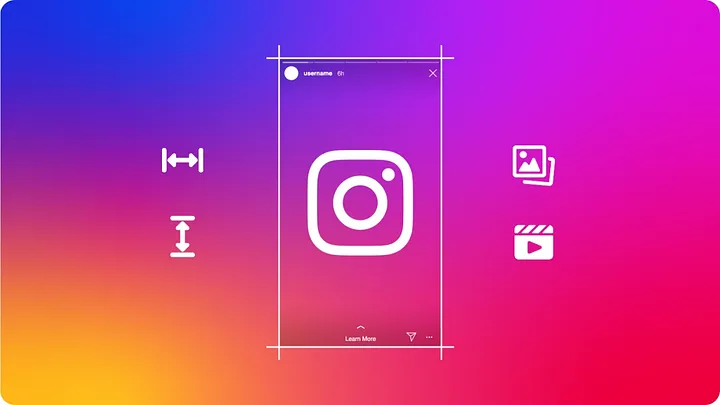
September 12, 2023
Instagram's 2024 Evolution: Latest Trends | A2Z Media
In the exciting world of social media, Instagram has undergone a remarkable transformation in recent years. Beyond the familiar feed of square photos lies a dynamic landscape of trends that are shaping the way we connect, share, and interact. Let’s dive into the coolest developments on Instagram in 2024. Discover the Power of Stories: Step aside, square photos! Instagram Stories are all the rage now. These temporary snapshots of life have taken over, allowing users to share in-the-moment experiences with a touch of creativity. Here’s why Stories have become the talk of the town: • Real, Raw, and Relatable: Stories let you share your daily adventures without the pressure of perfection. Capture the real you! • Expressive Stickers: Jazz up your Stories with stickers that show what you’re feeling, listening to, or thinking. • Engagement Galore: Ask questions, run polls, and get interactive with your followers. Direct Messages: Your Personal Space: Did you know that Direct Messages (DMs) are where the magic of personal connections happens? This private hangout spot is all about cozy chats, sharing secrets, and bonding with your pals: • One-on-One Fun: DMs are perfect for personal conversations that you’d rather keep between you and your besties. • Share More, More Often: From photos and videos to memes and jokes, DMs are the place to share anything and everything. • Emoji Extravaganza: Express yourself with emojis, GIFs, and stickers that make your chats light up. Videos are the New Stars: Guess what? Videos are stealing the show on Instagram! They’re the real deal in the feed and Stories. Here’s why videos are a hit: • Visual Delight: Videos capture your attention and tell stories better than photos alone. • Express in Motion: Dance moves, tutorials, and fun moments are best shared through videos. • Creative Control: Use filters and effects to make your videos stand out from the crowd. Instagram’s Makeover Behind the Scenes: Instagram isn’t just sitting back and watching the fun. They’re on their toes, listening to what we want, and making changes that make our Instagram experience even cooler: • Listening to You: Instagram pays attention to what you like, which is why Stories and DMs are getting better and better. • Stories Team Switch-Up: The team behind Stories shifted focus to messaging, showing they’re all about adapting to what we love. The Big Picture: A World of Possibilities: • Instagram’s evolution shows that it’s more than just a photo-sharing app. It’s a place to express, connect, and enjoy life’s moments. Whether it’s Stories, DMs, or videos, there’s something for everyone. So don’t hold back — explore and have fun! • Instagram’s vibrant evolution in 2024 brings us closer to authentic connections, creative expression, and shared experiences. From Stories to DMs and the rise of videos, there’s no shortage of exciting trends shaping our social media journey. So, dive in, try out new features, and remember that Instagram is your canvas to create, connect, and showcase the real you! Explore these Instagram trends and strategies, but don't forget to stay up-to-date with the broader landscape of social media marketing by reading our comprehensive guide on SOCIAL MEDIA MARKETING TRENDS TO WATCH OUT FOR IN 2024
Read more...
